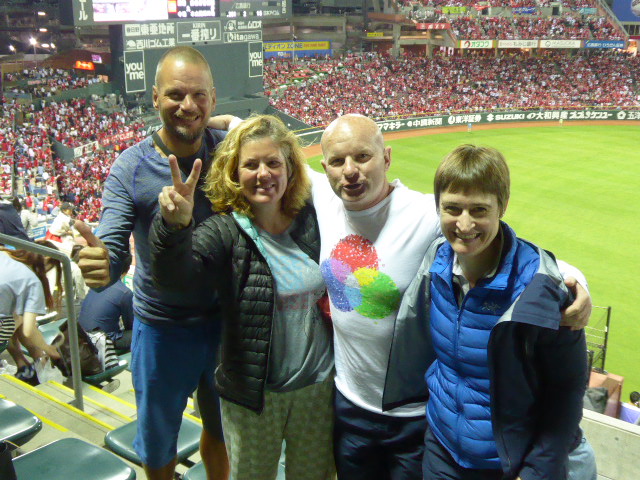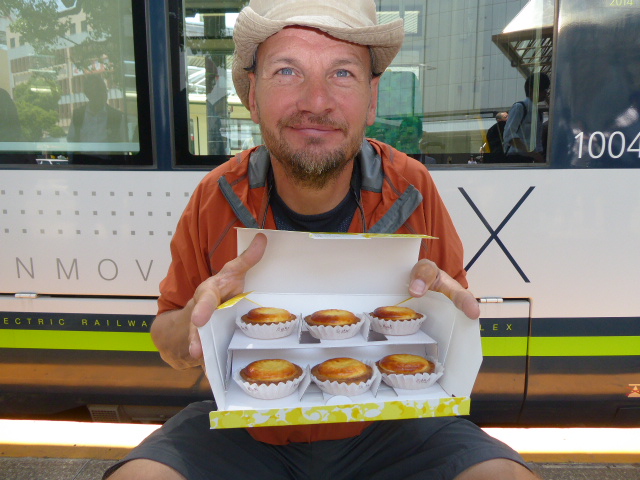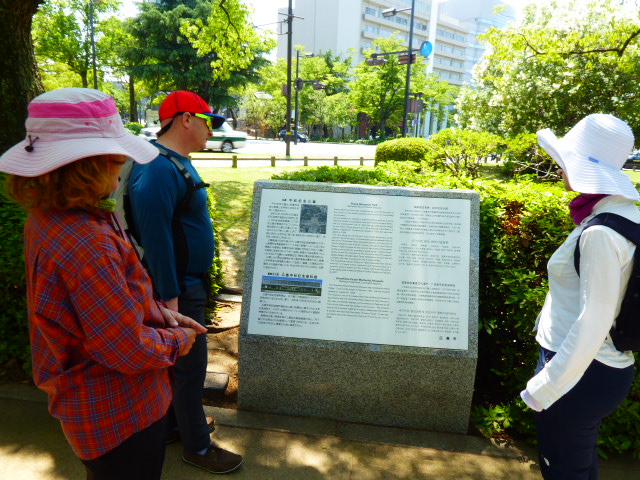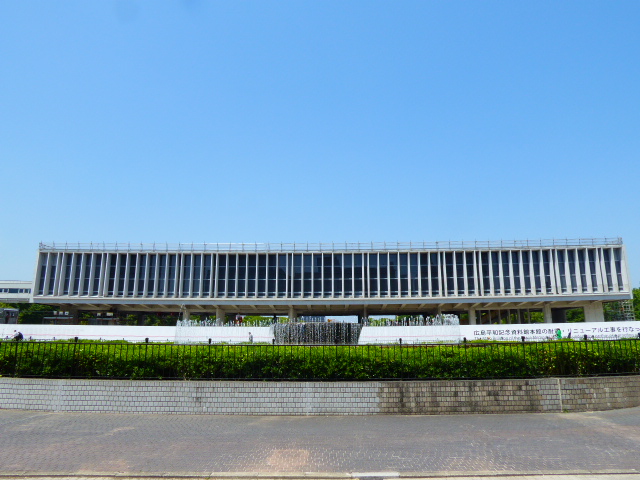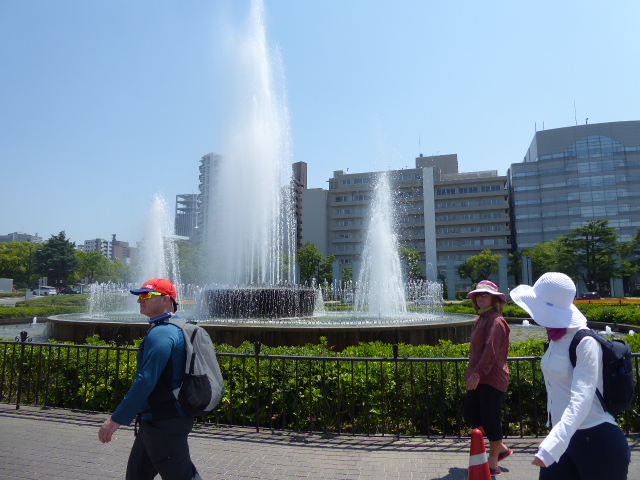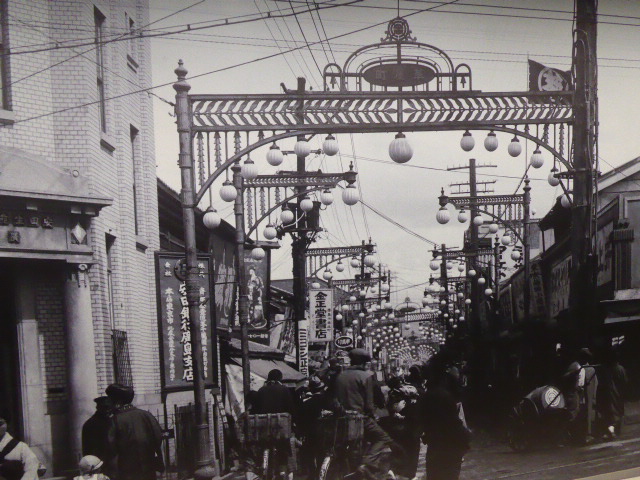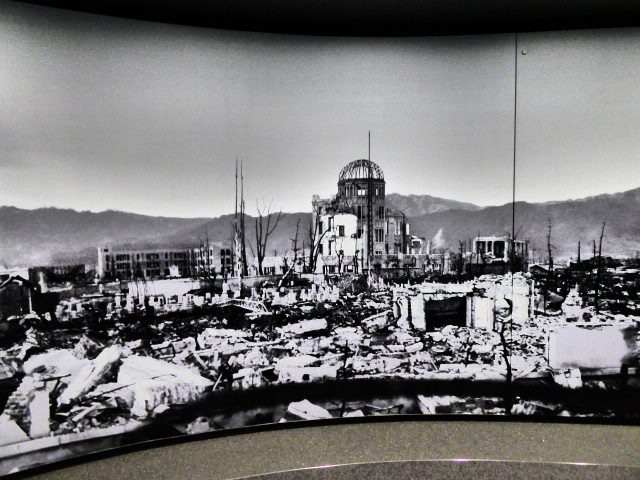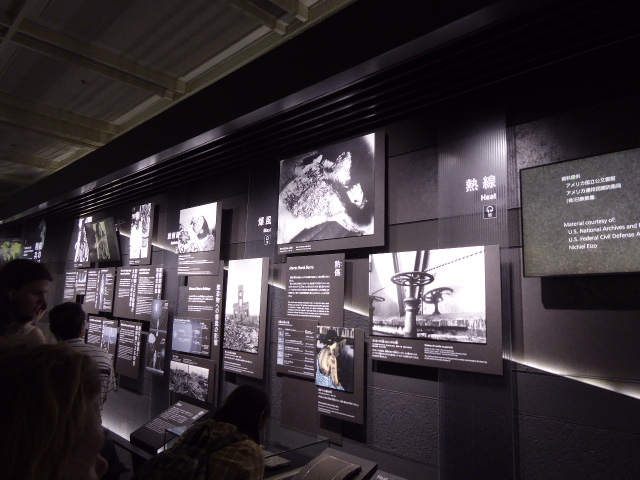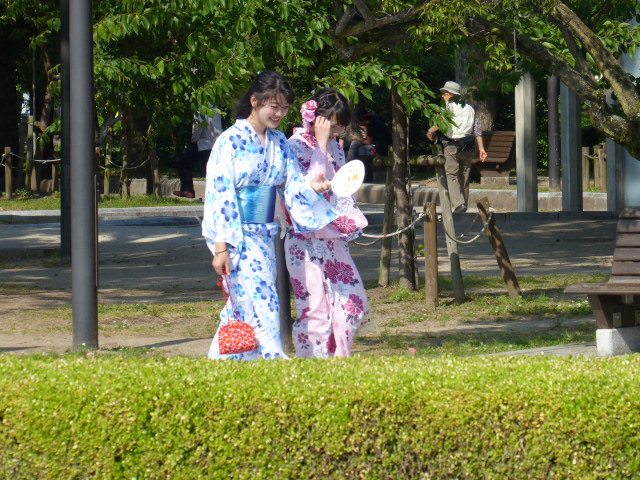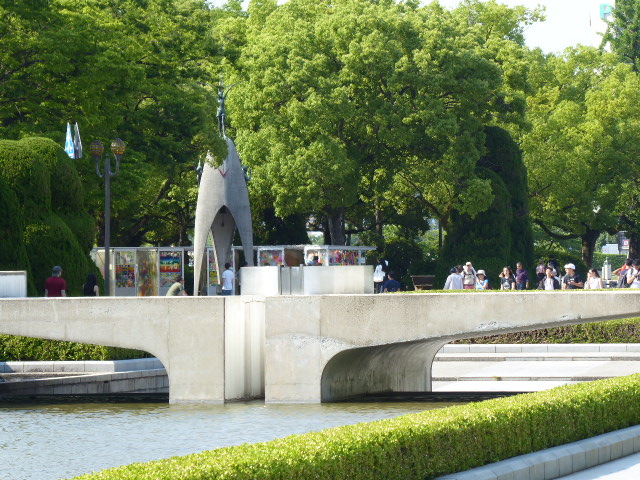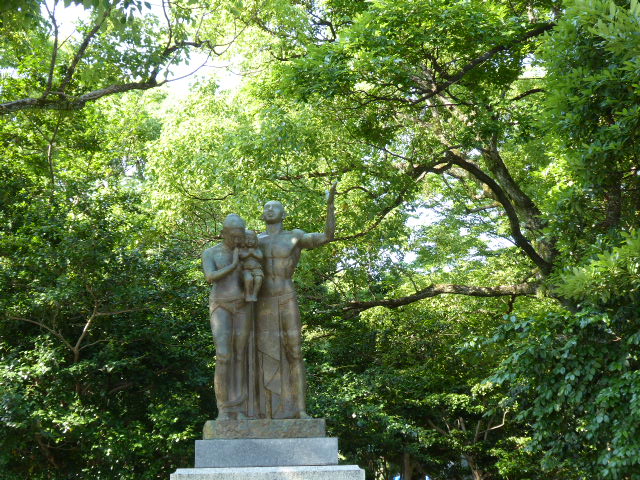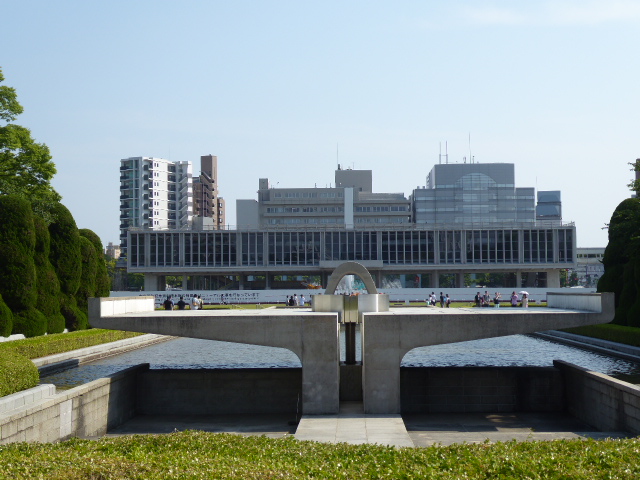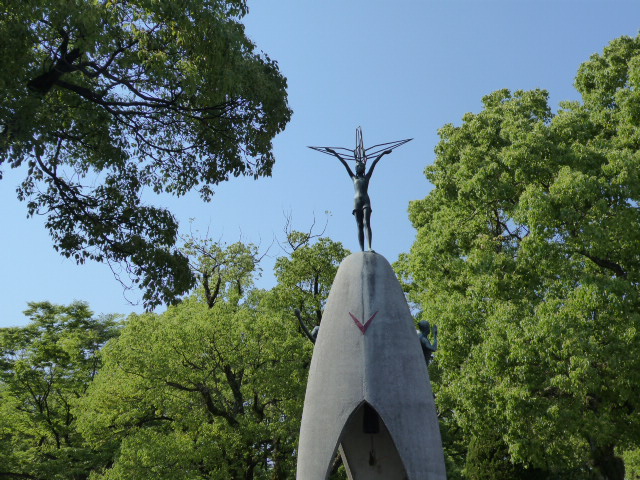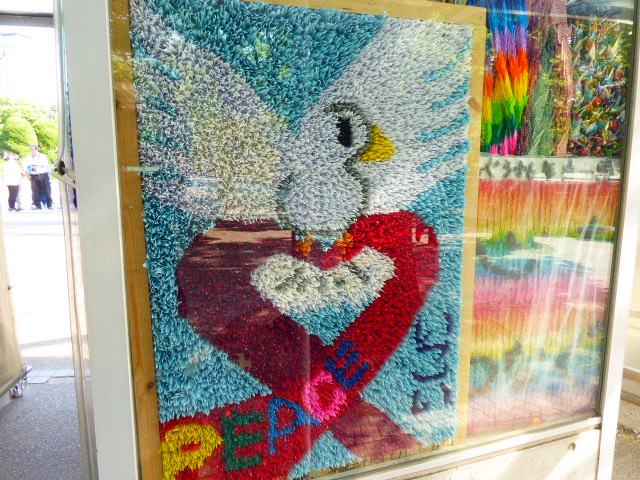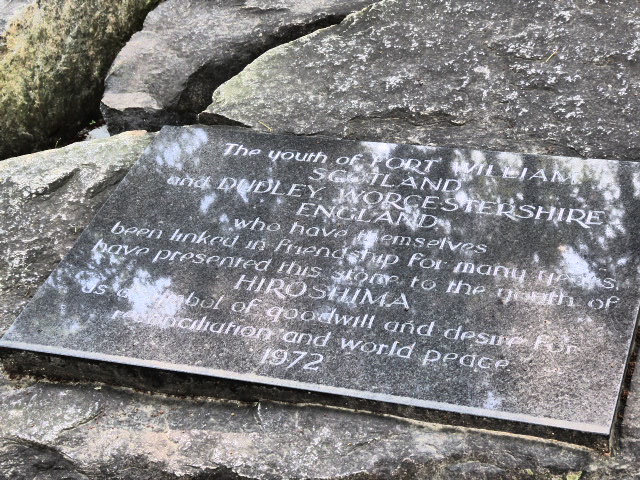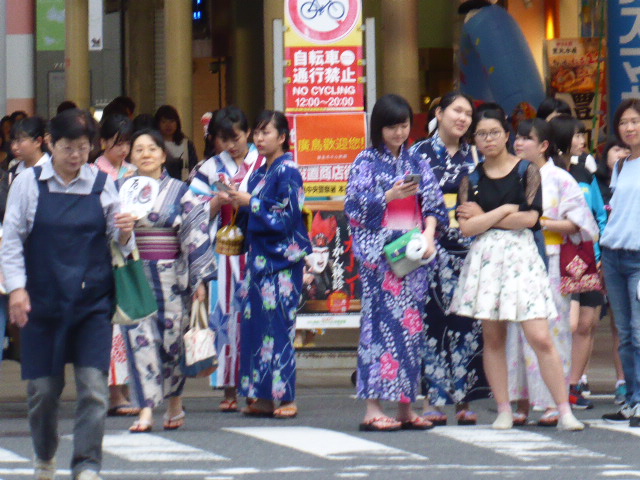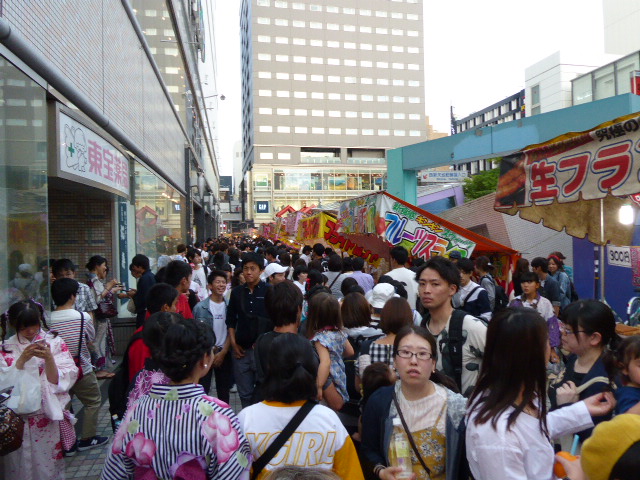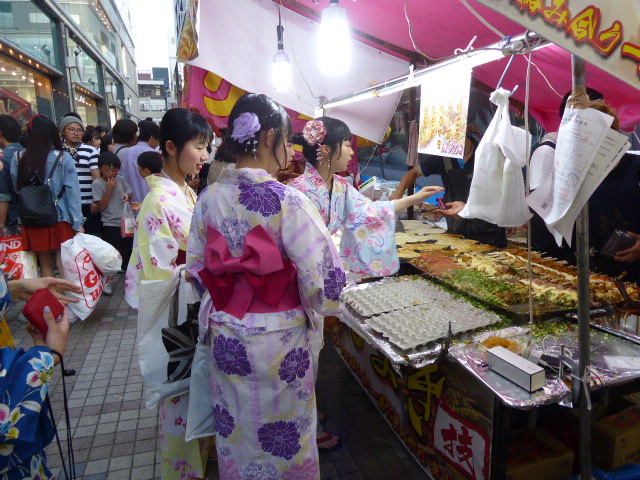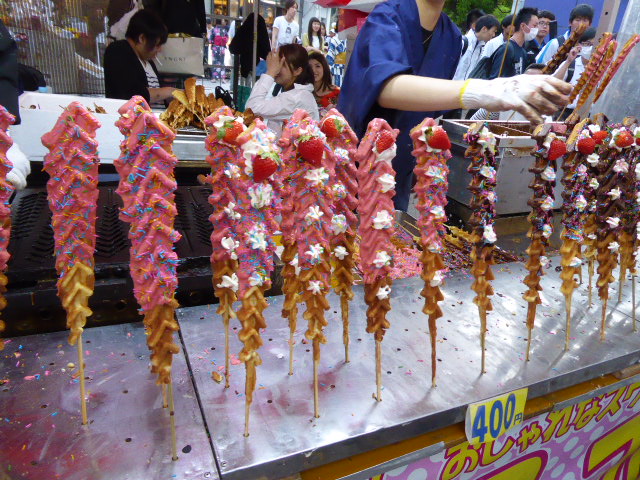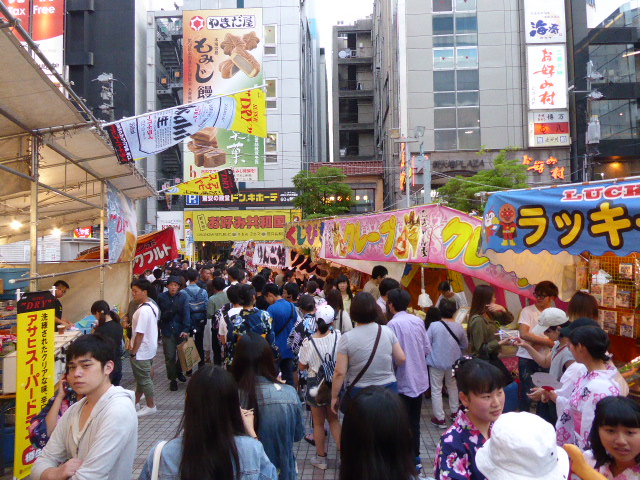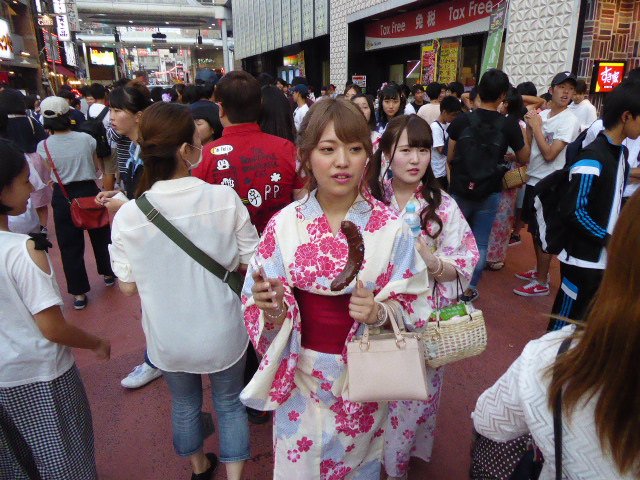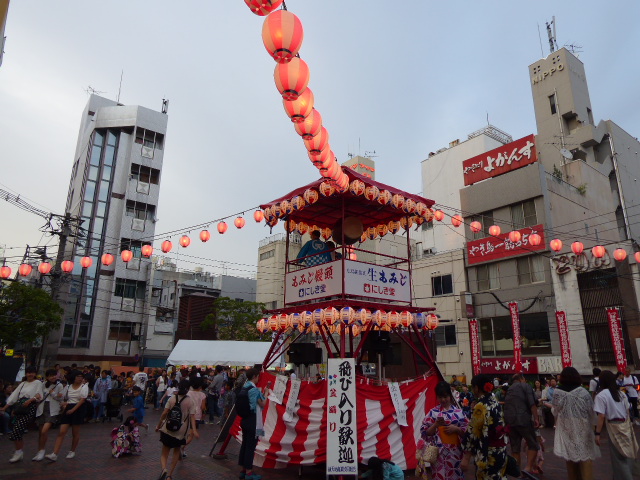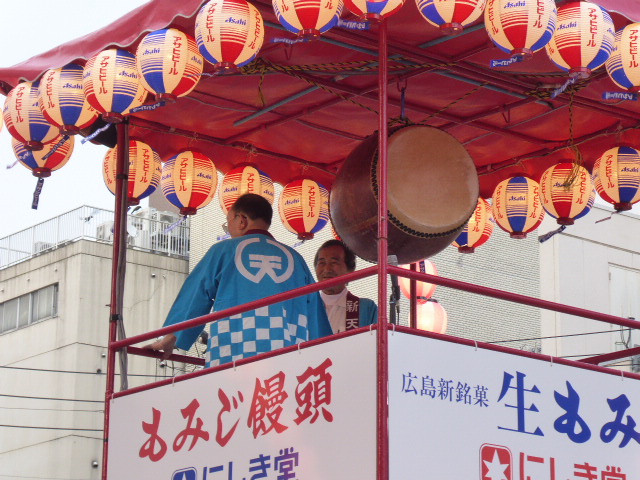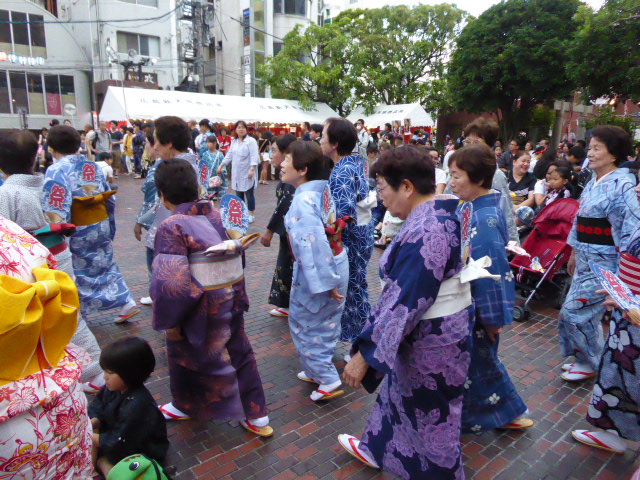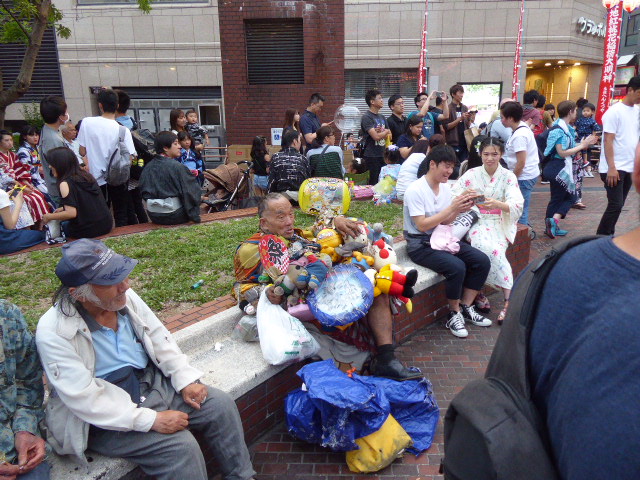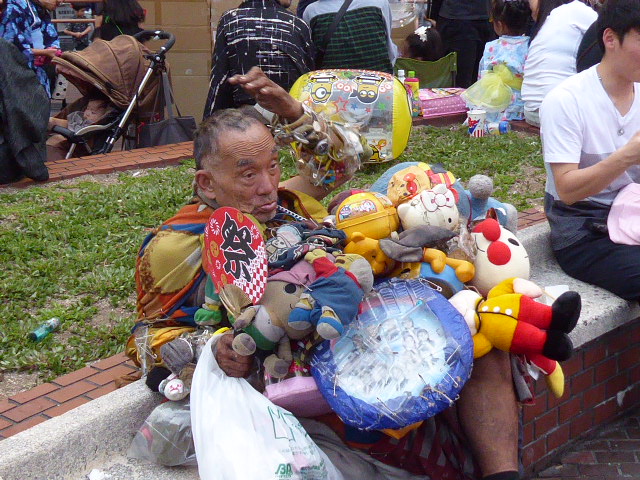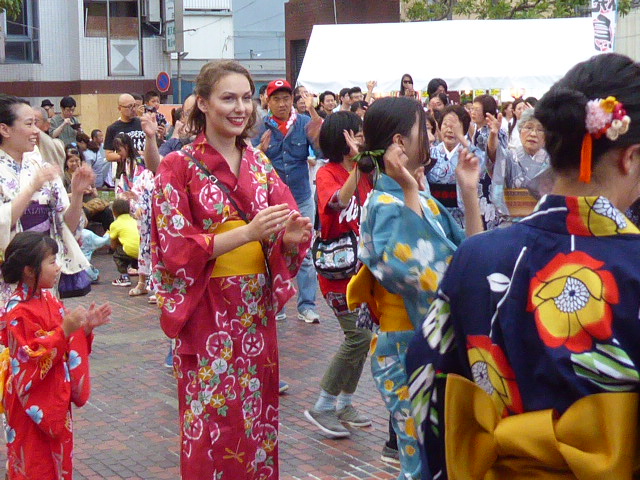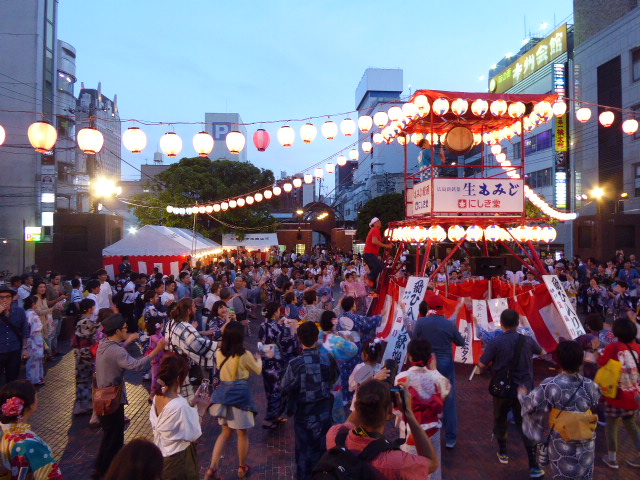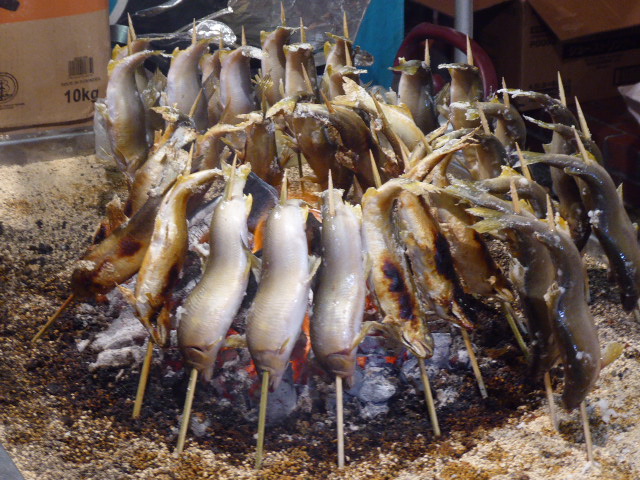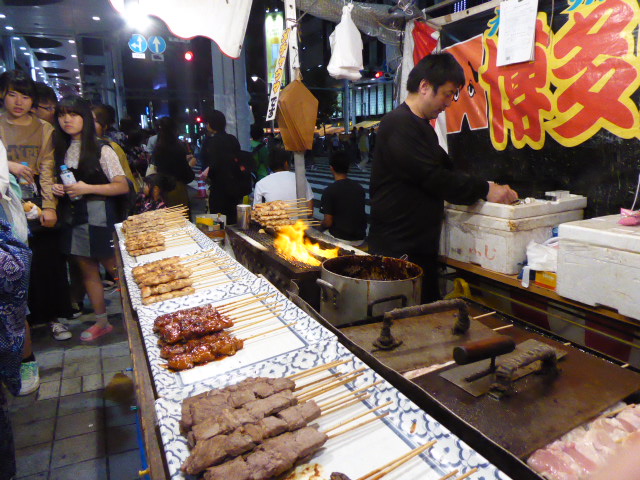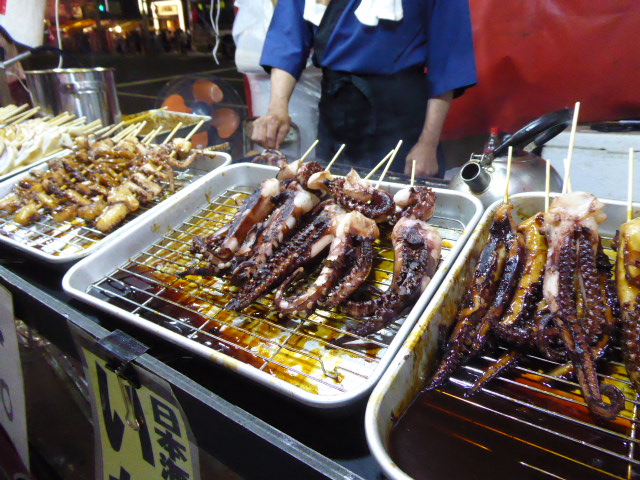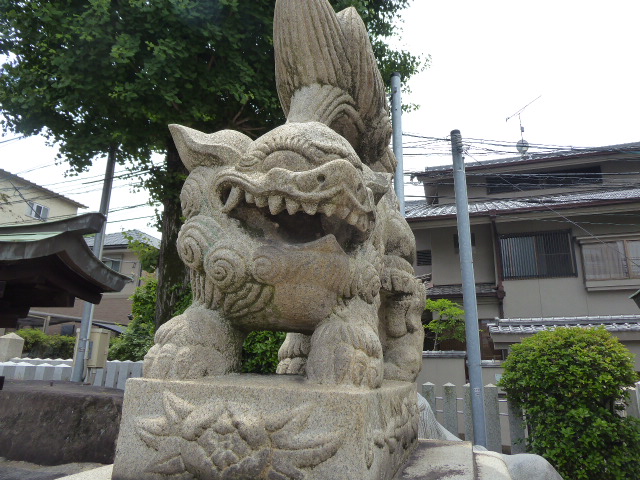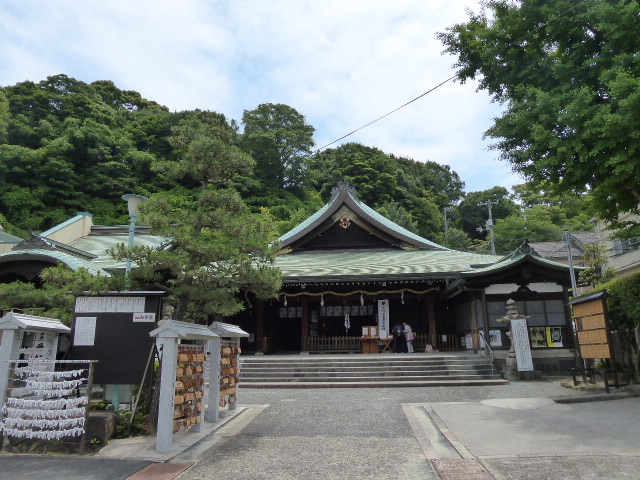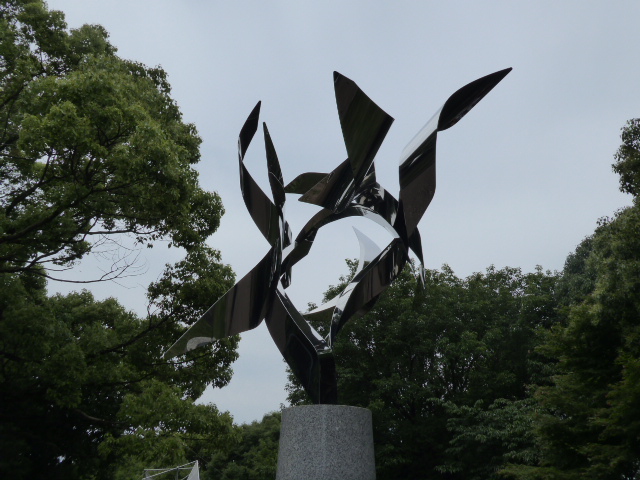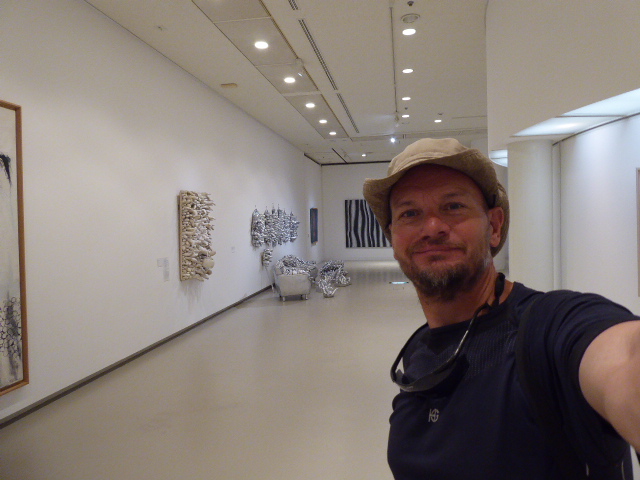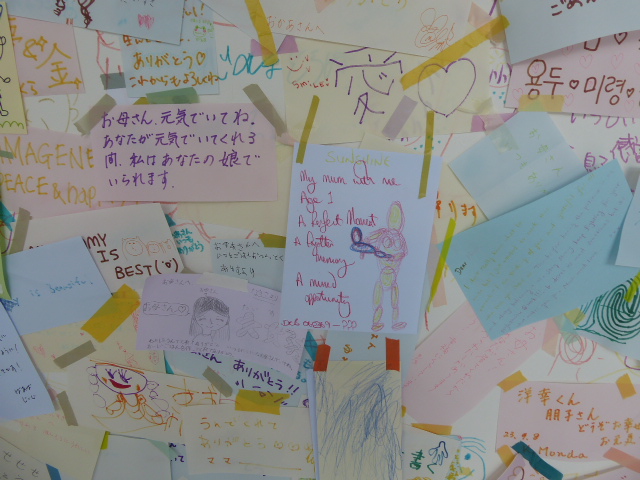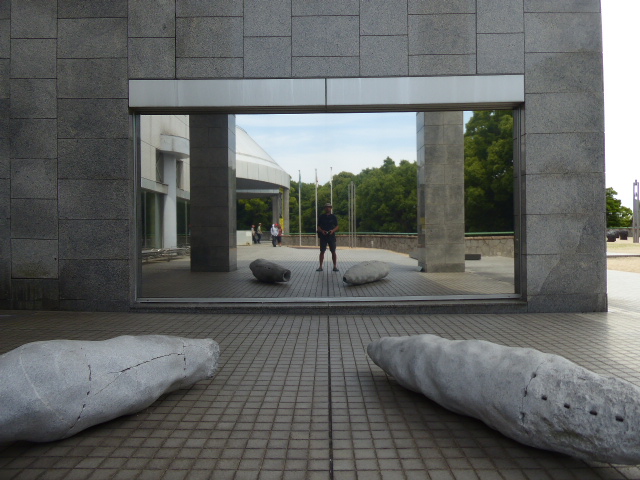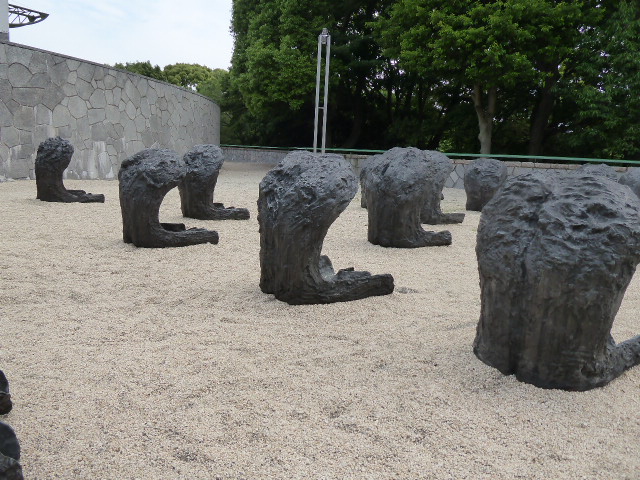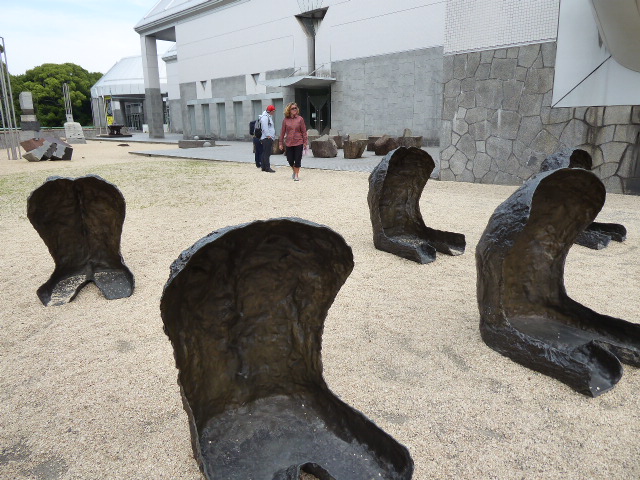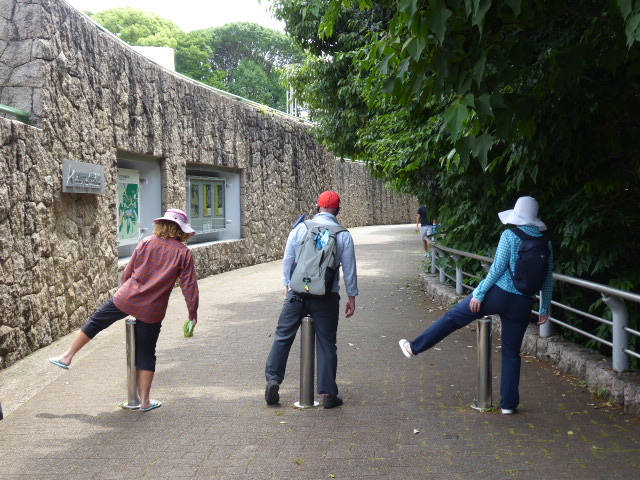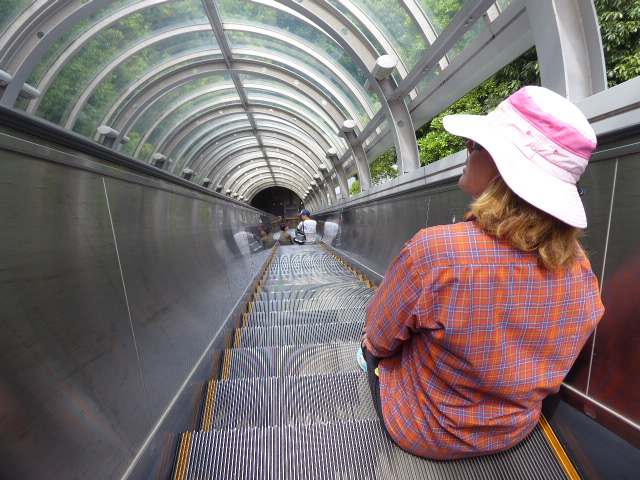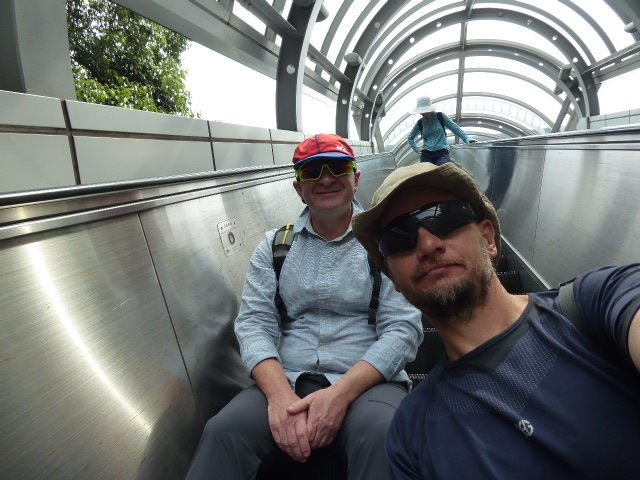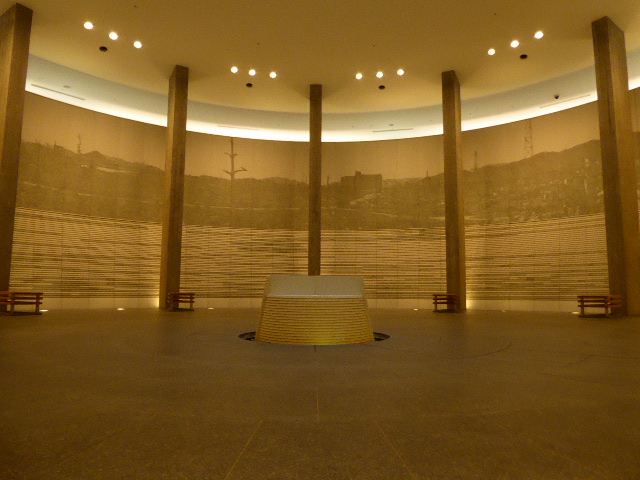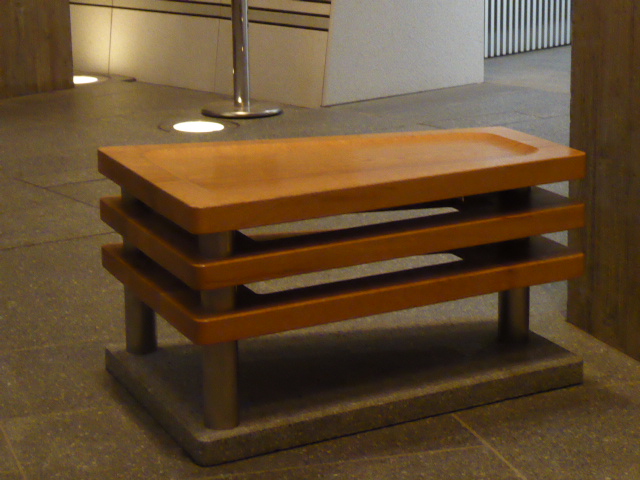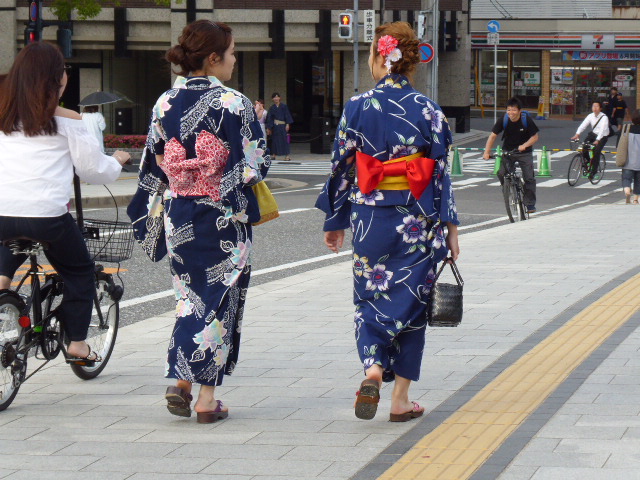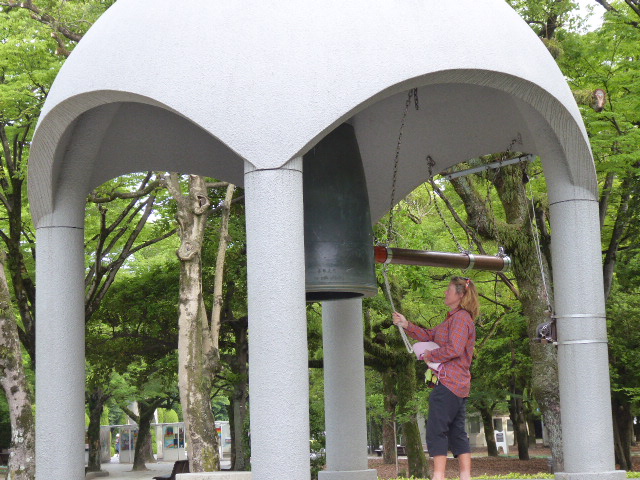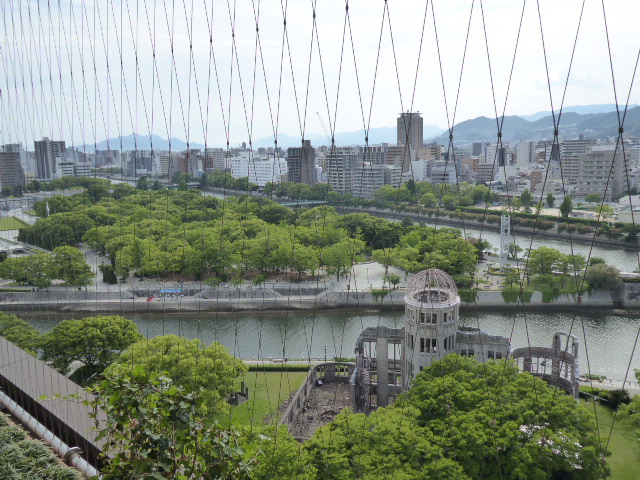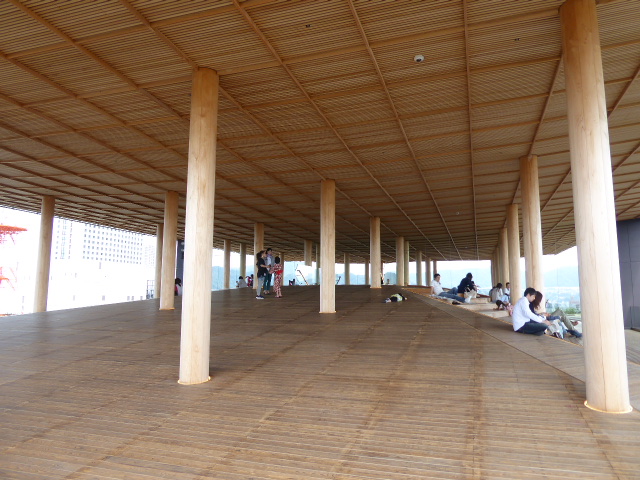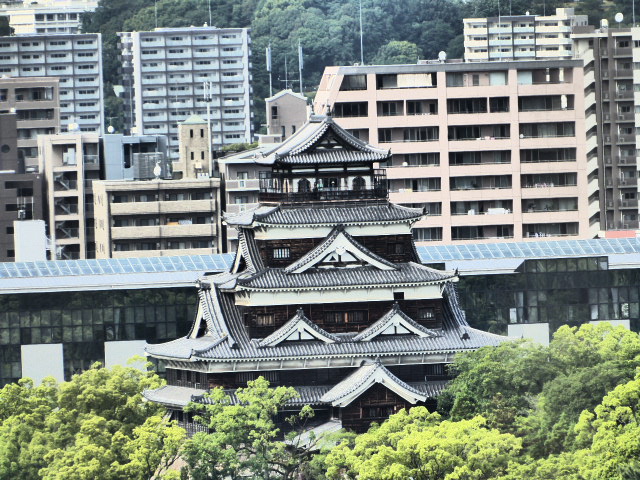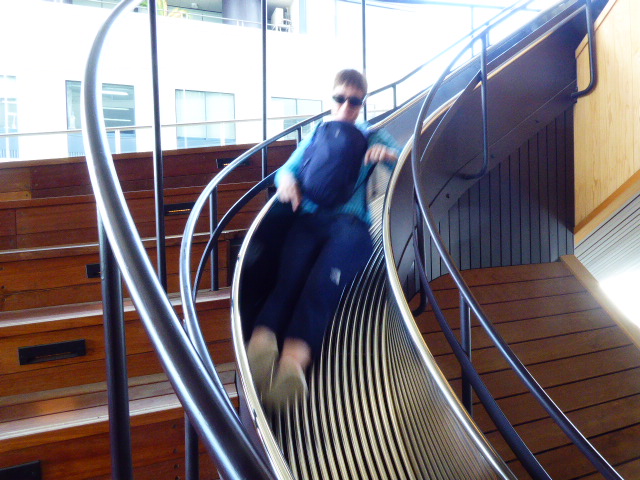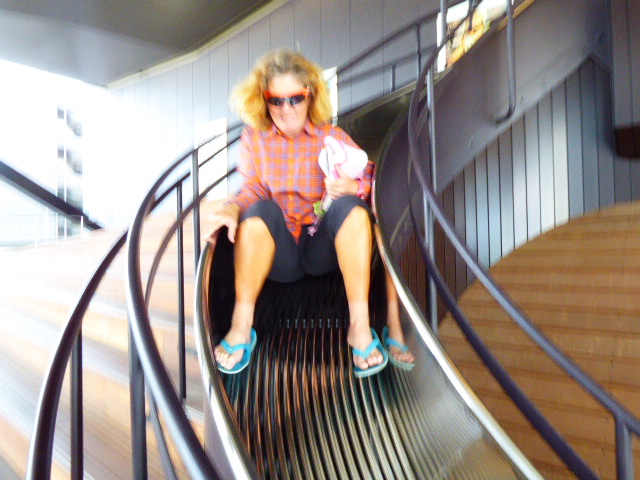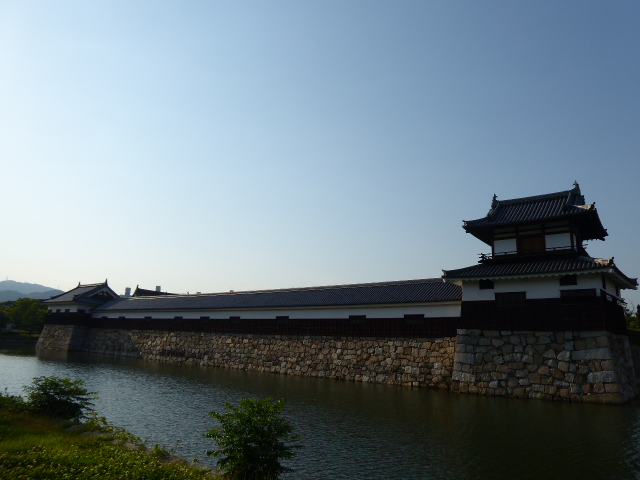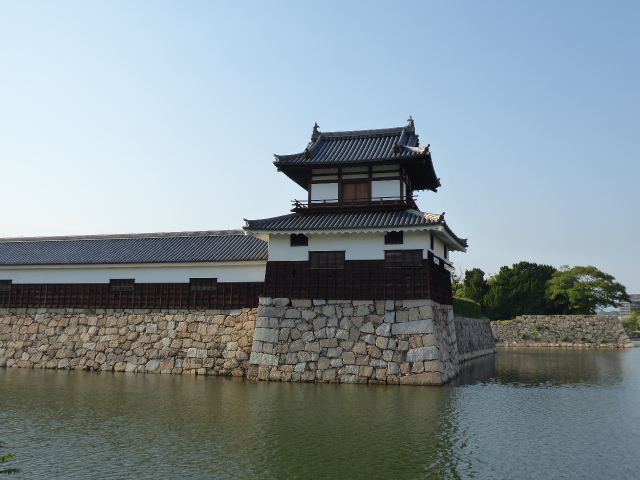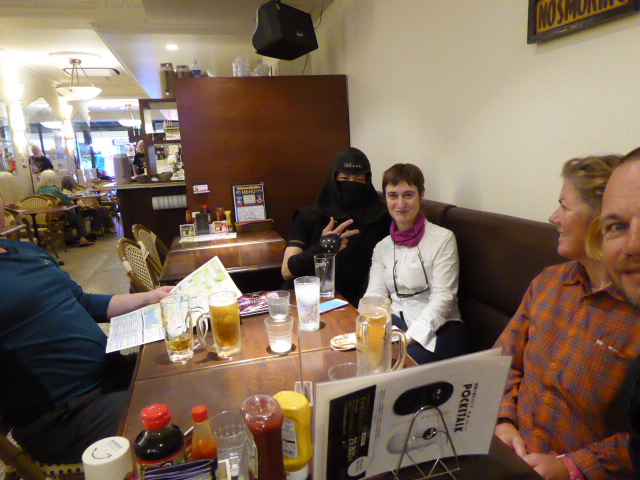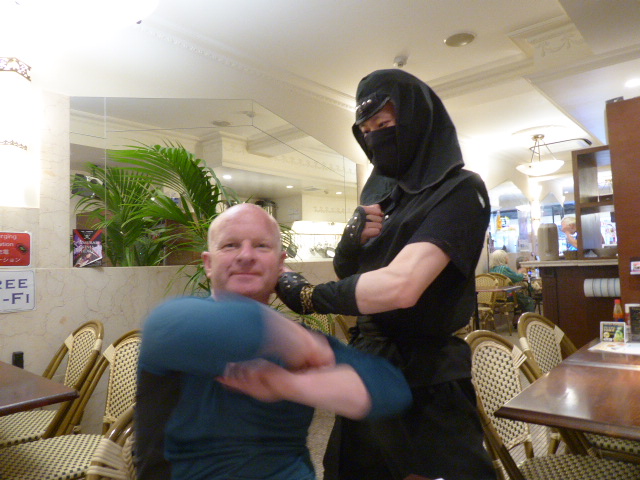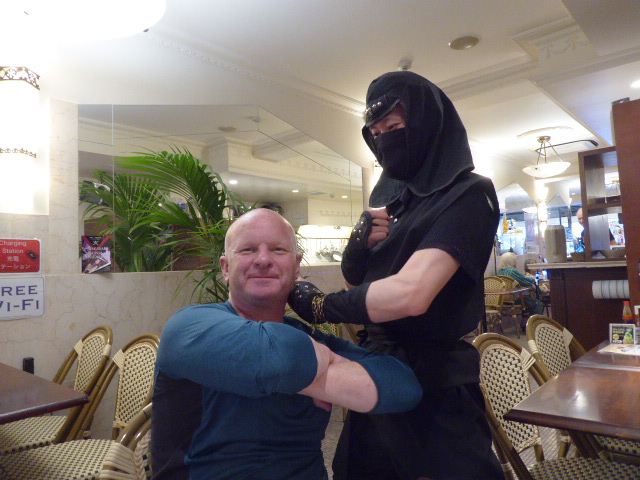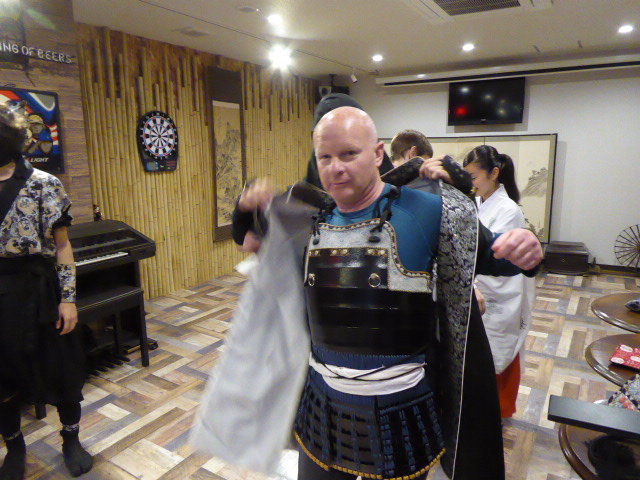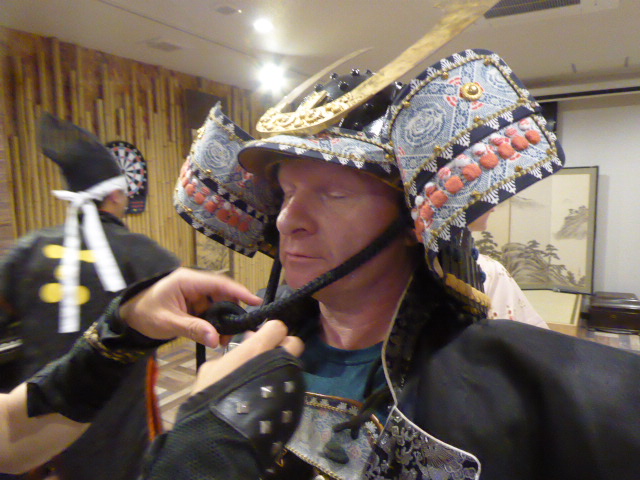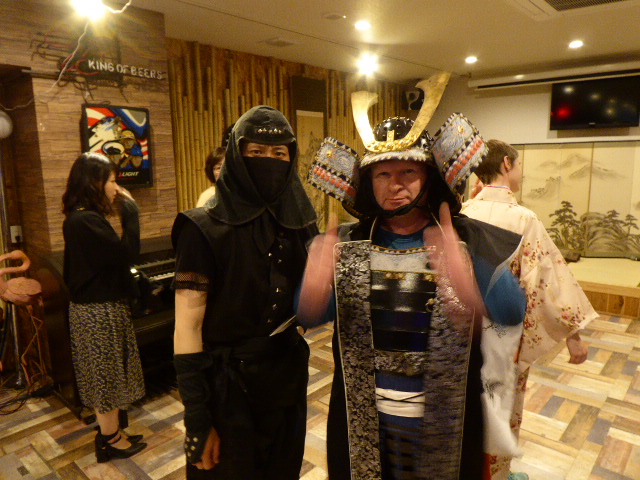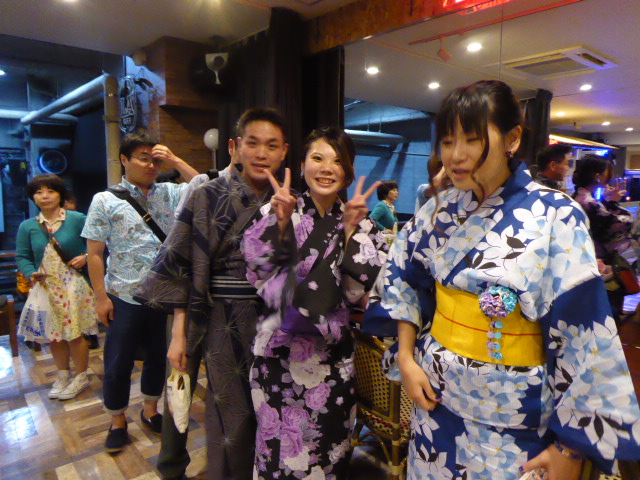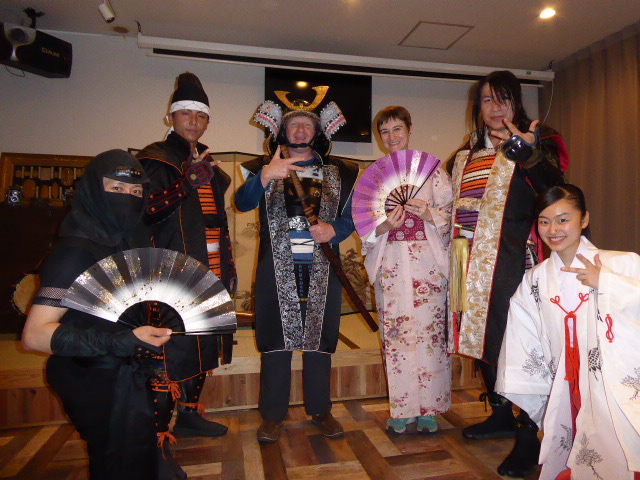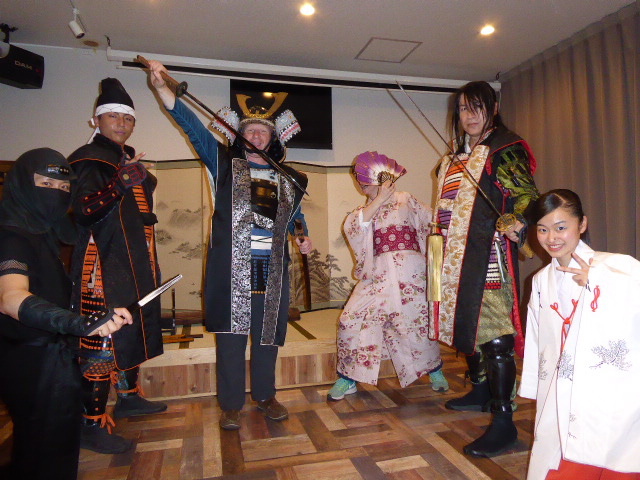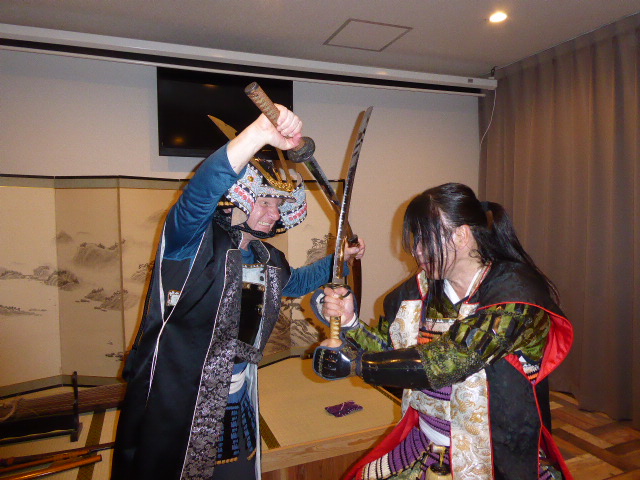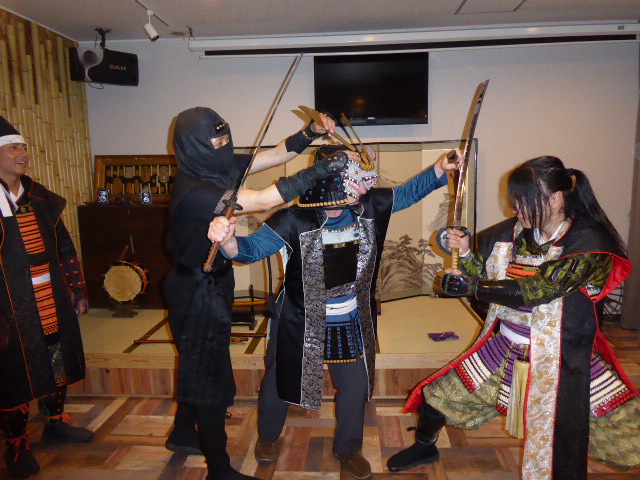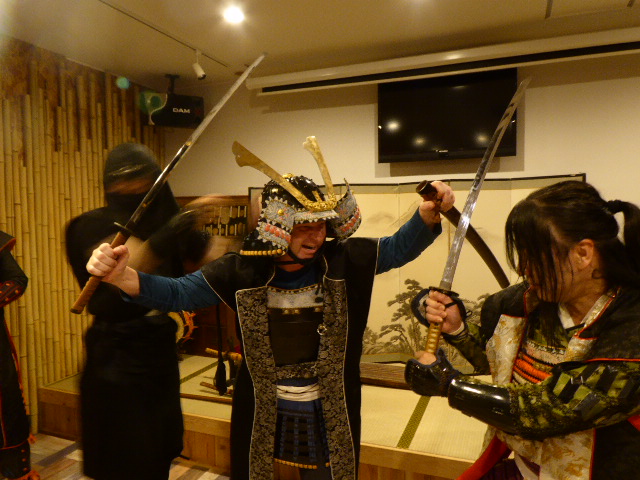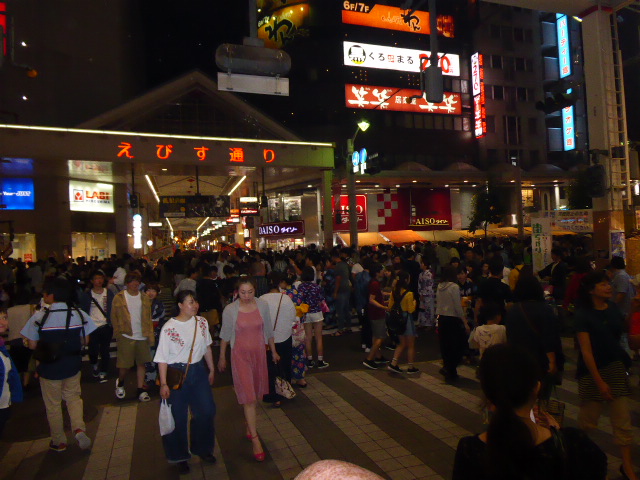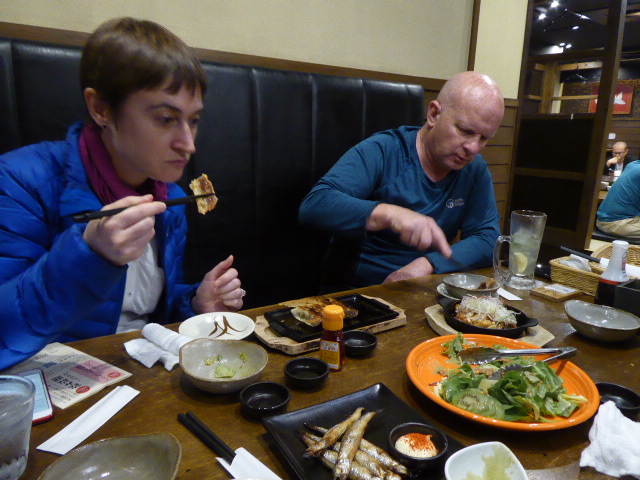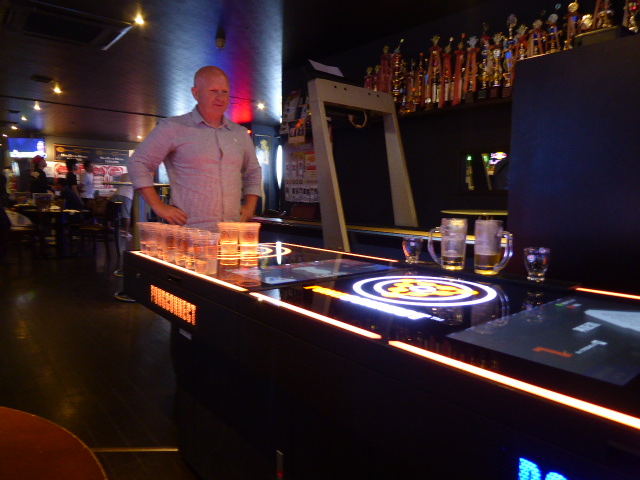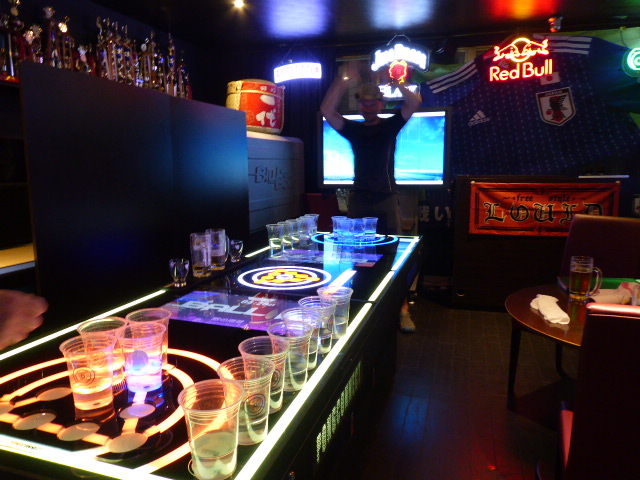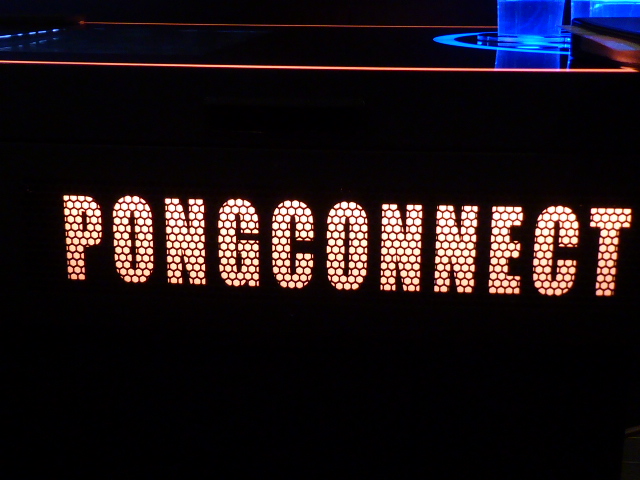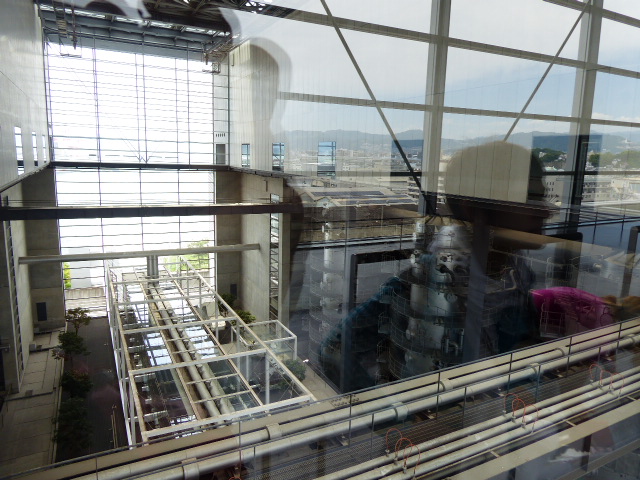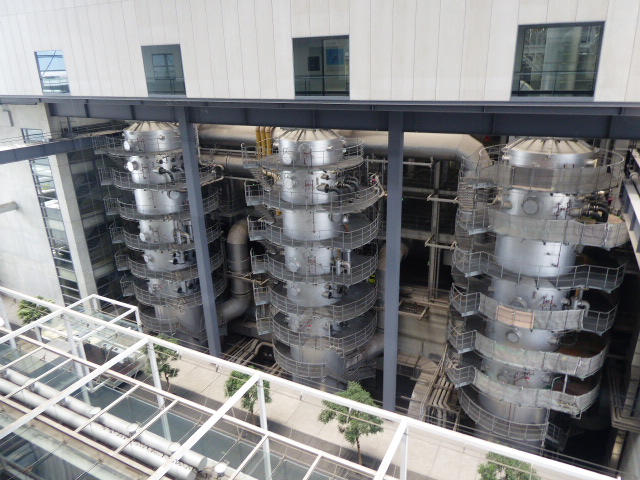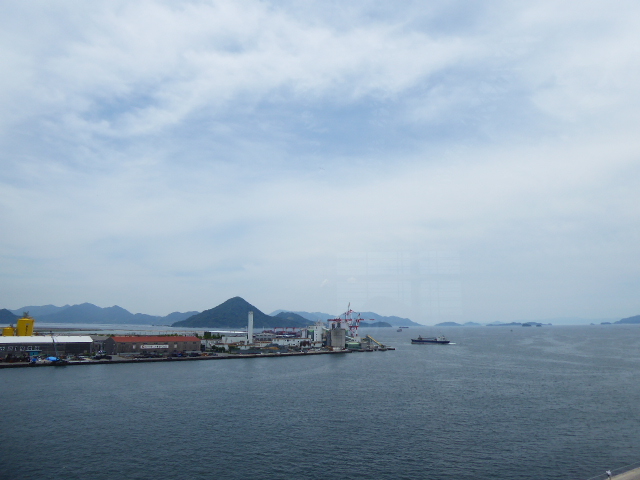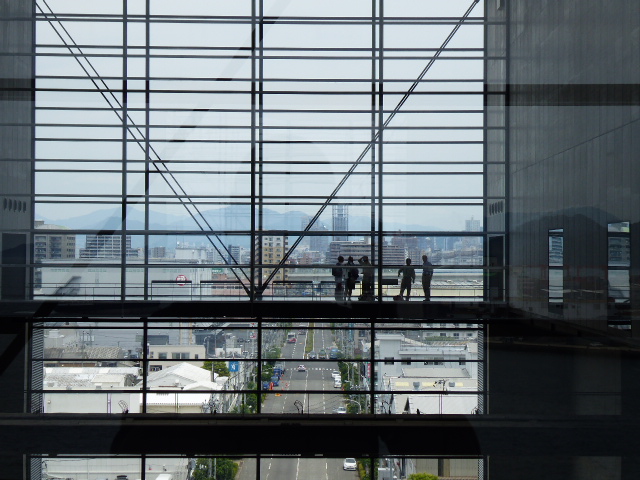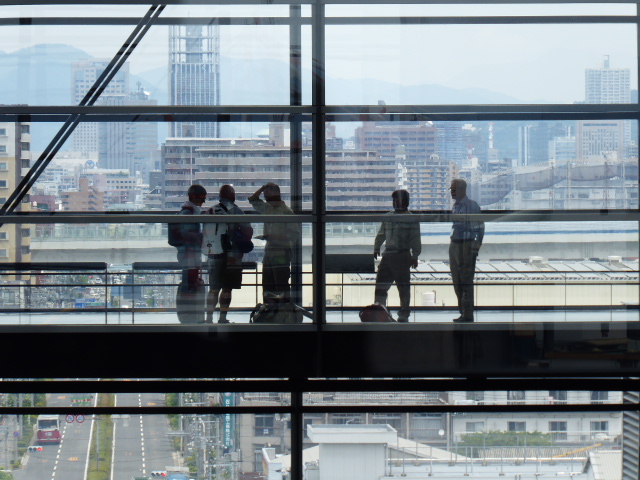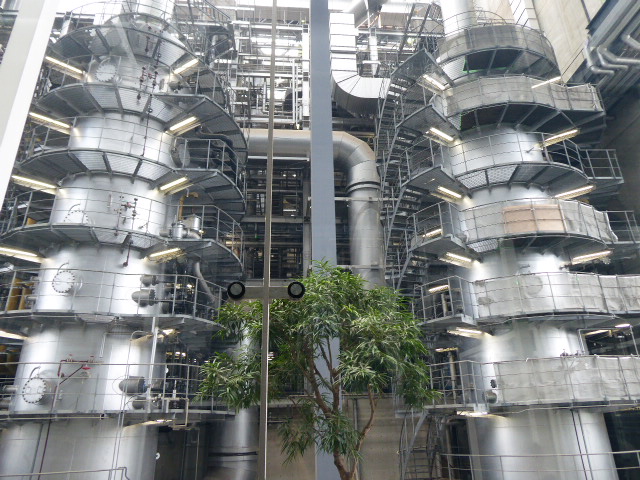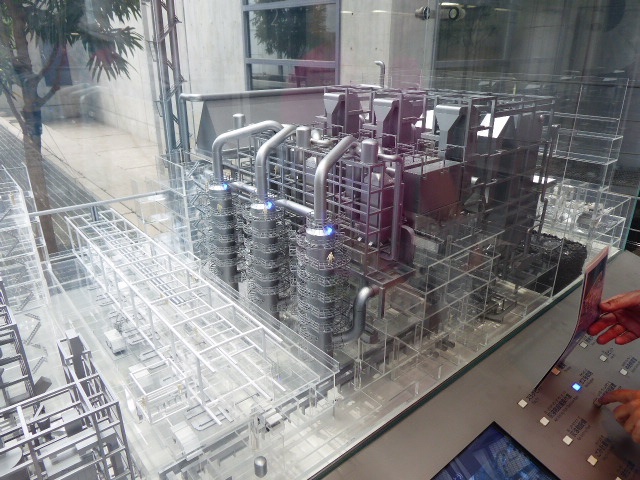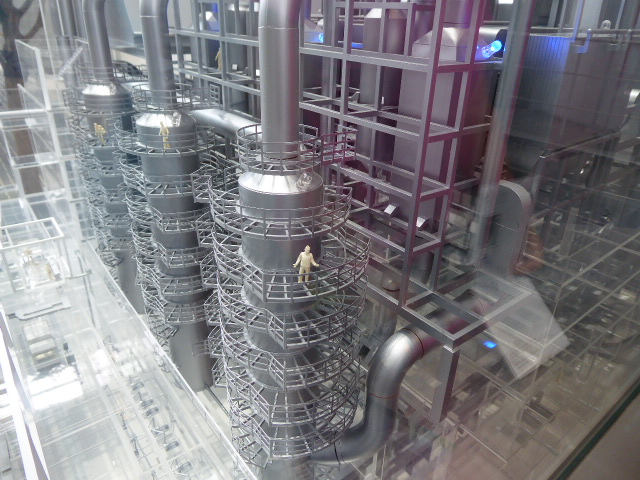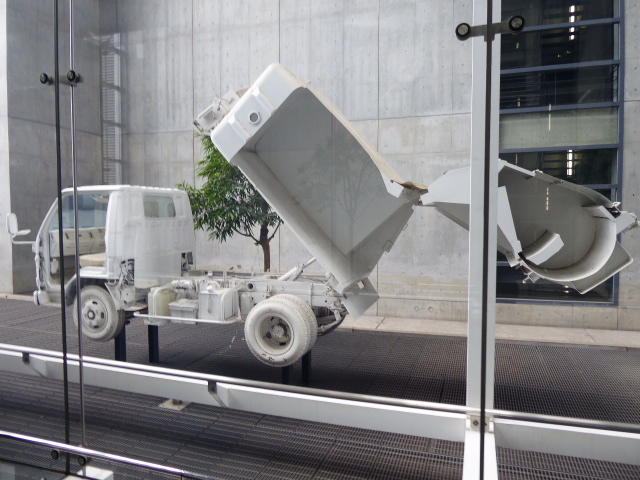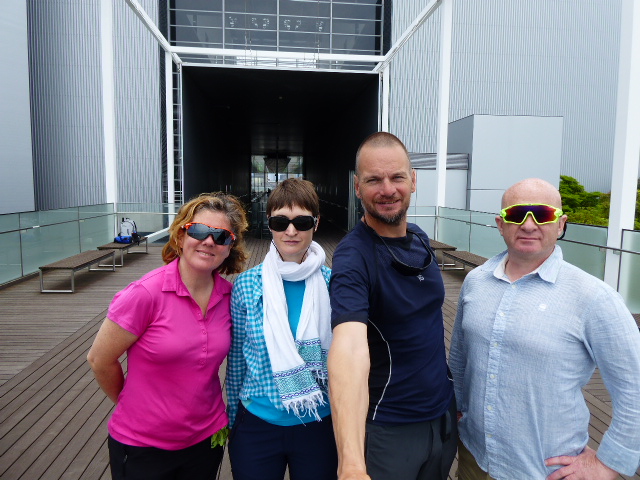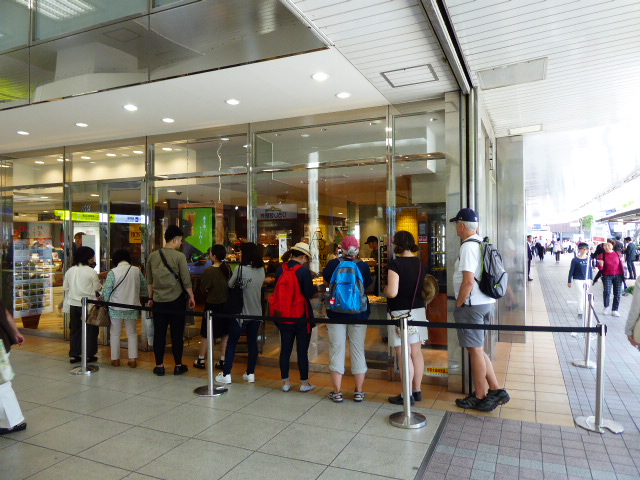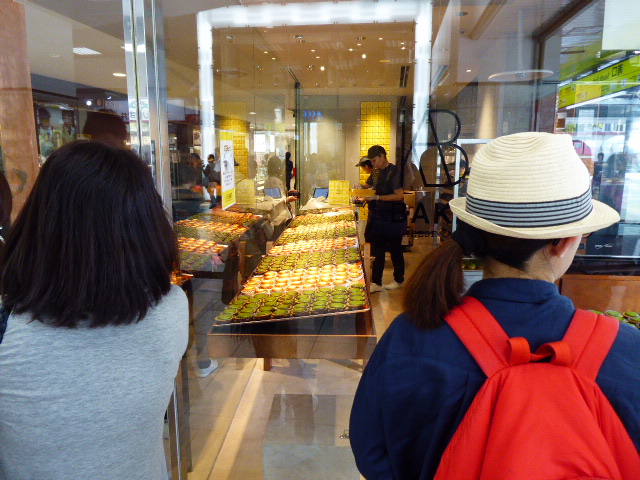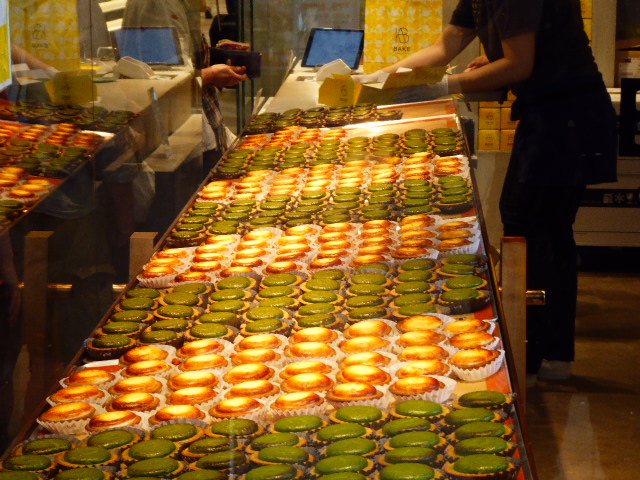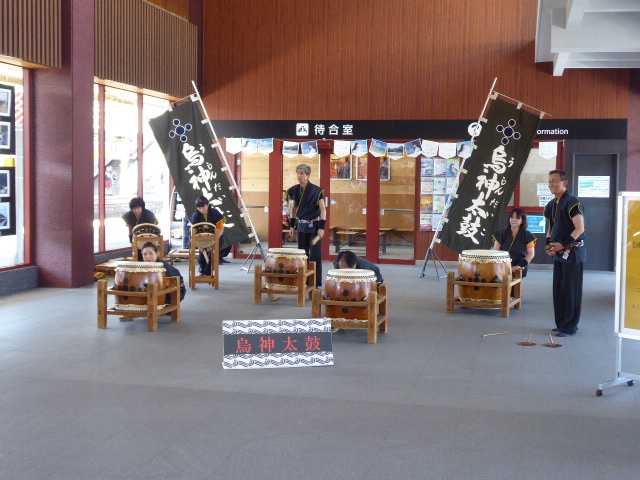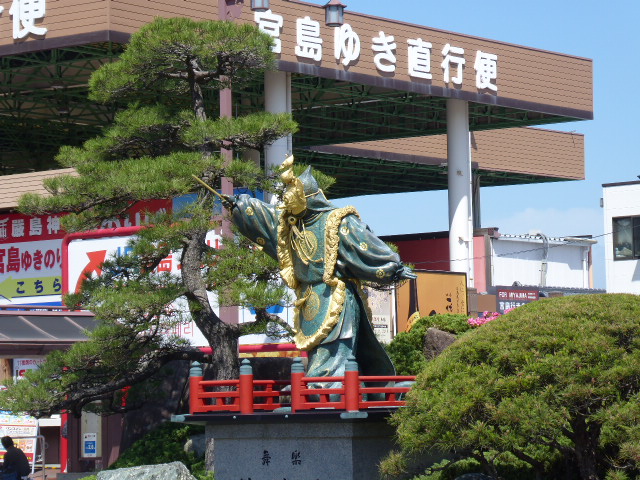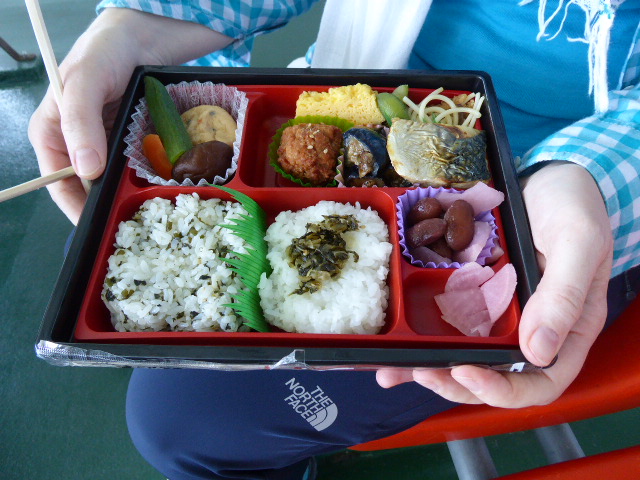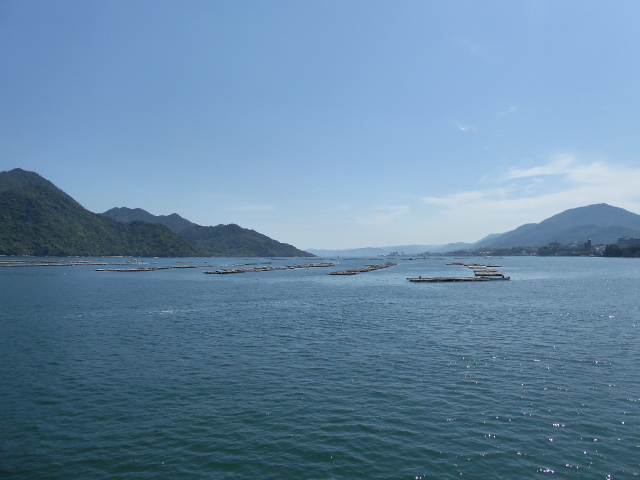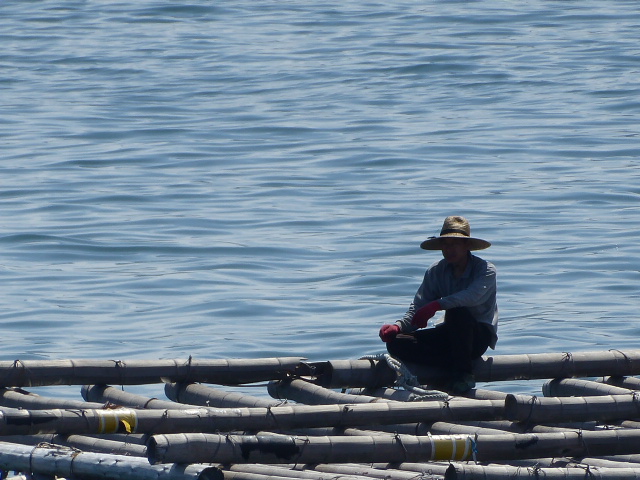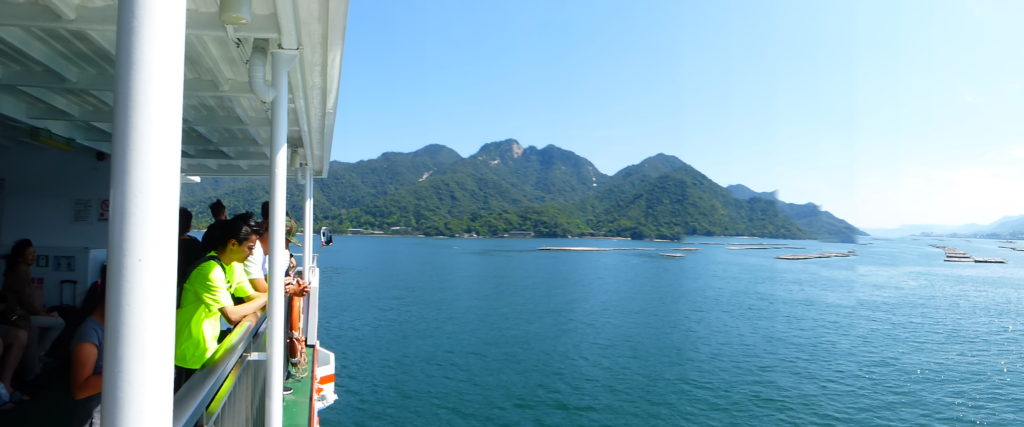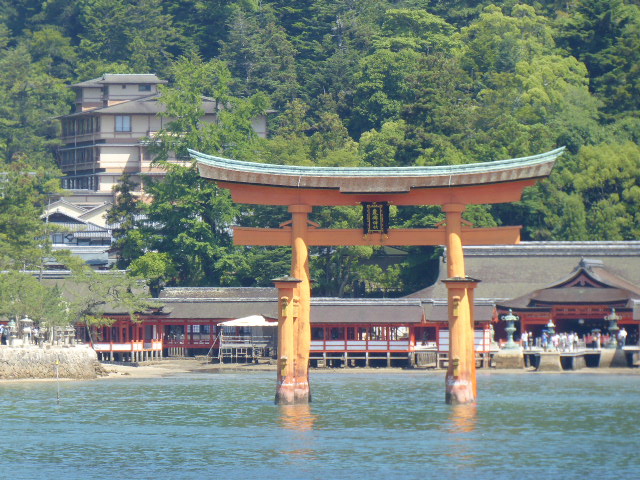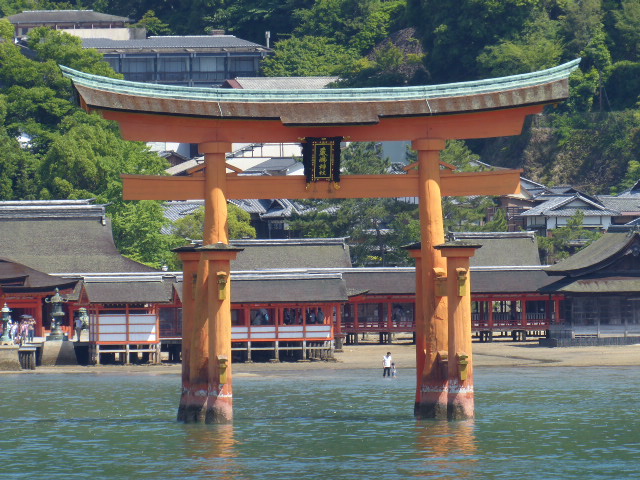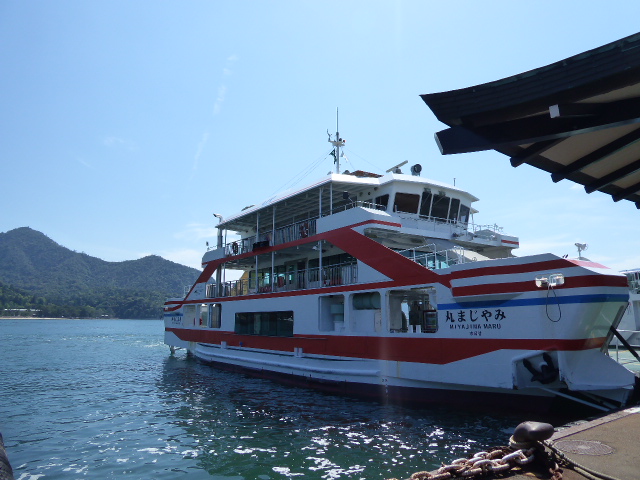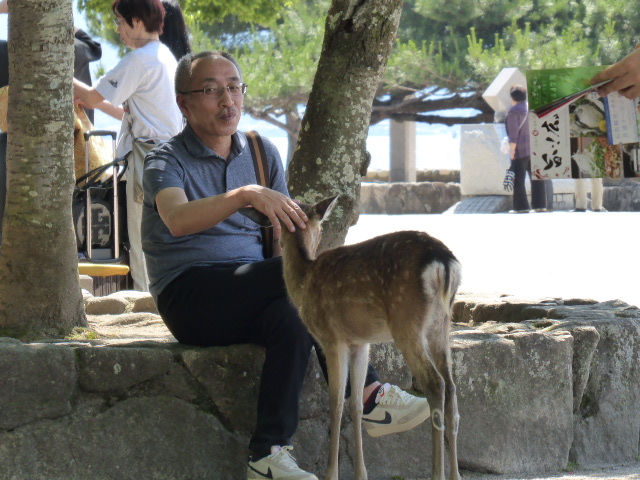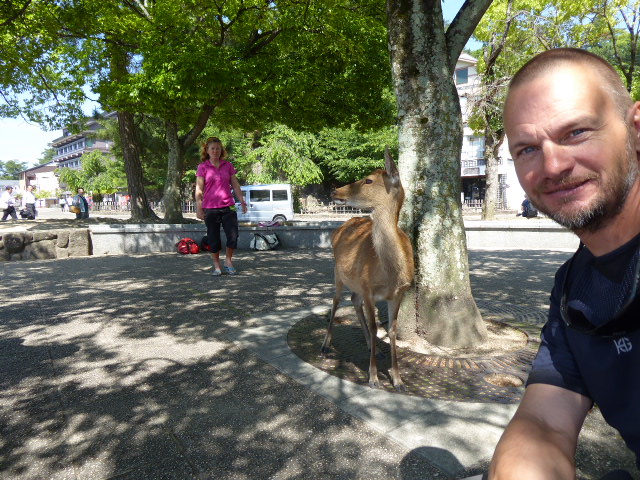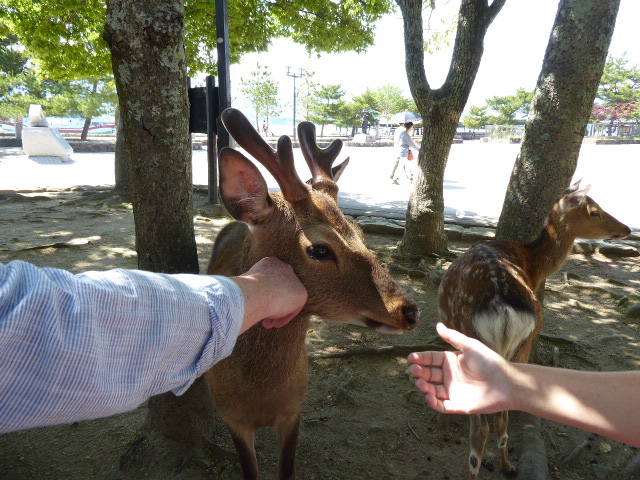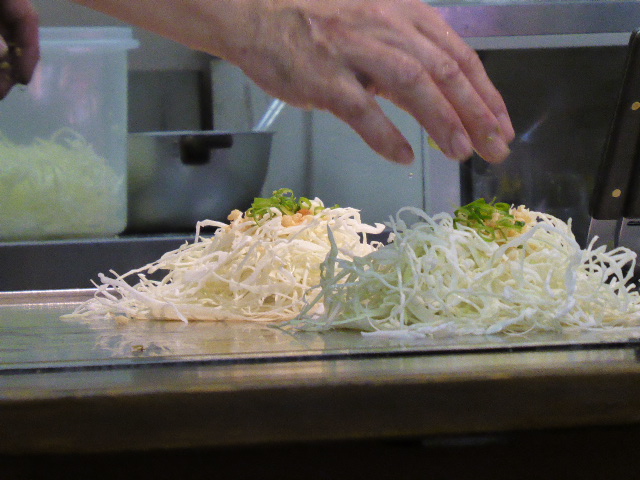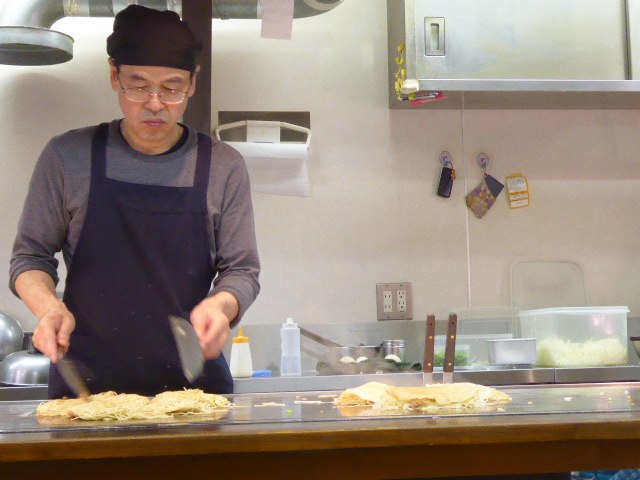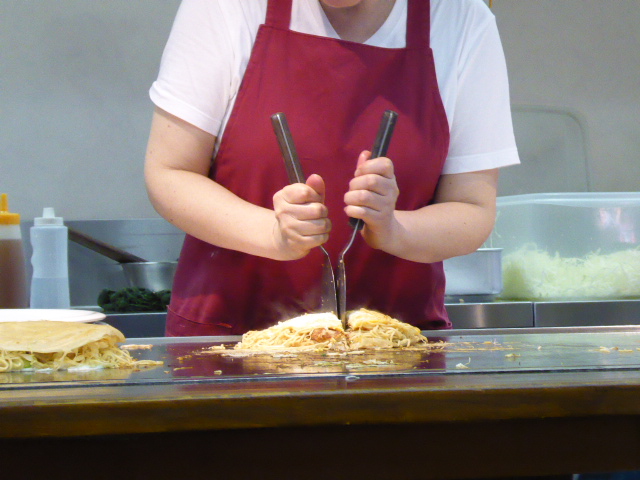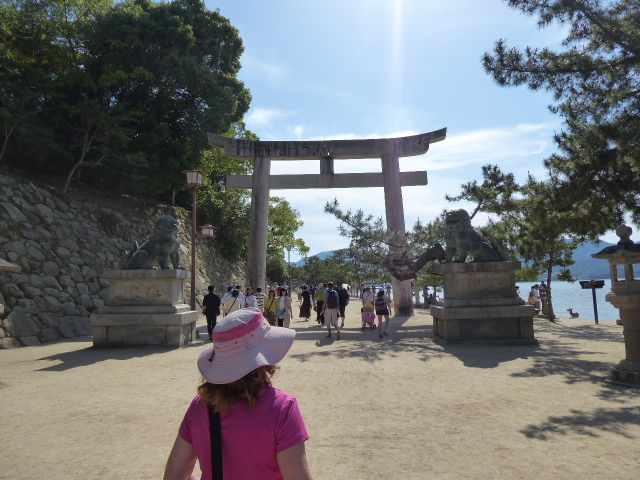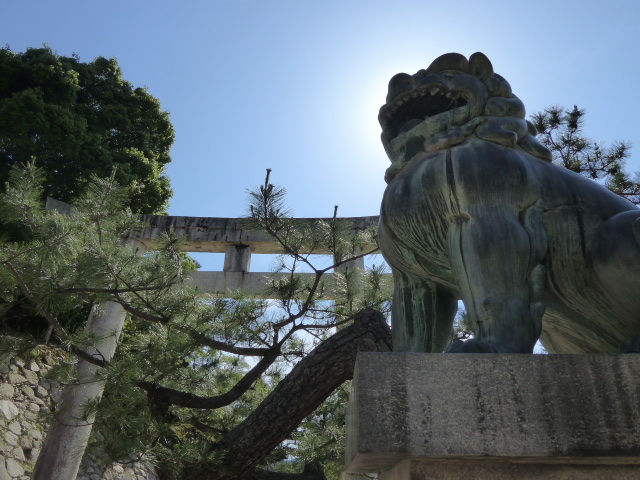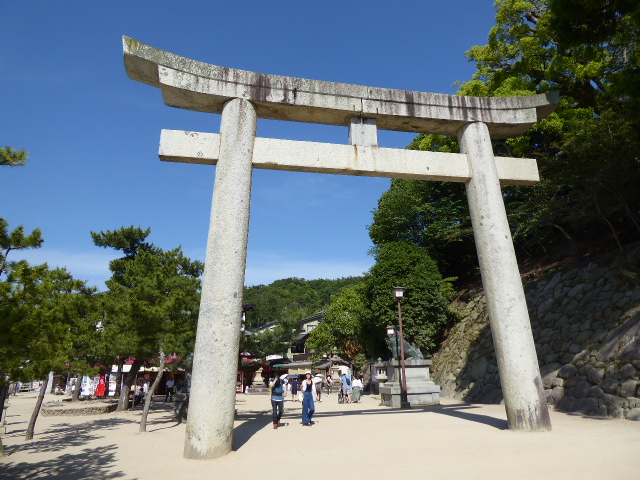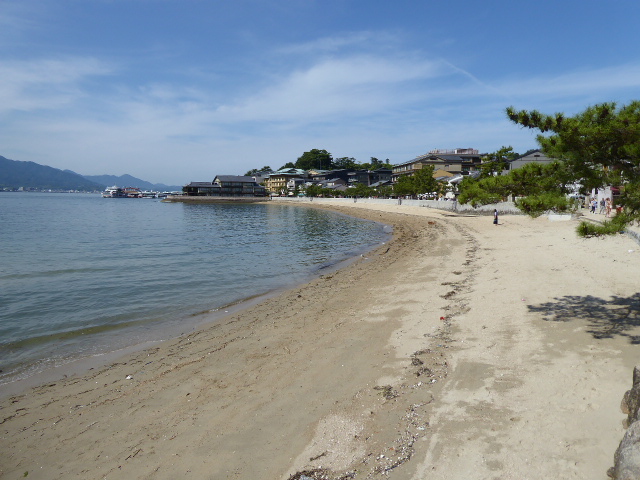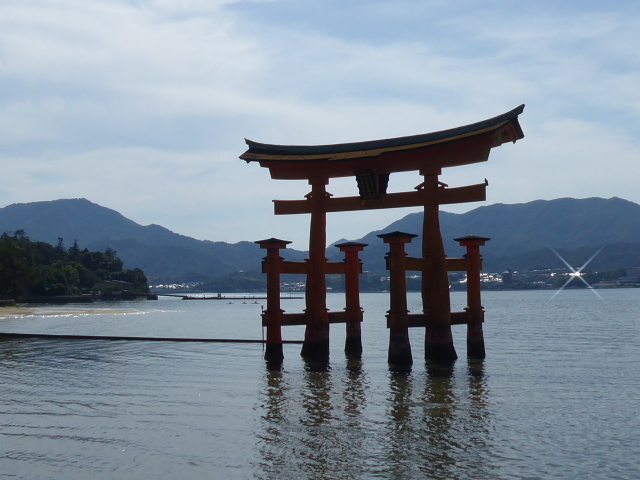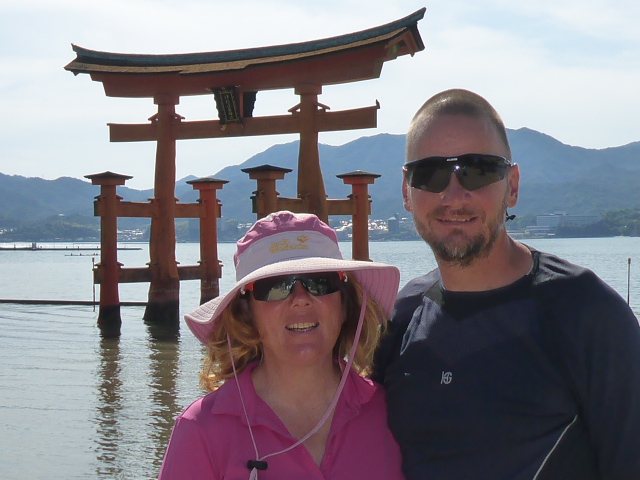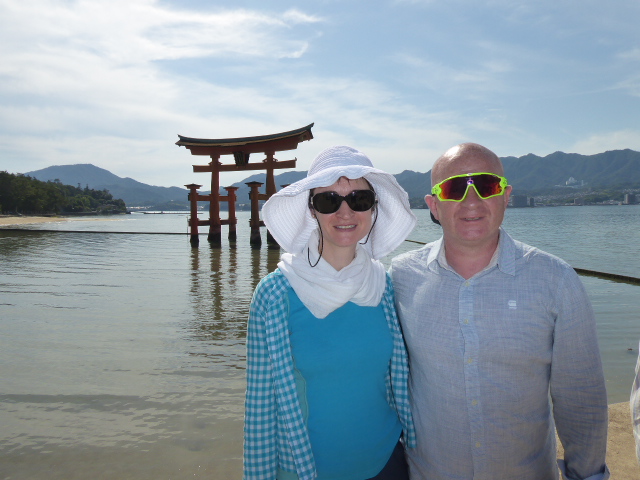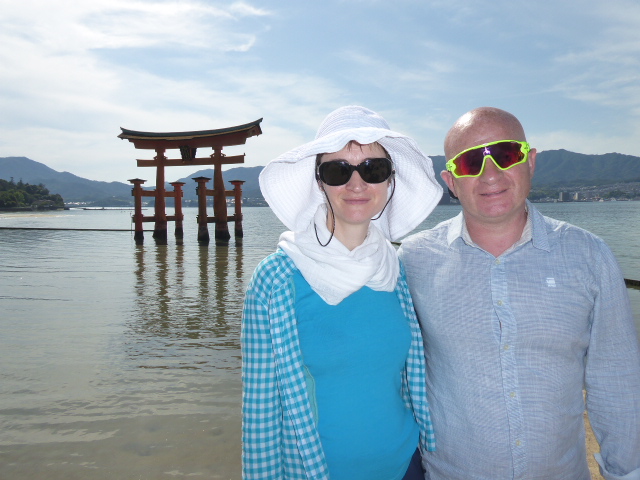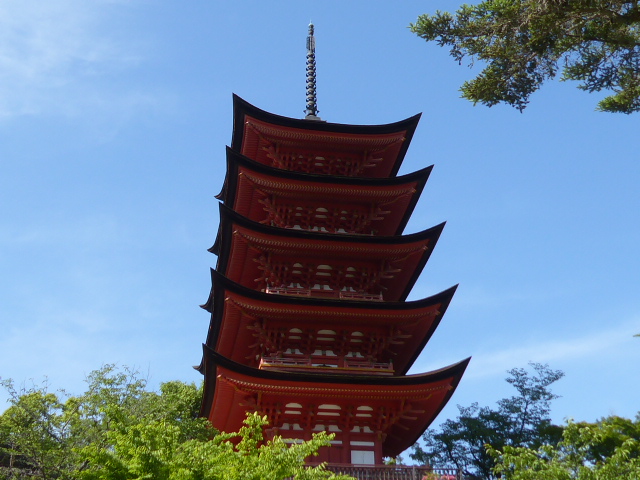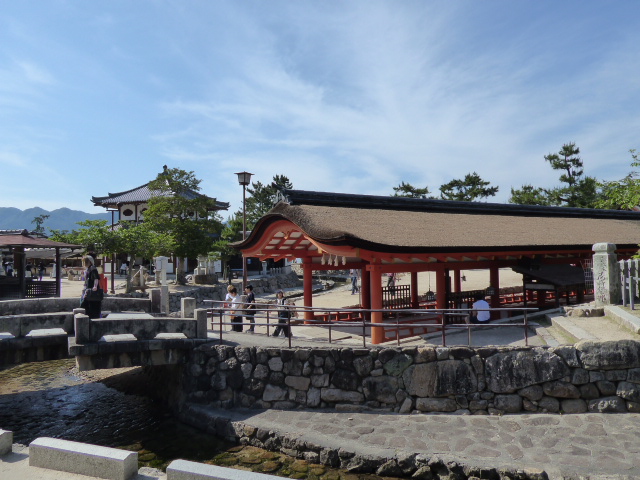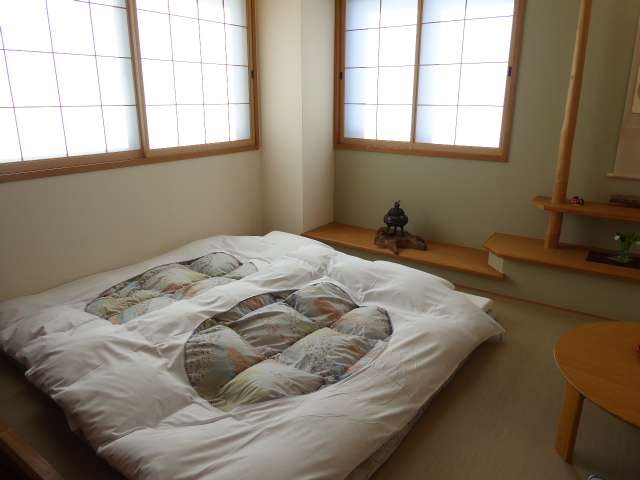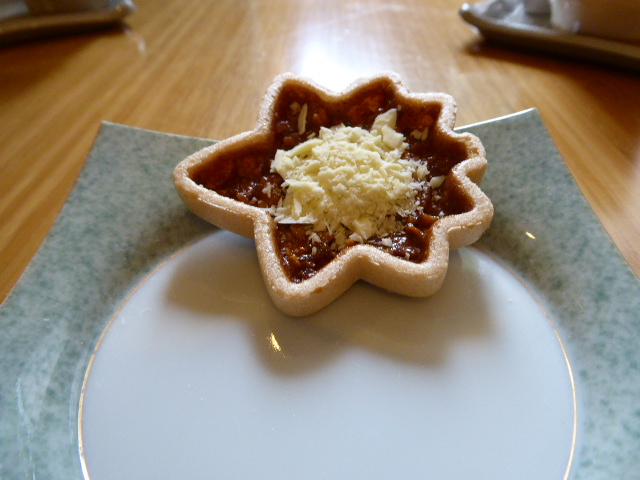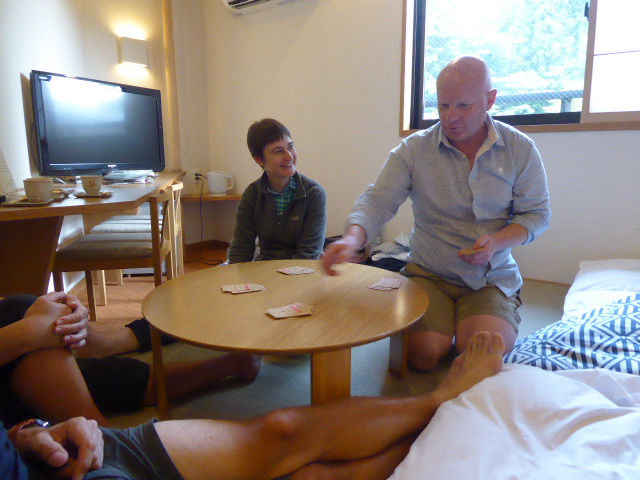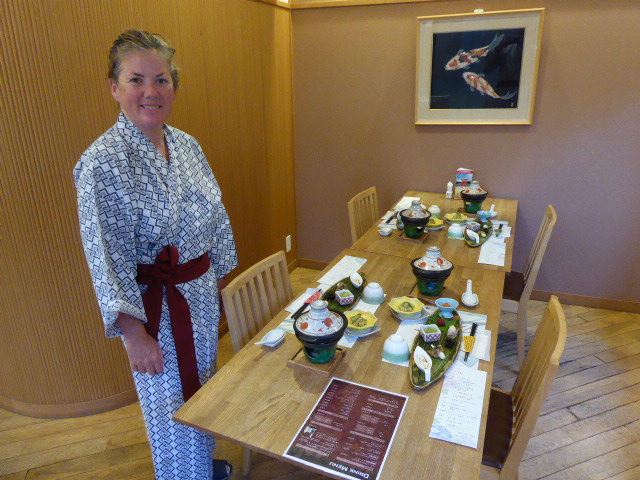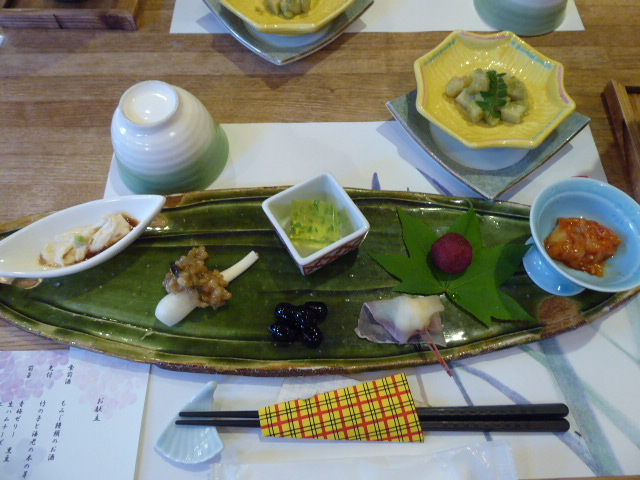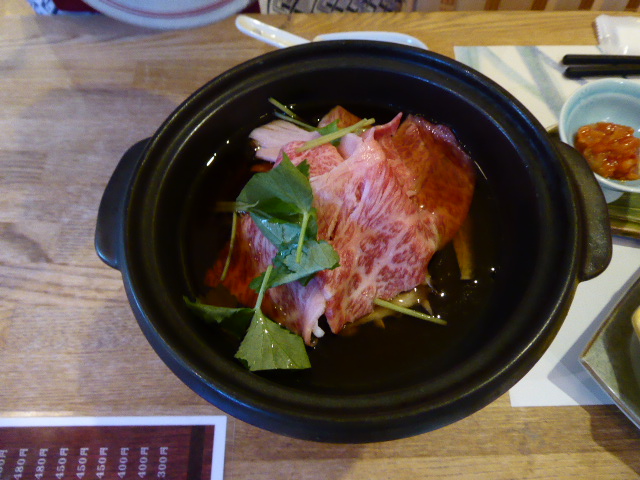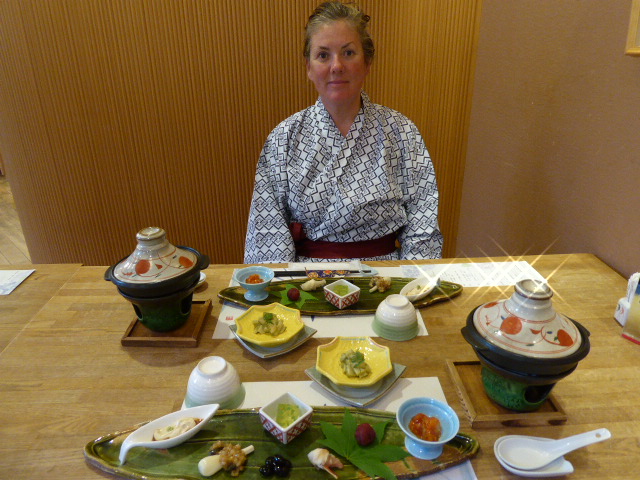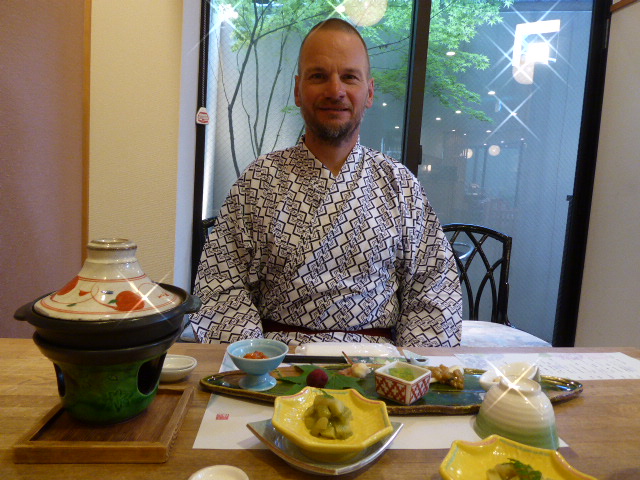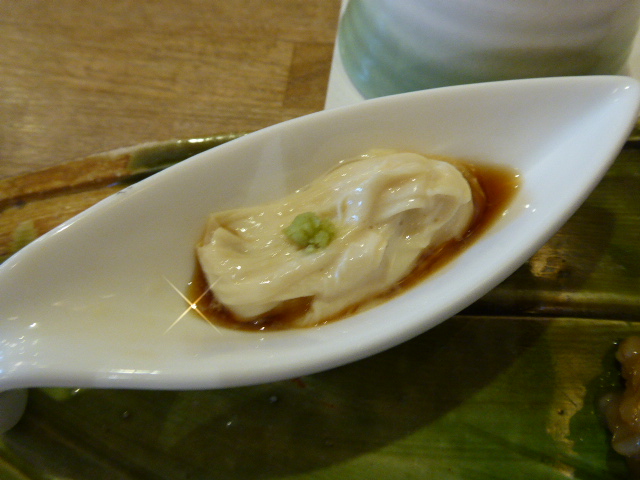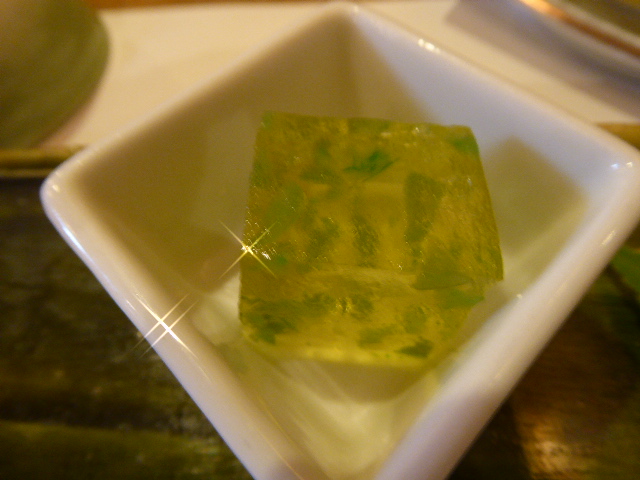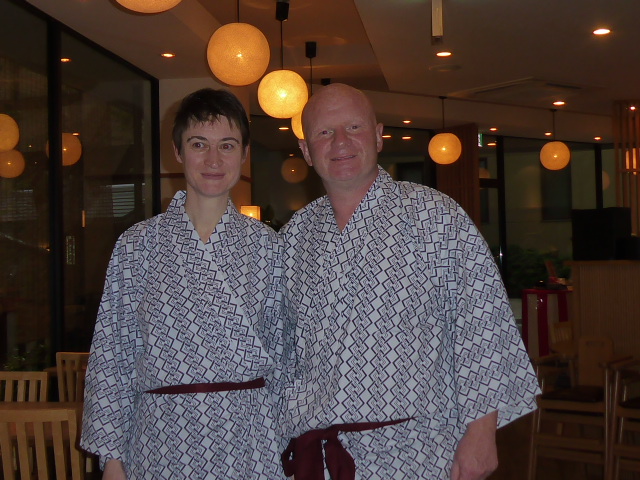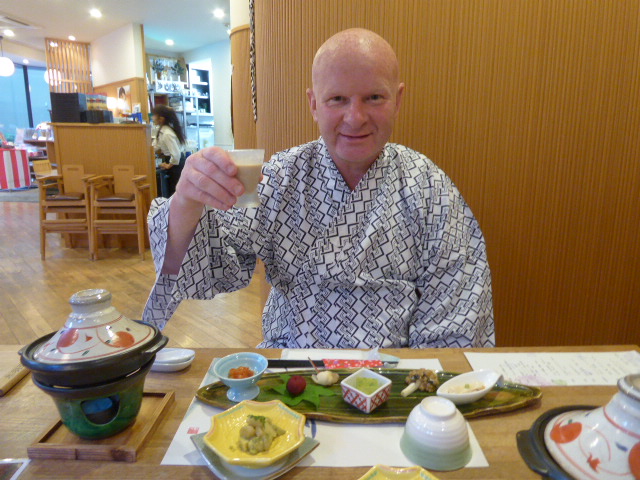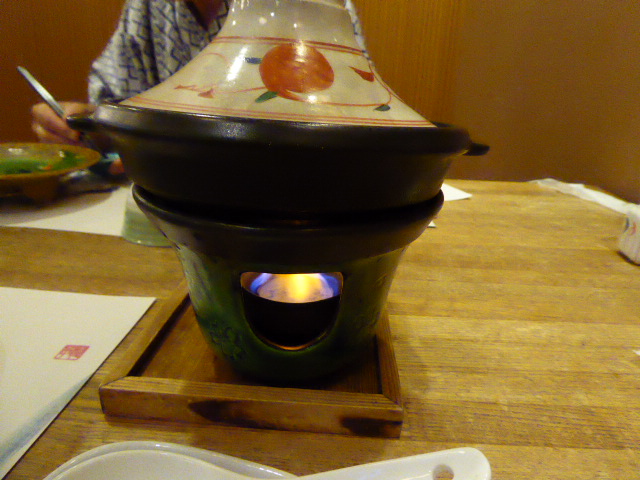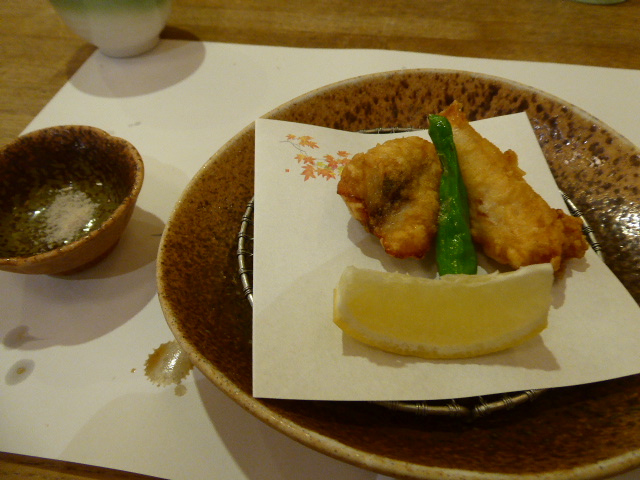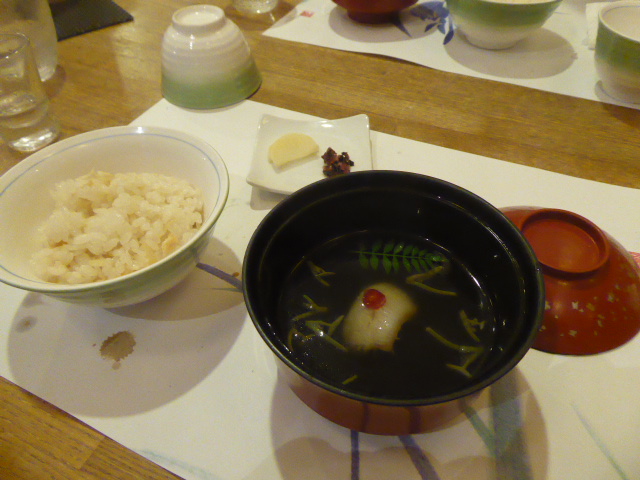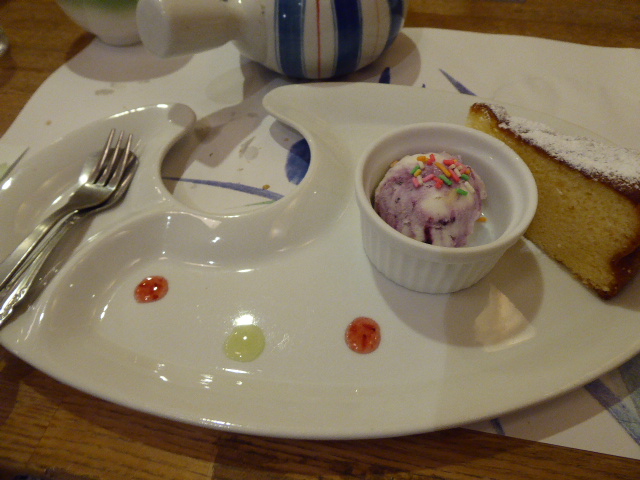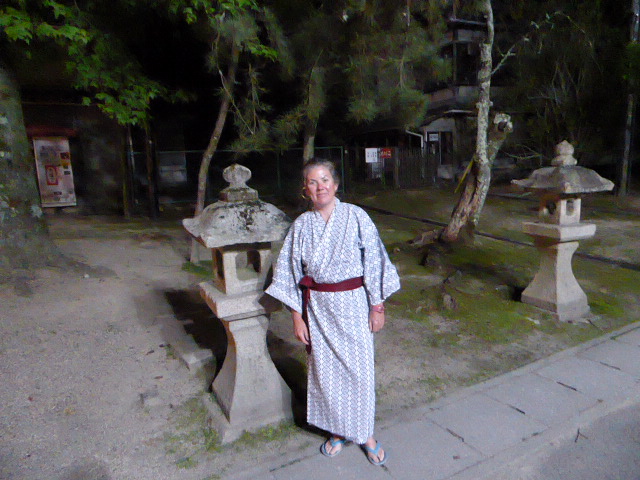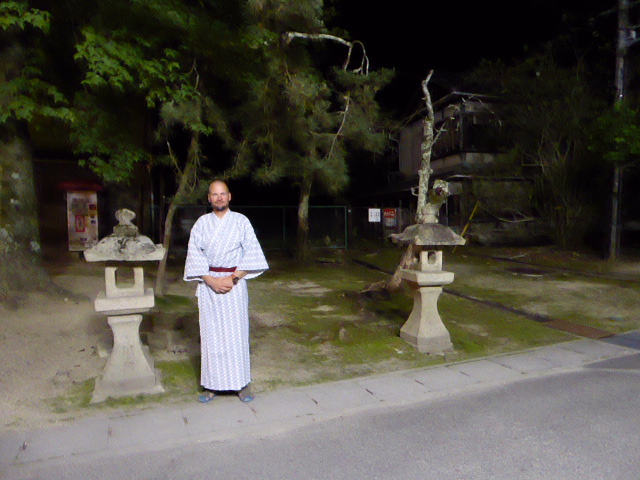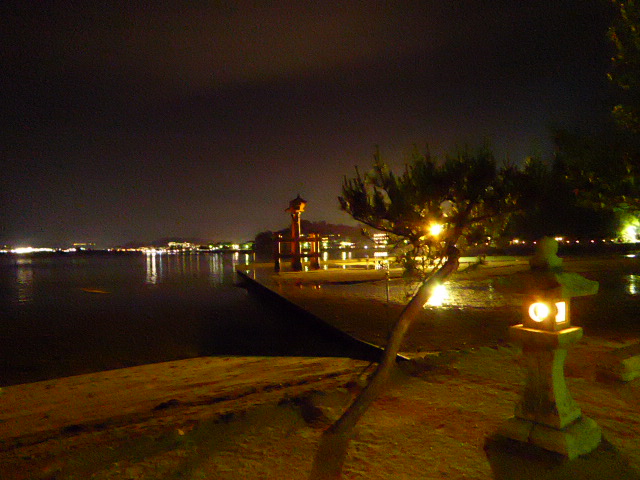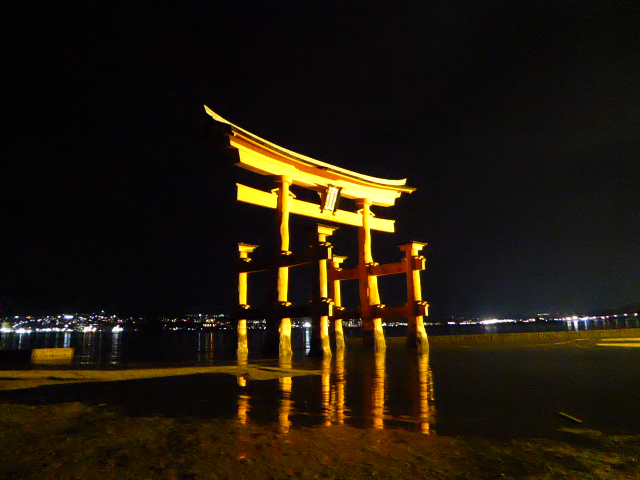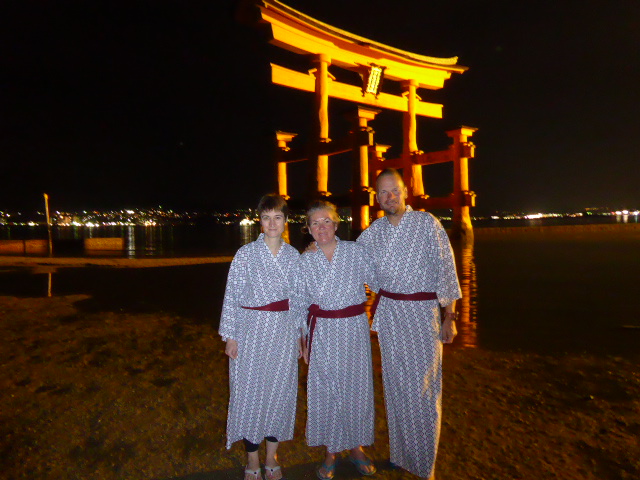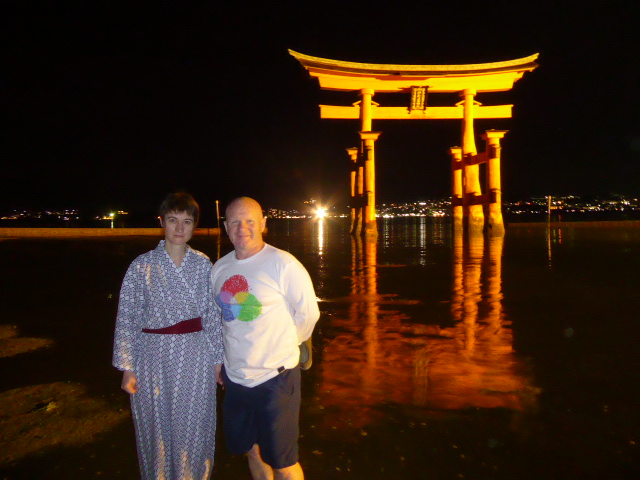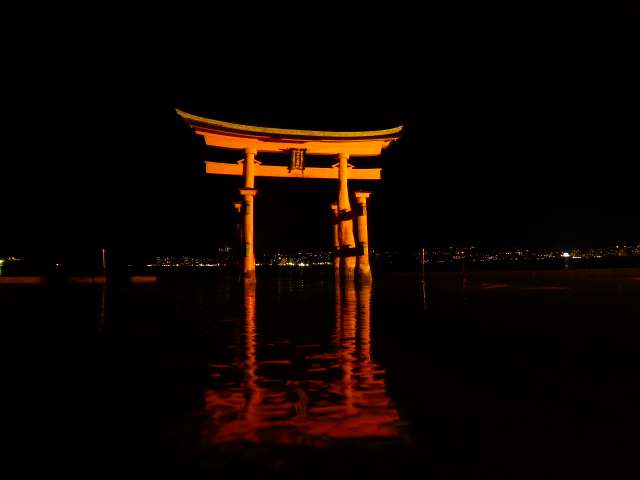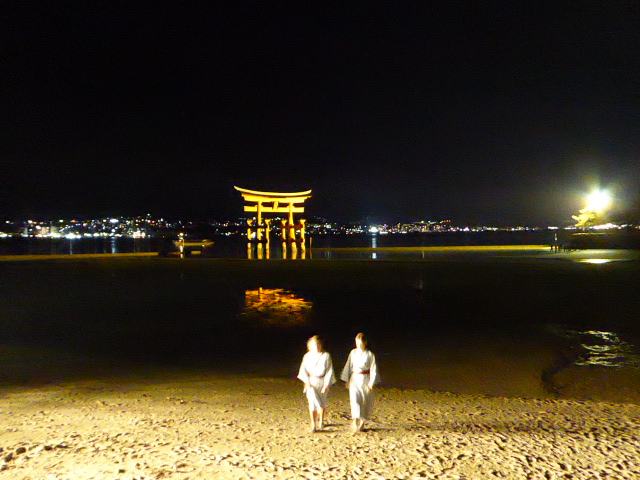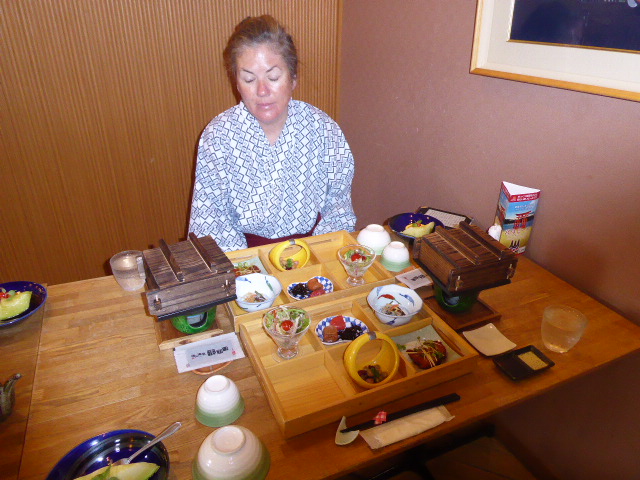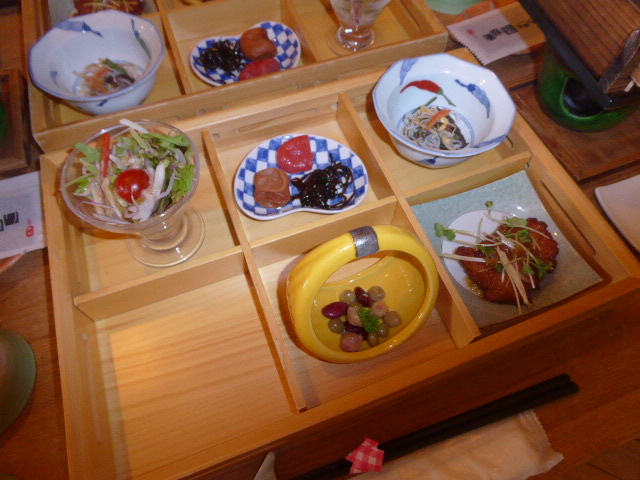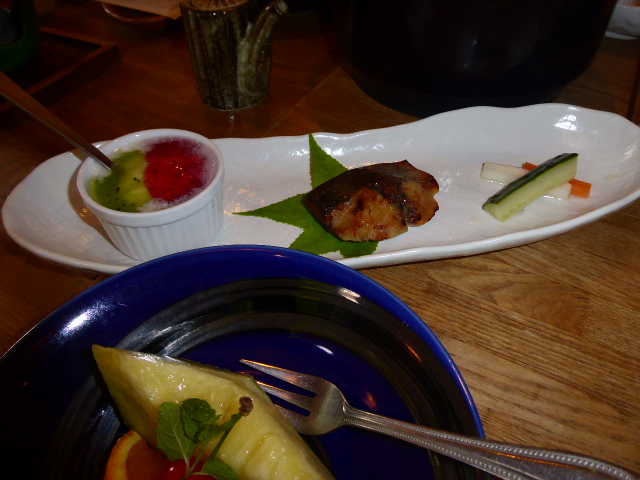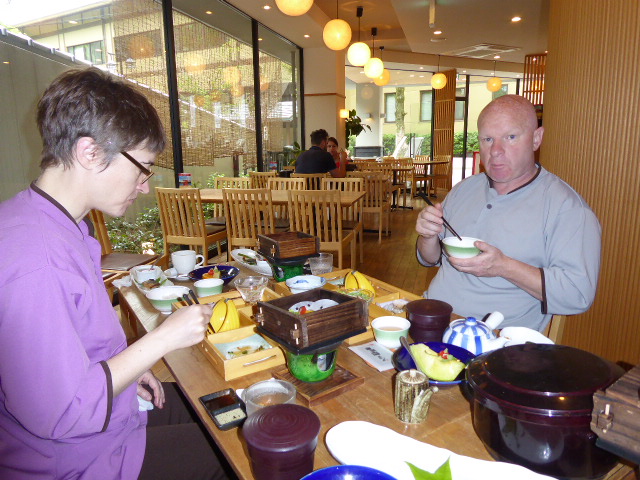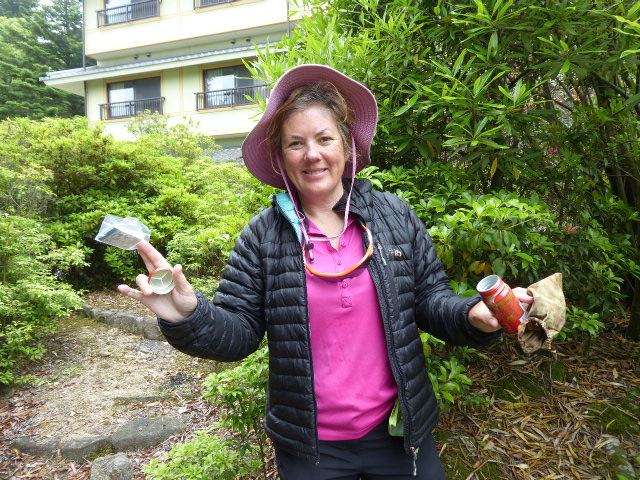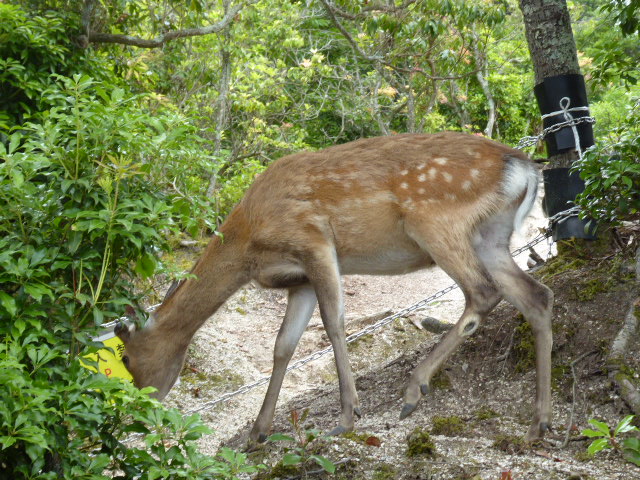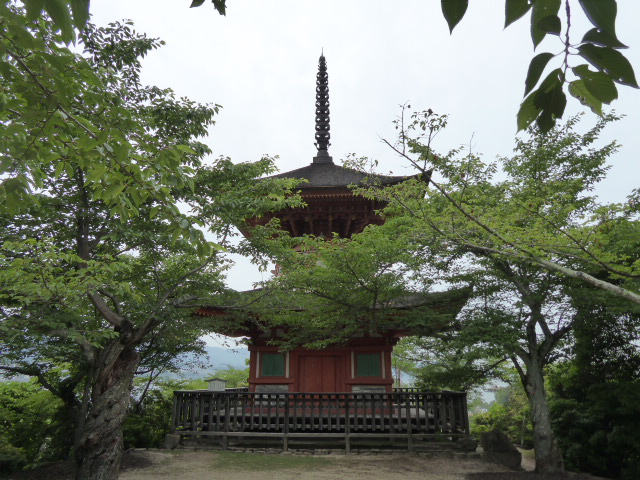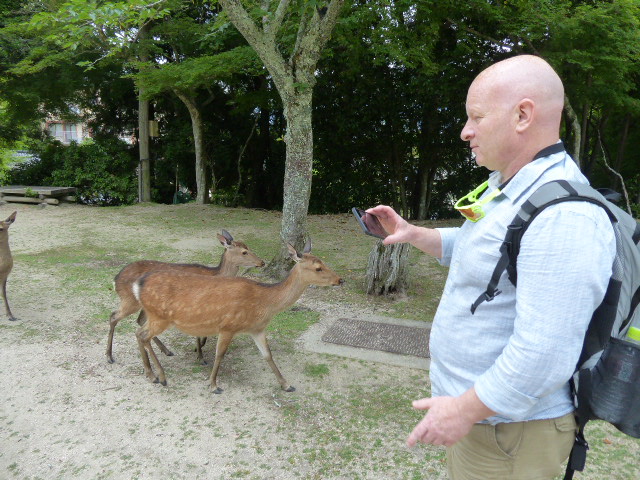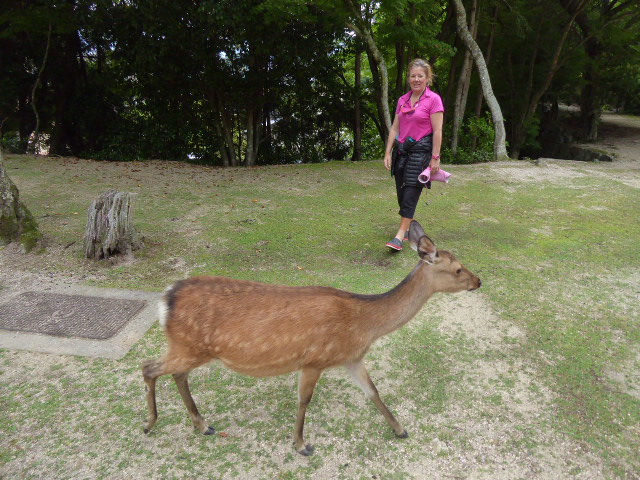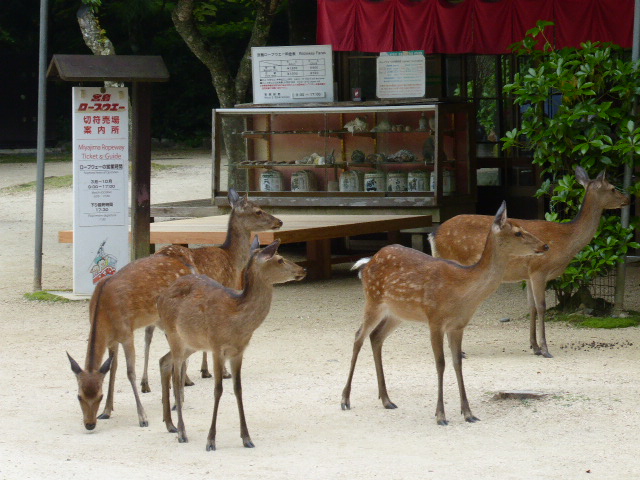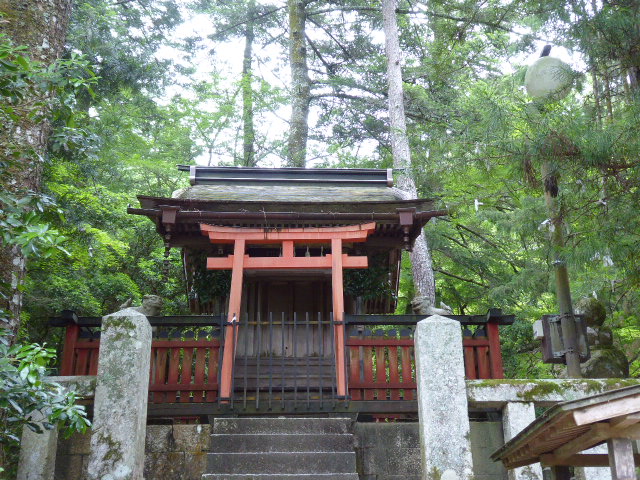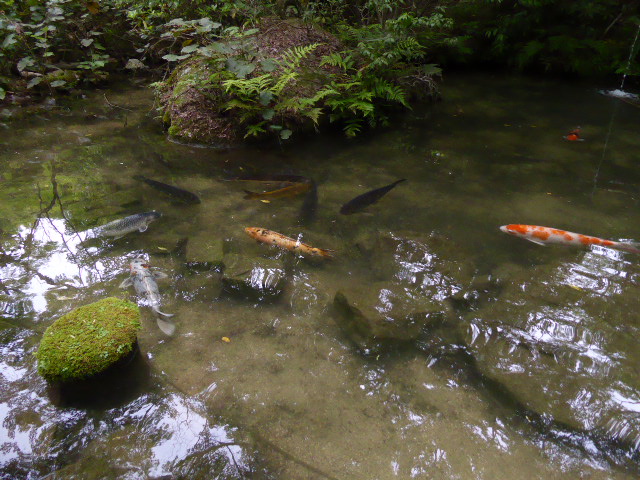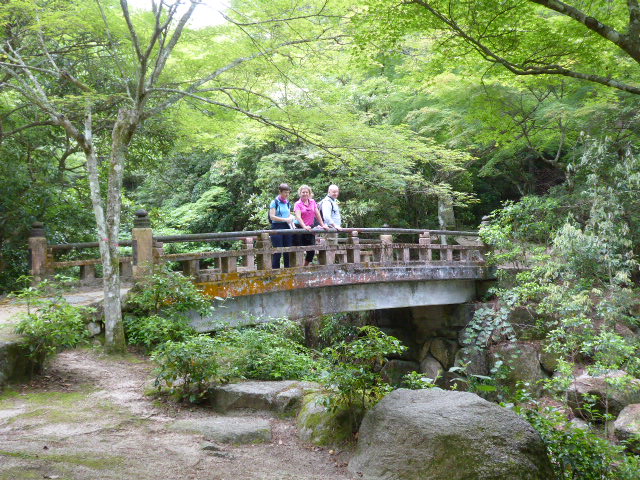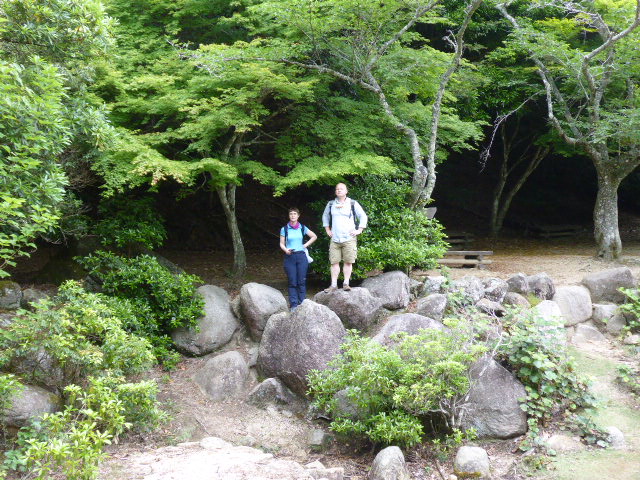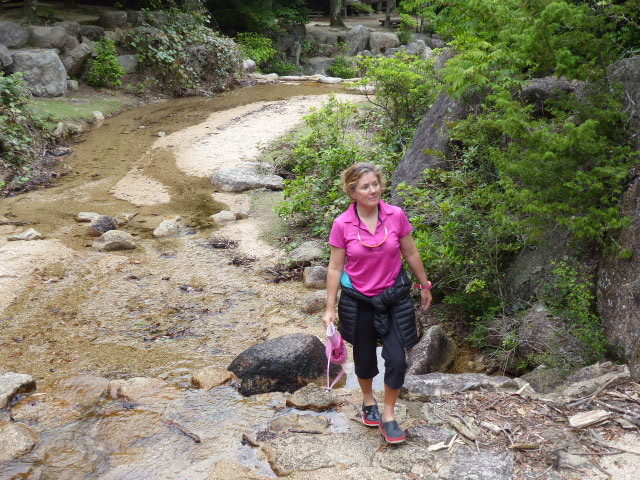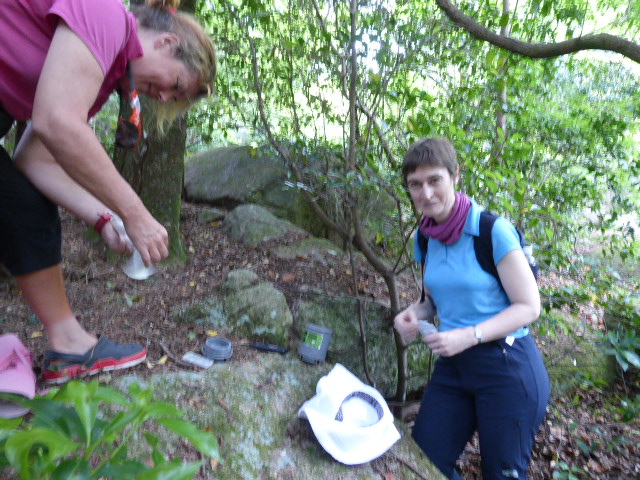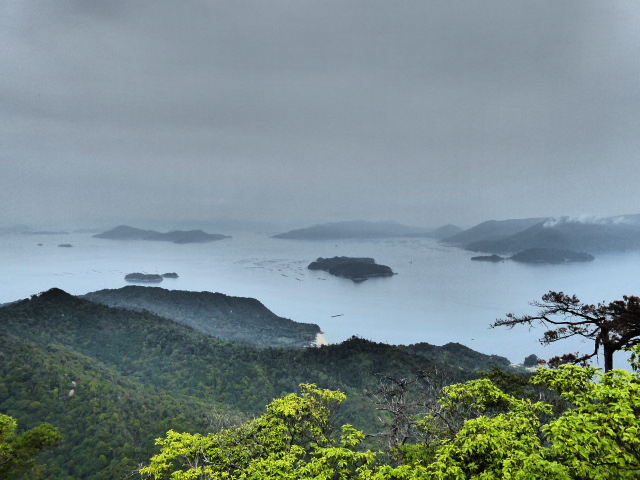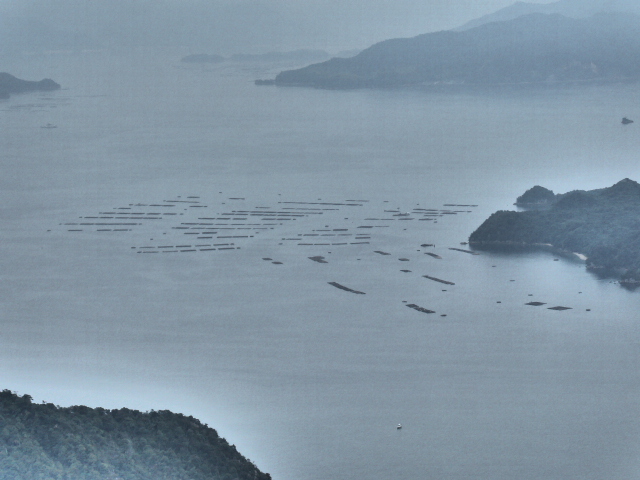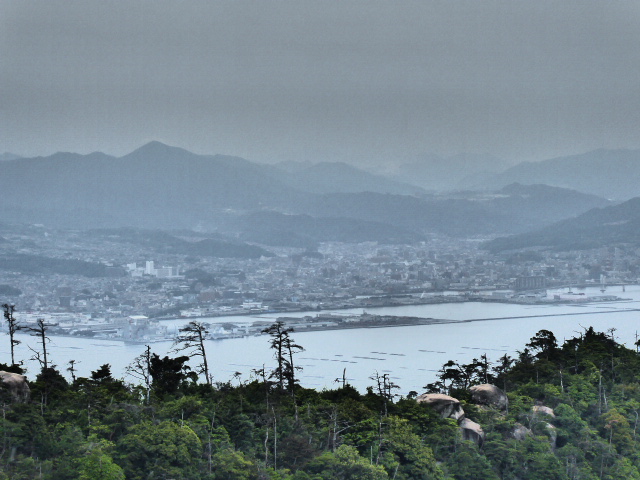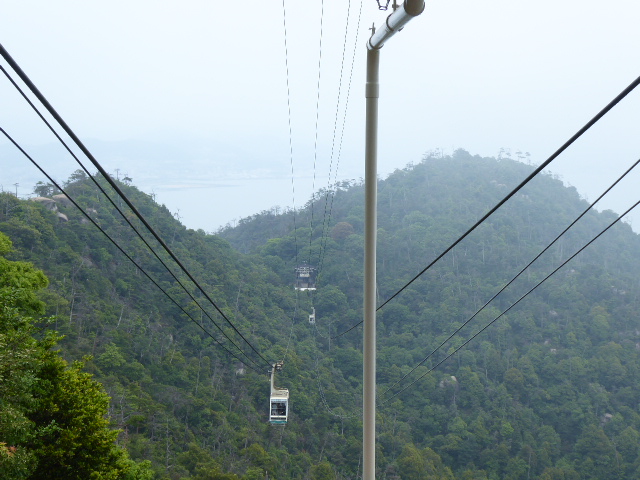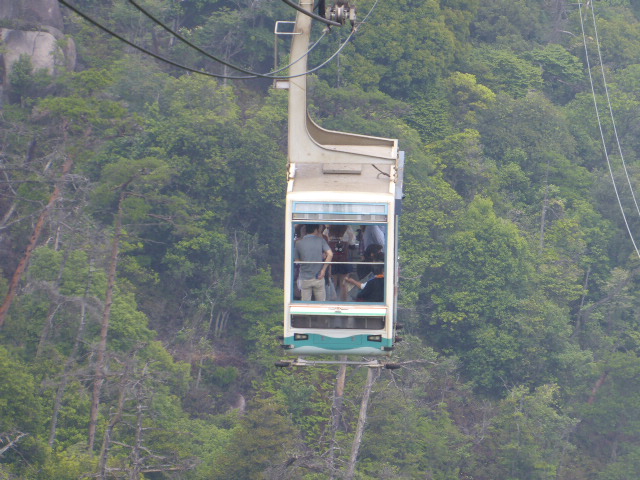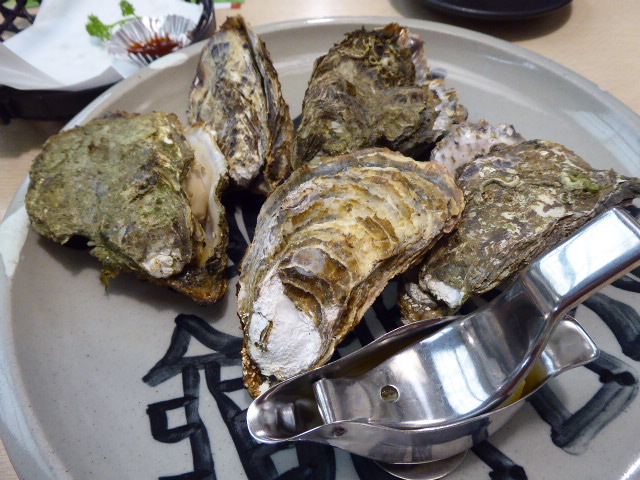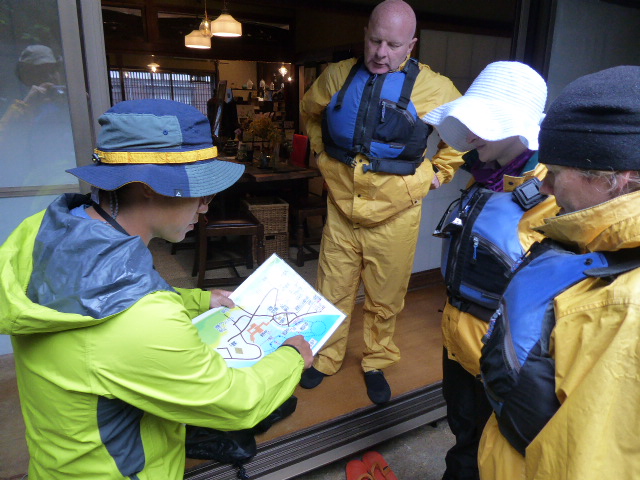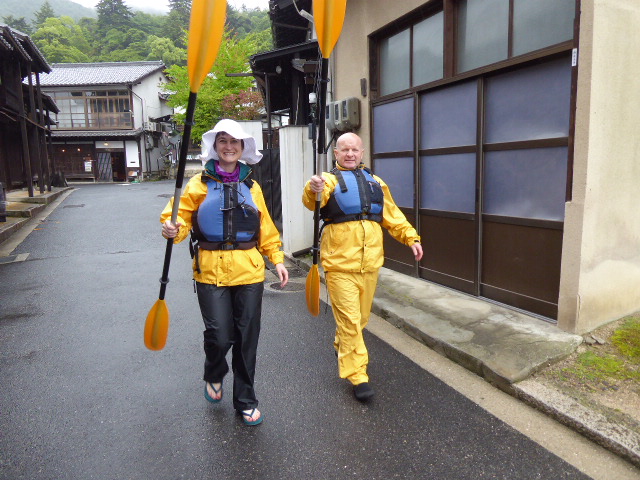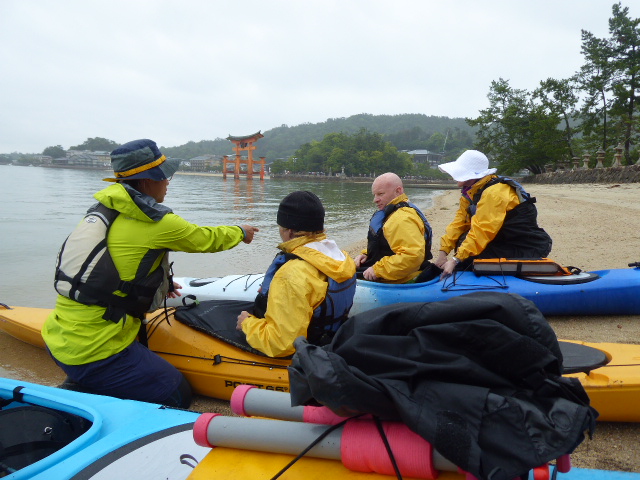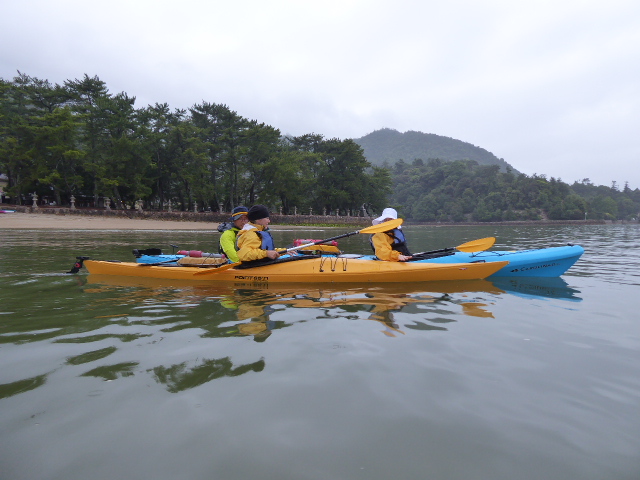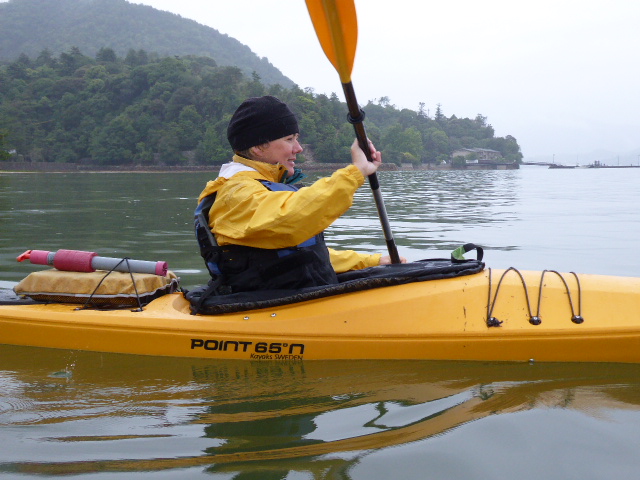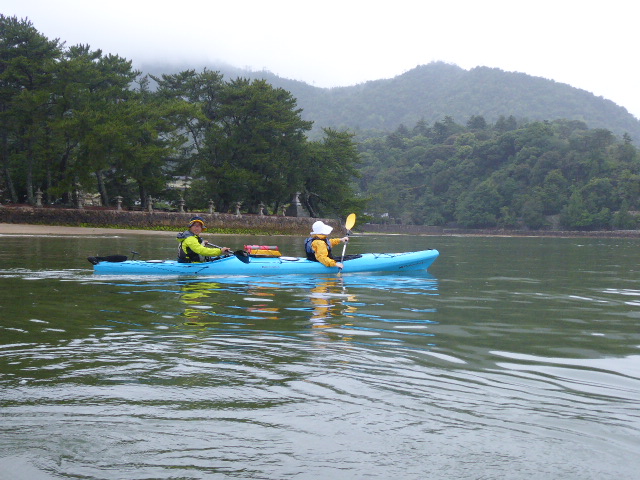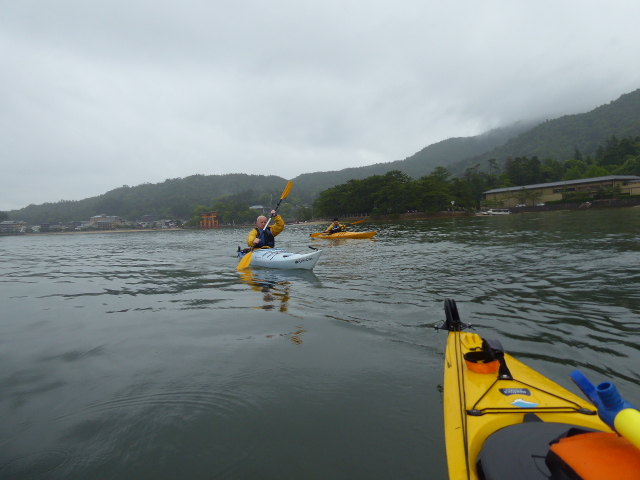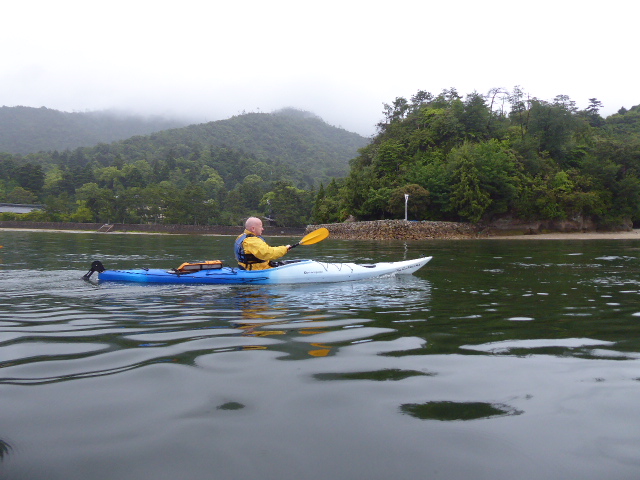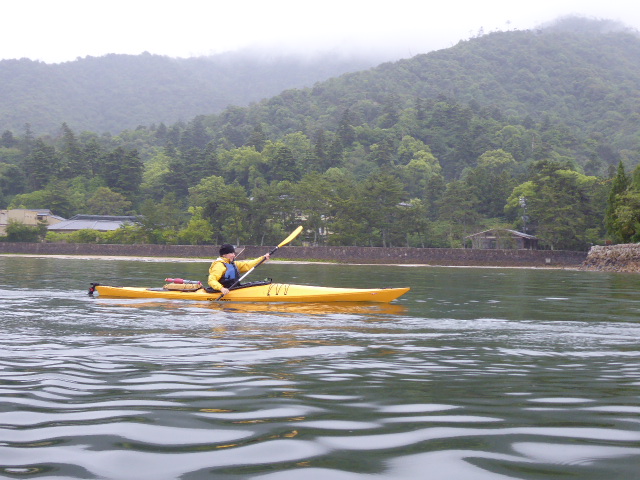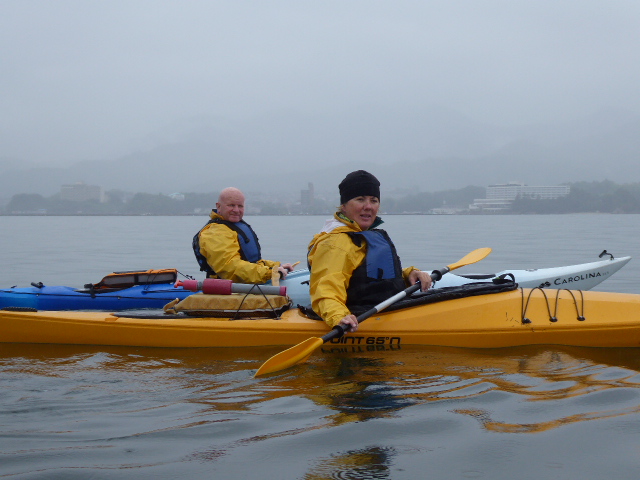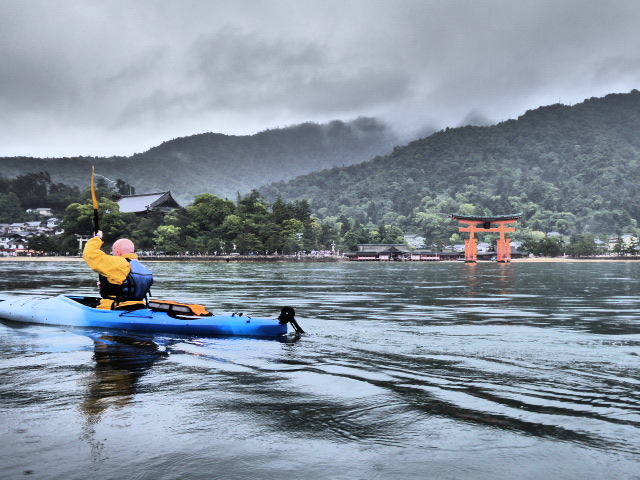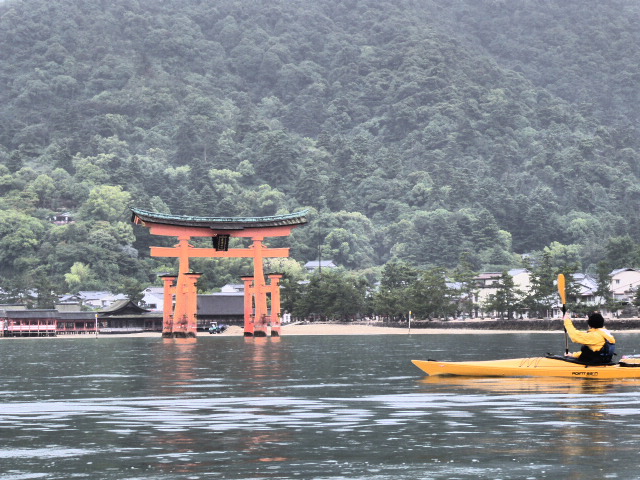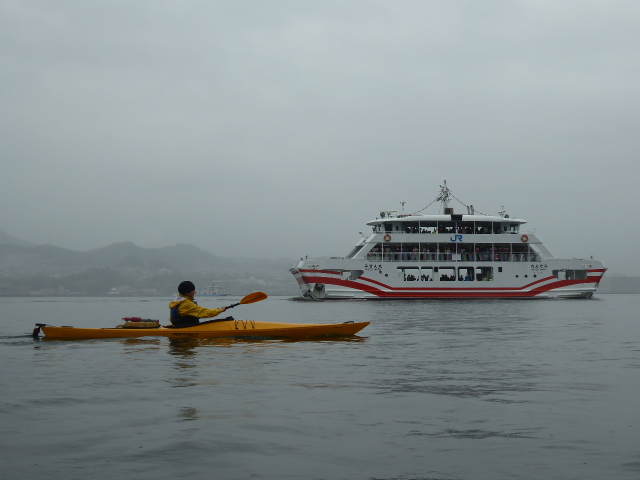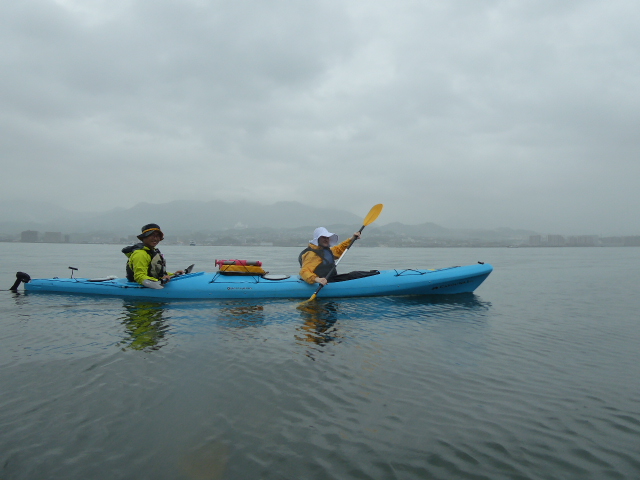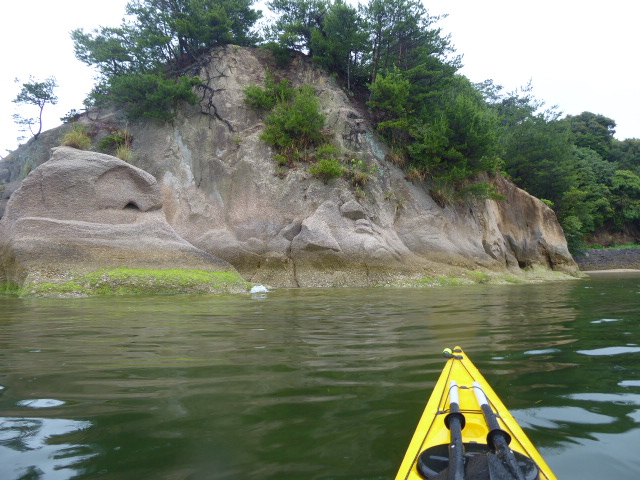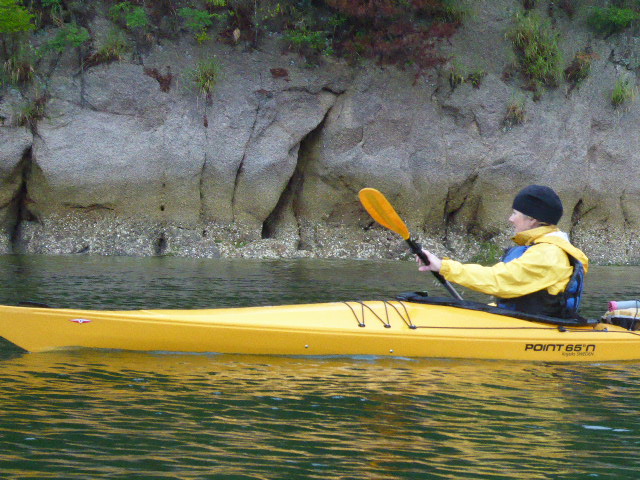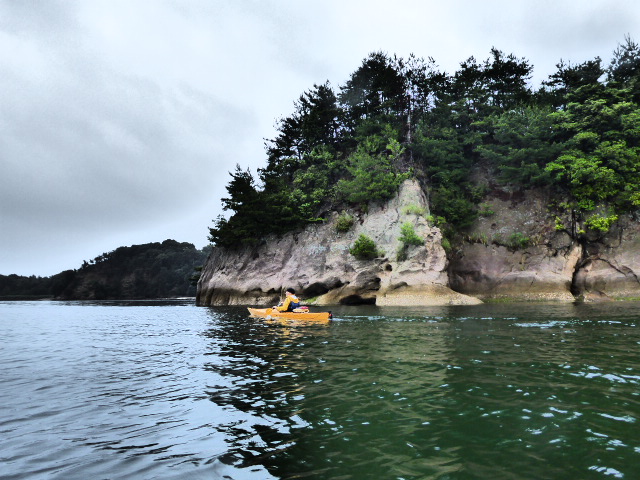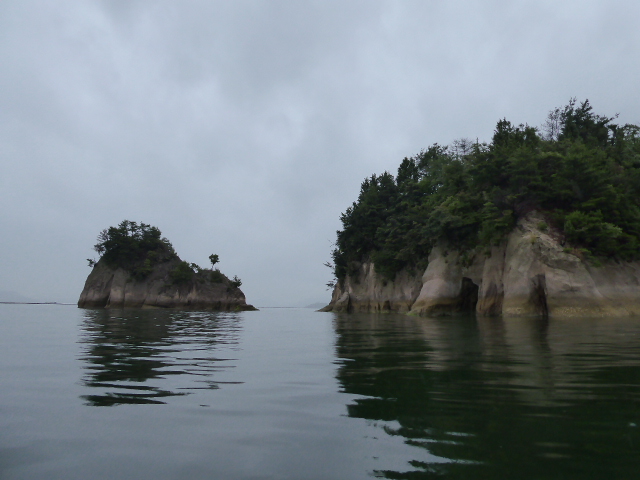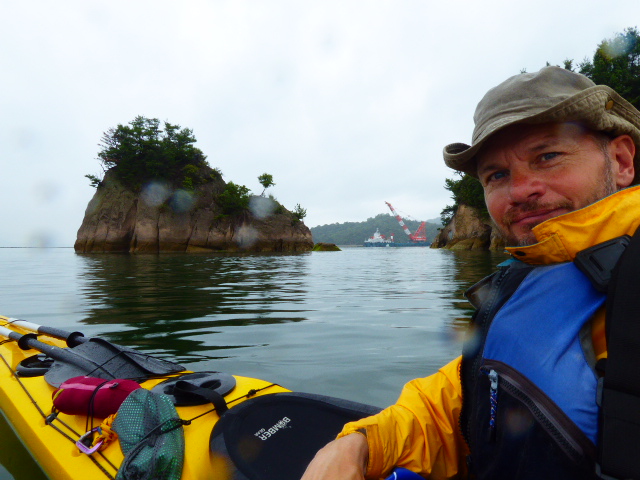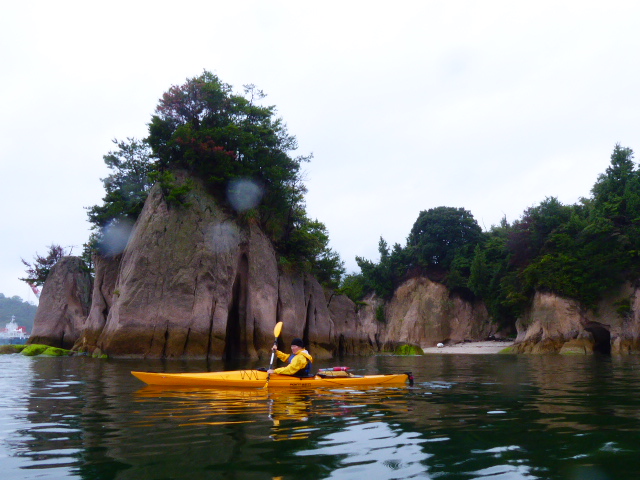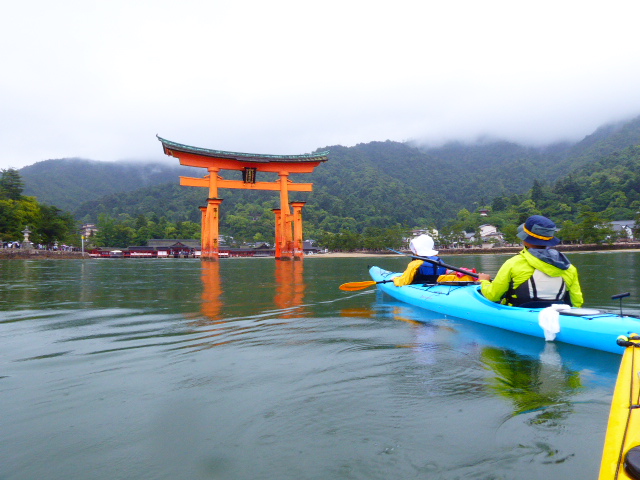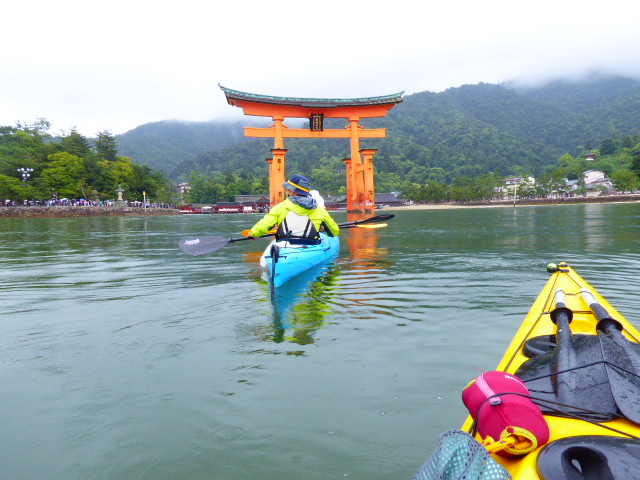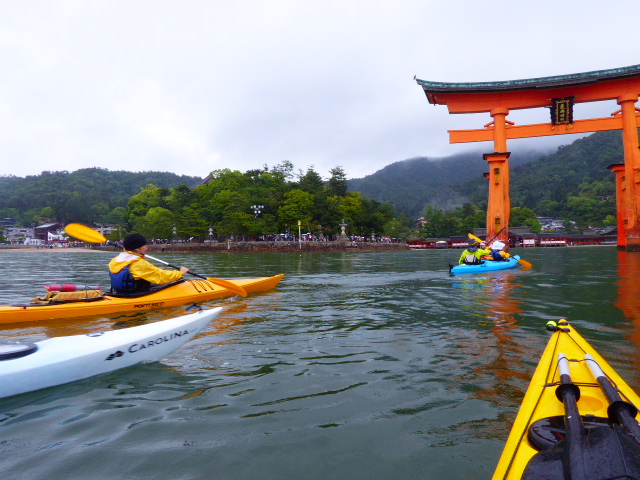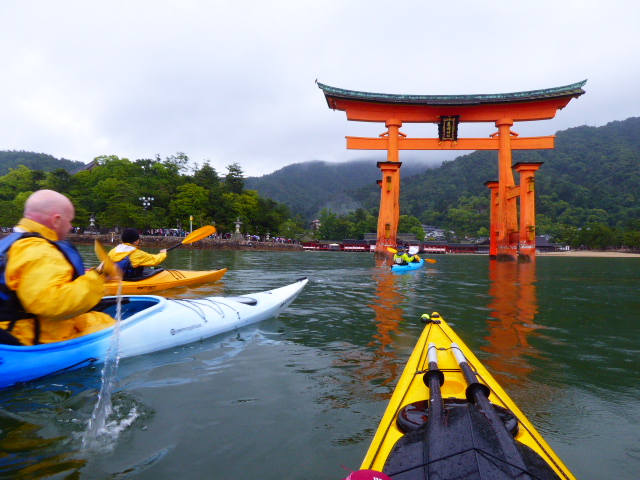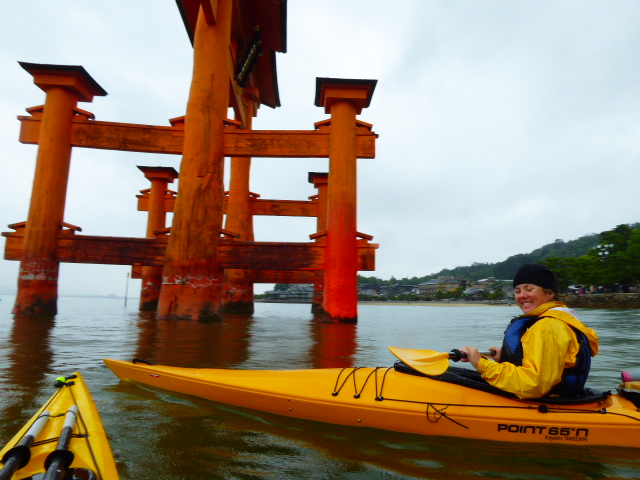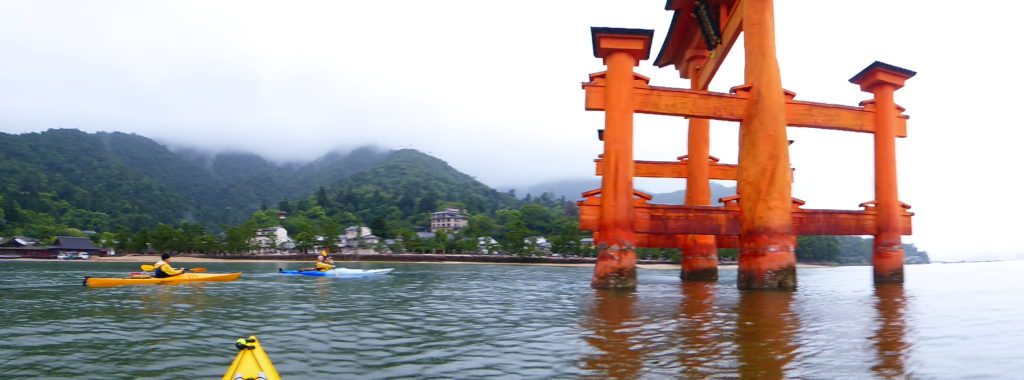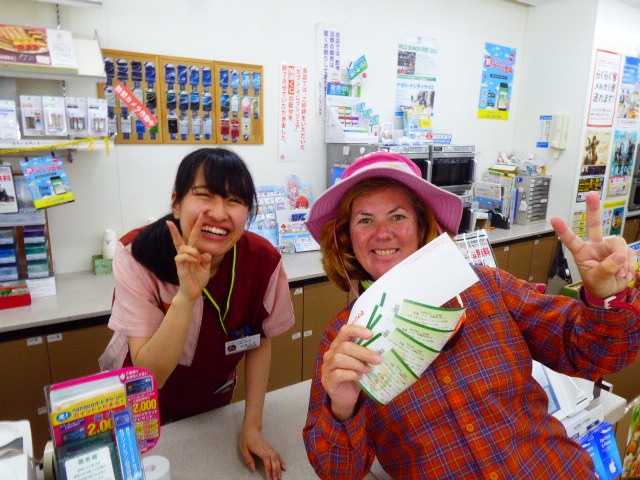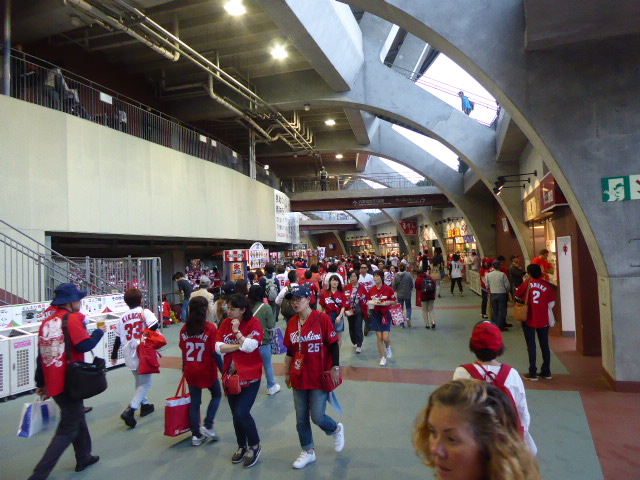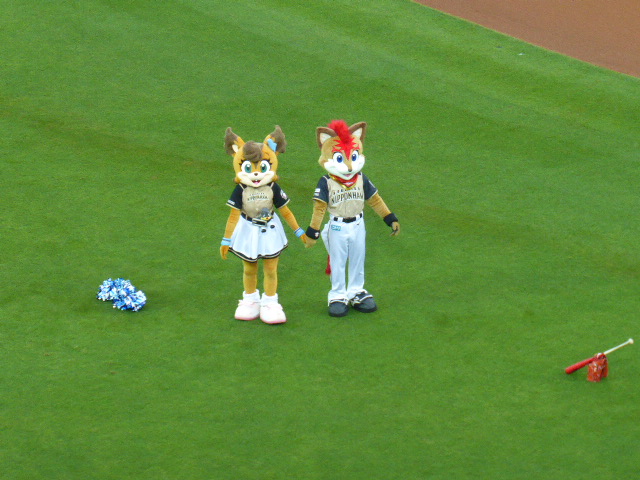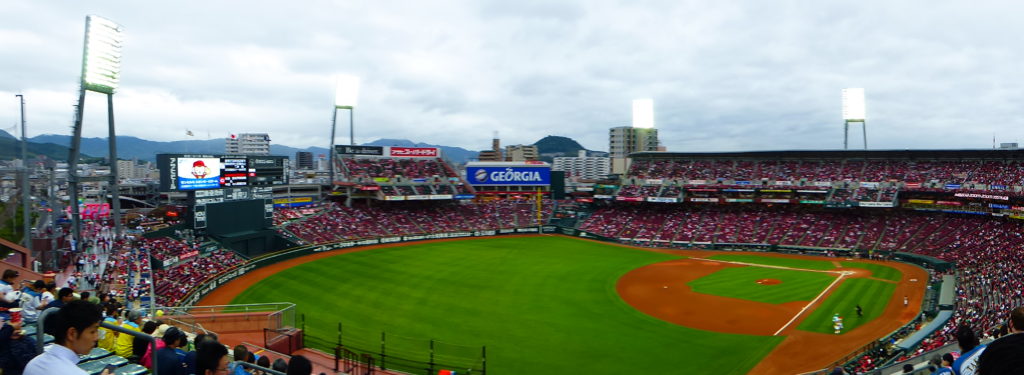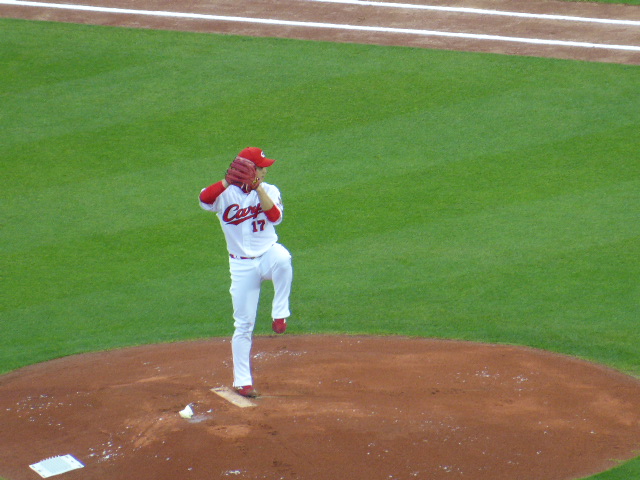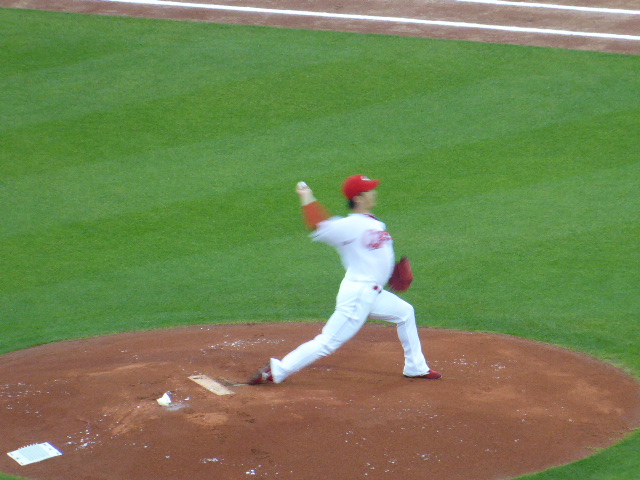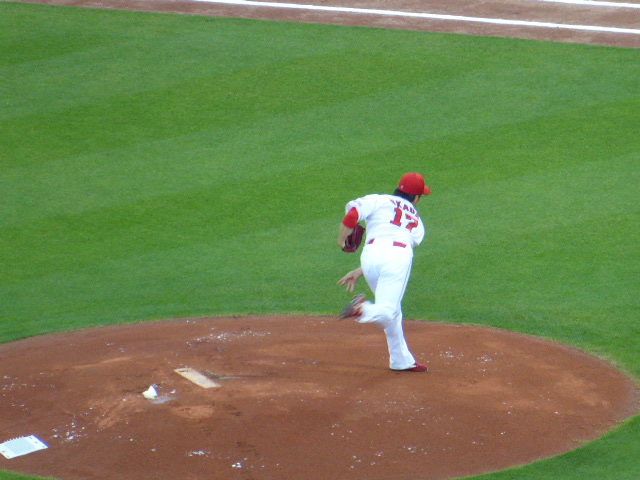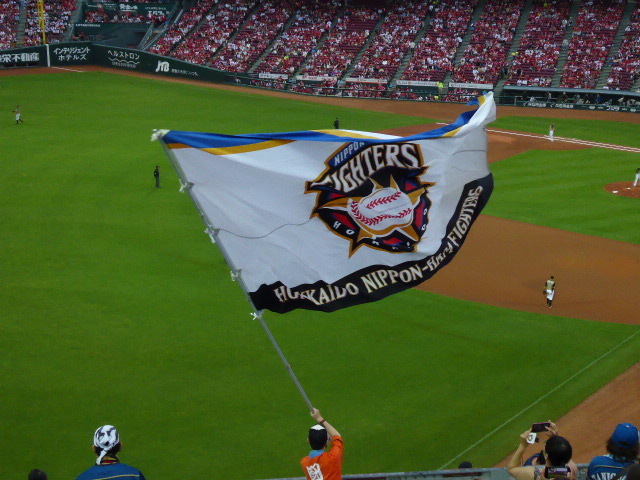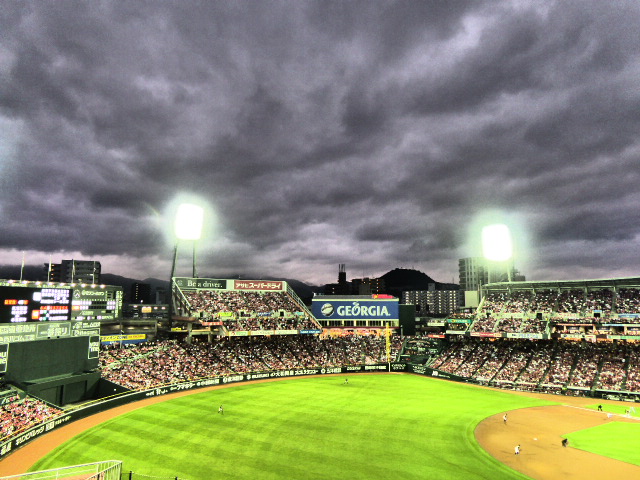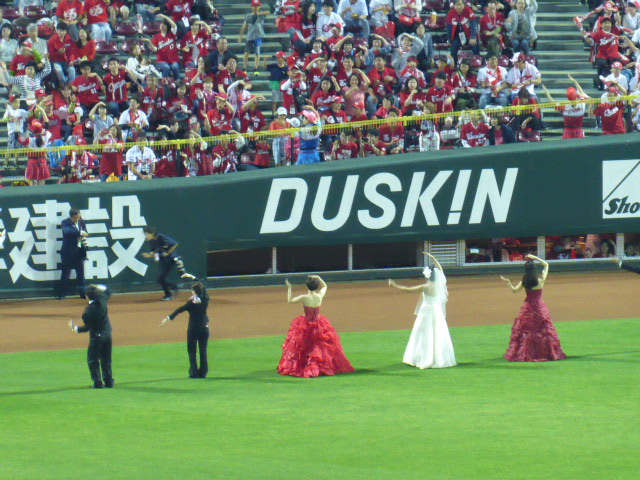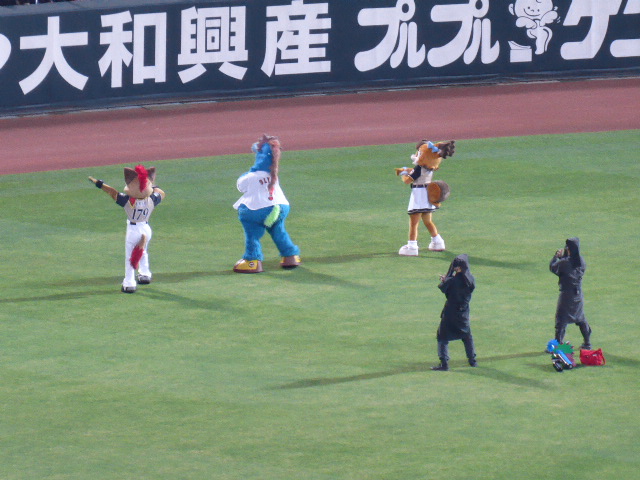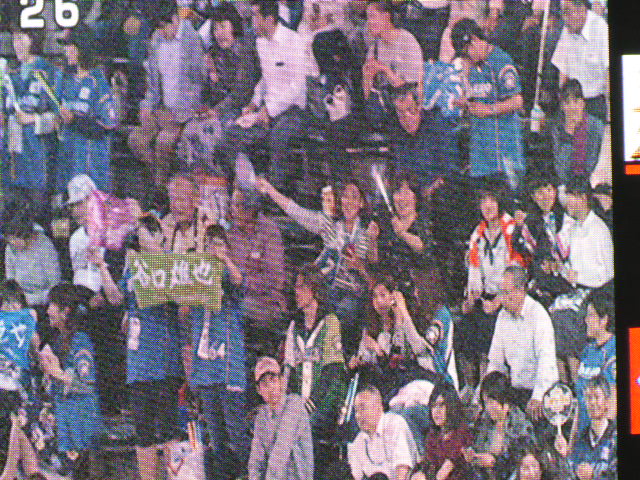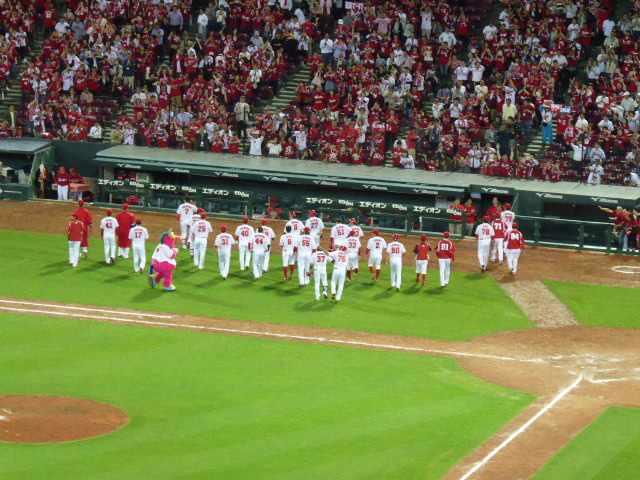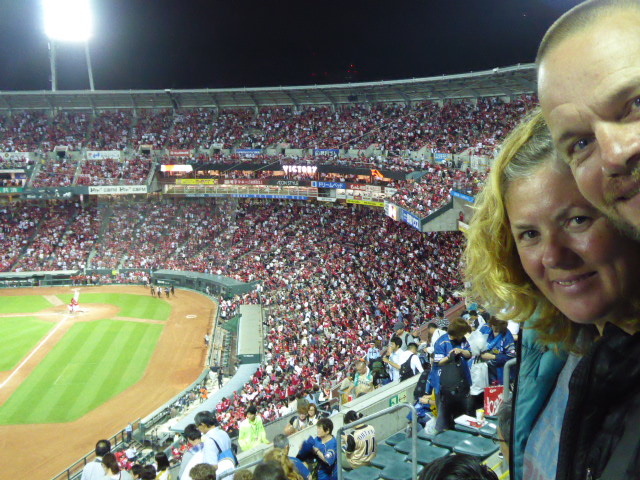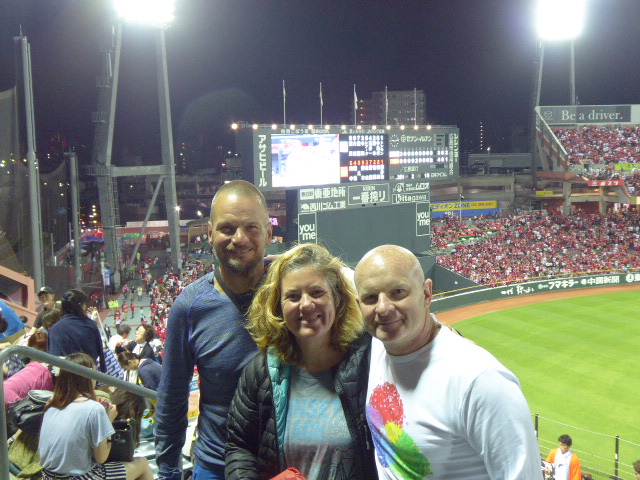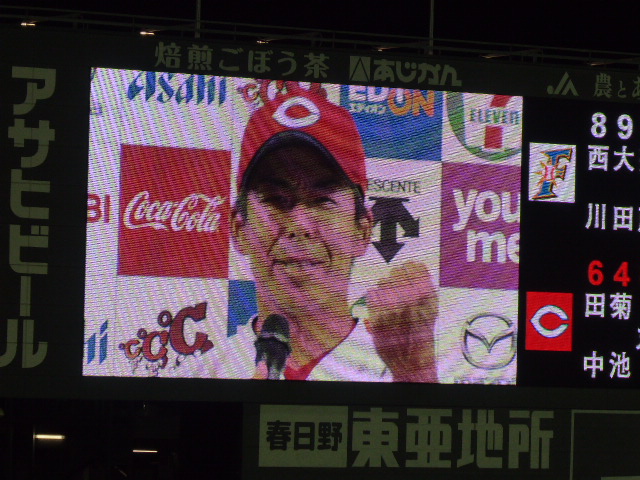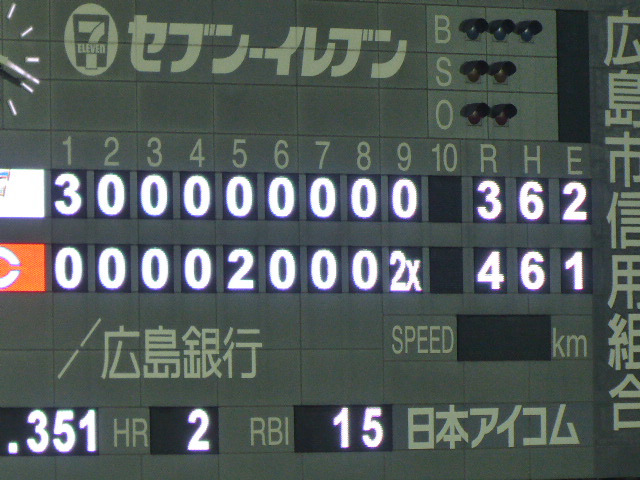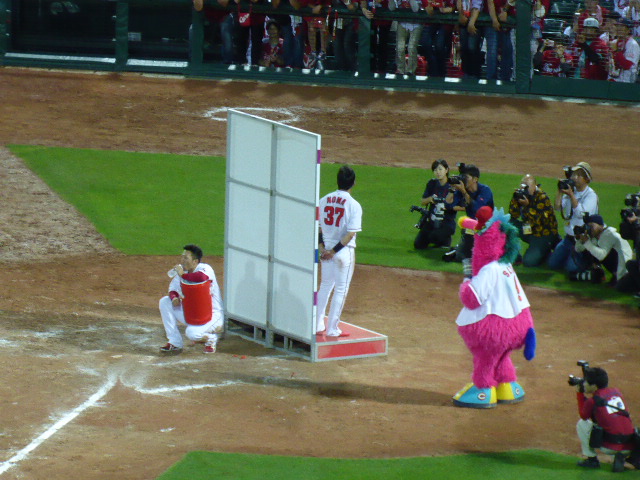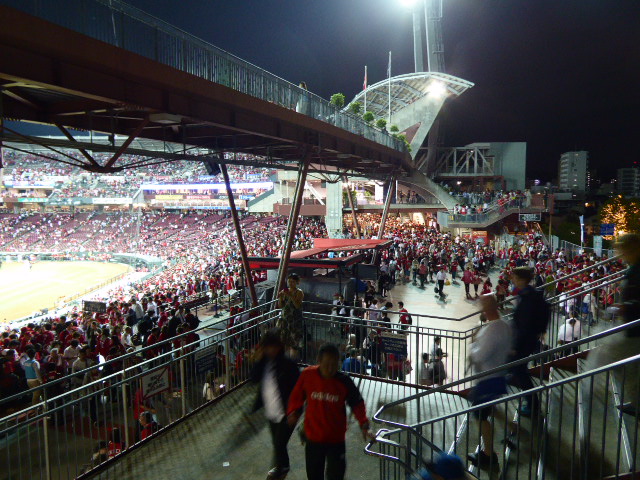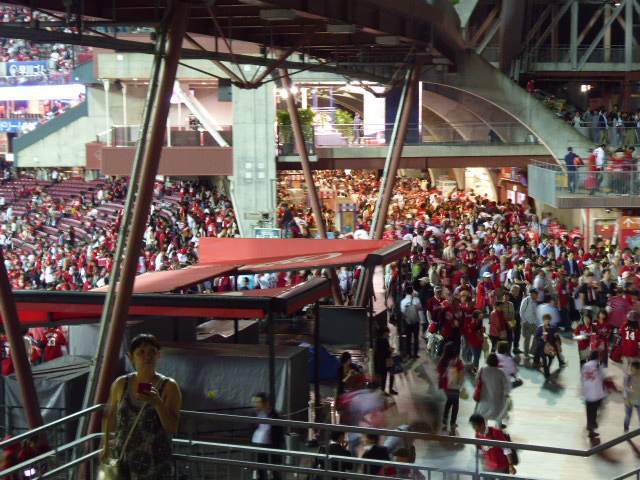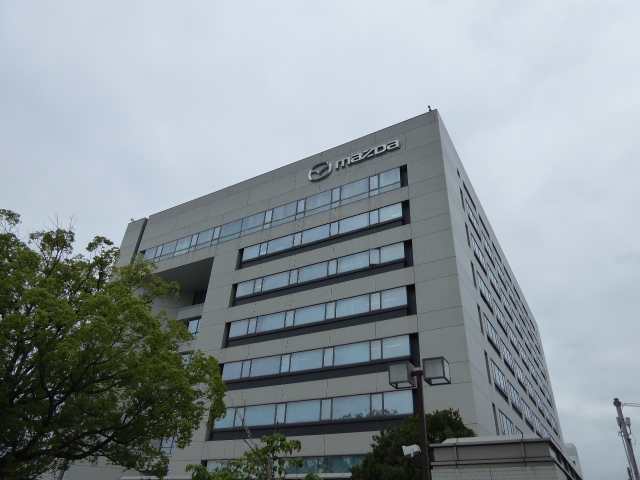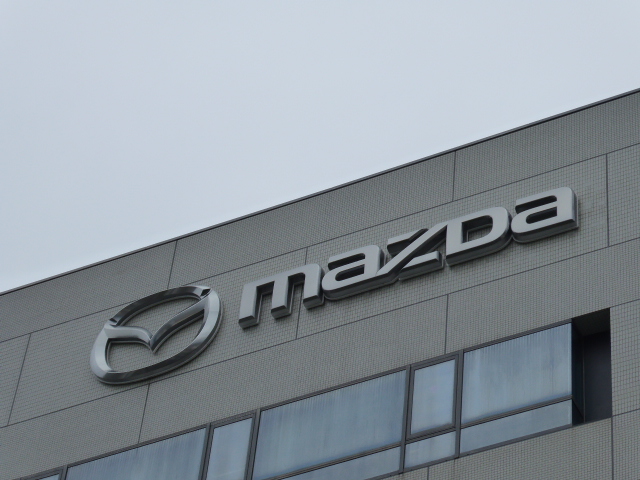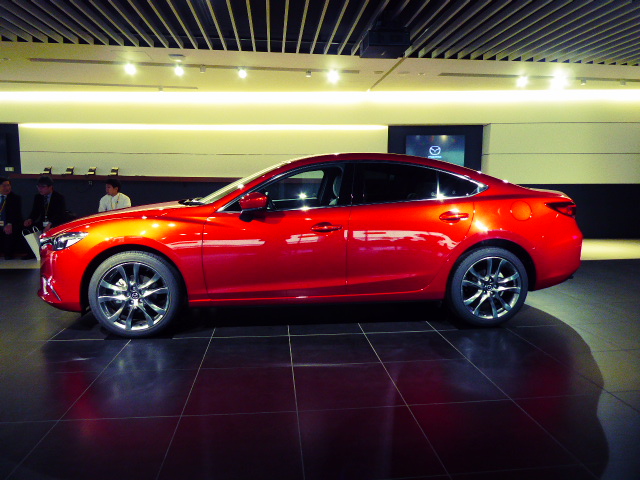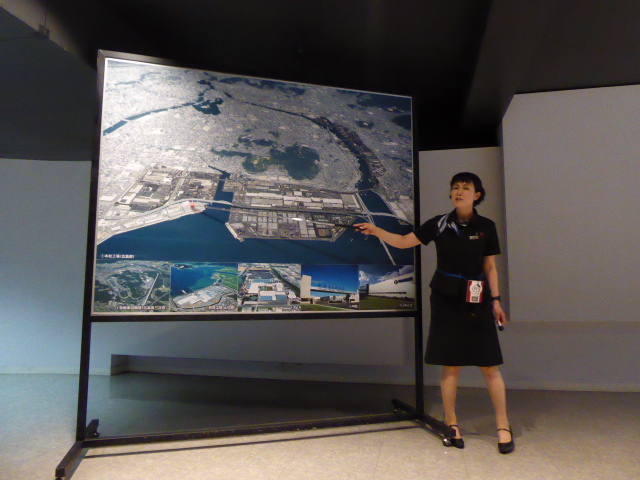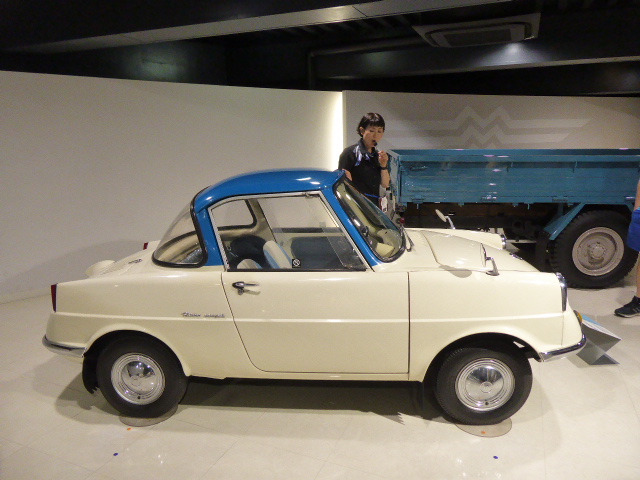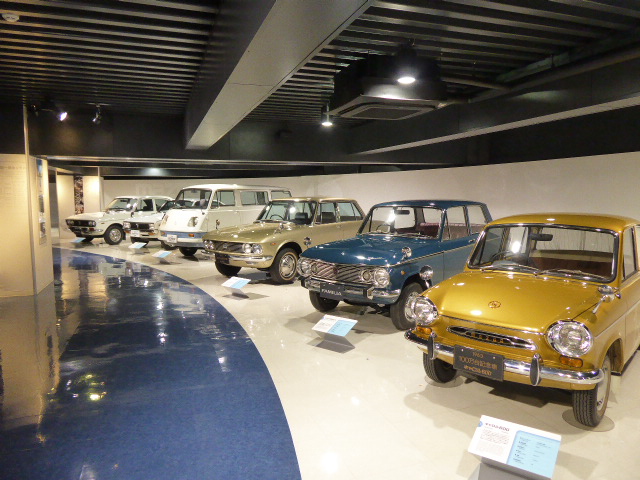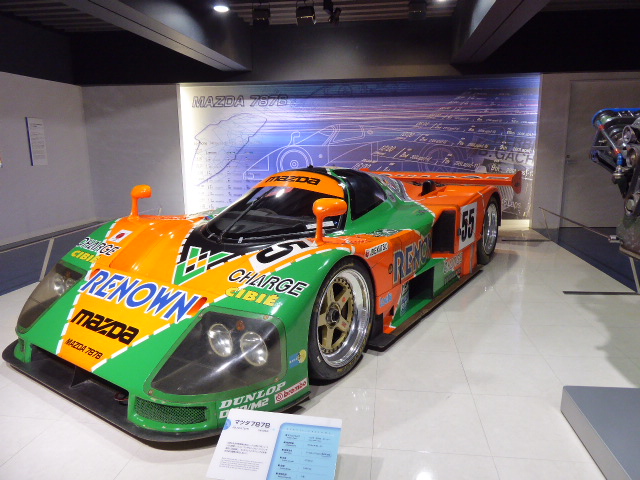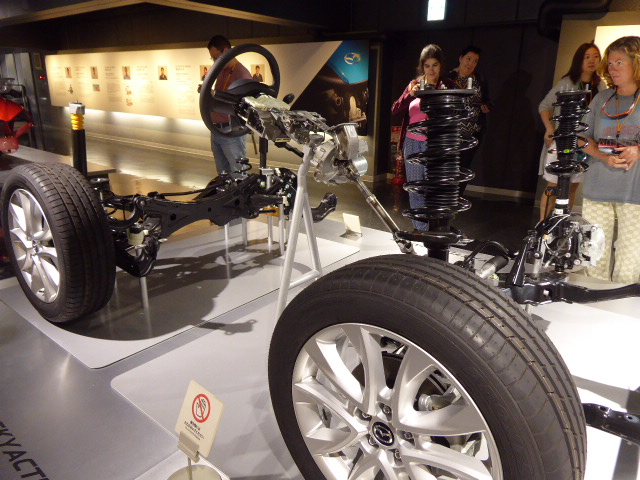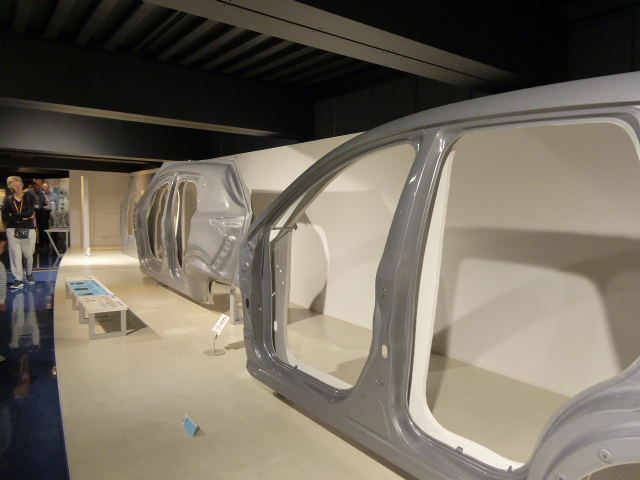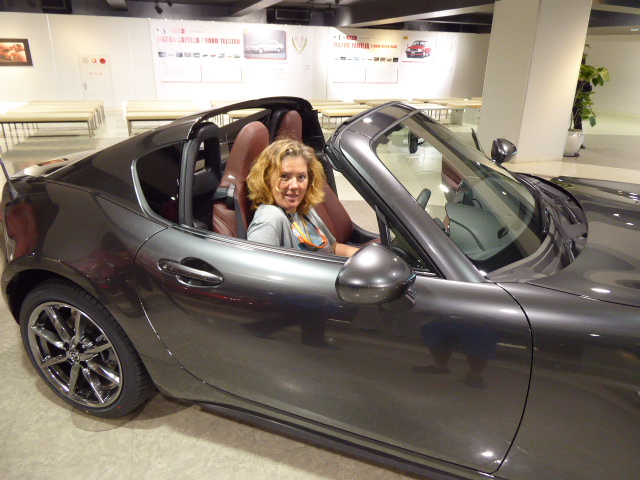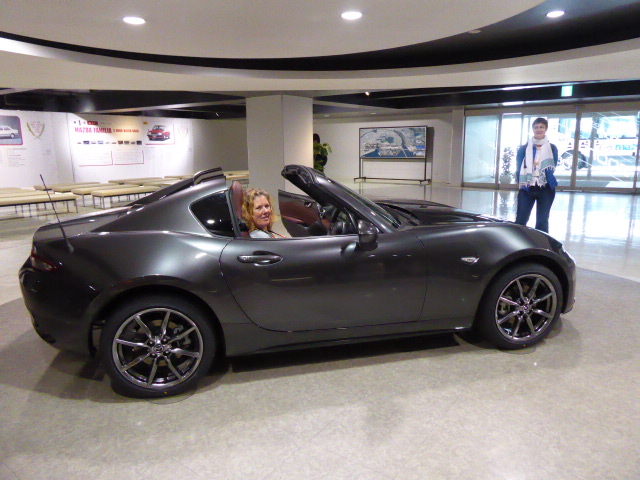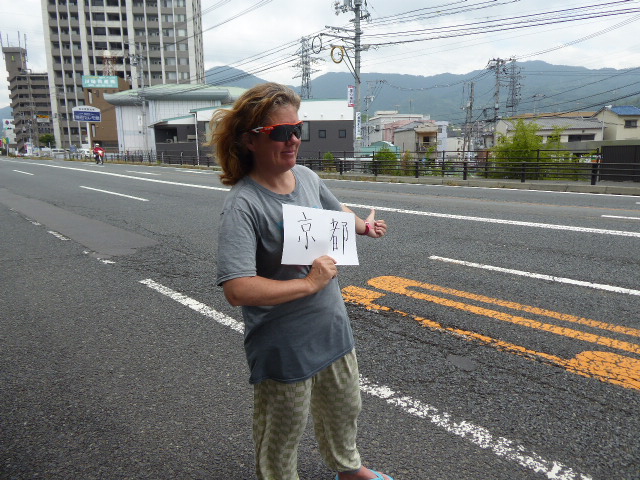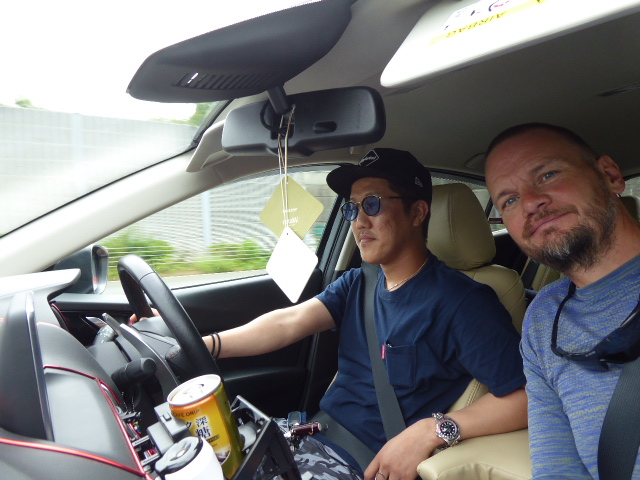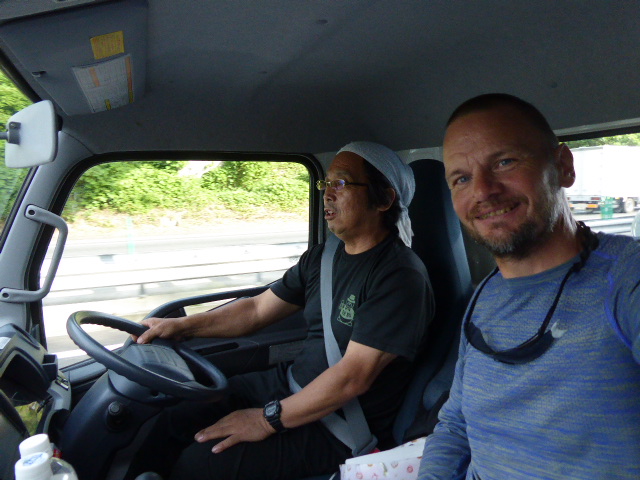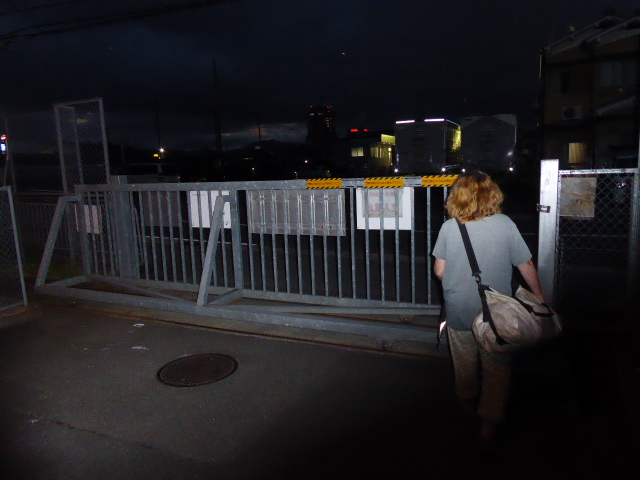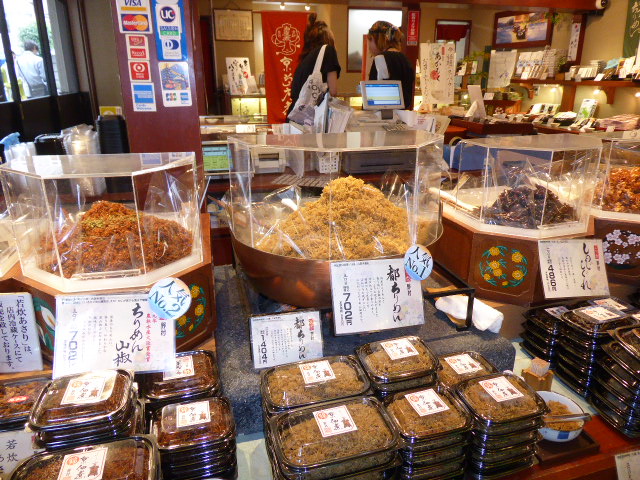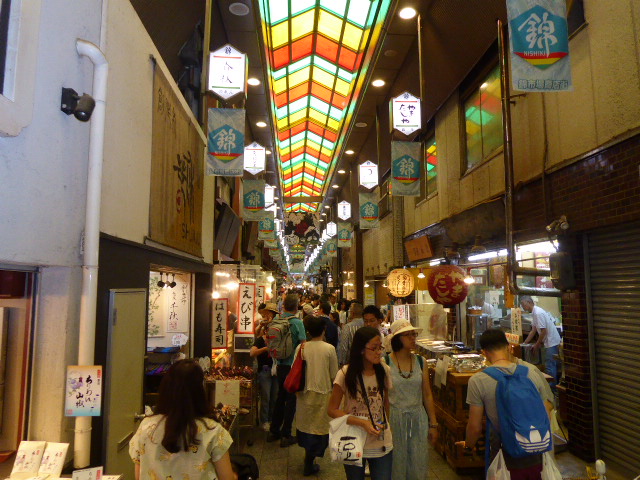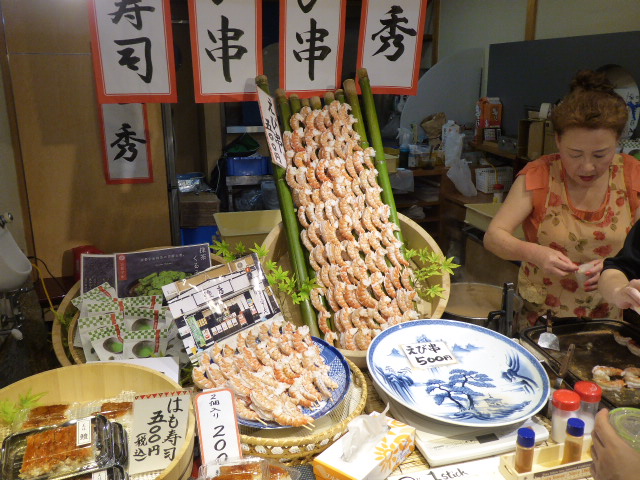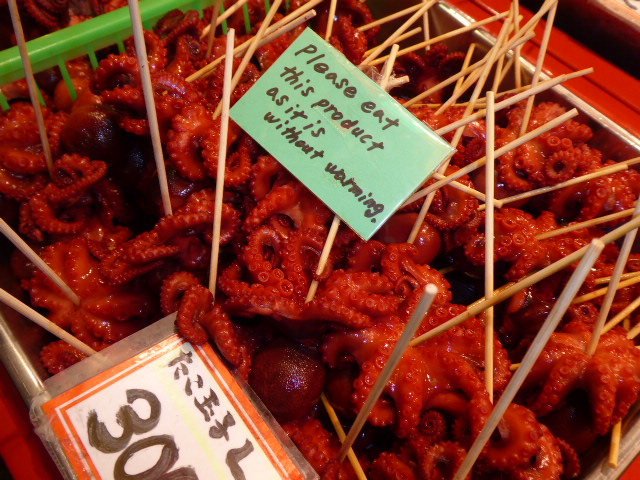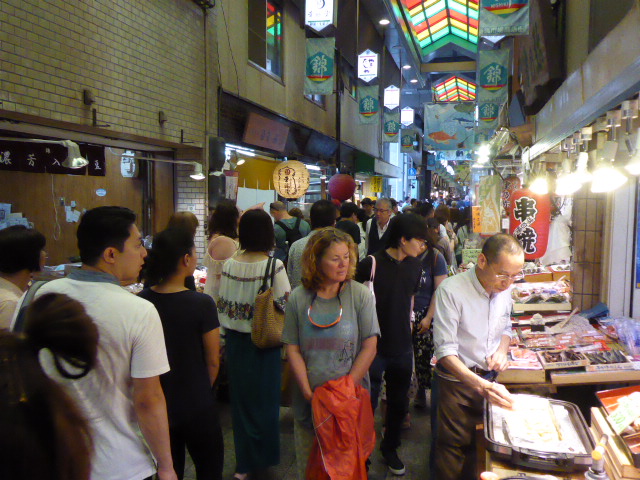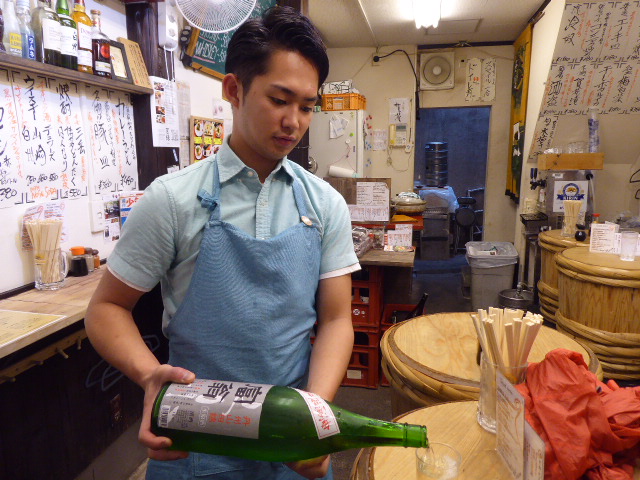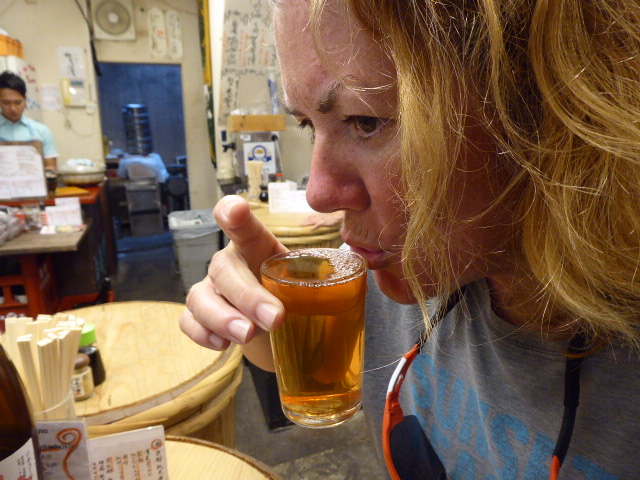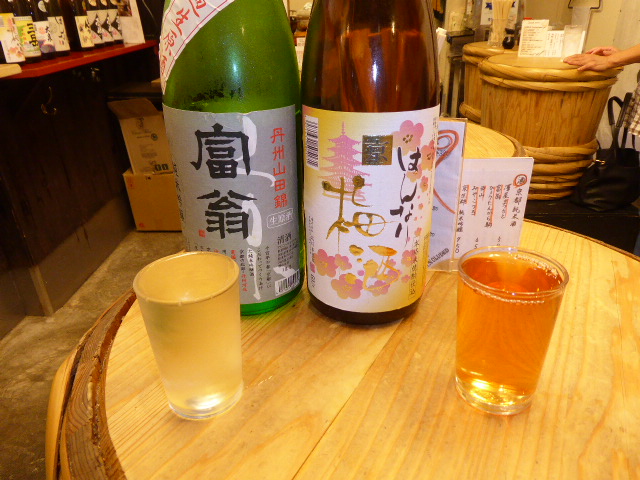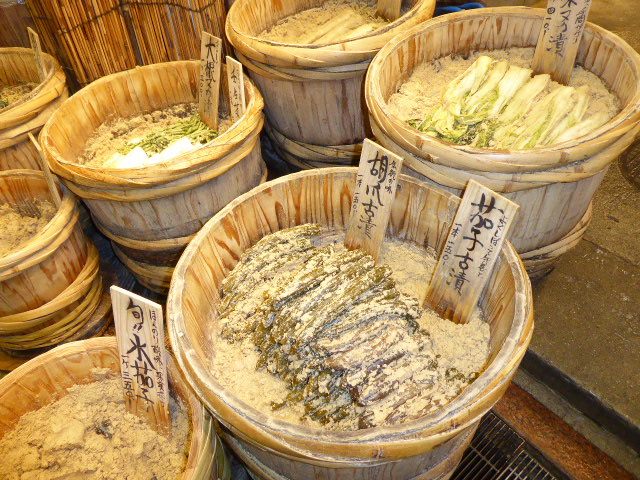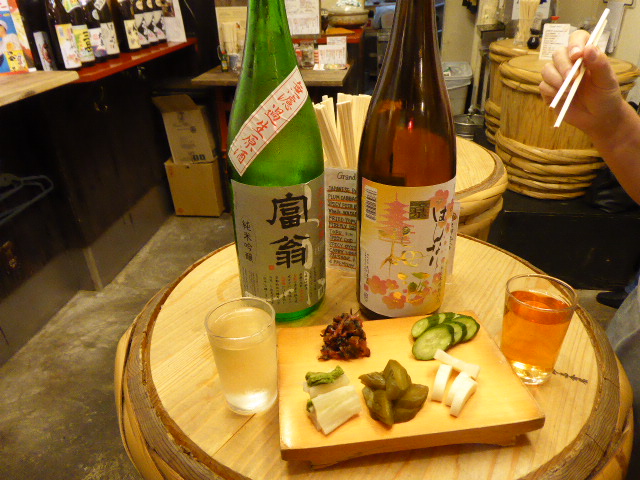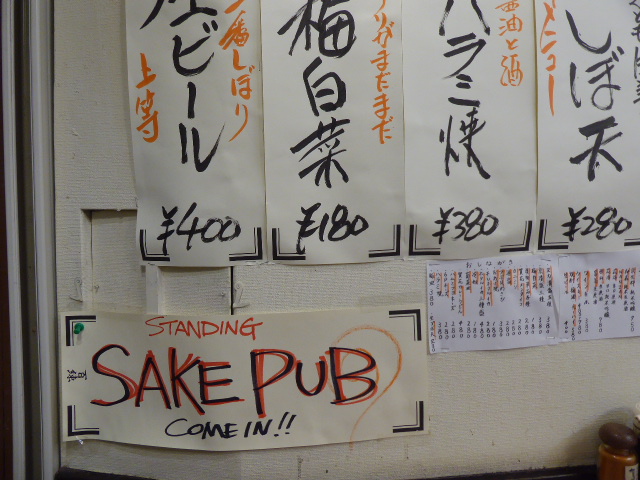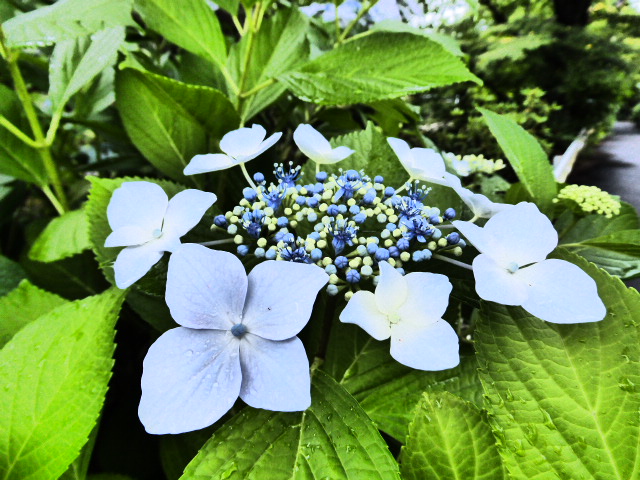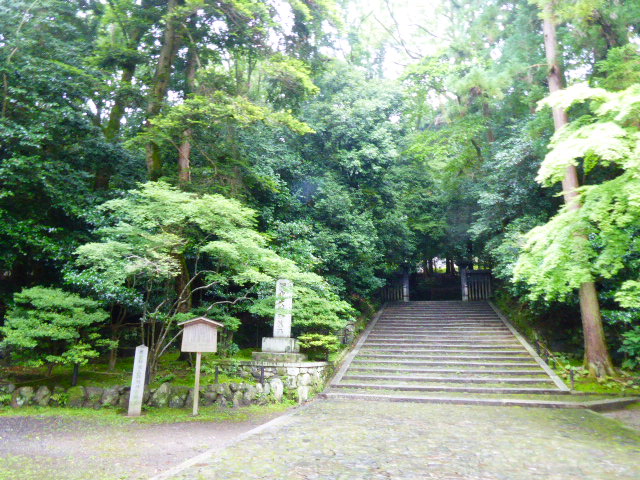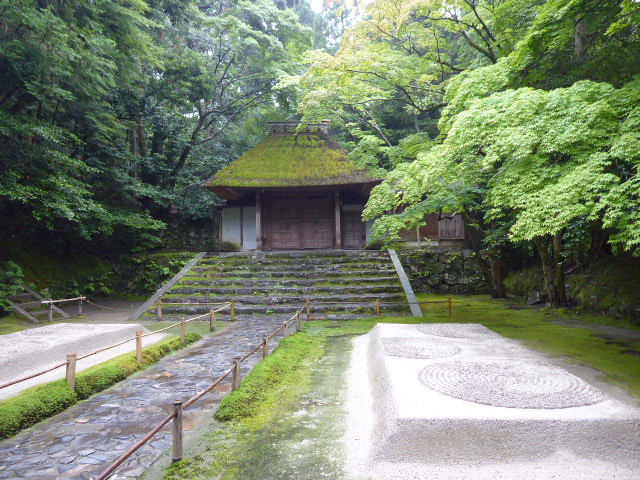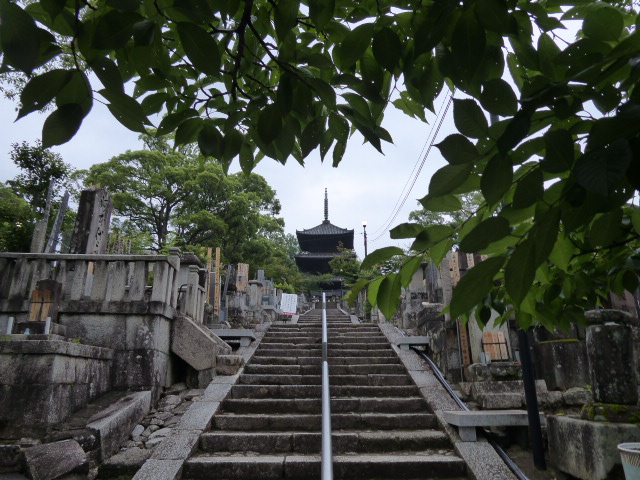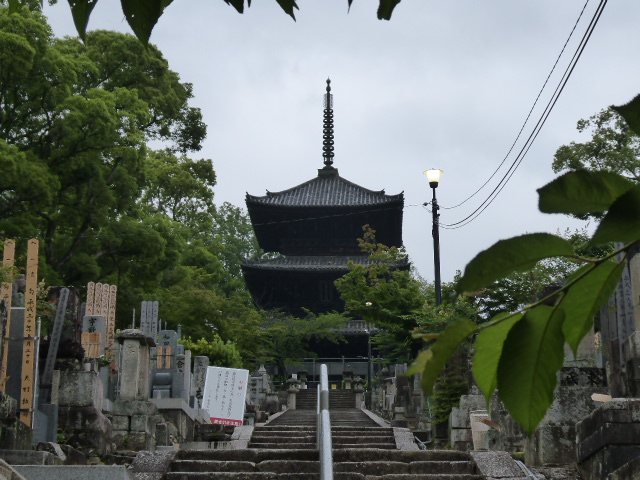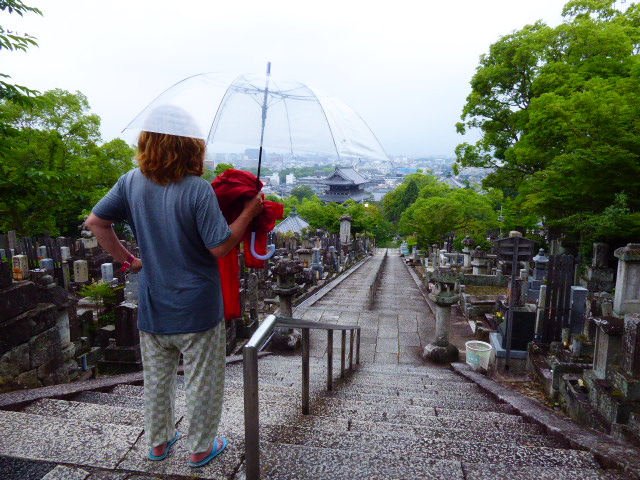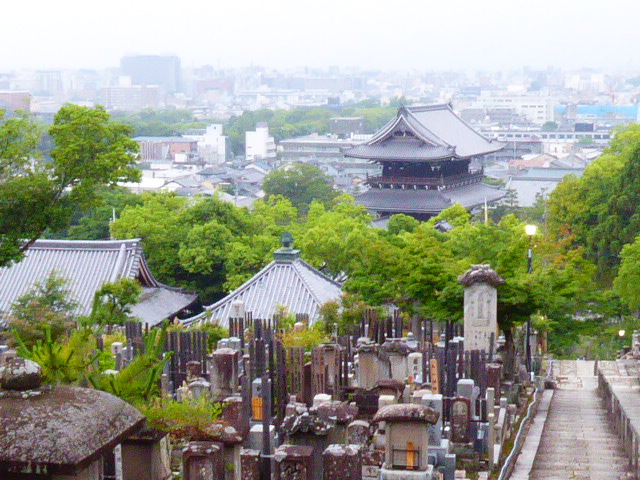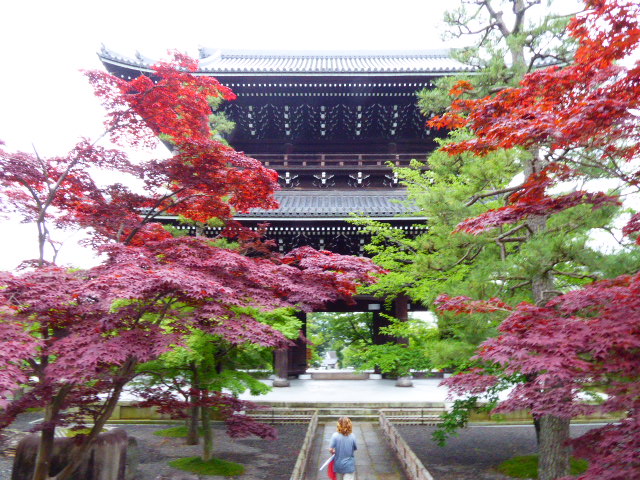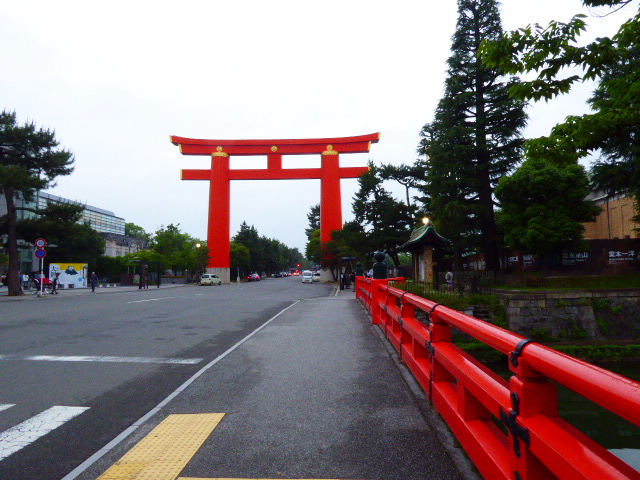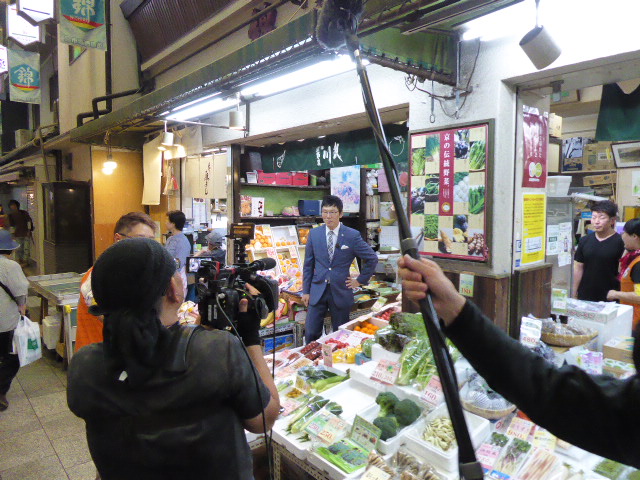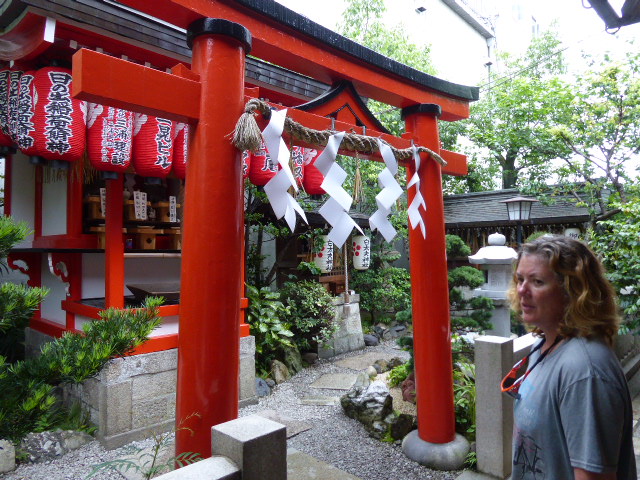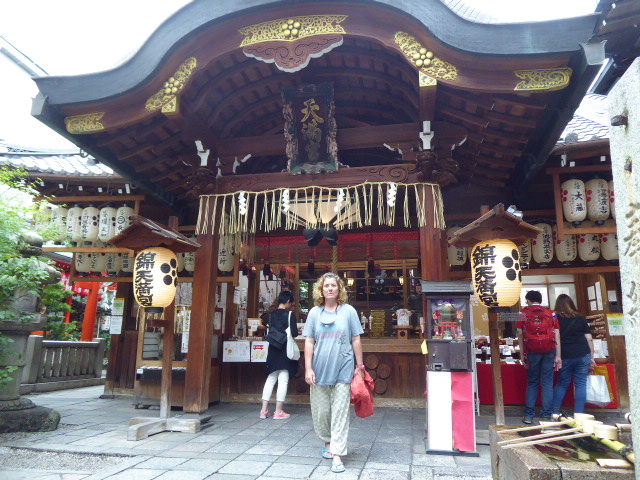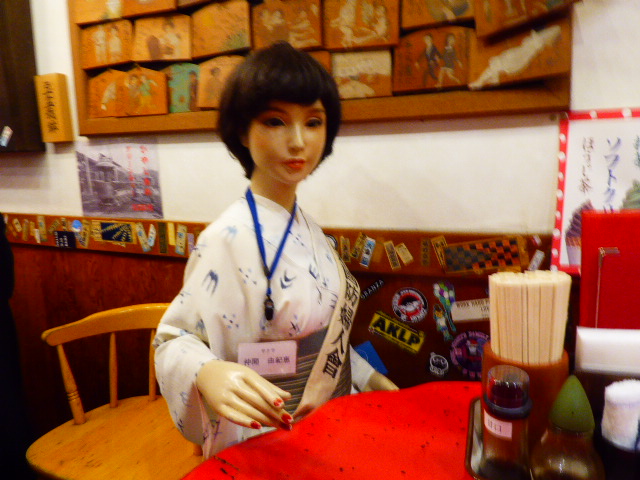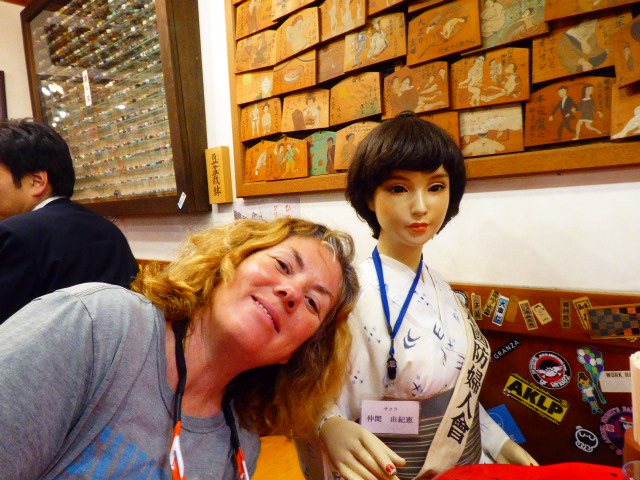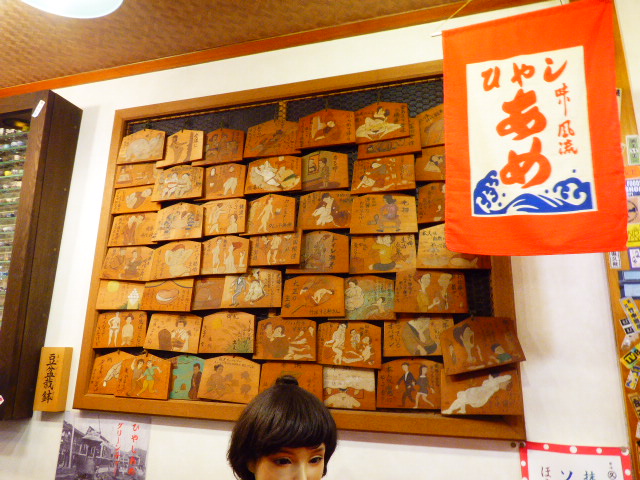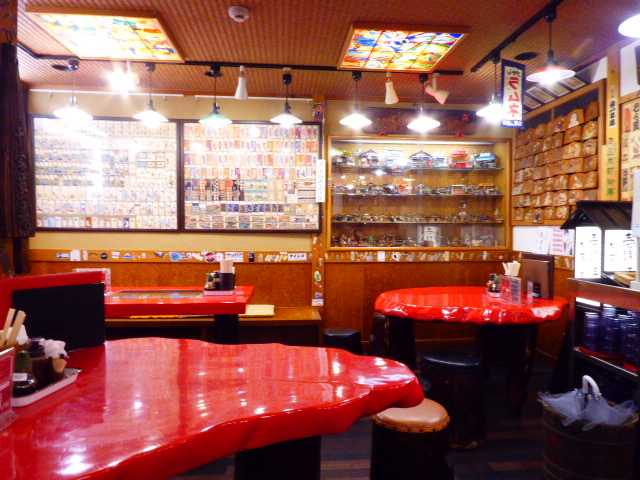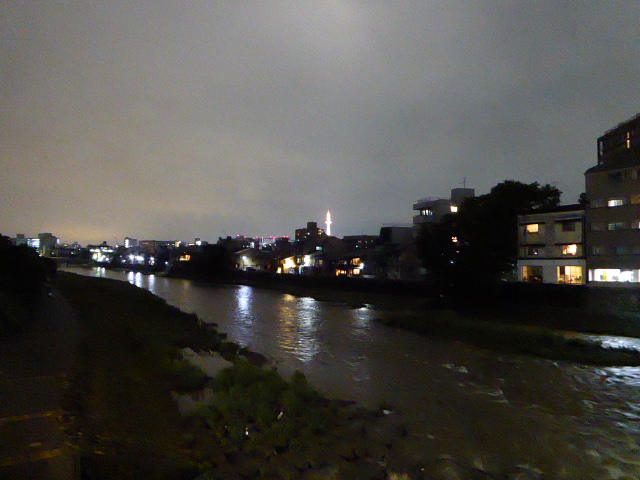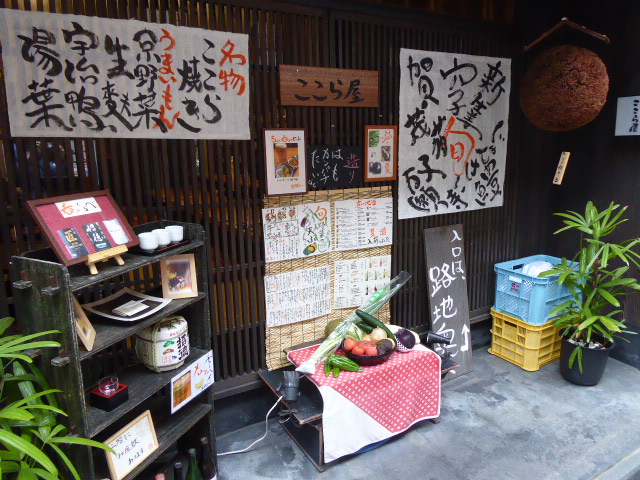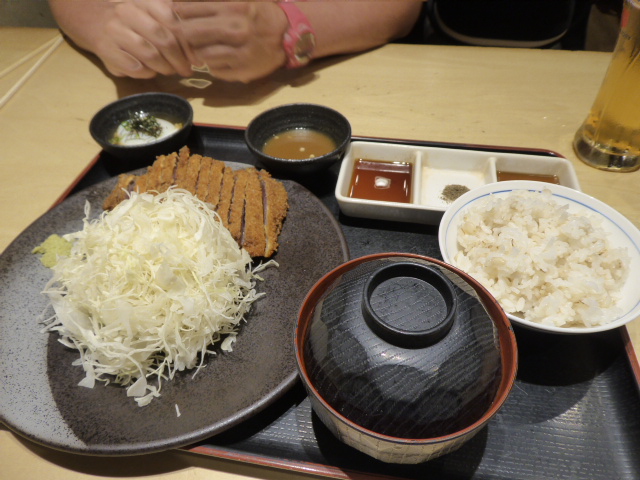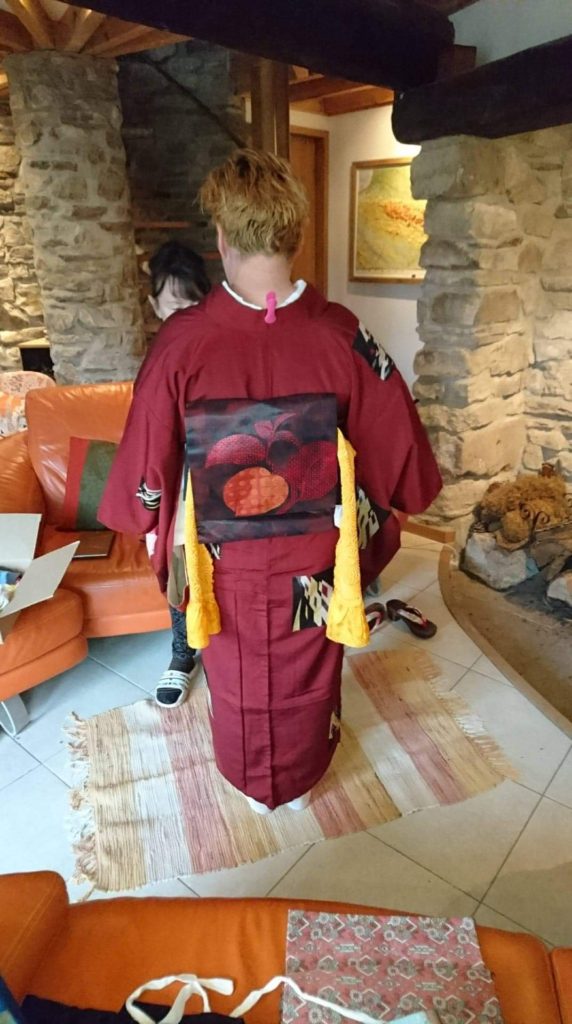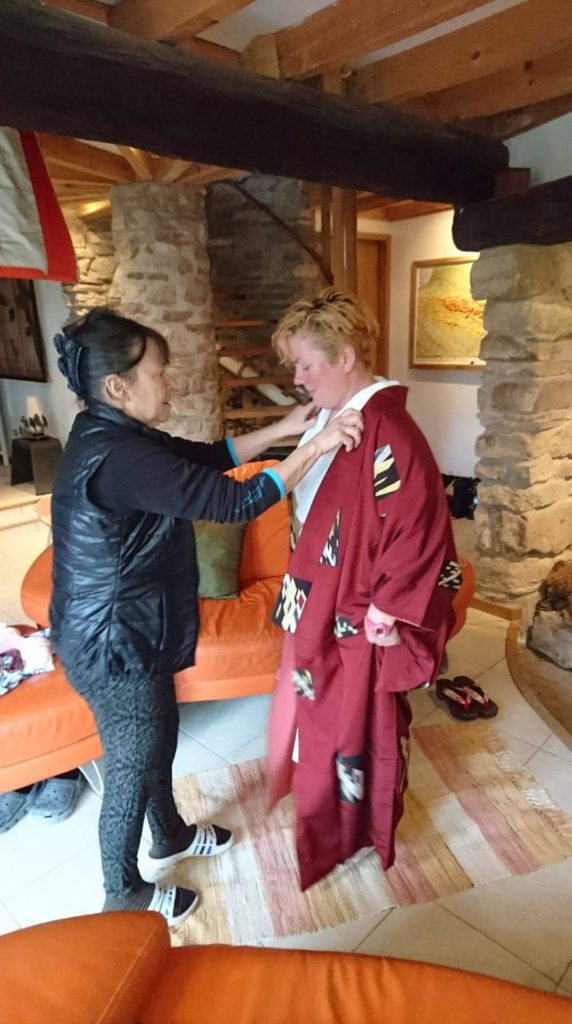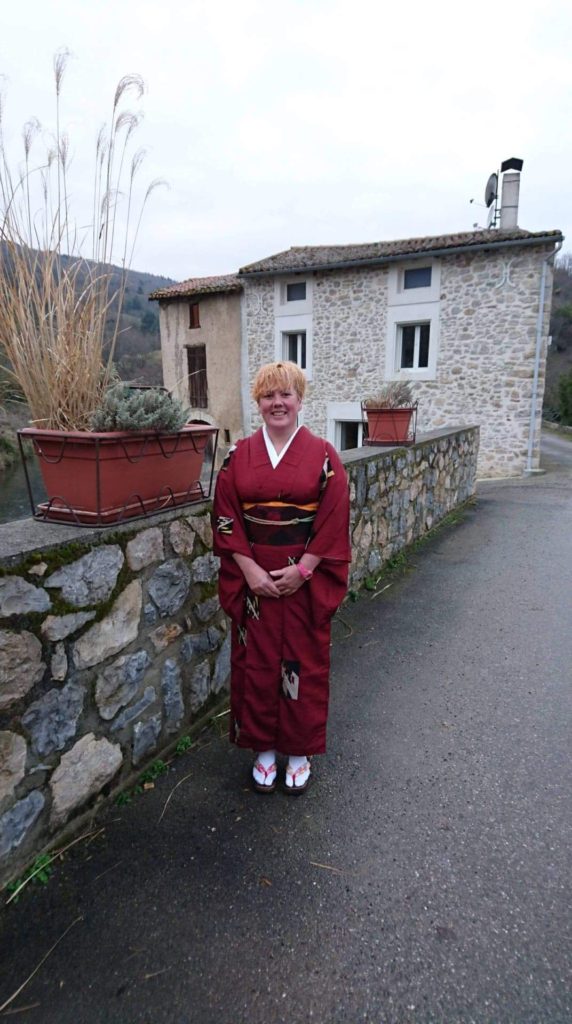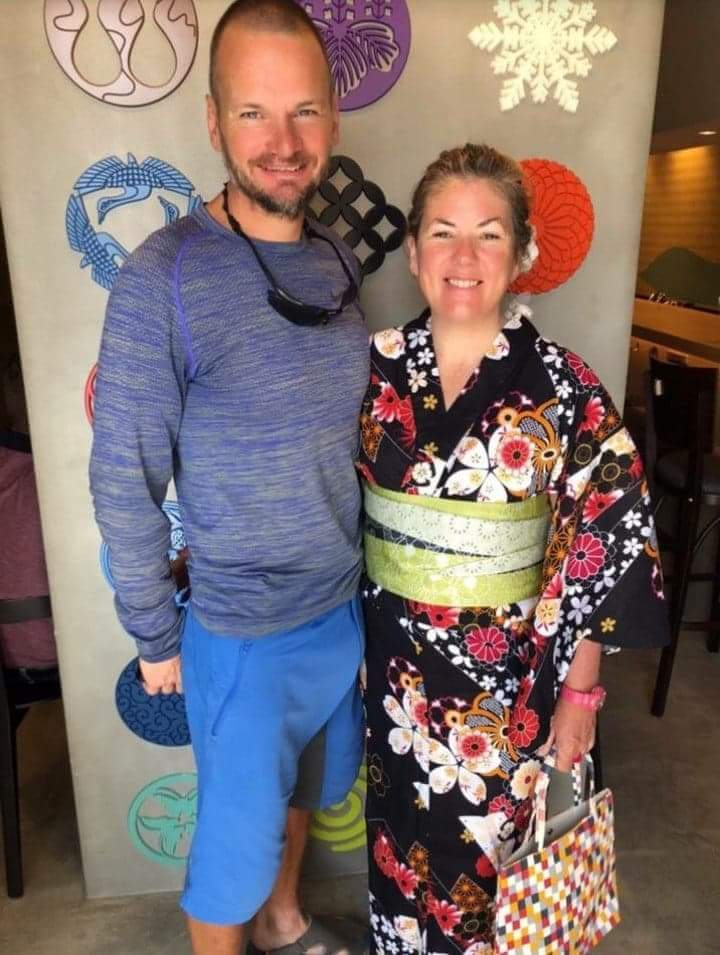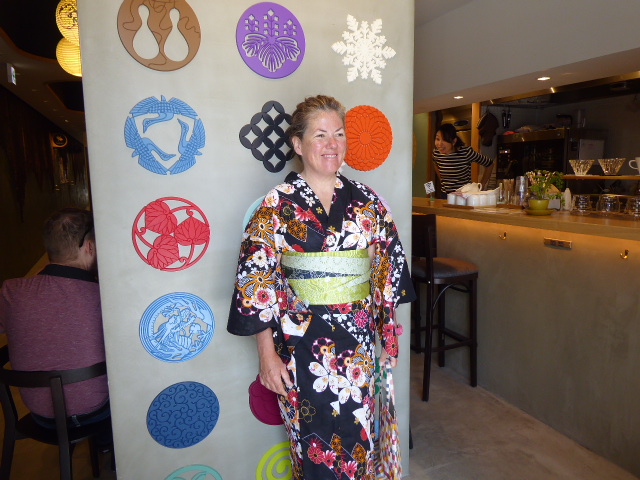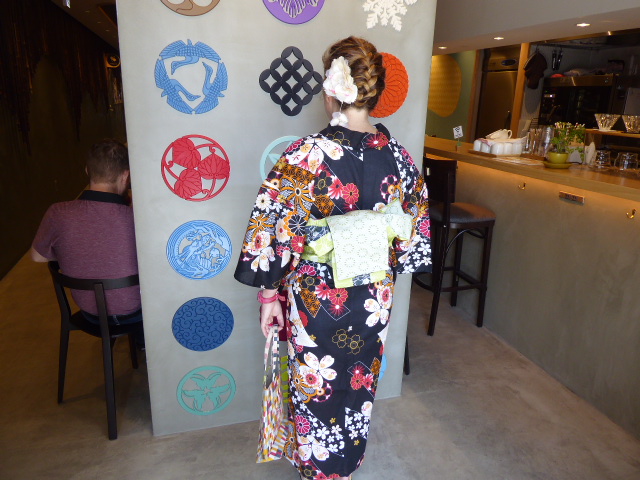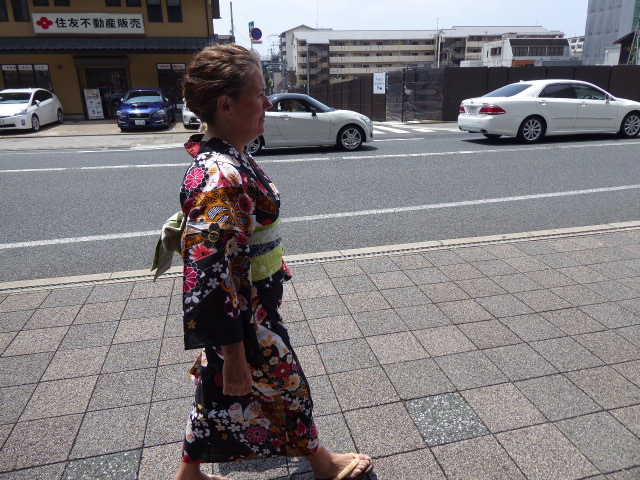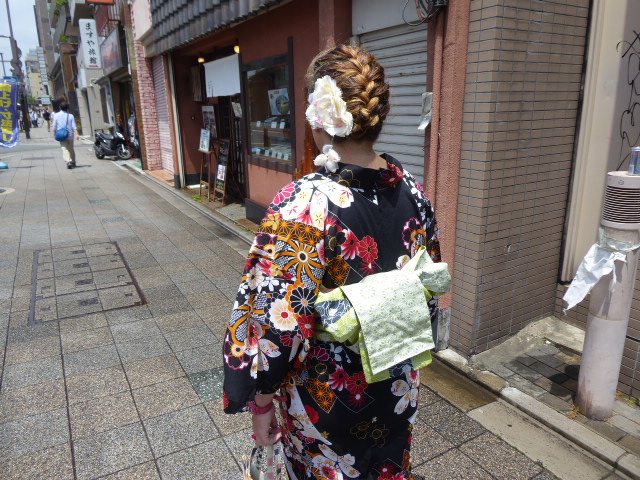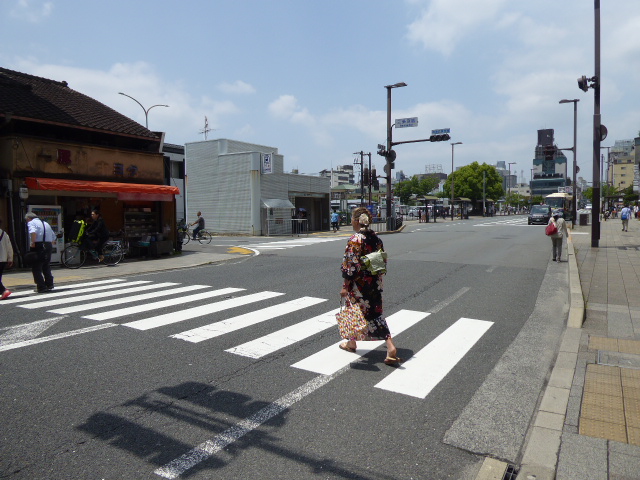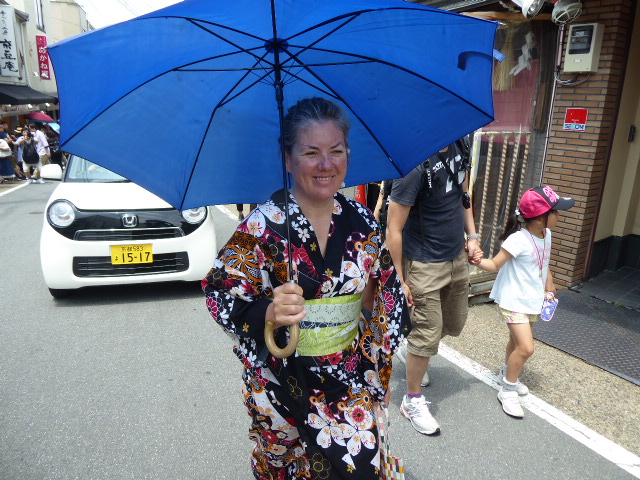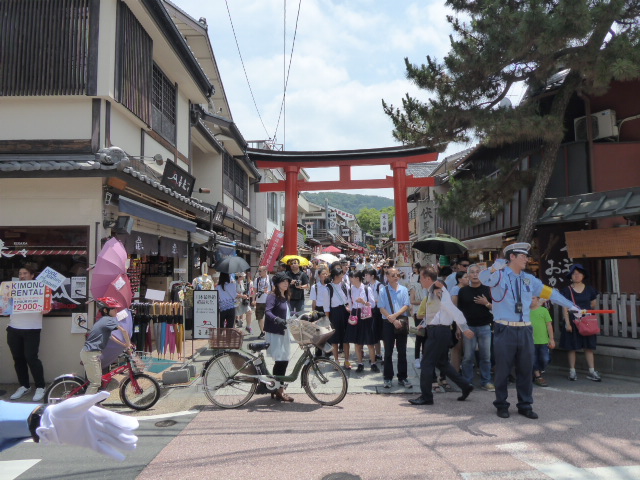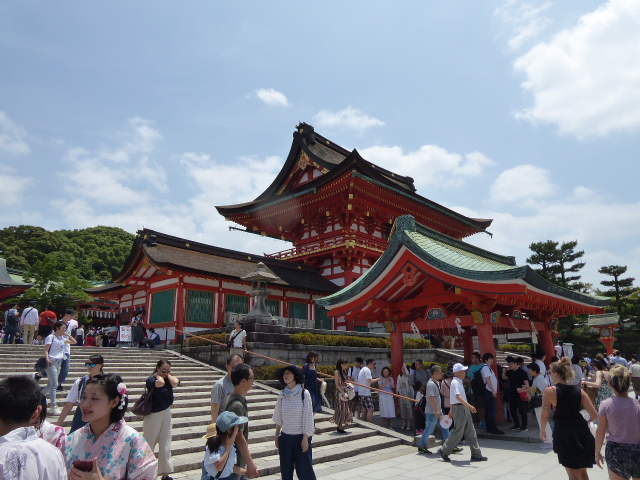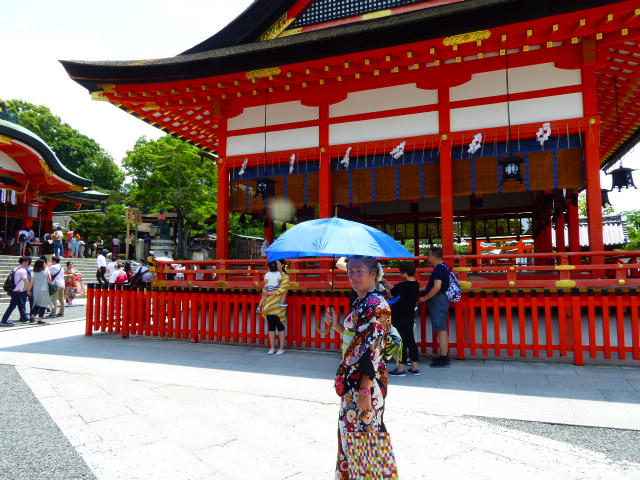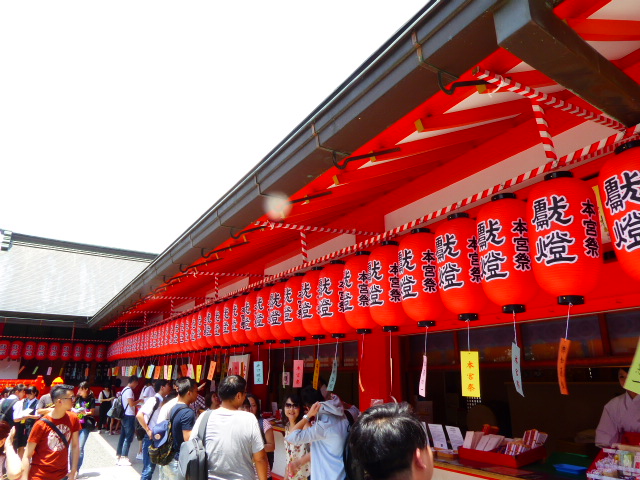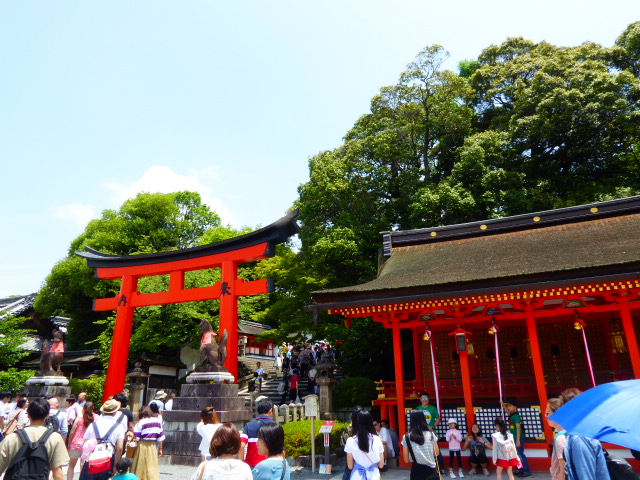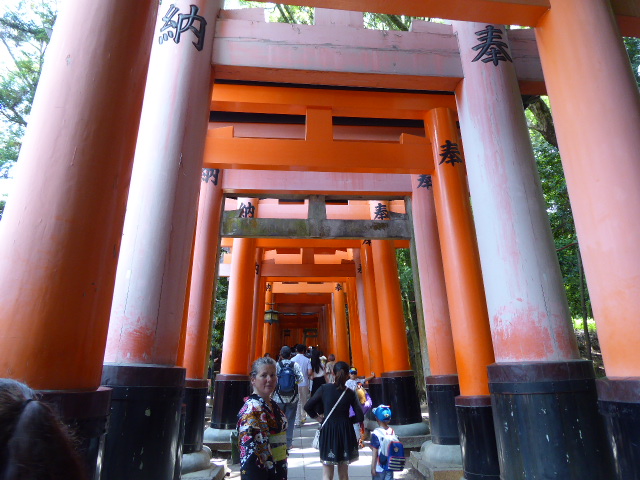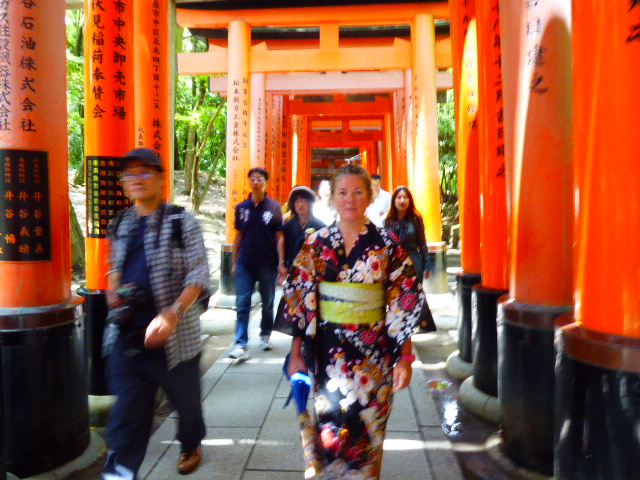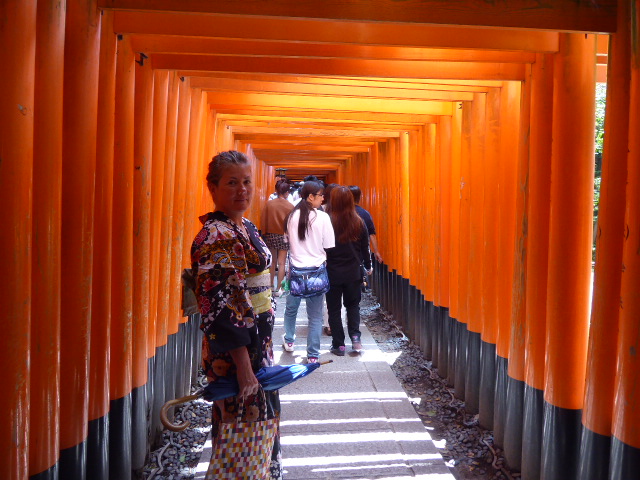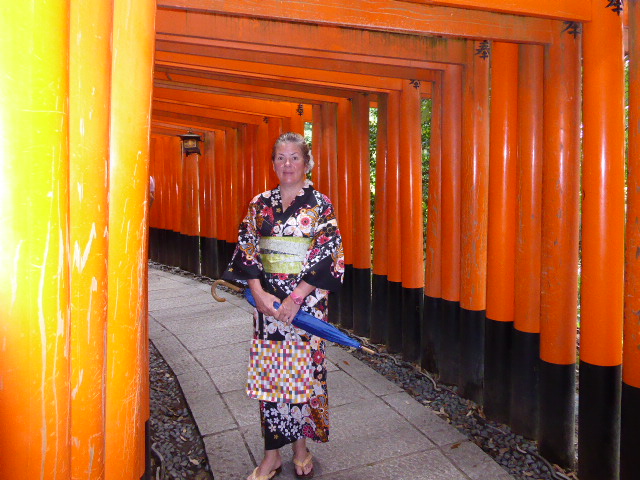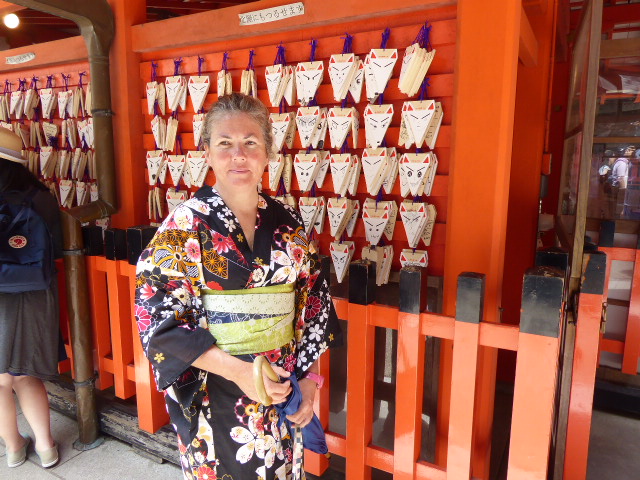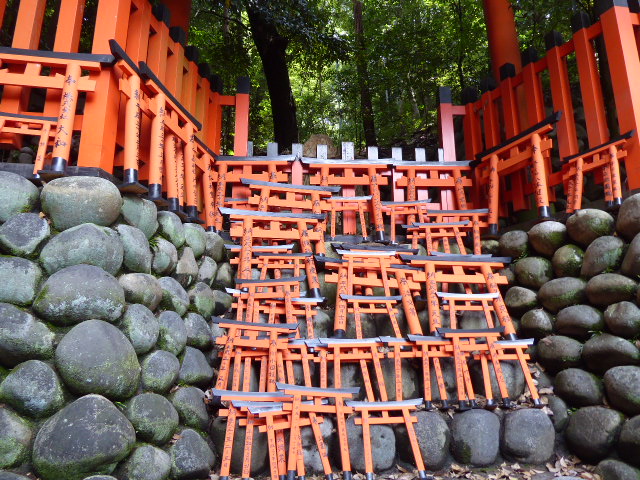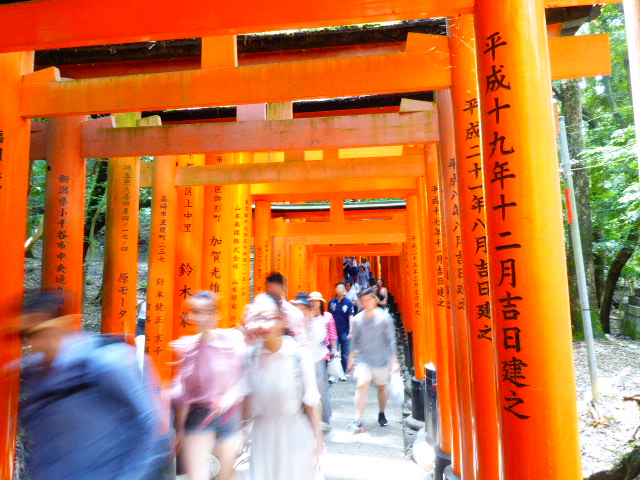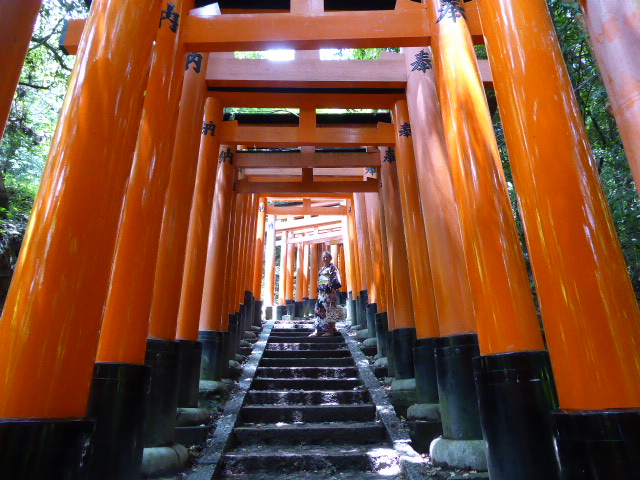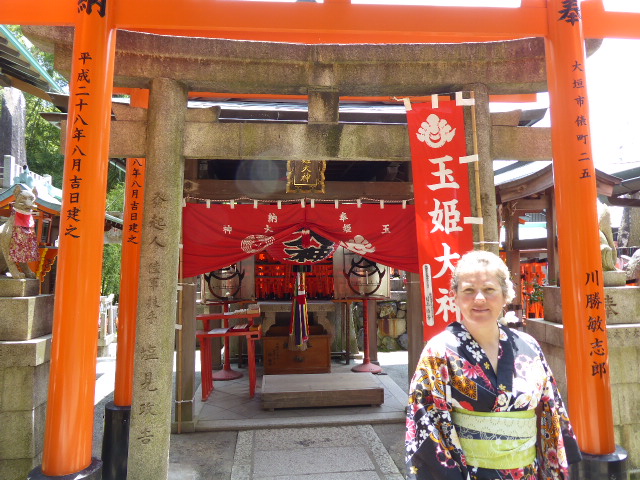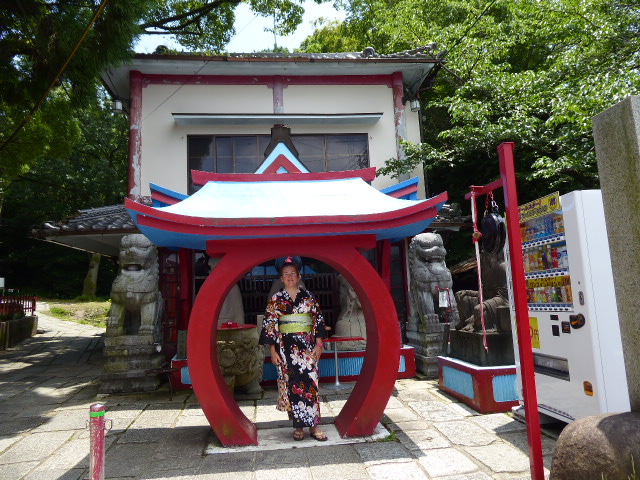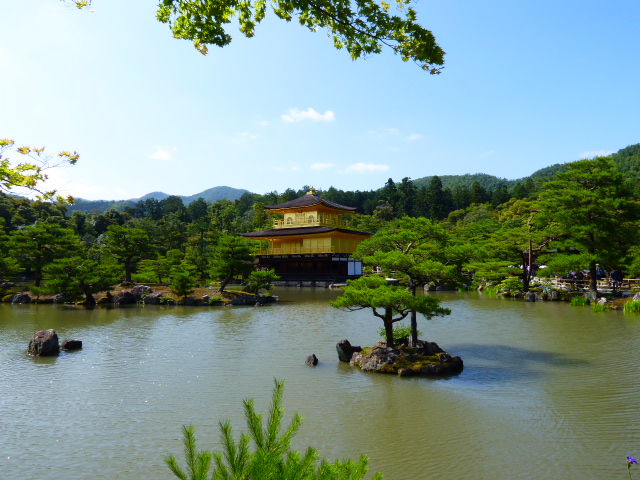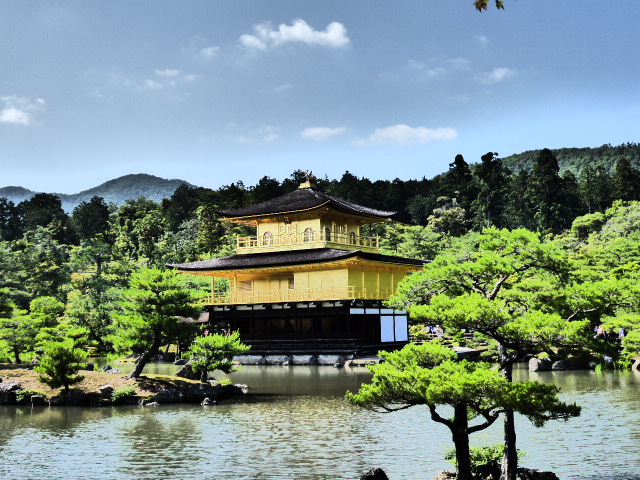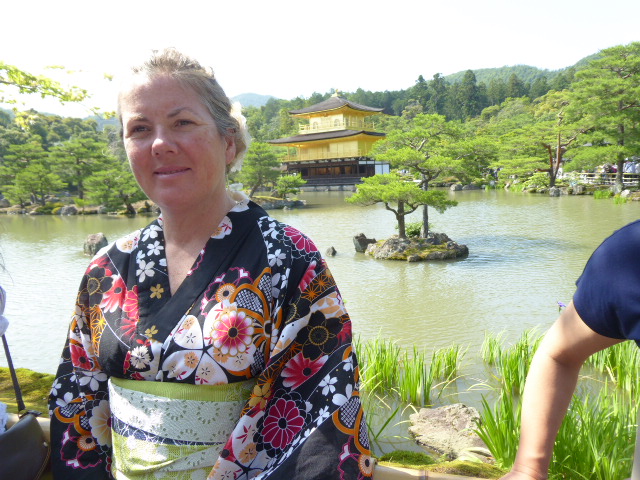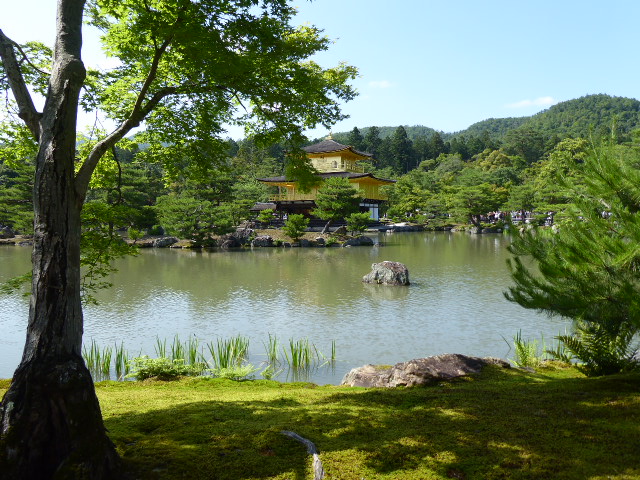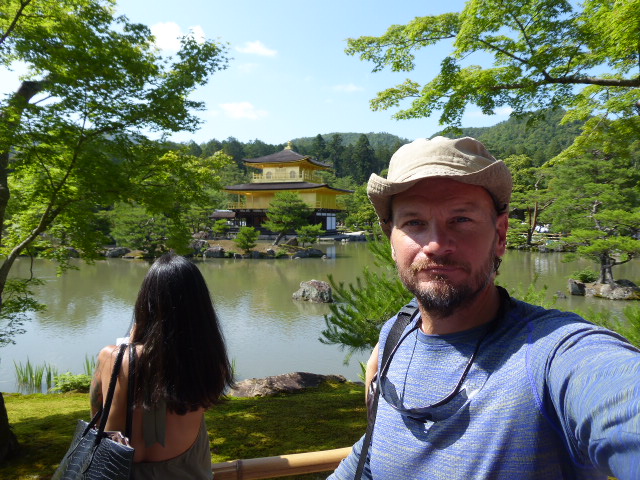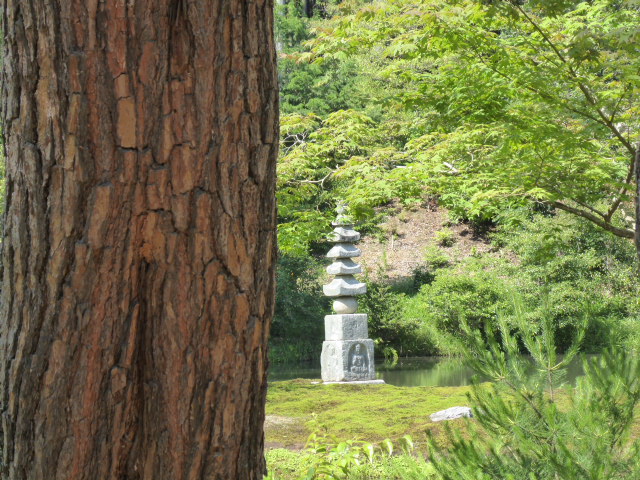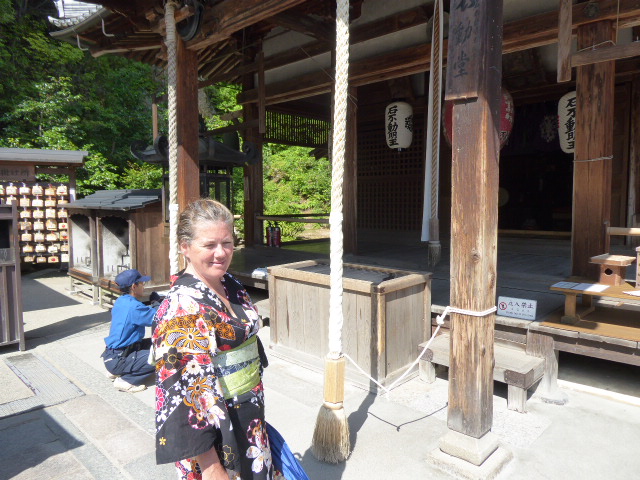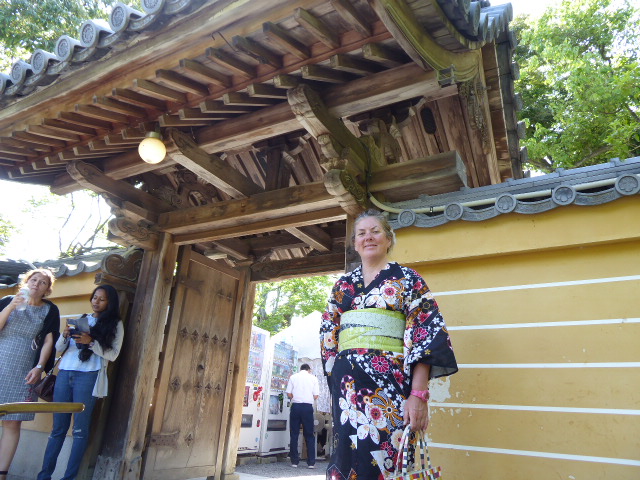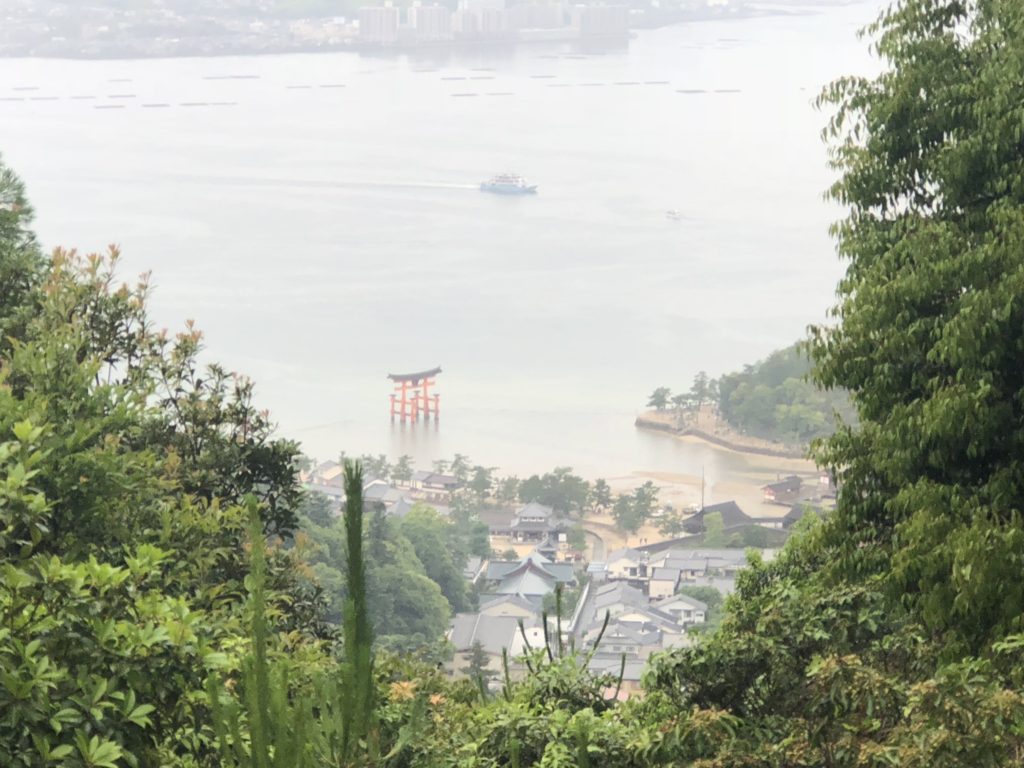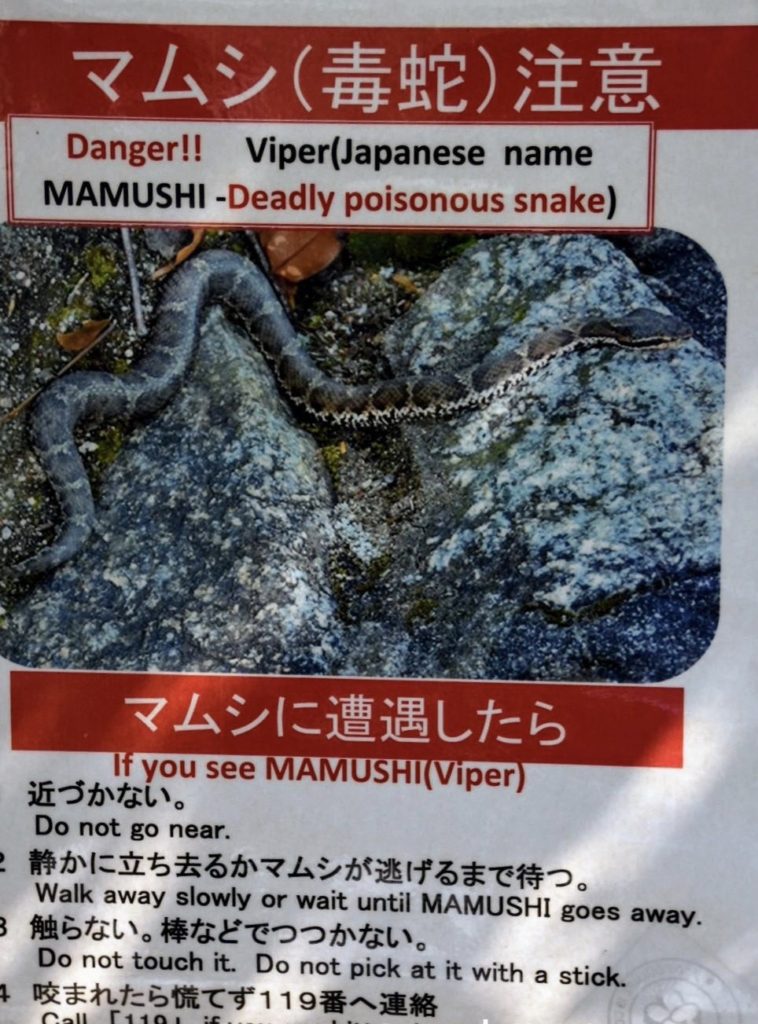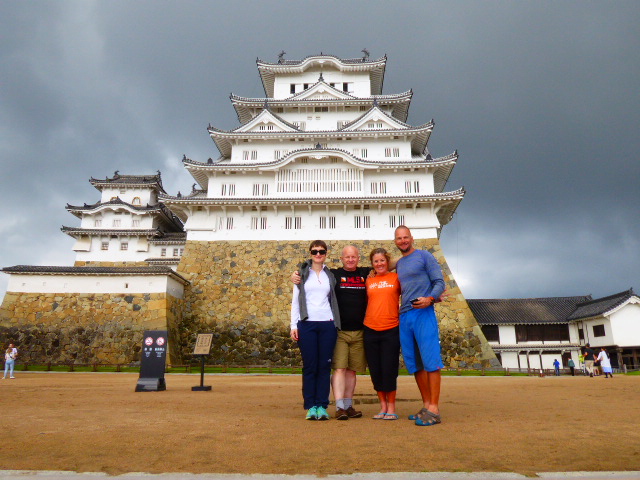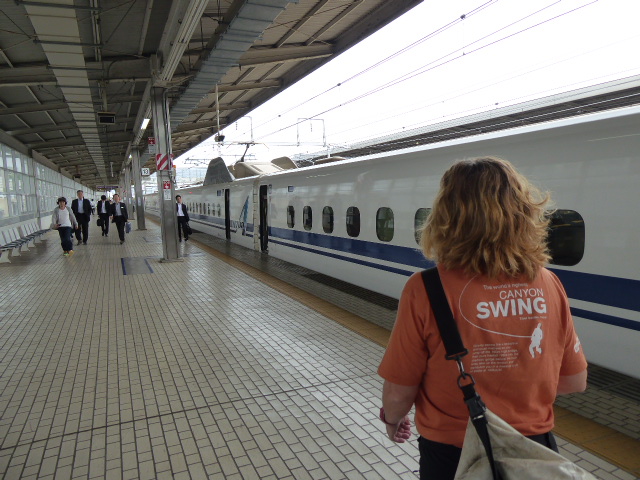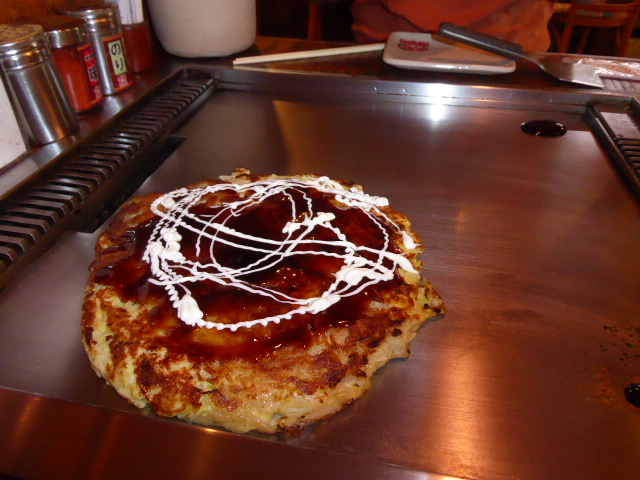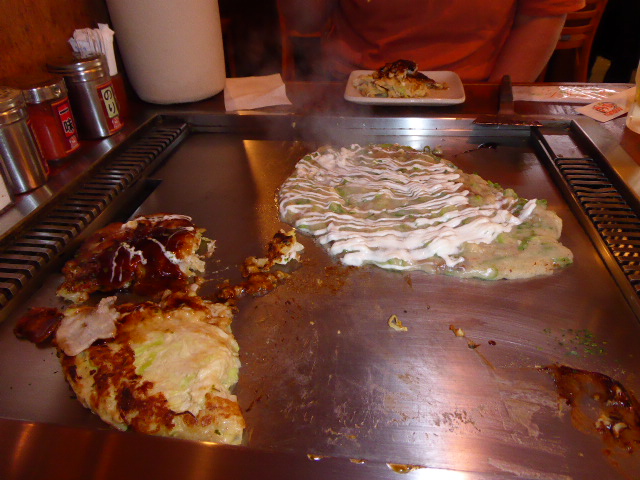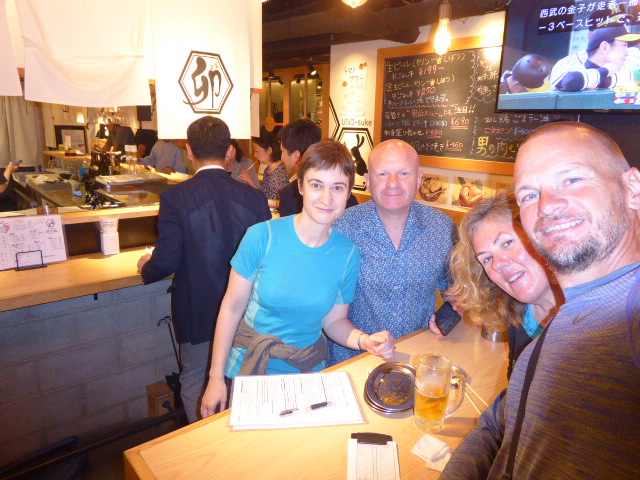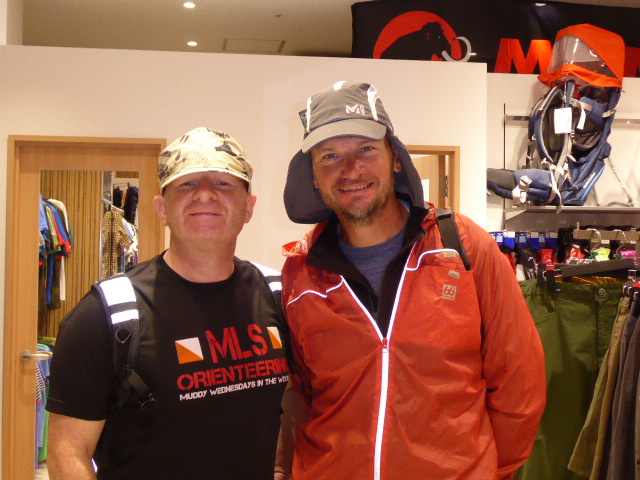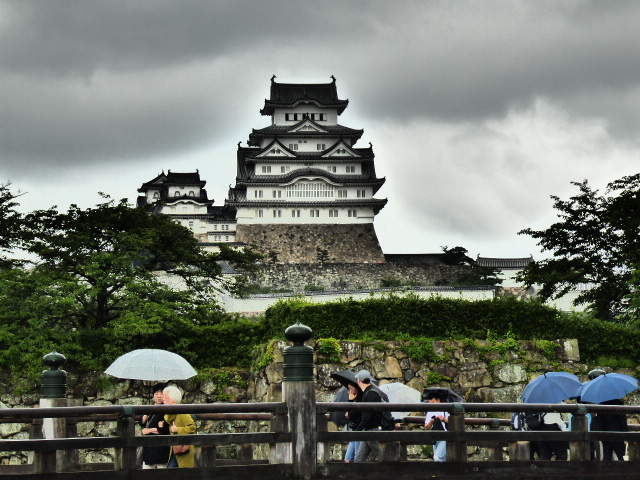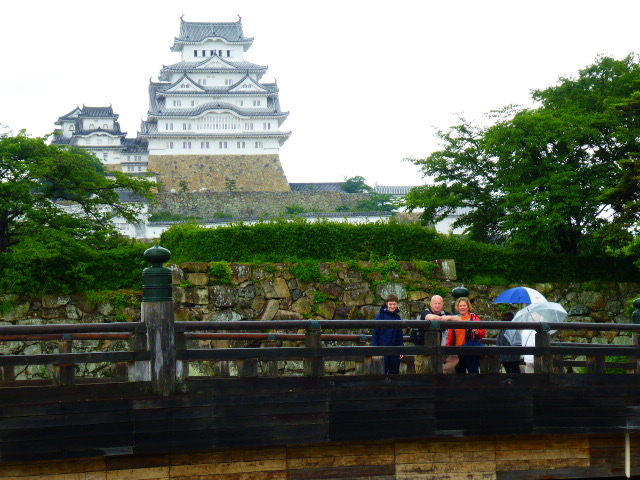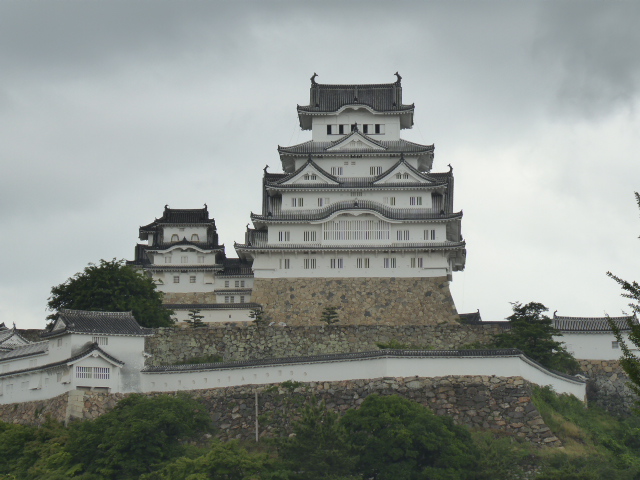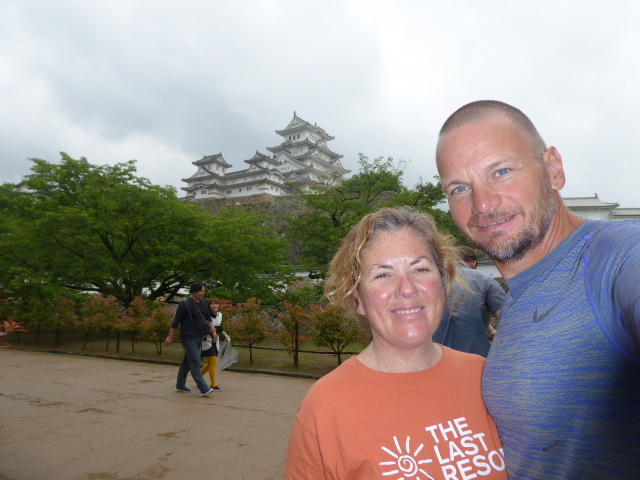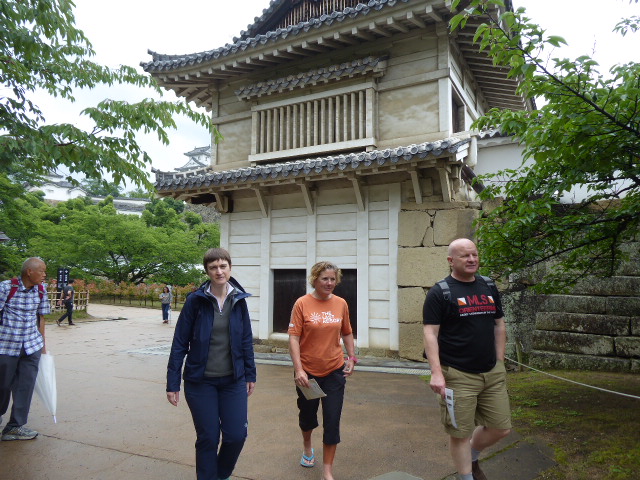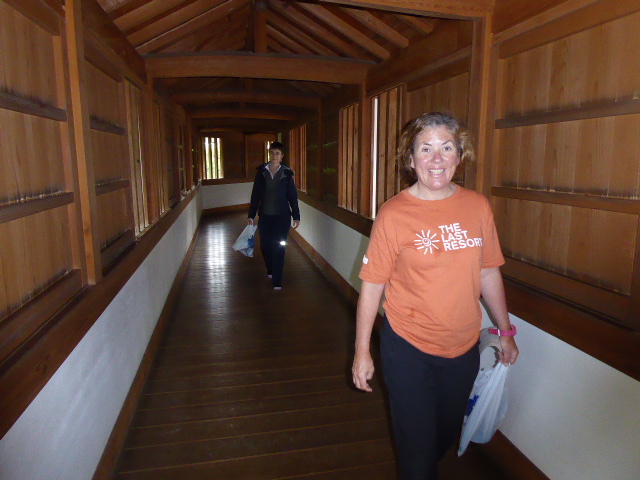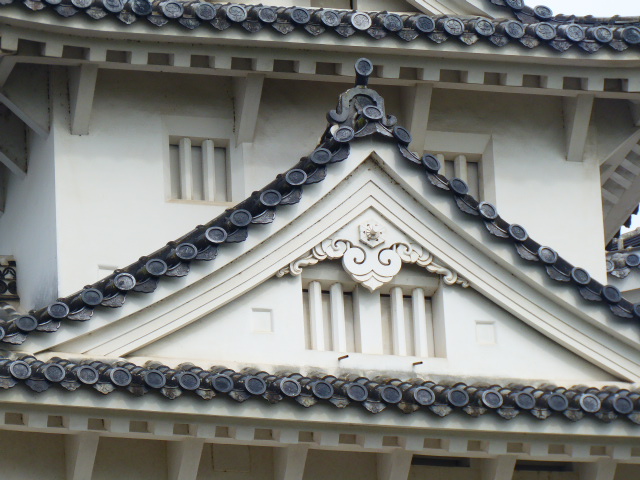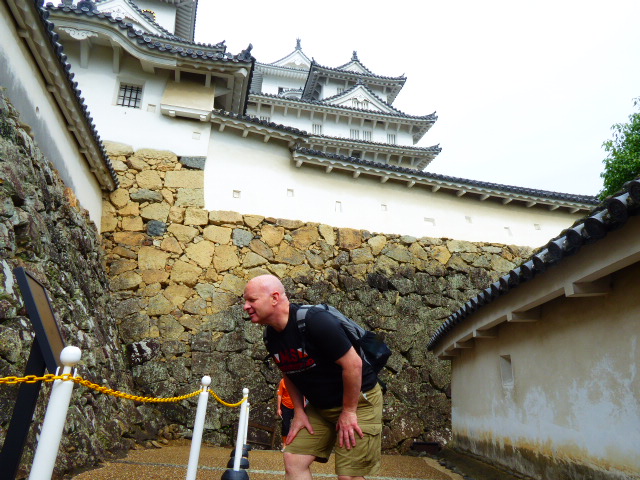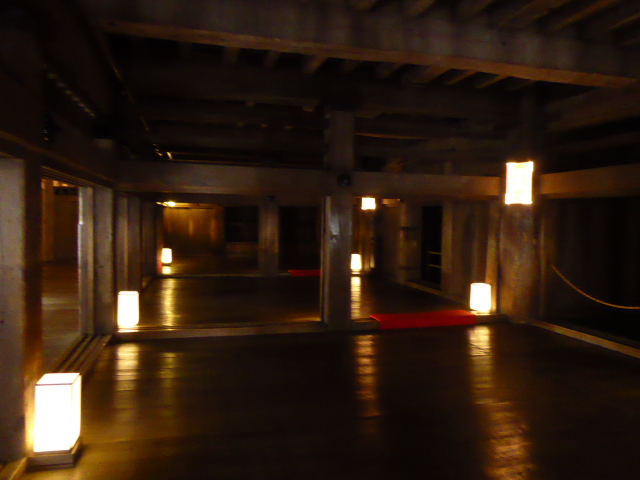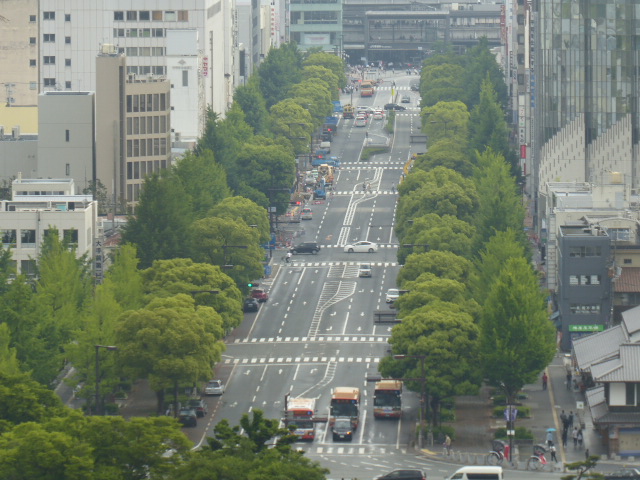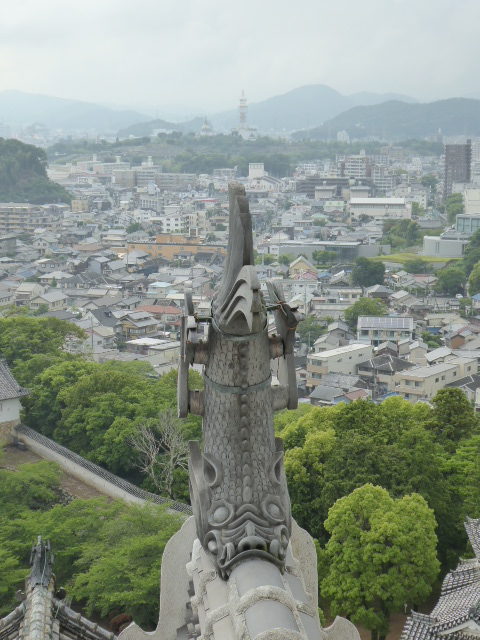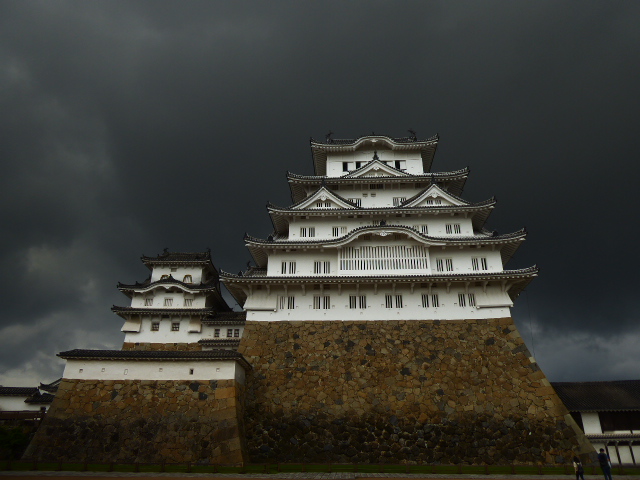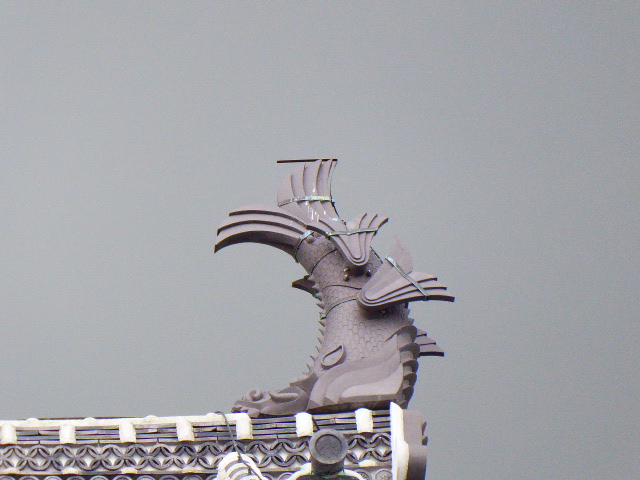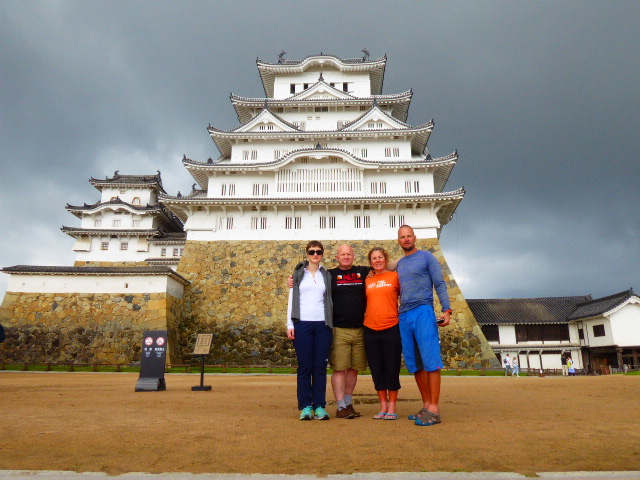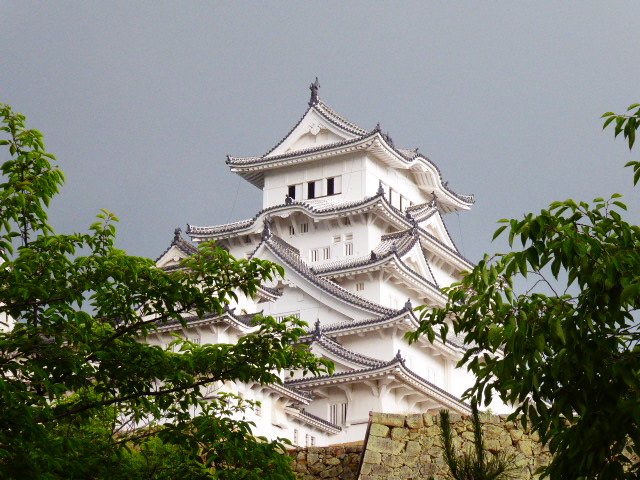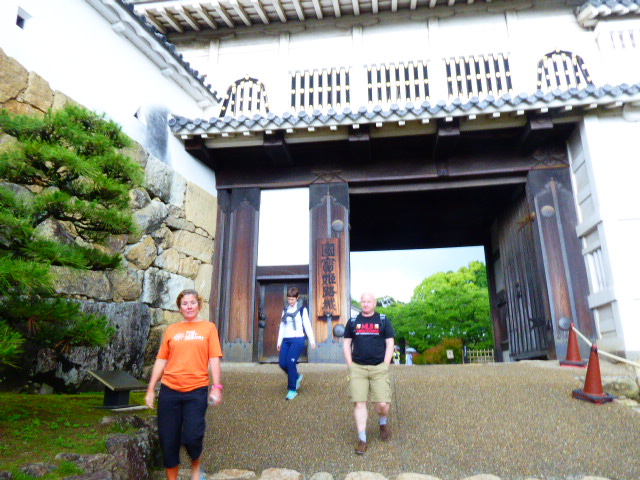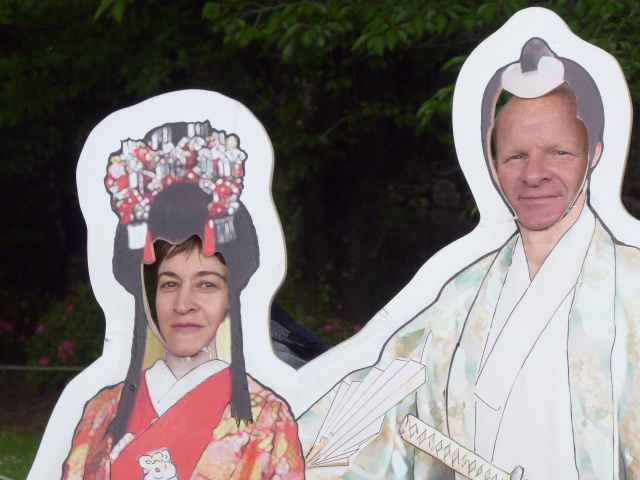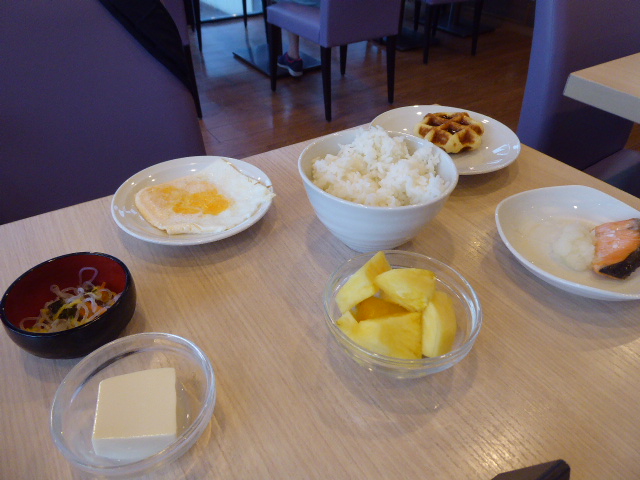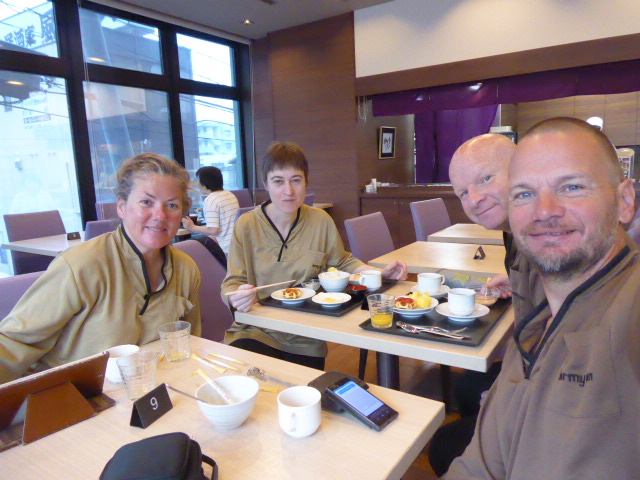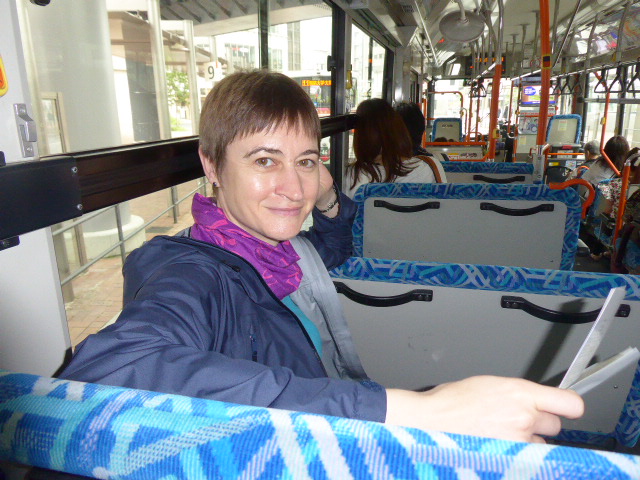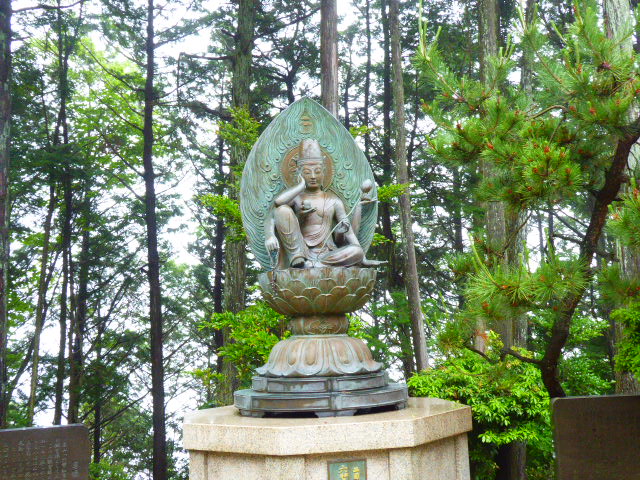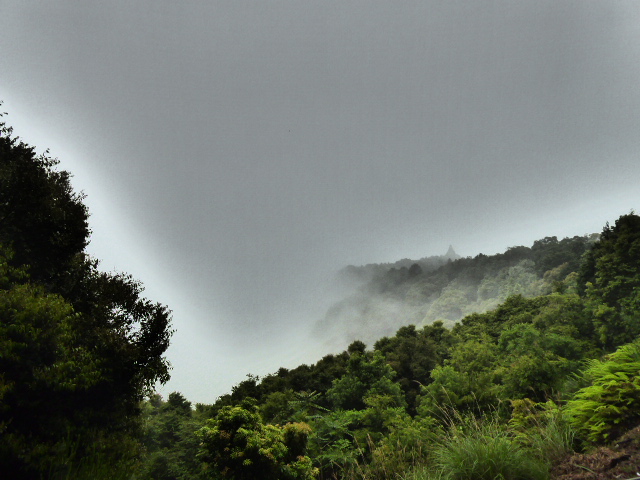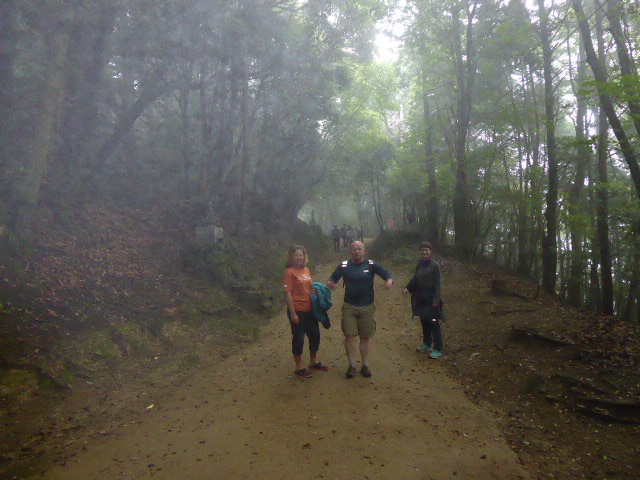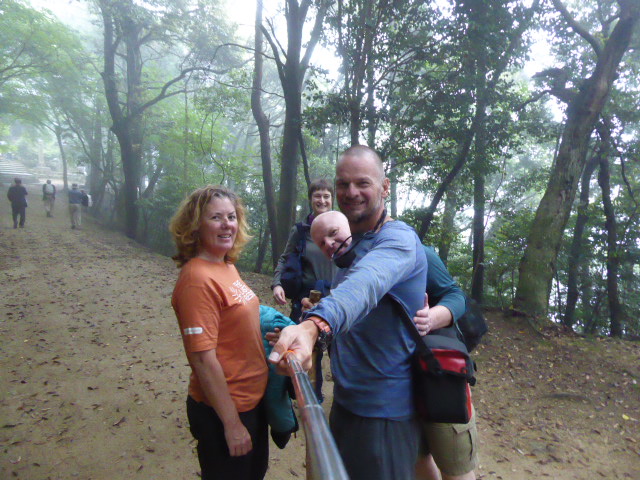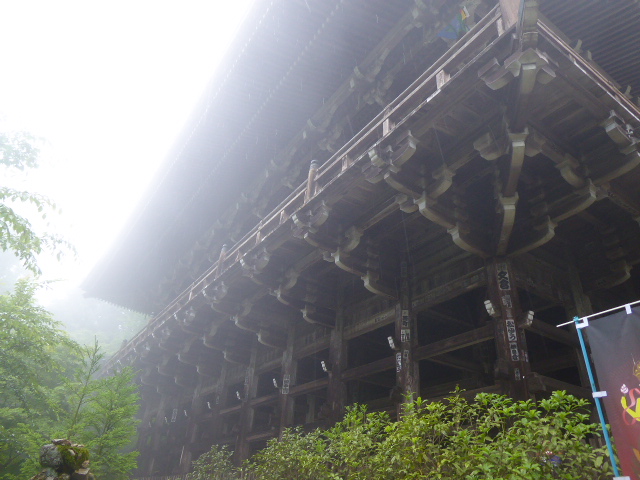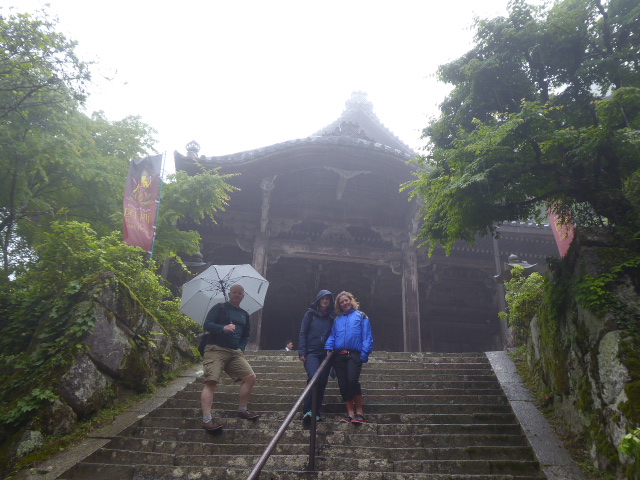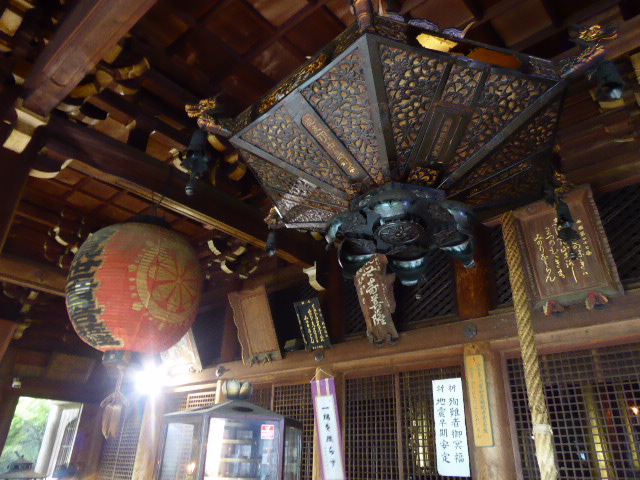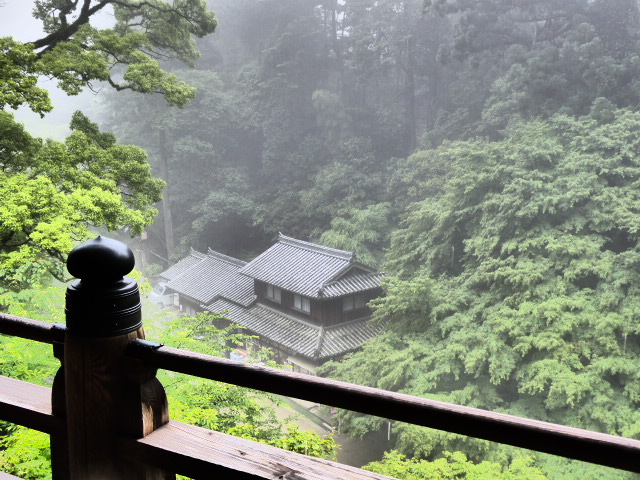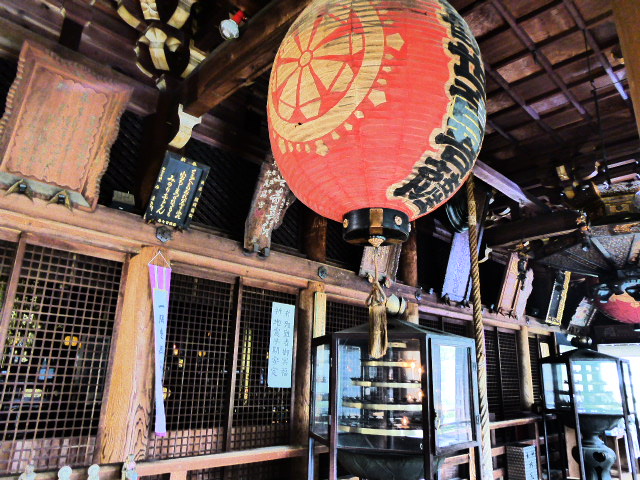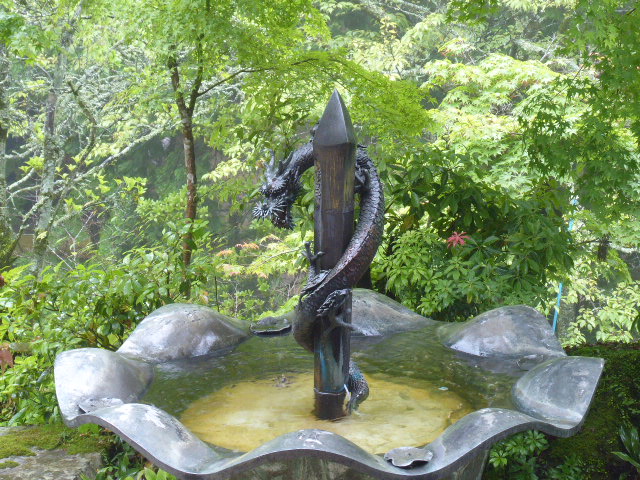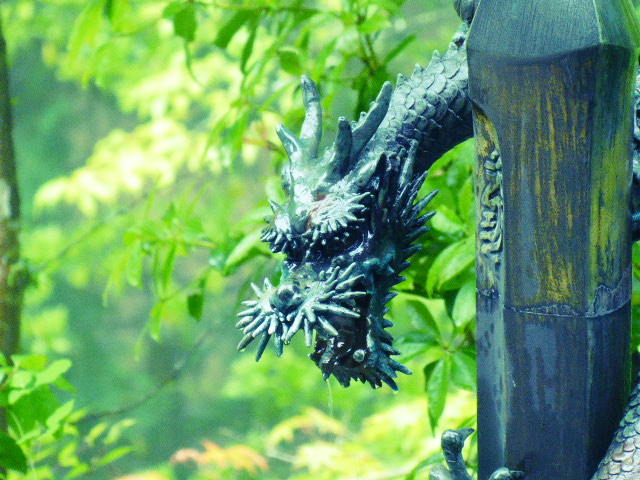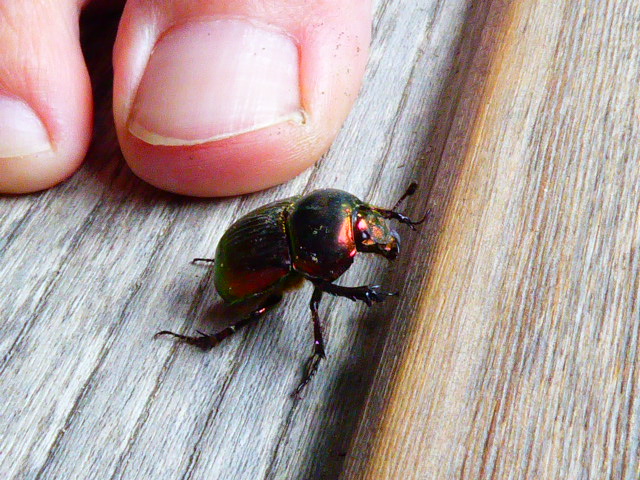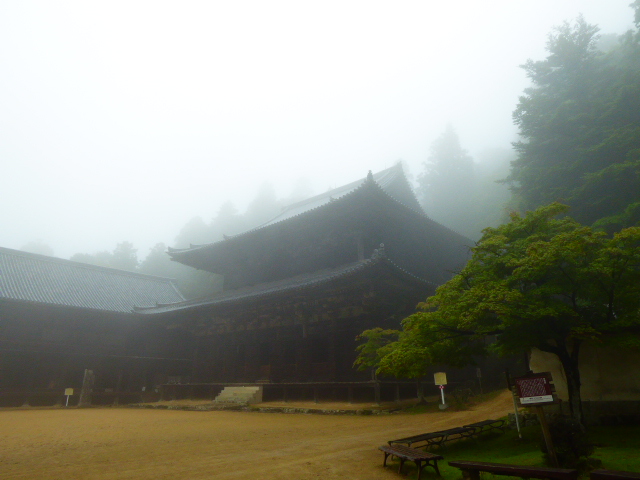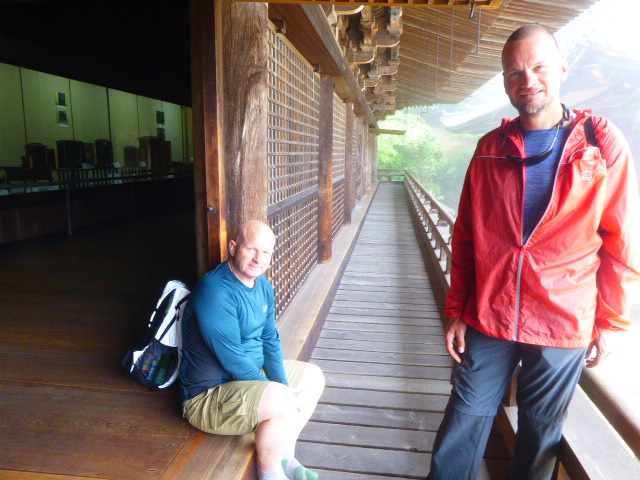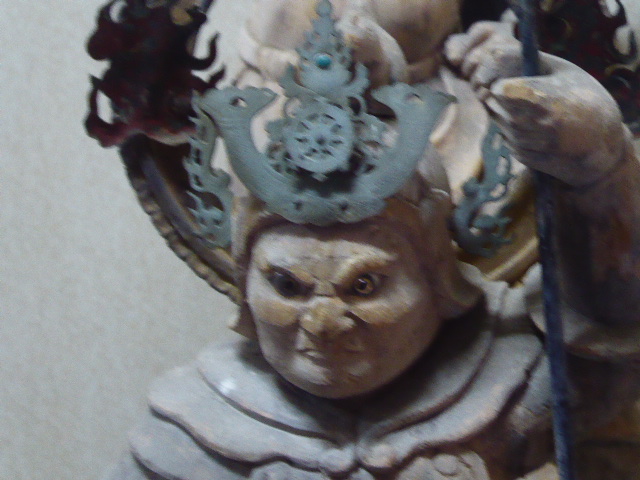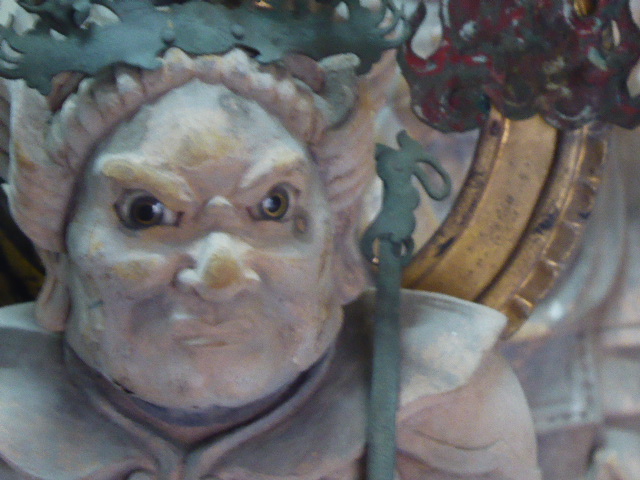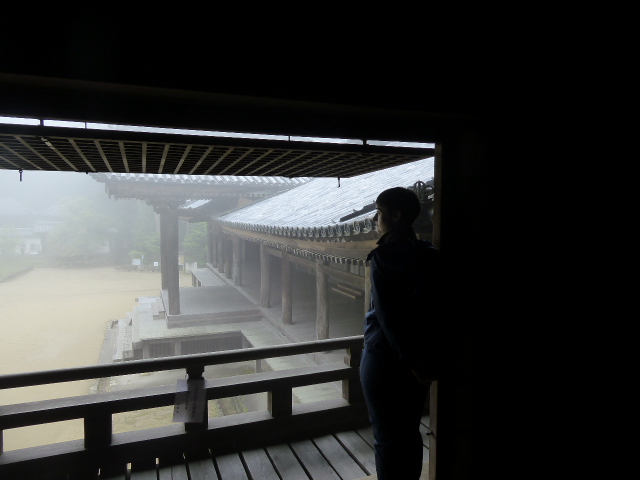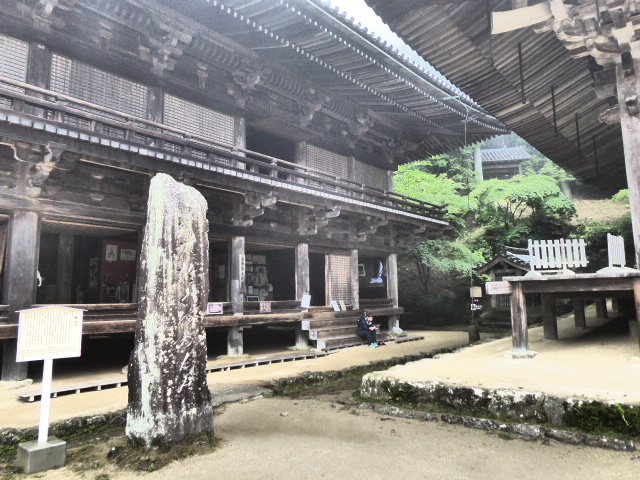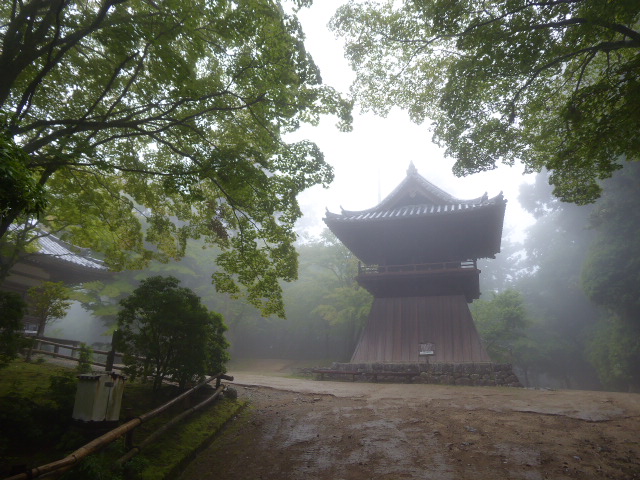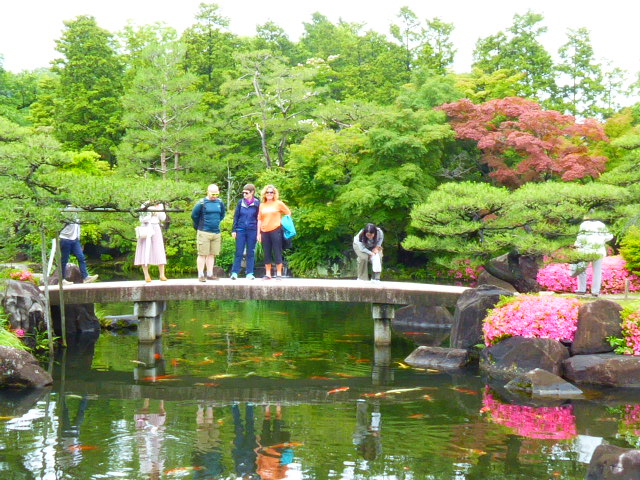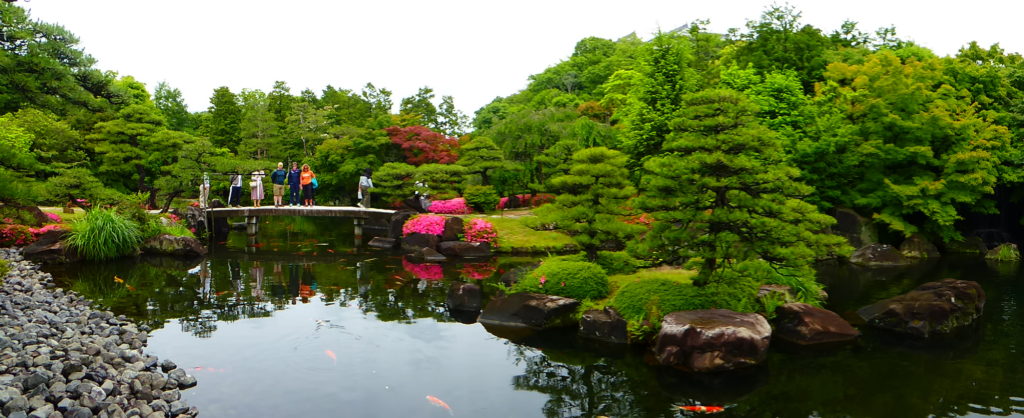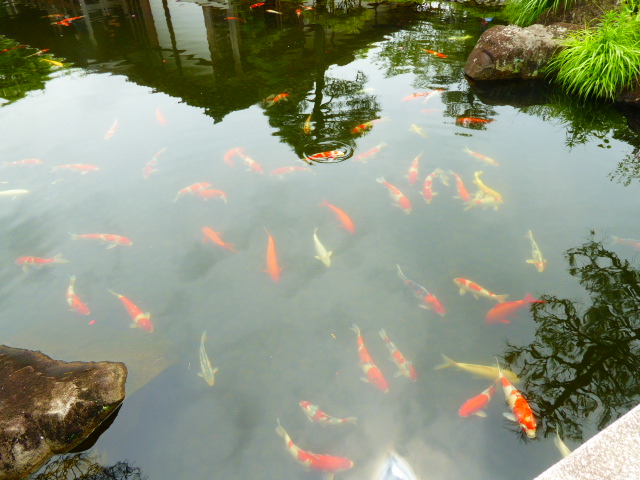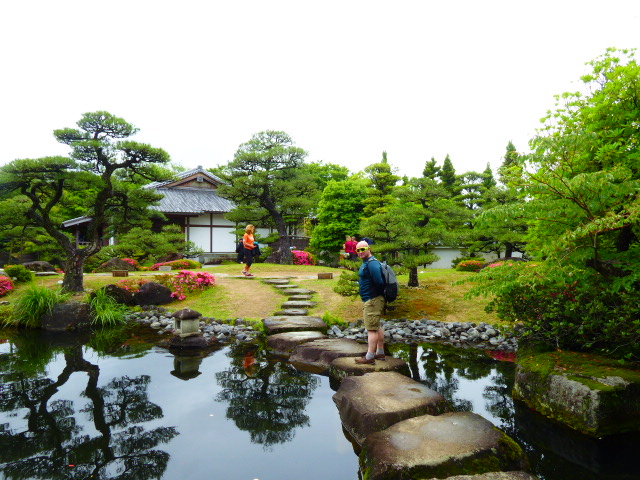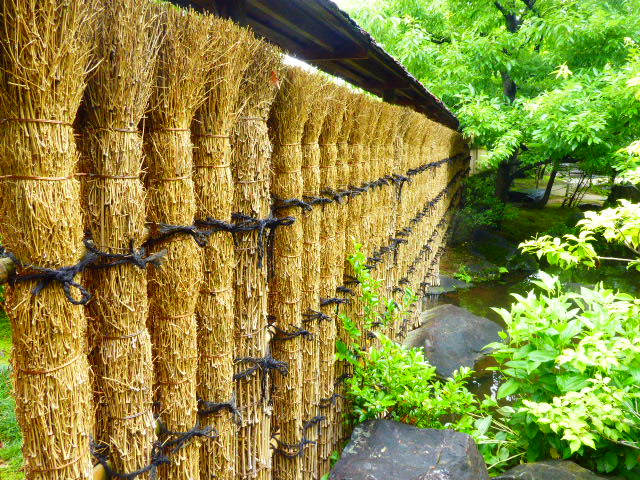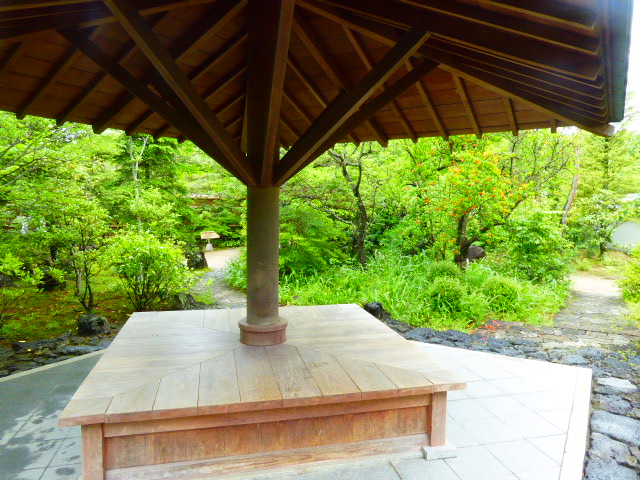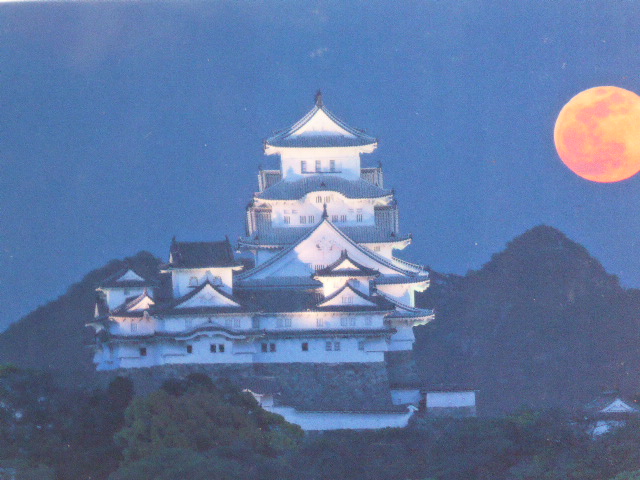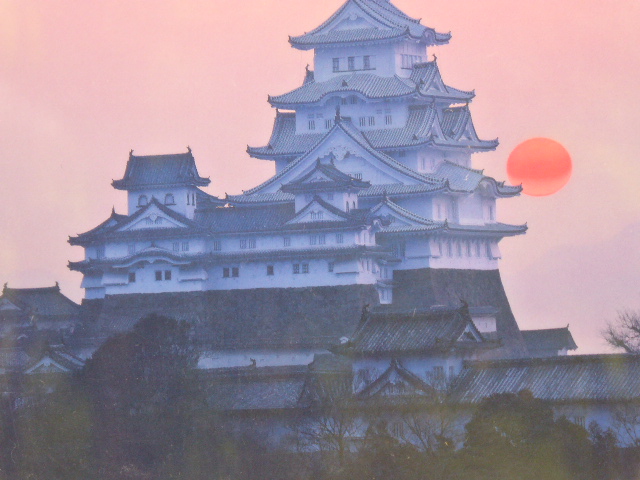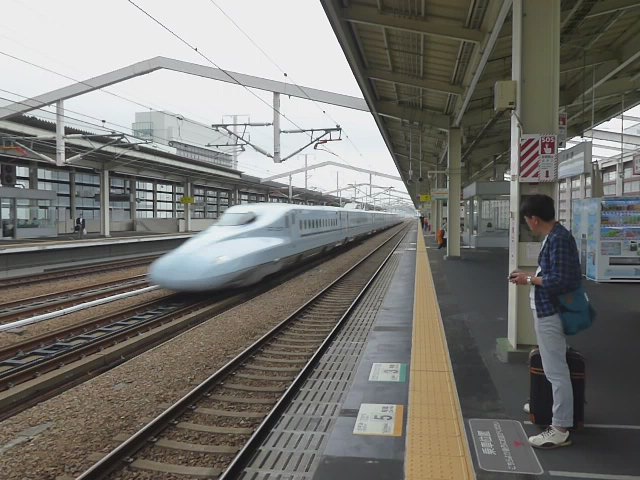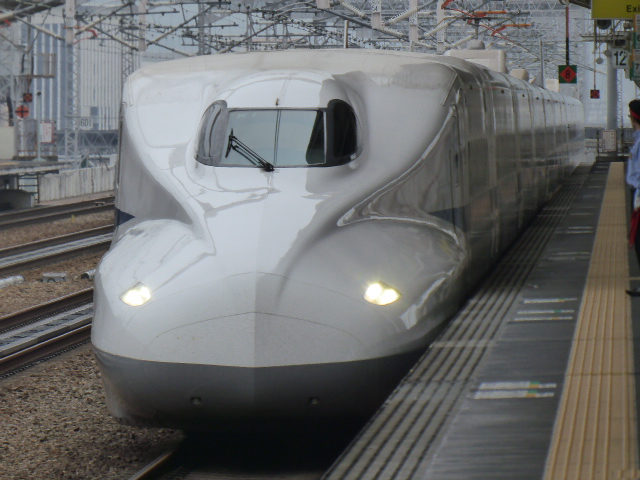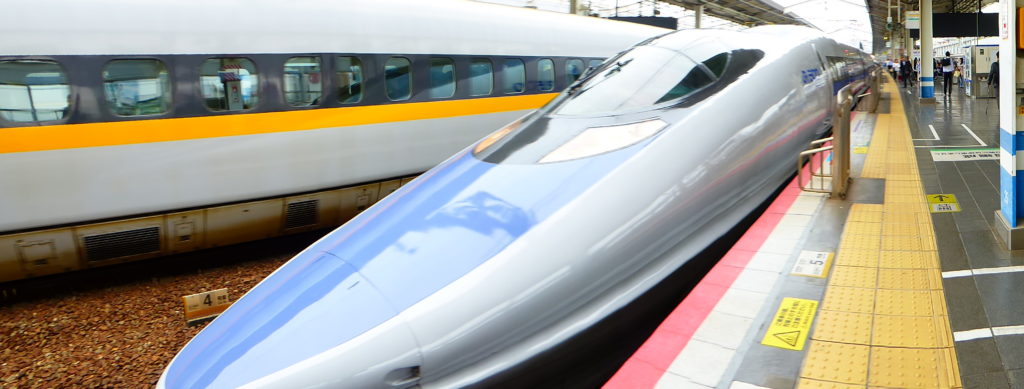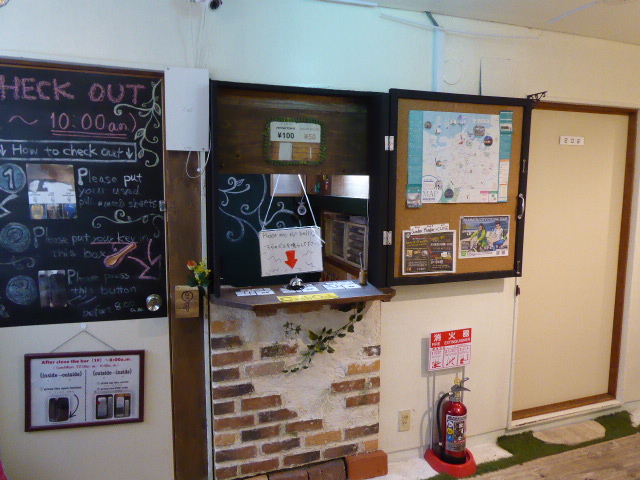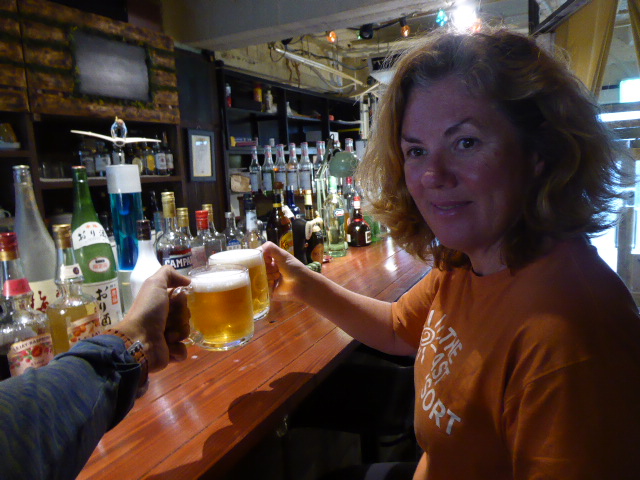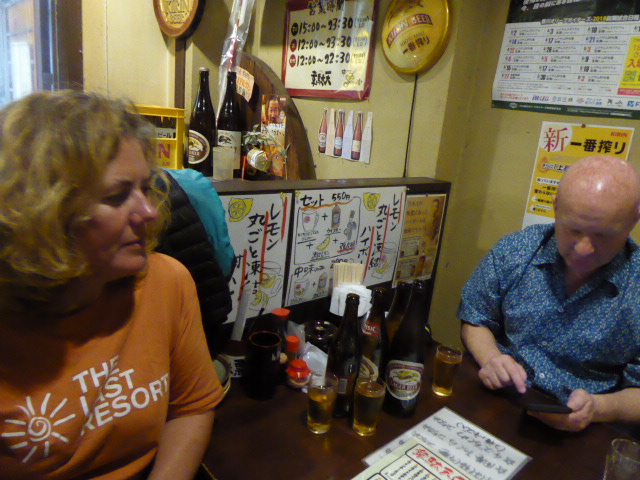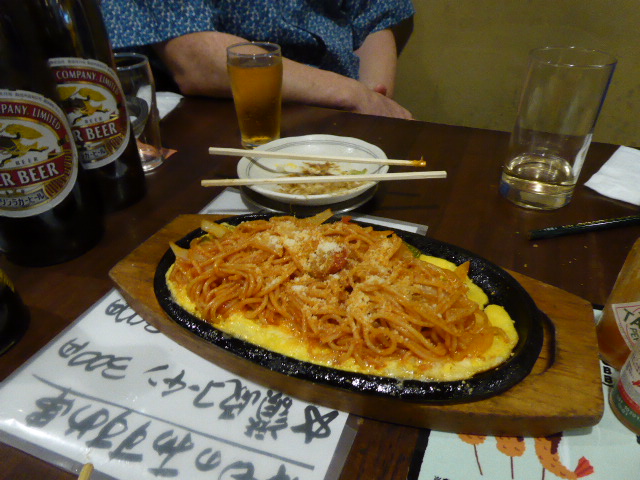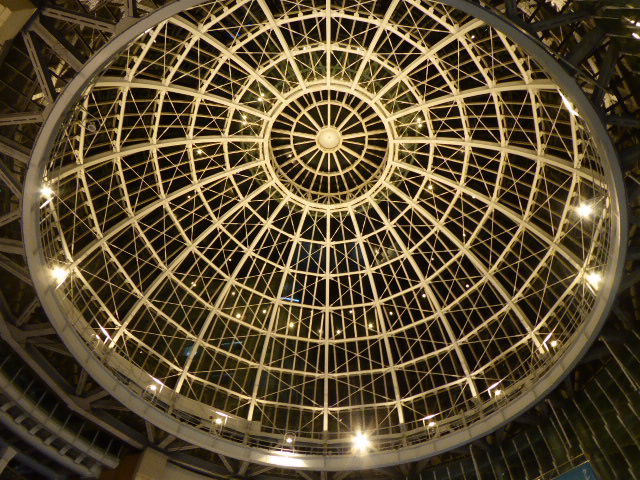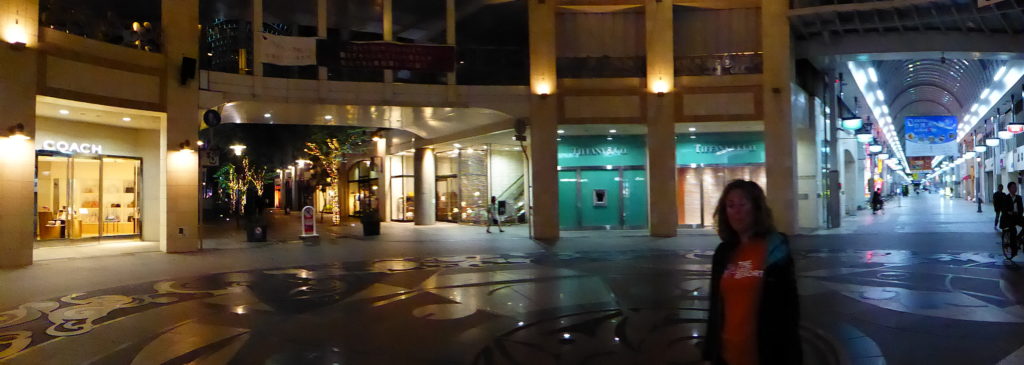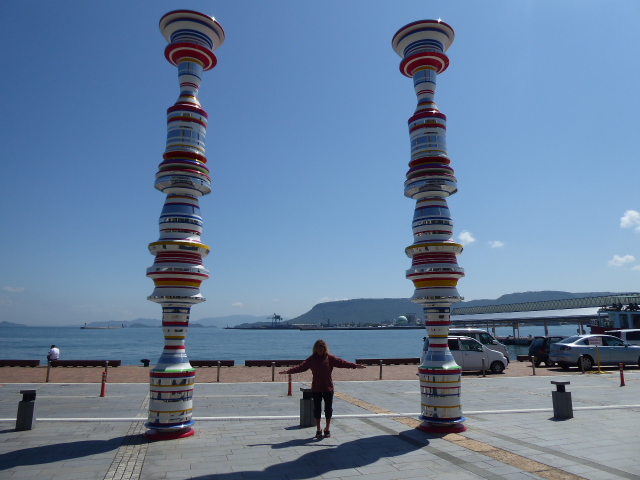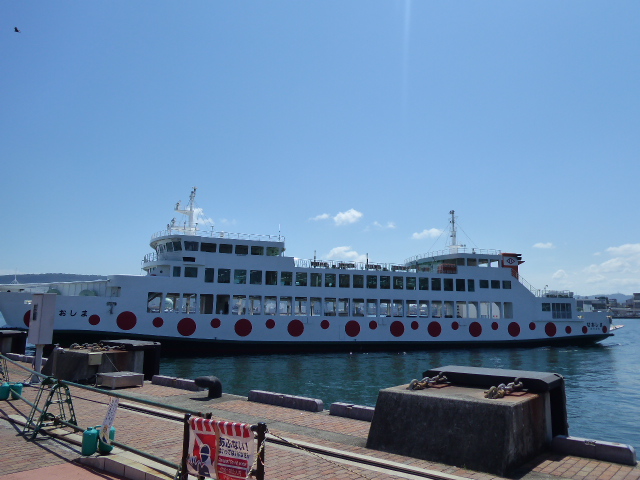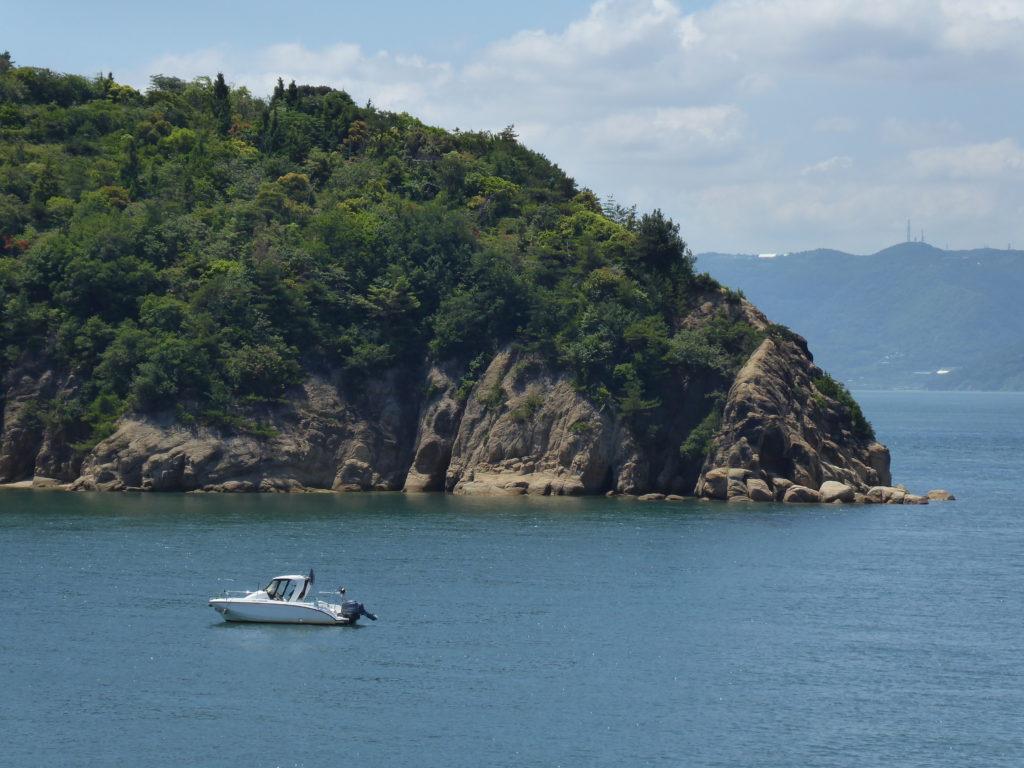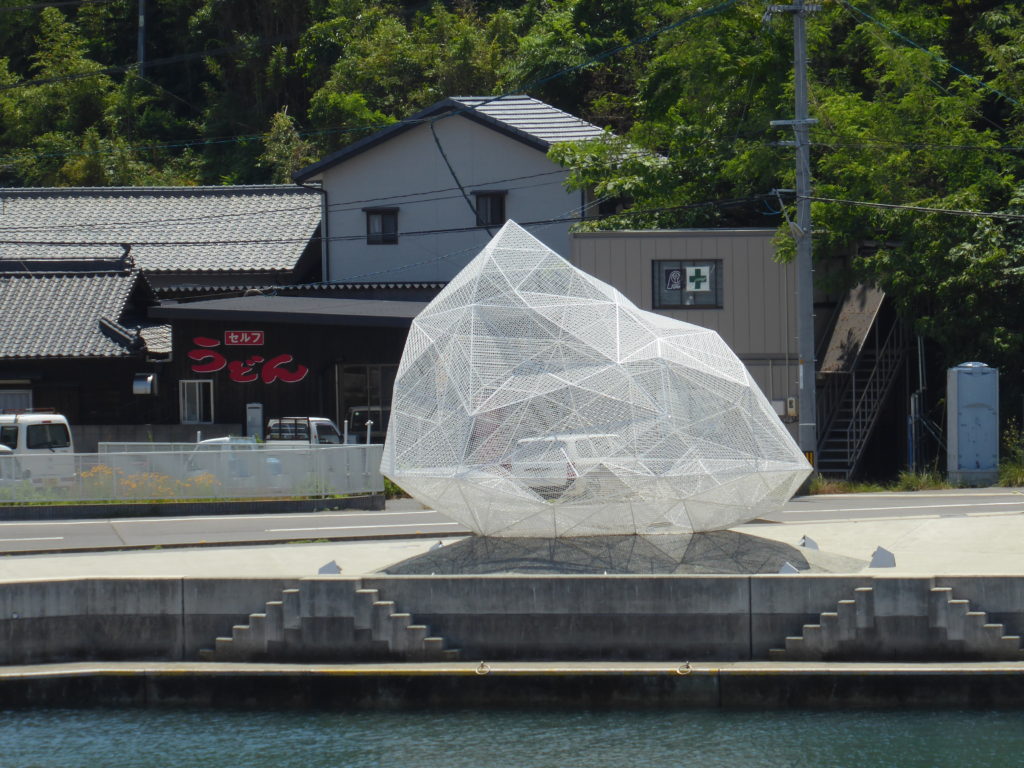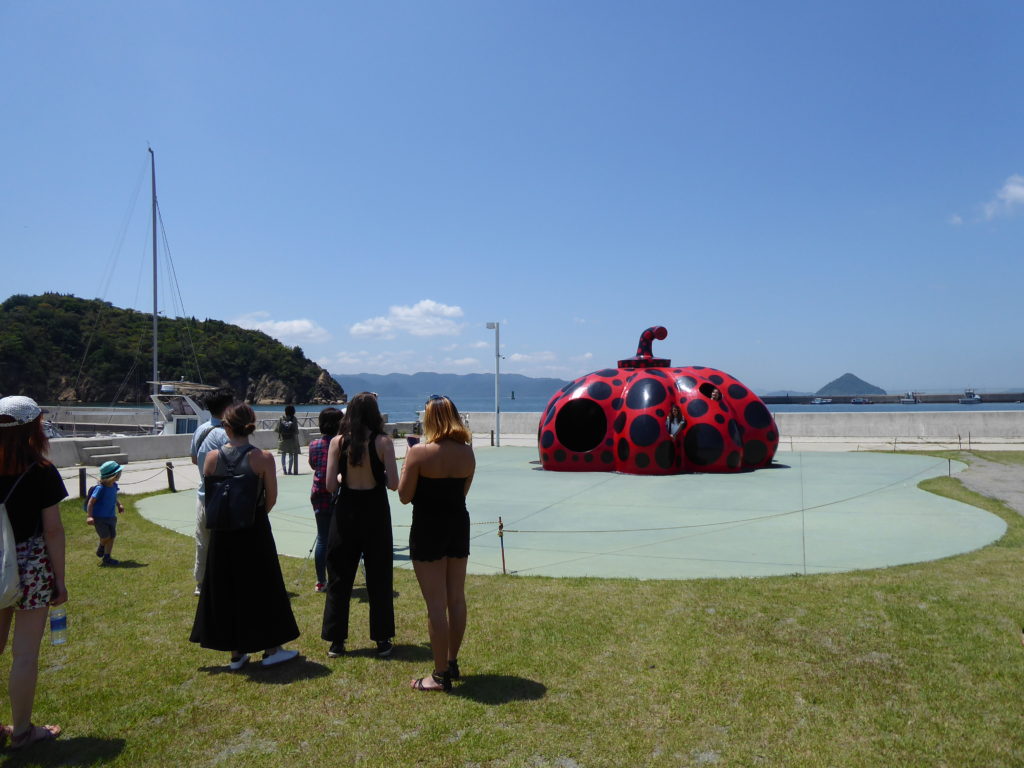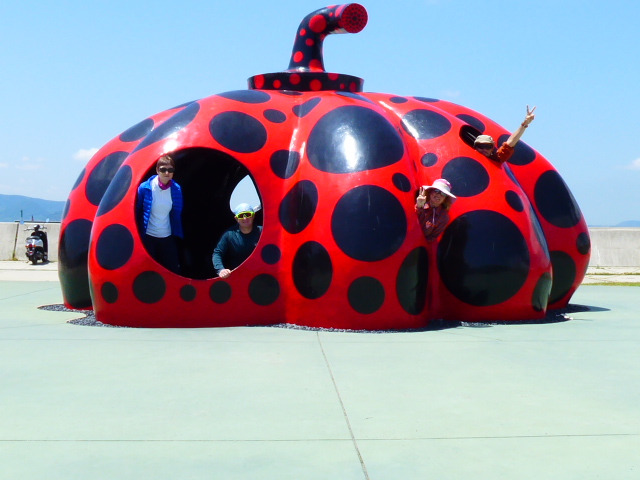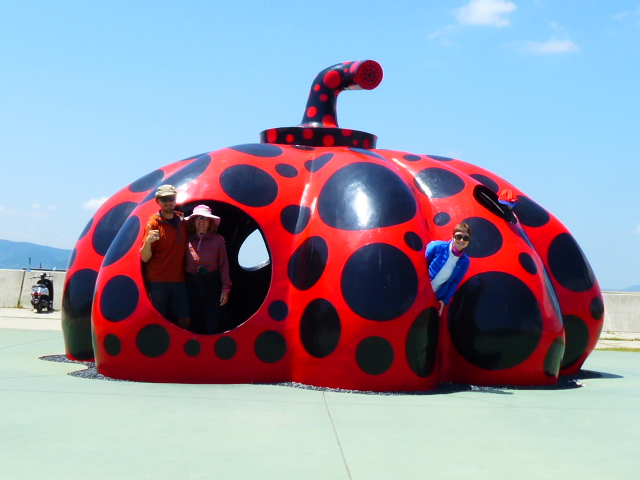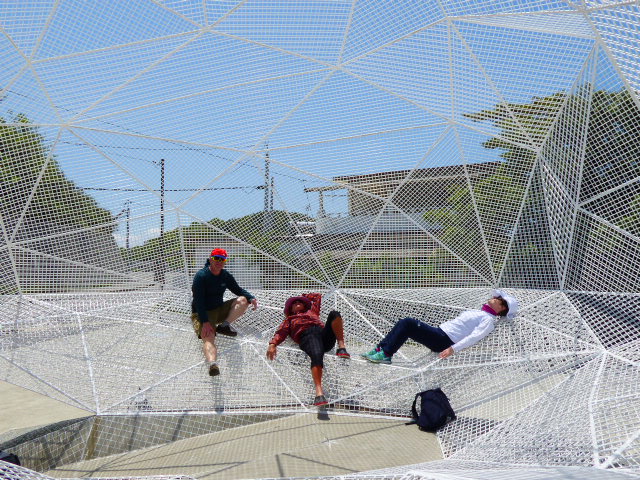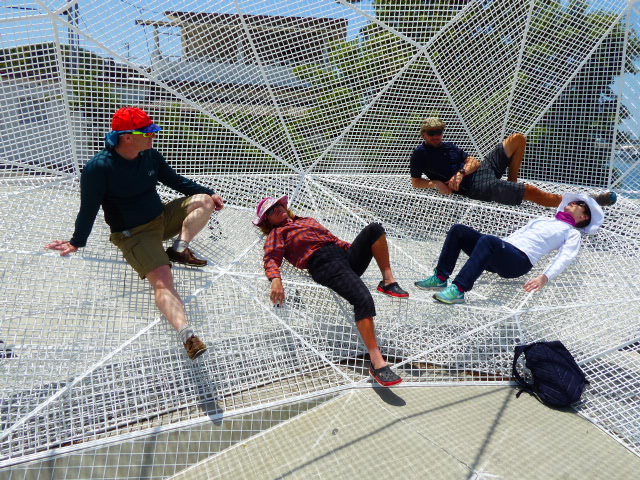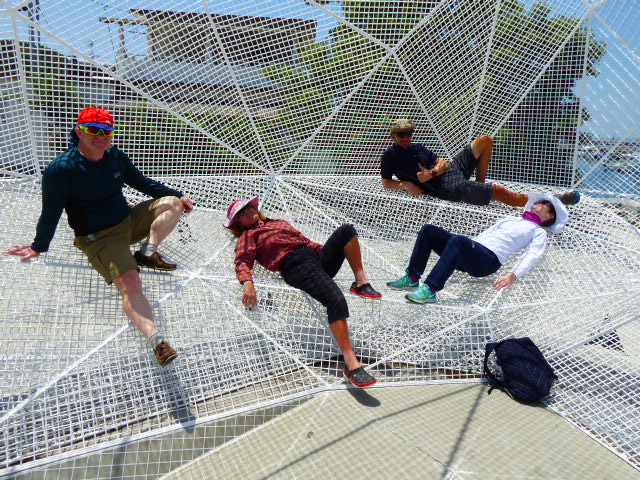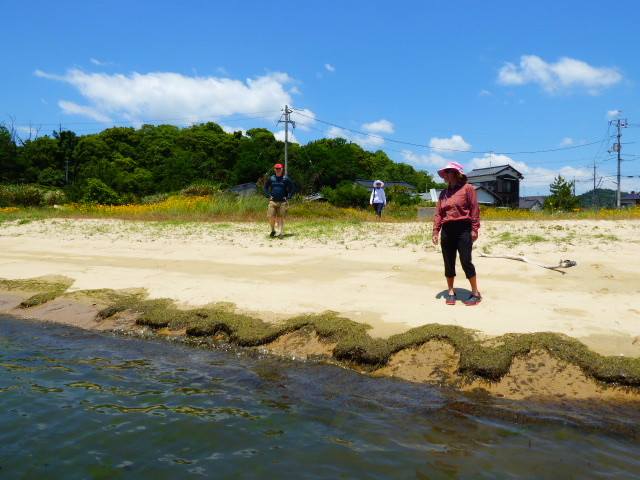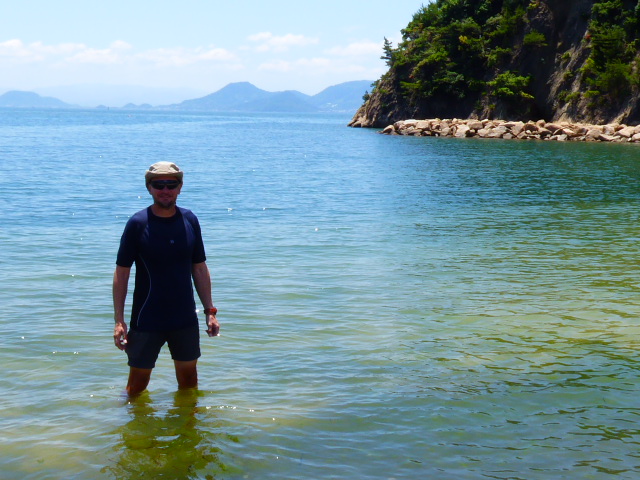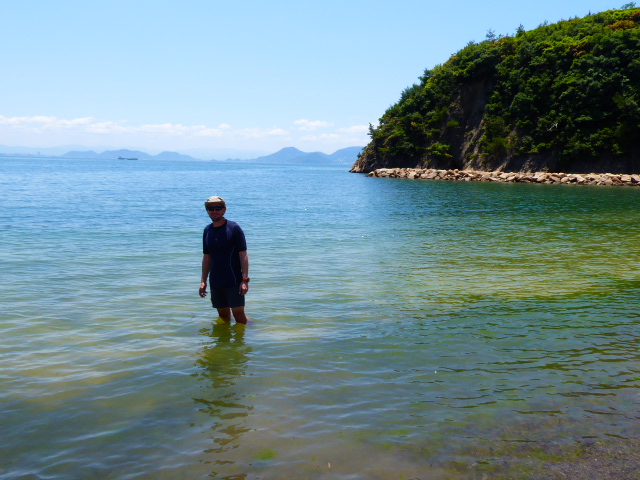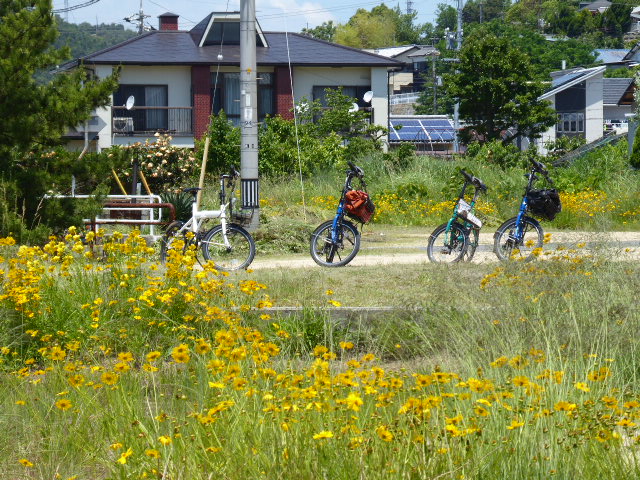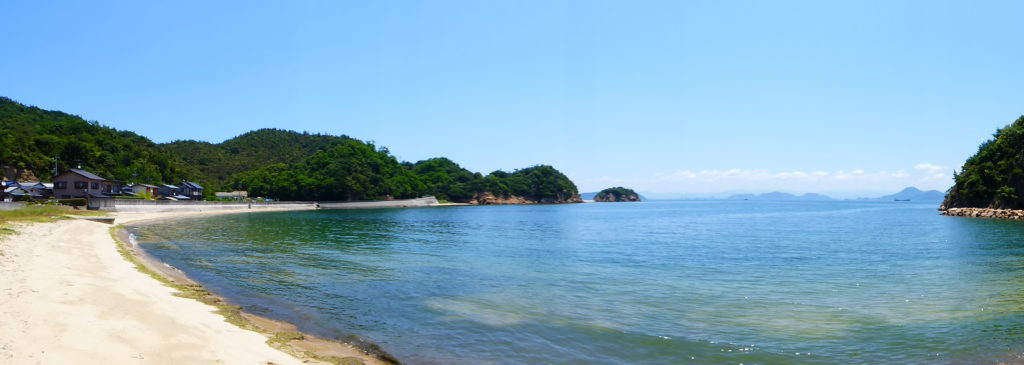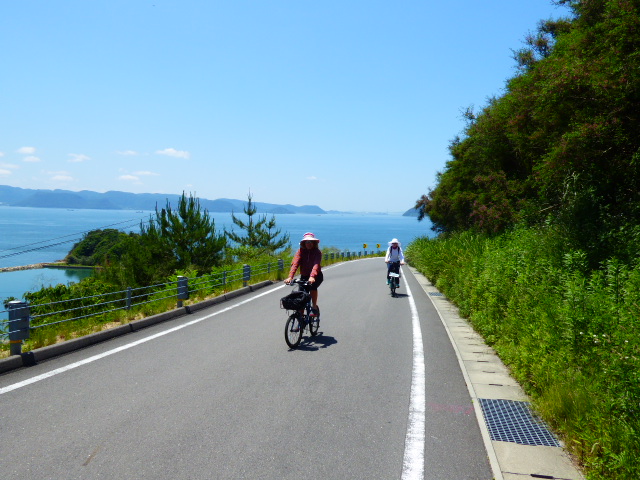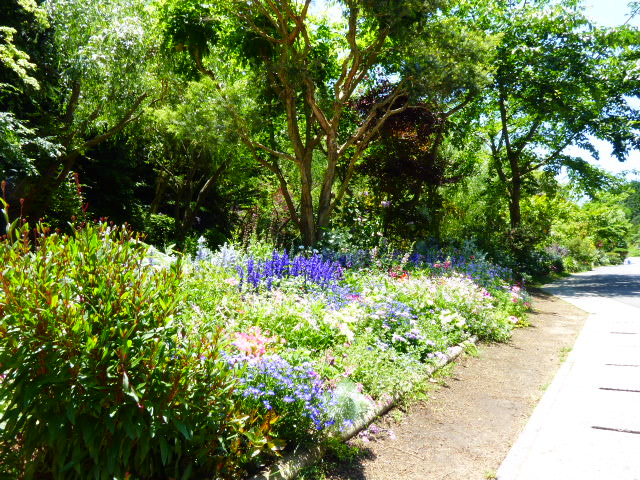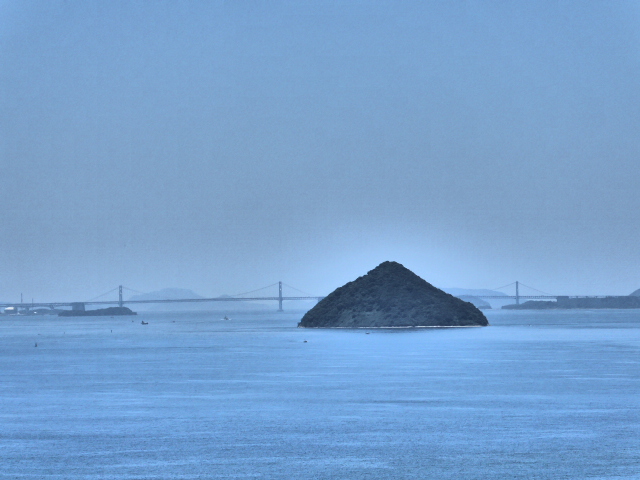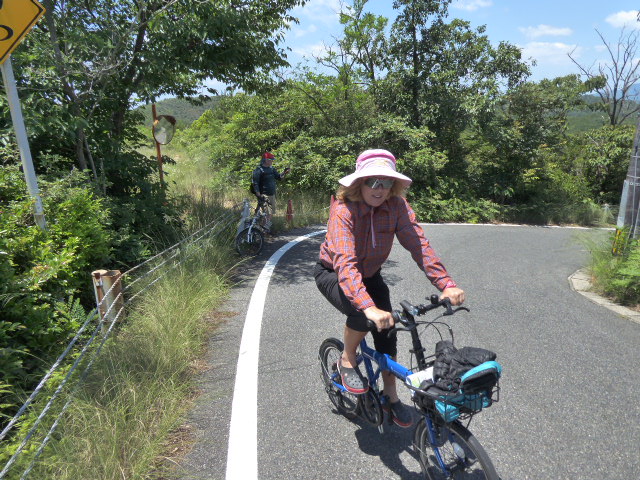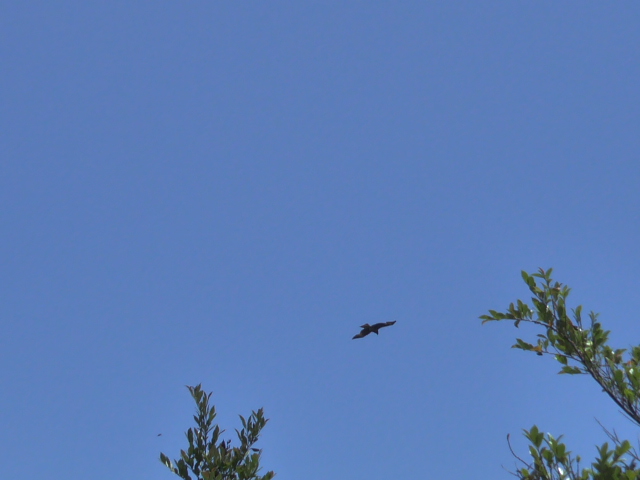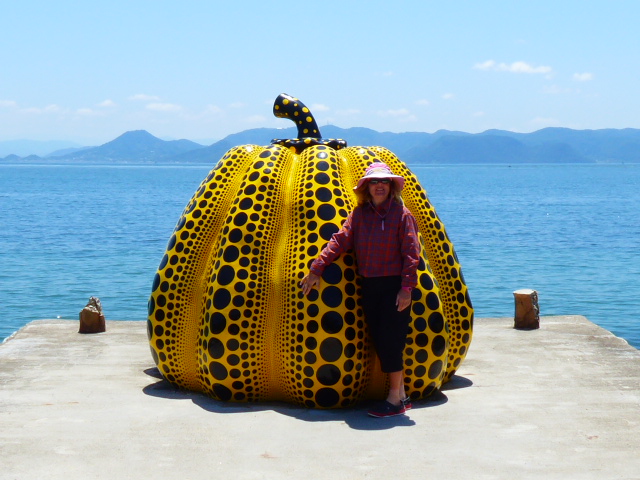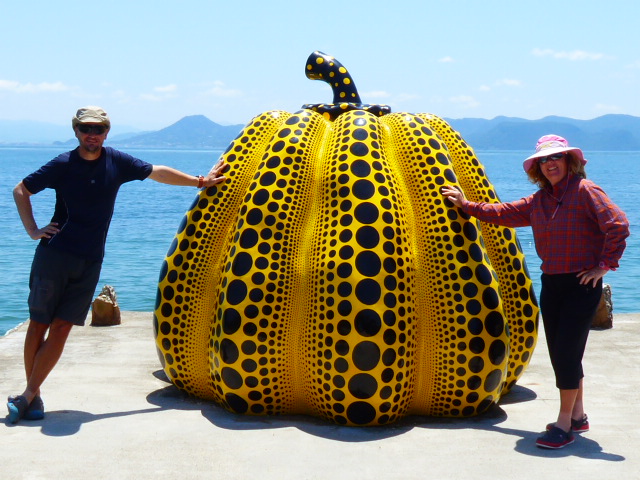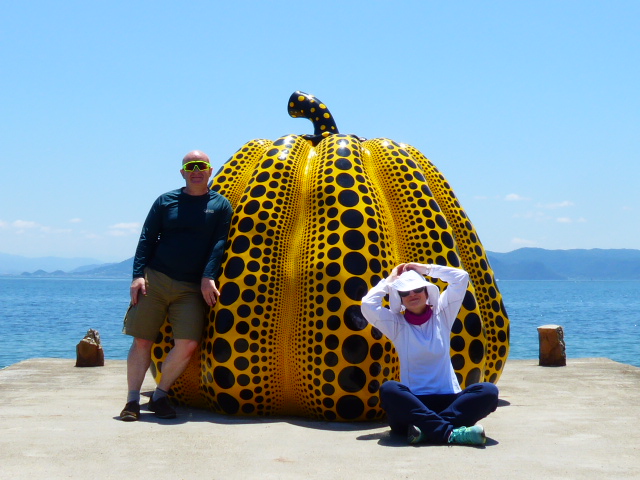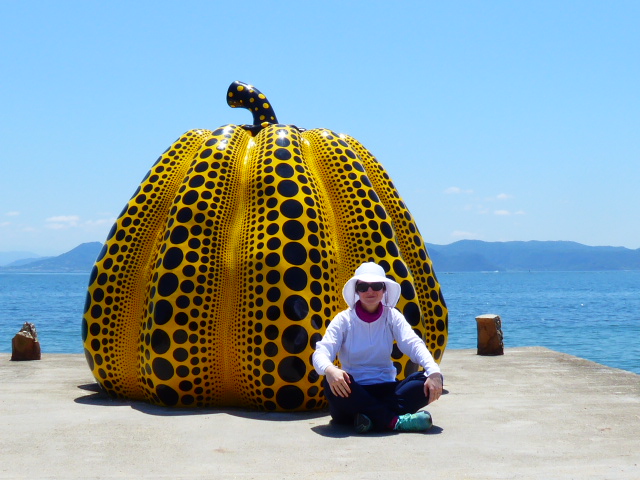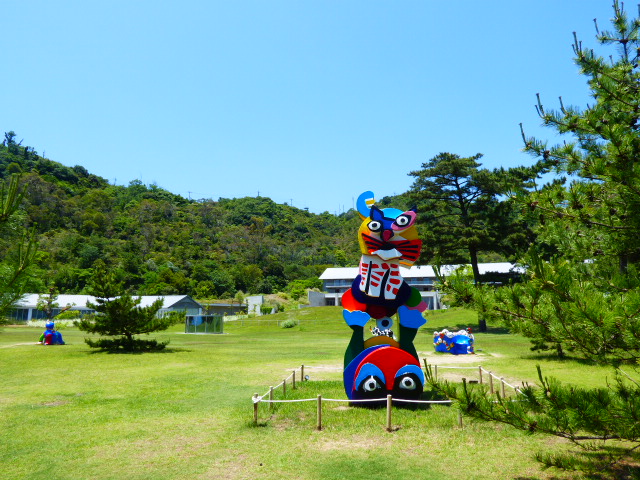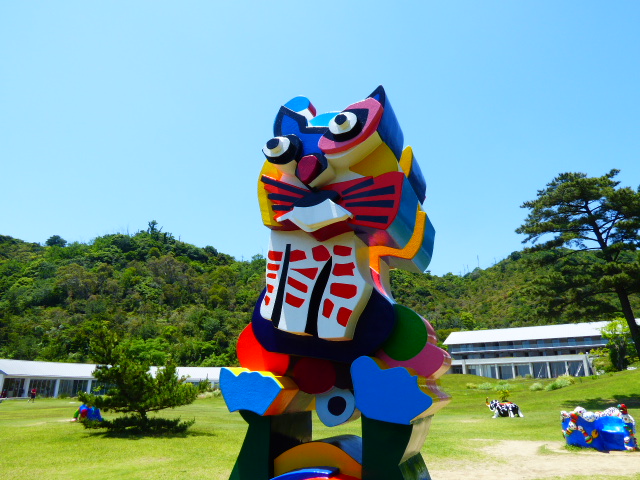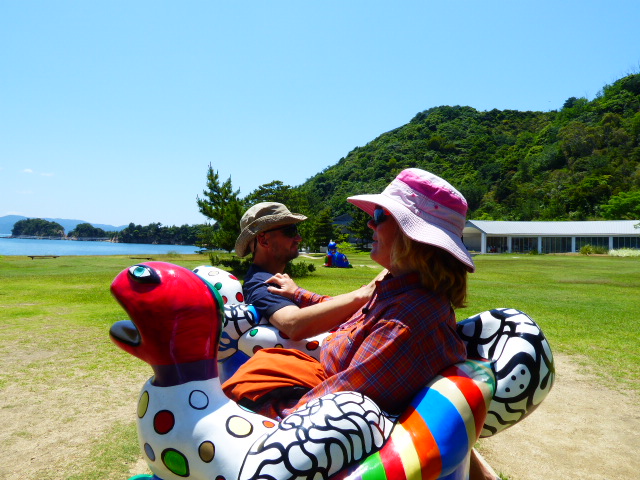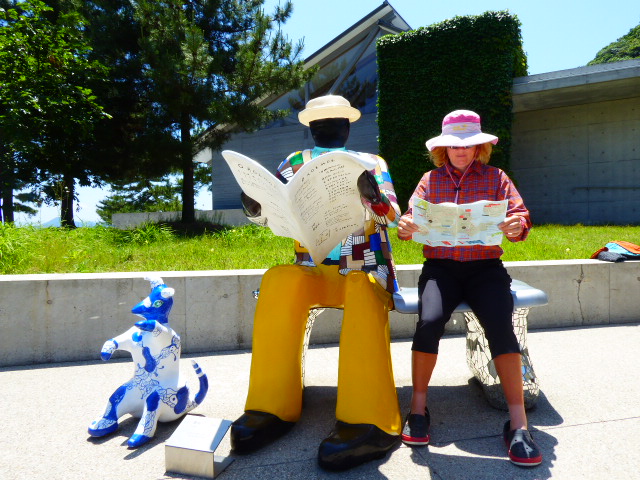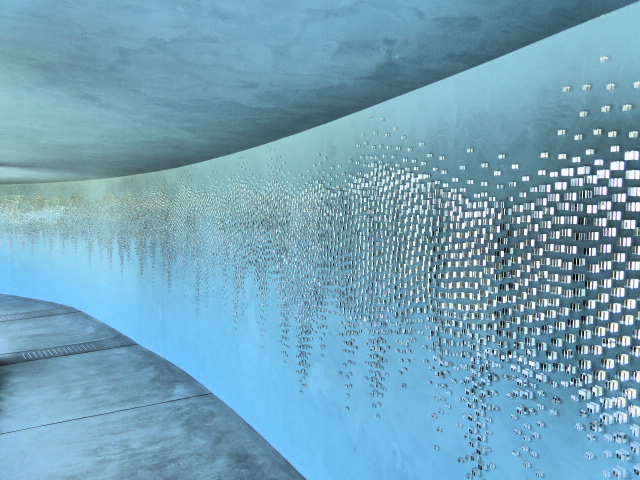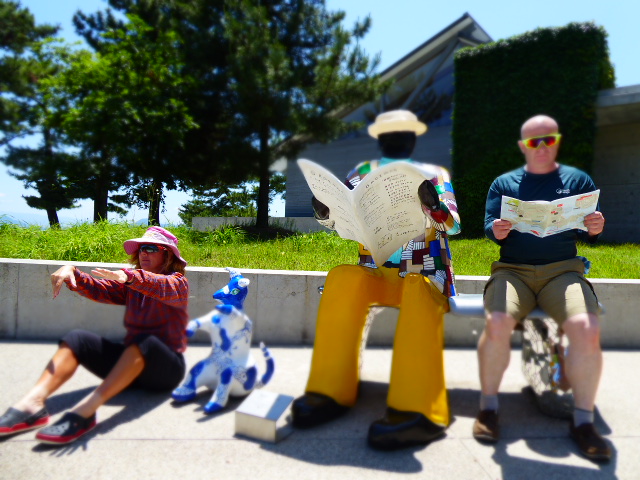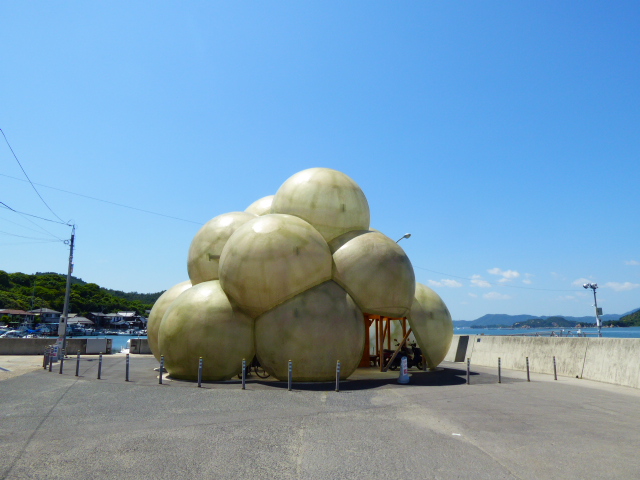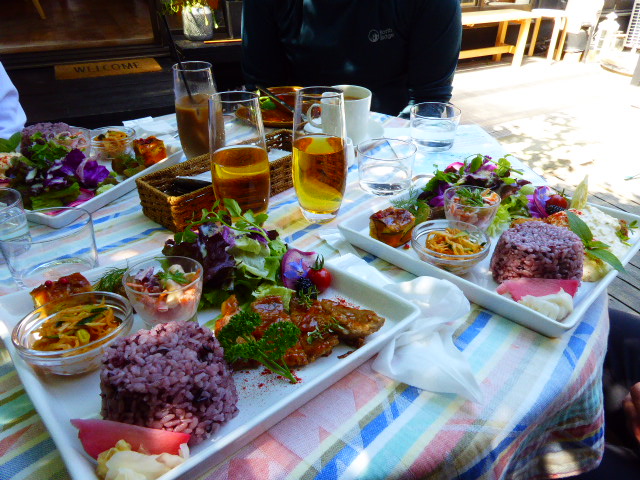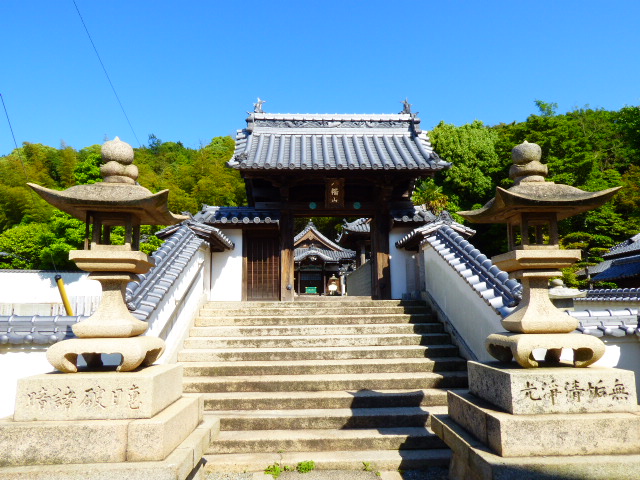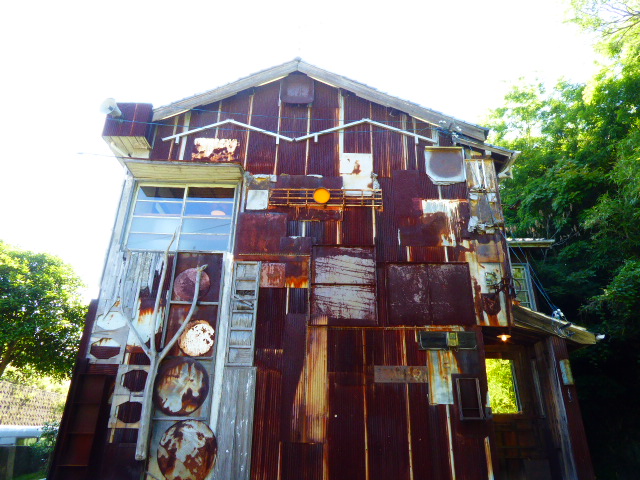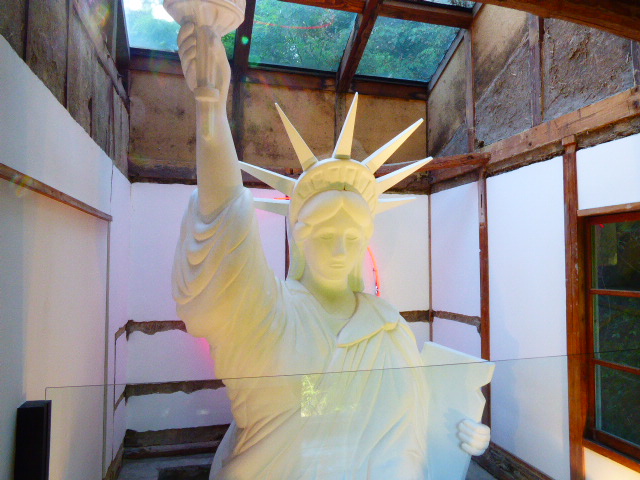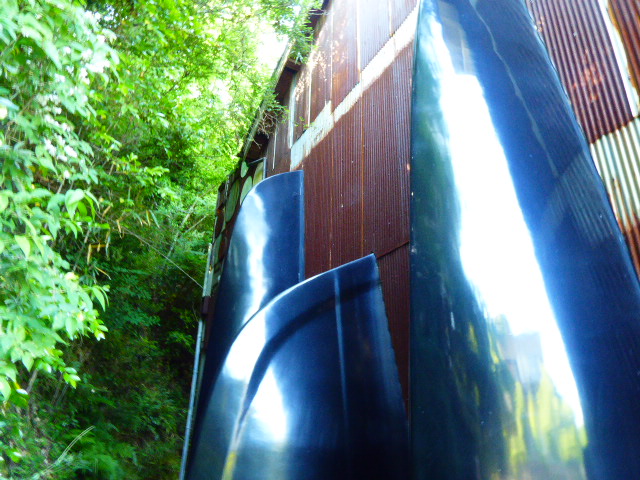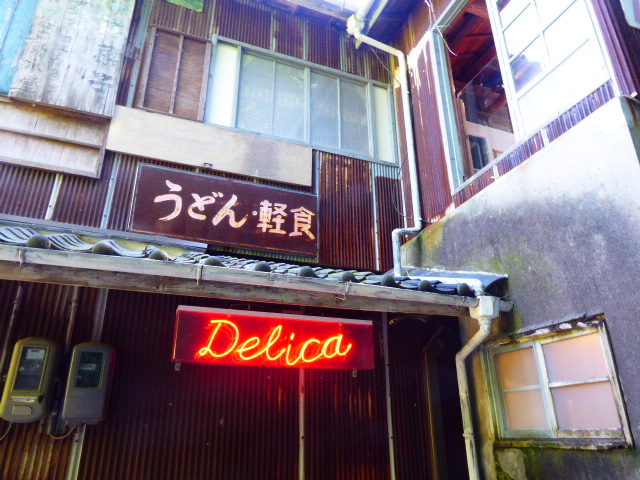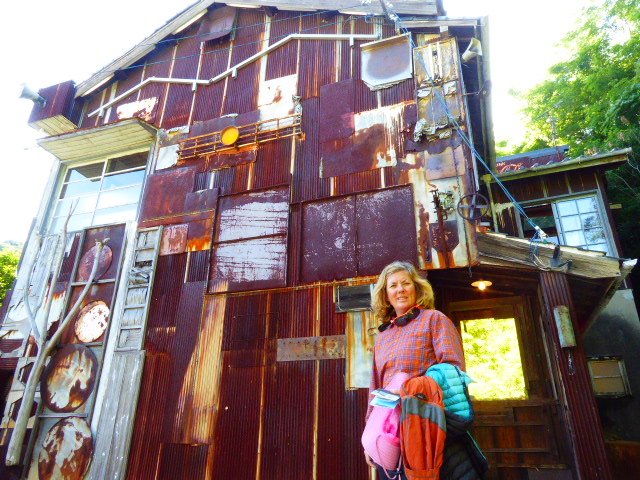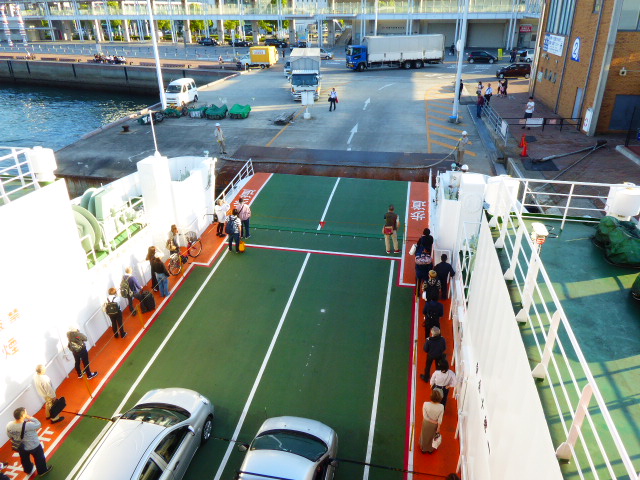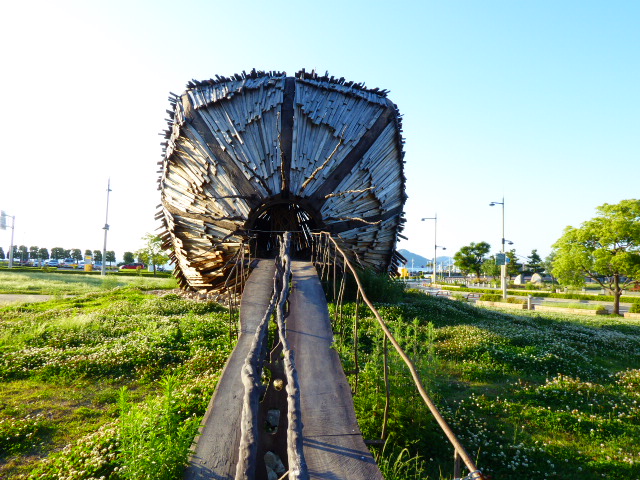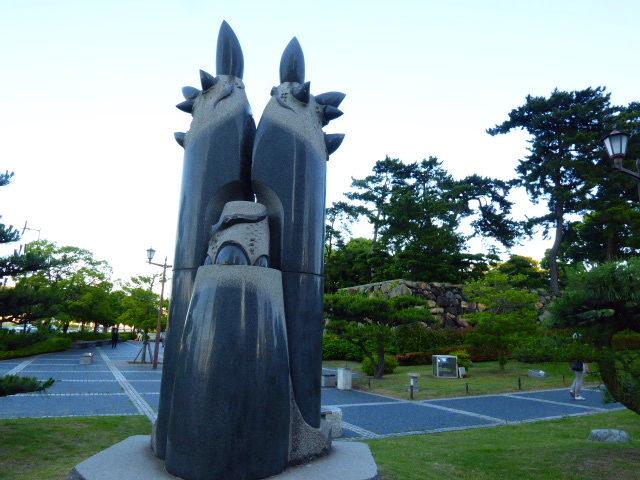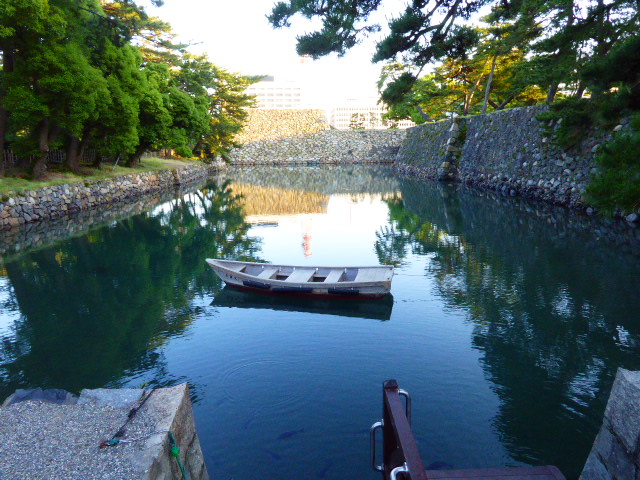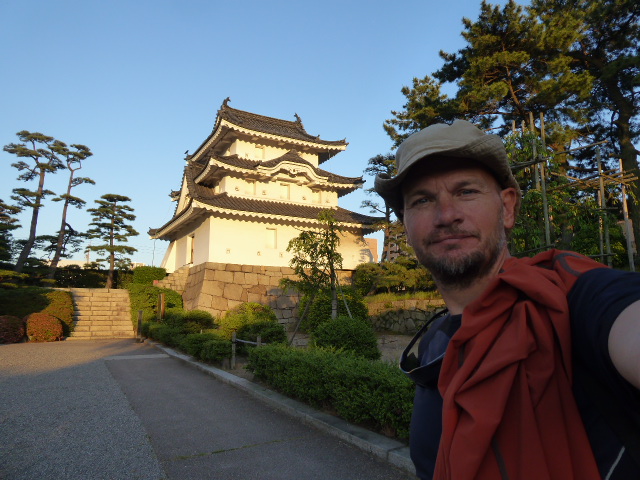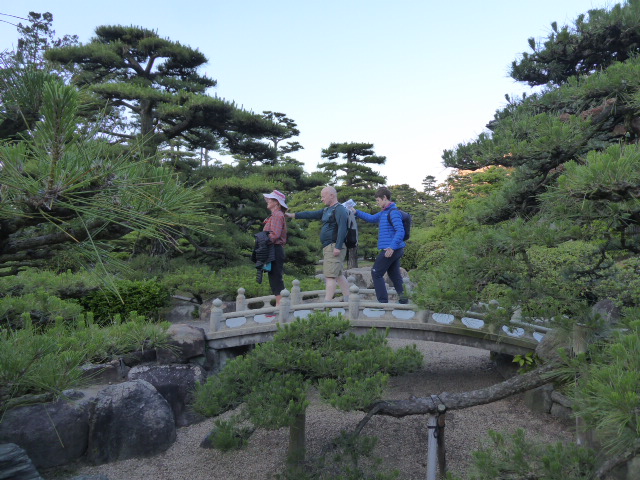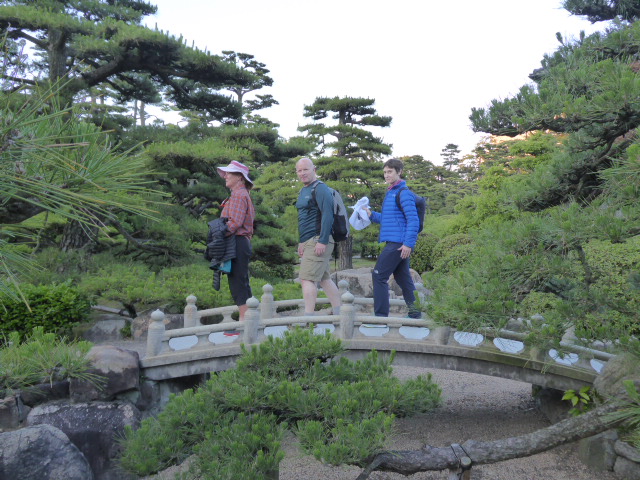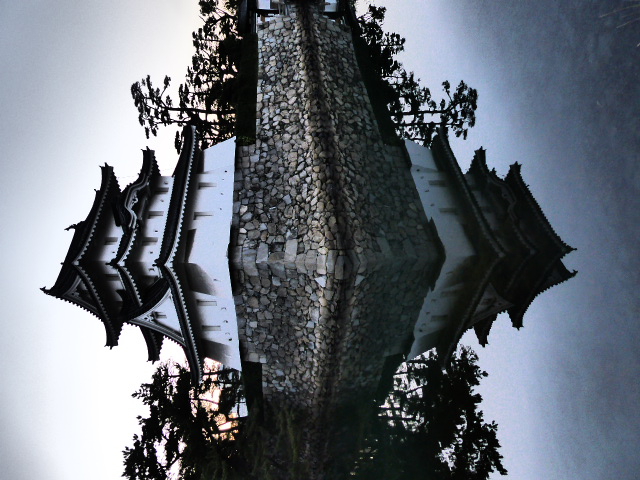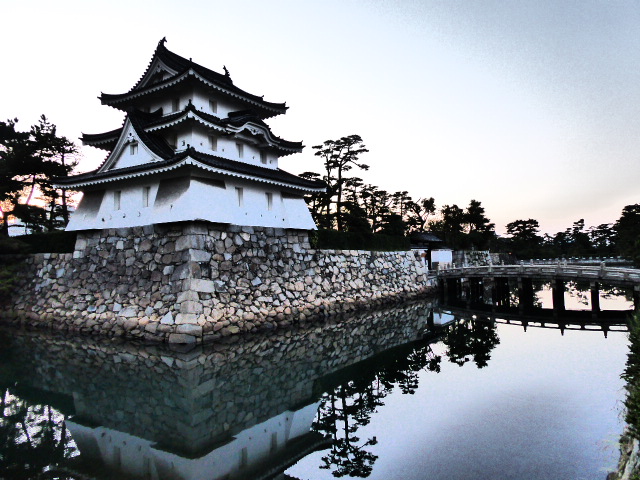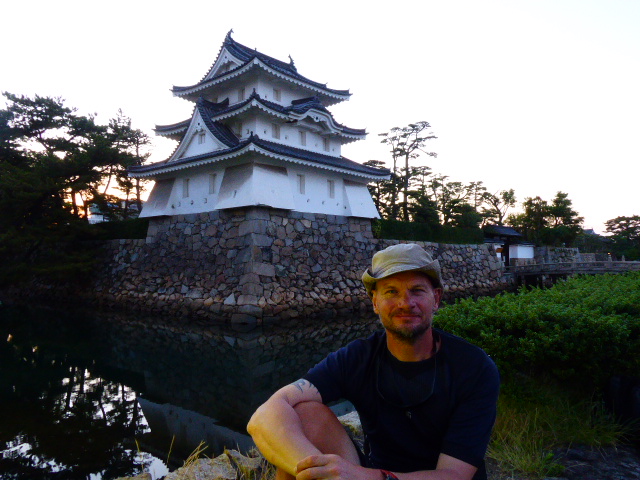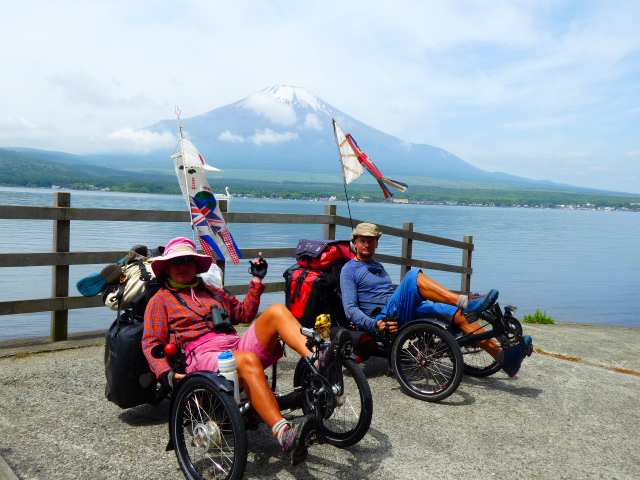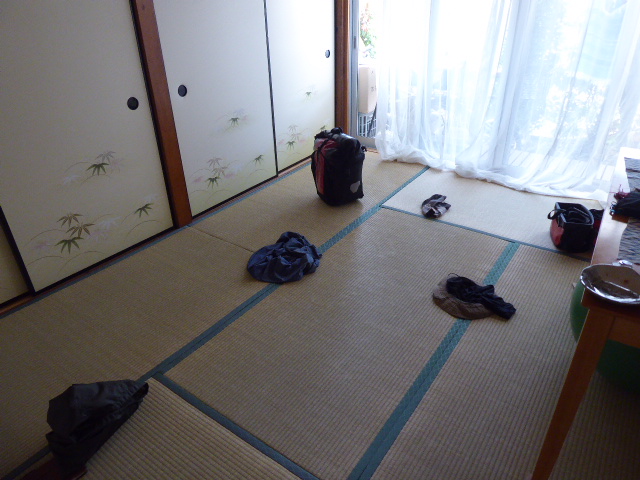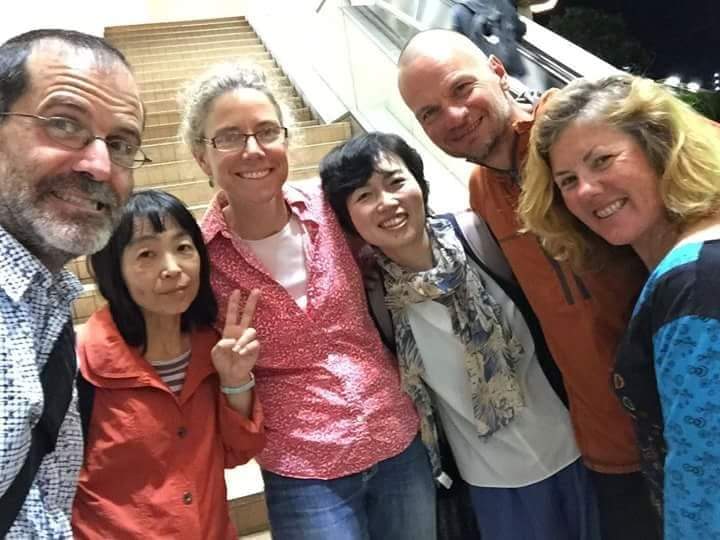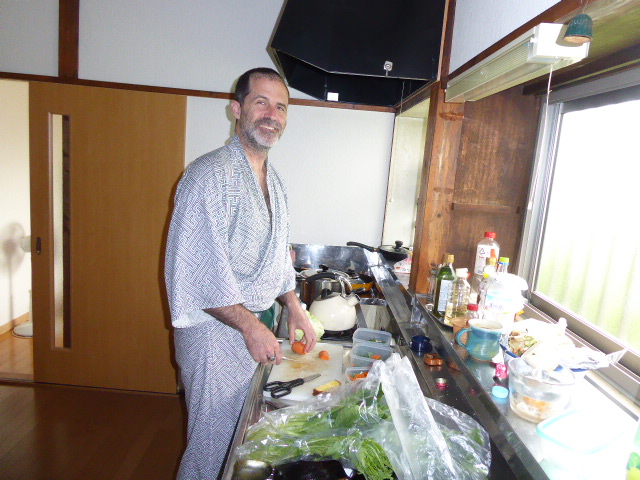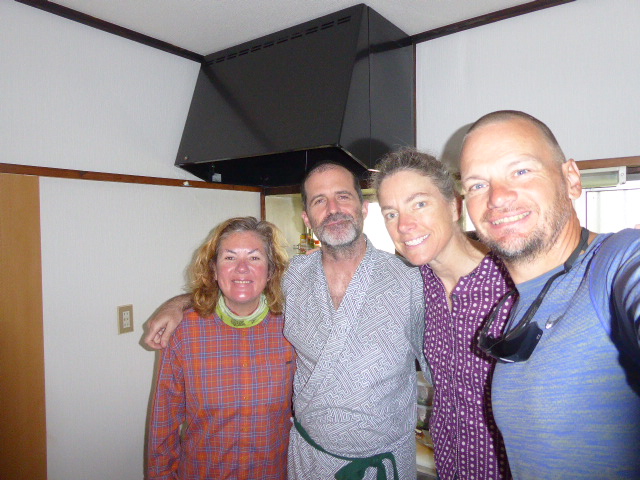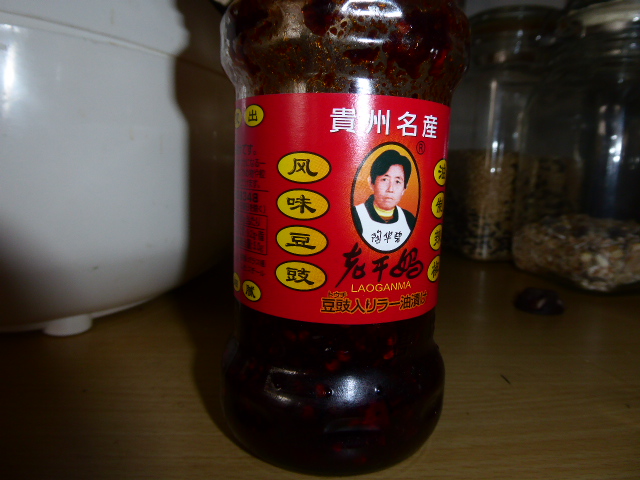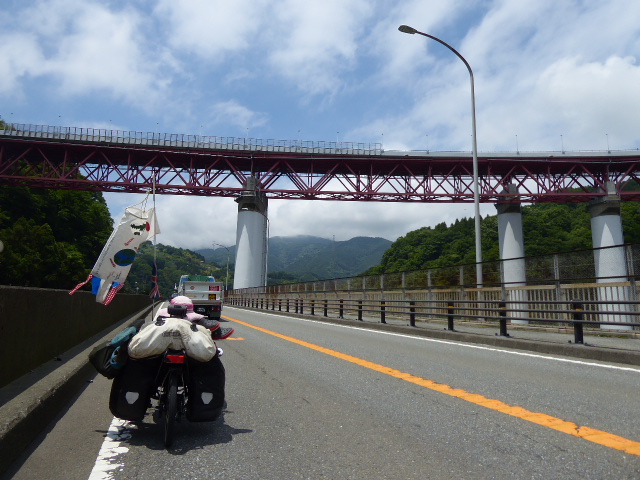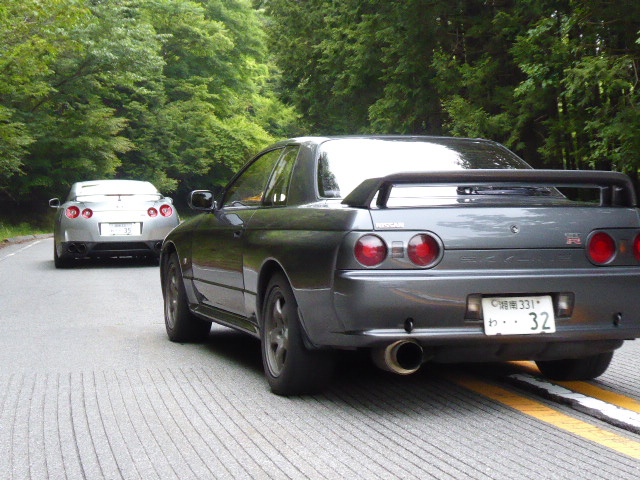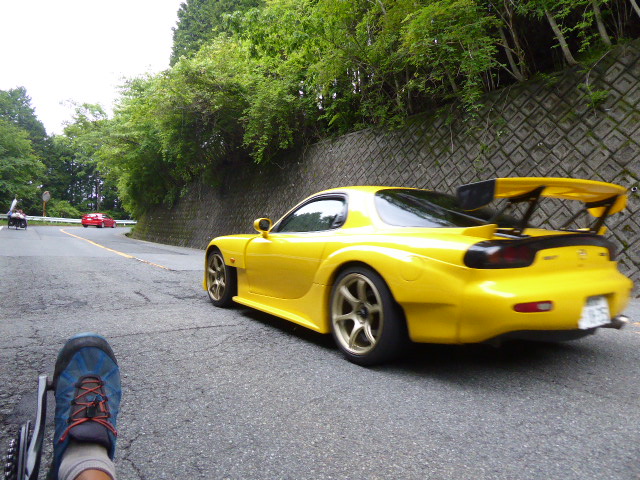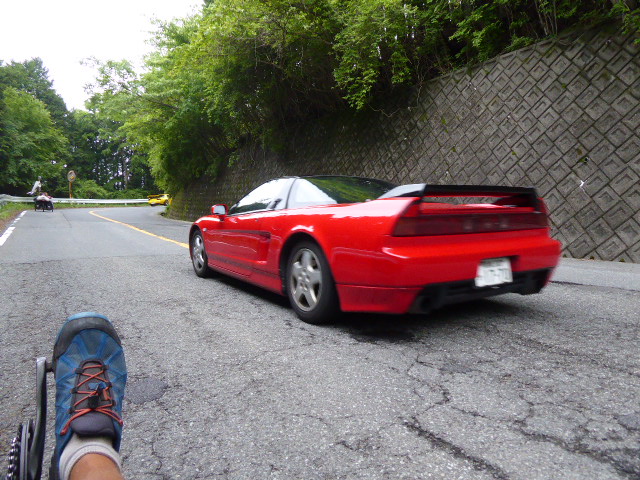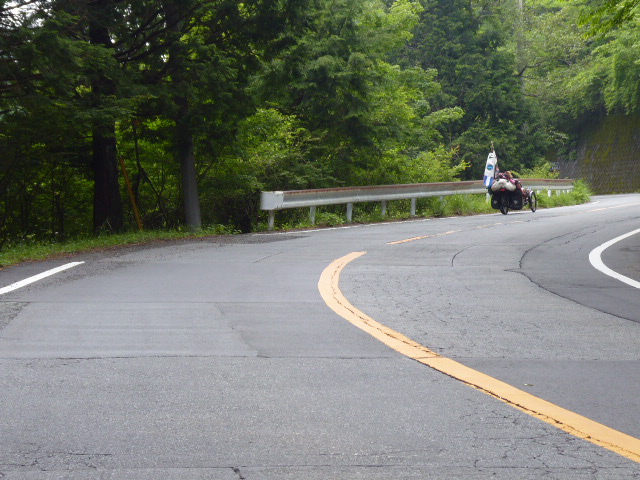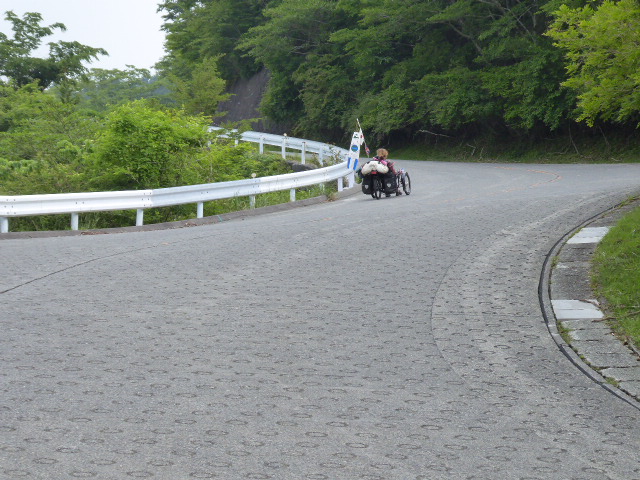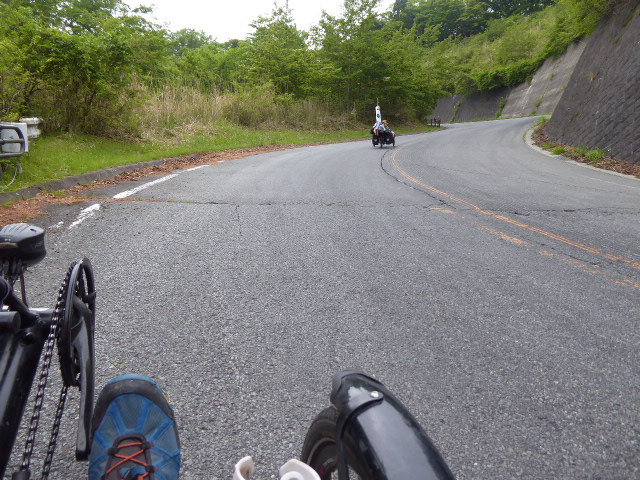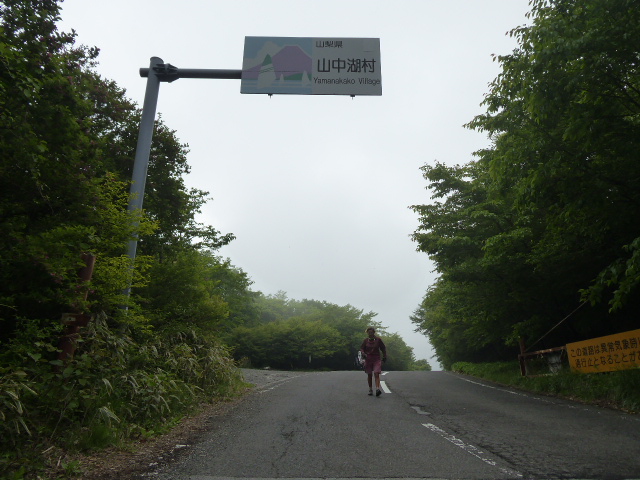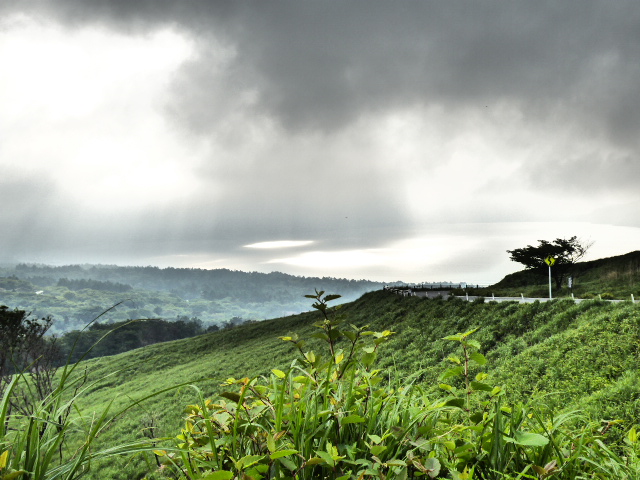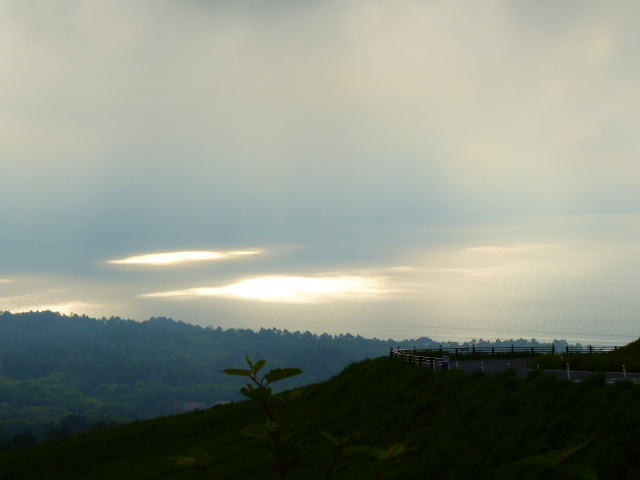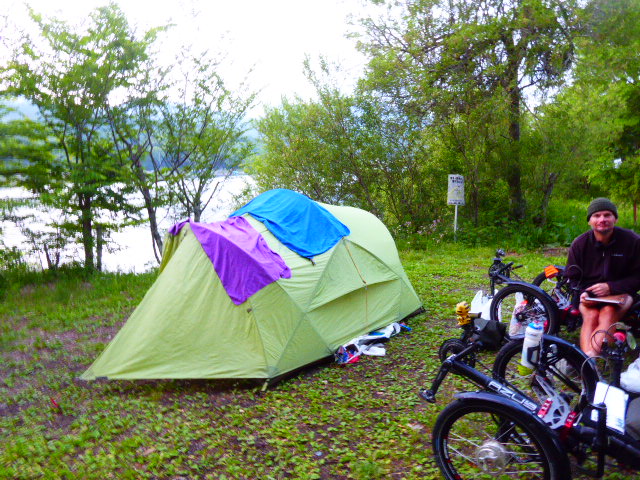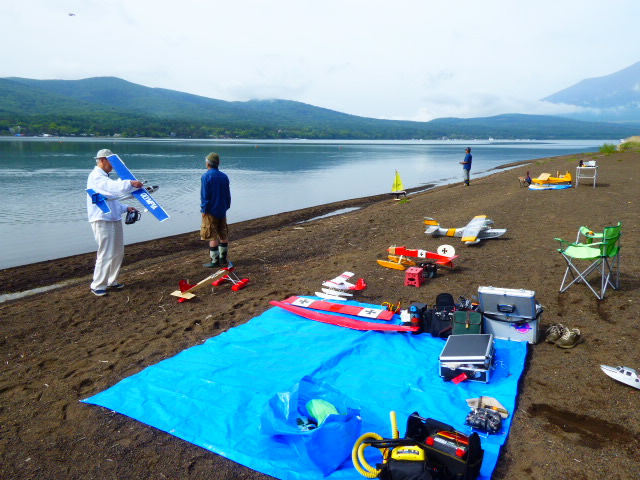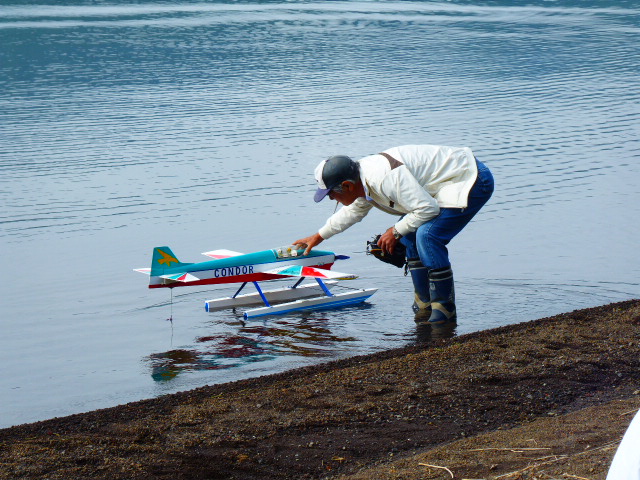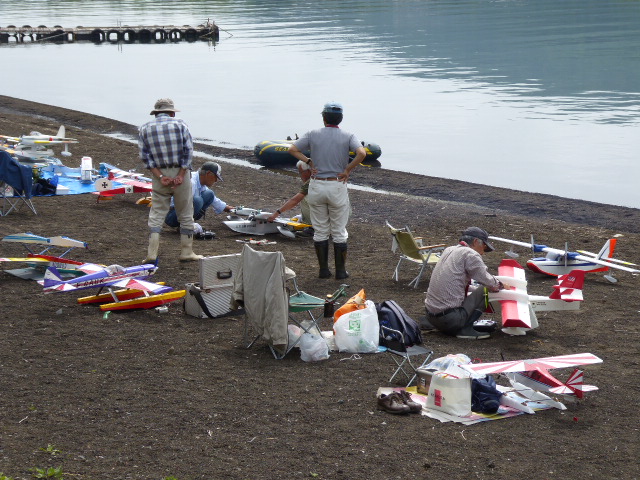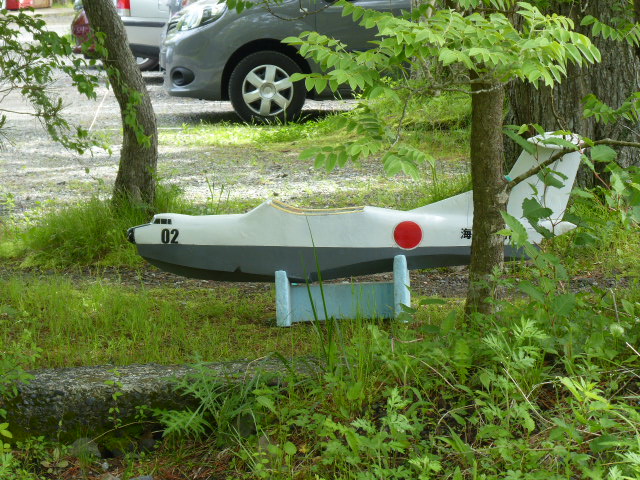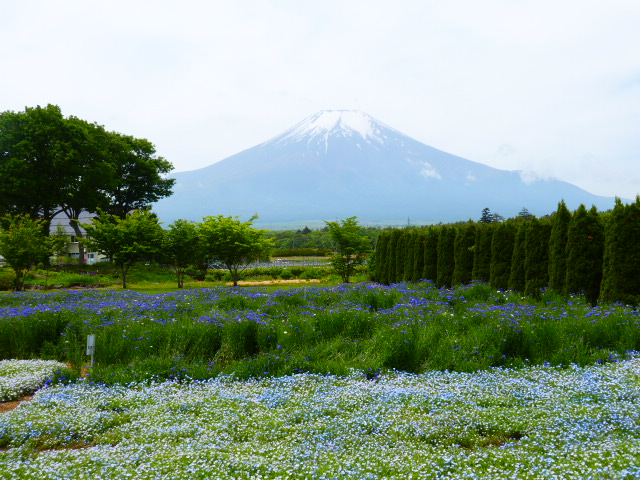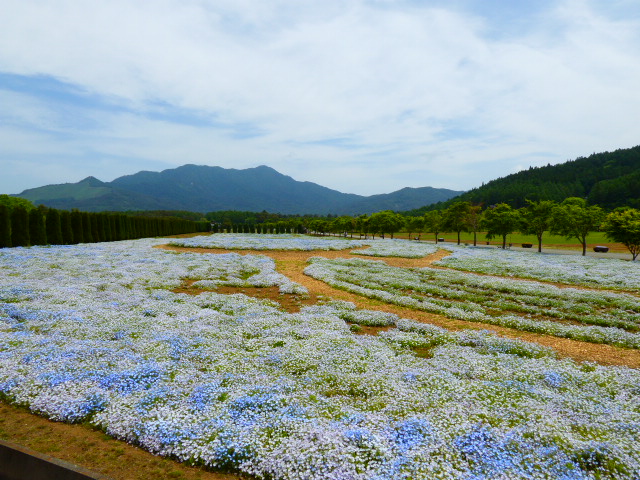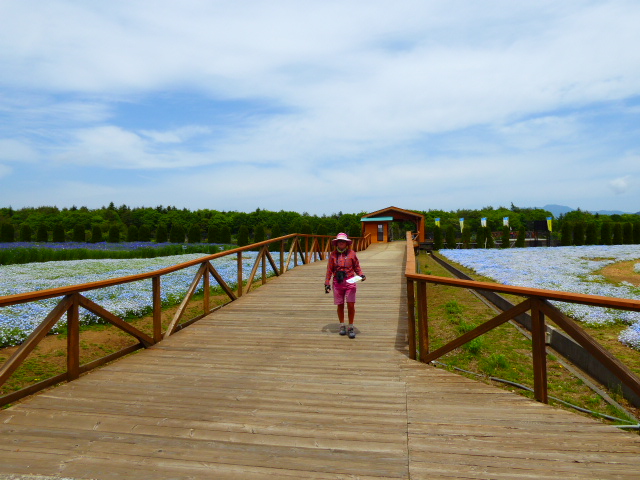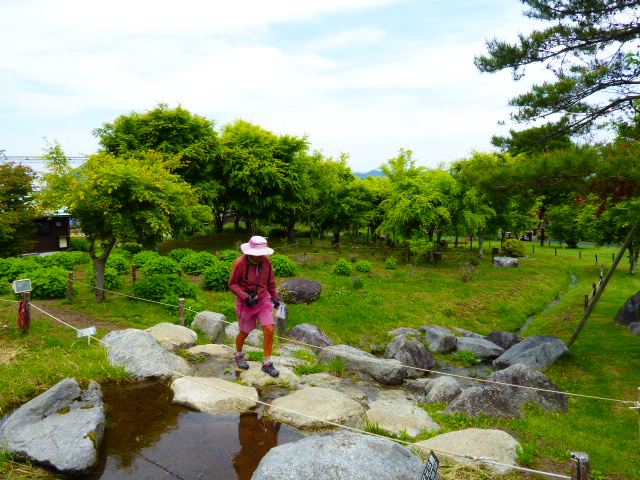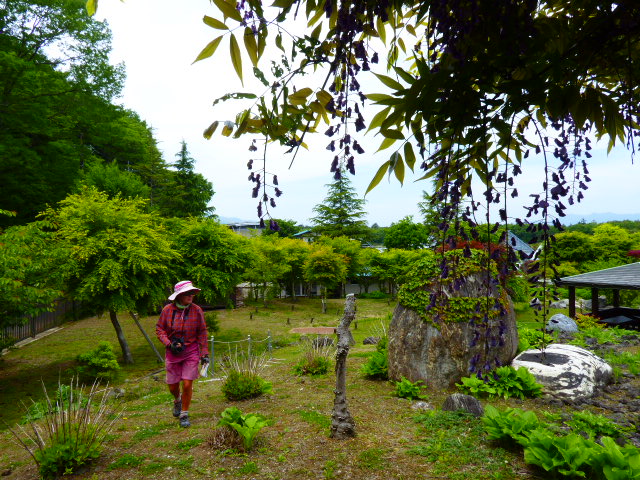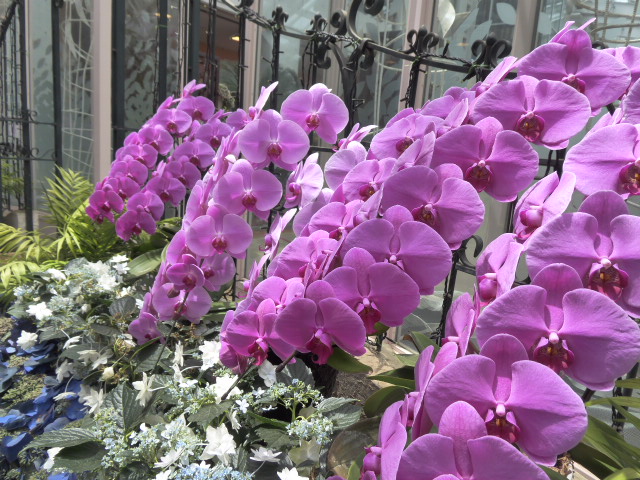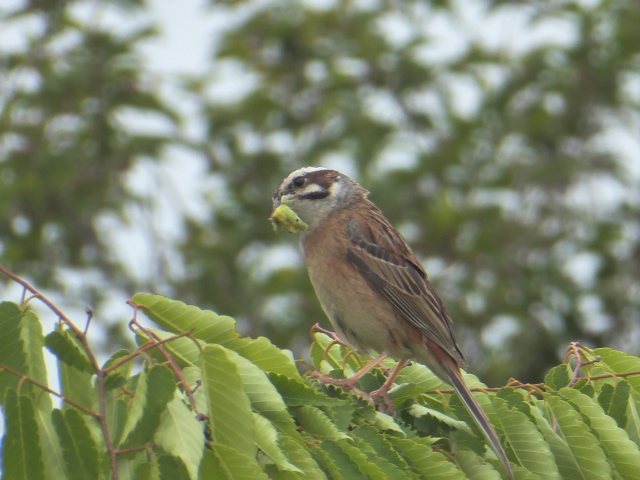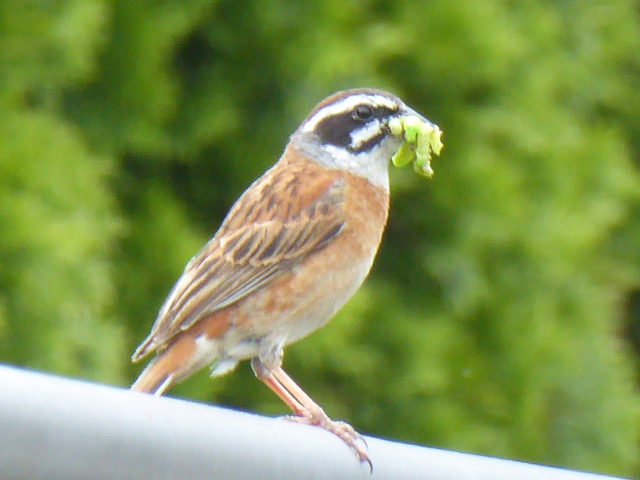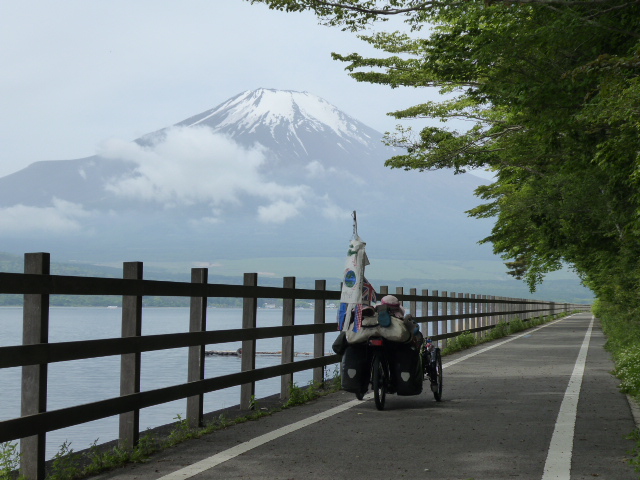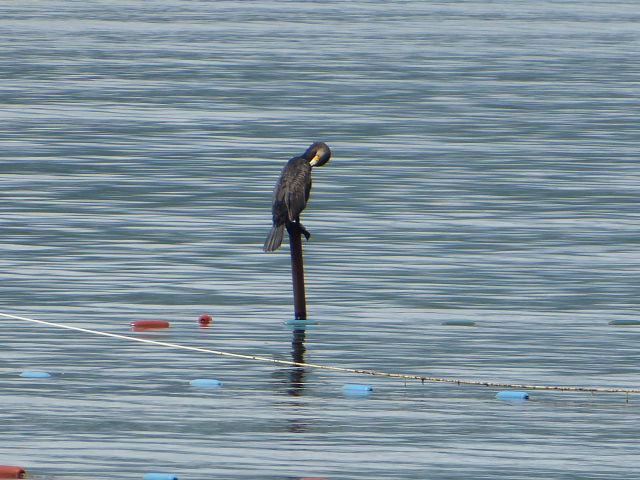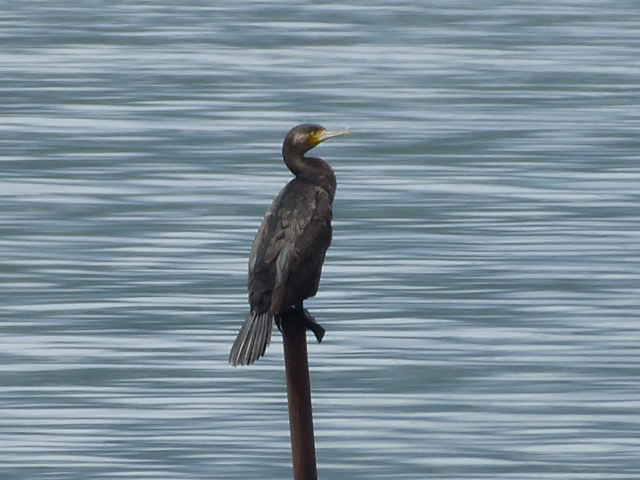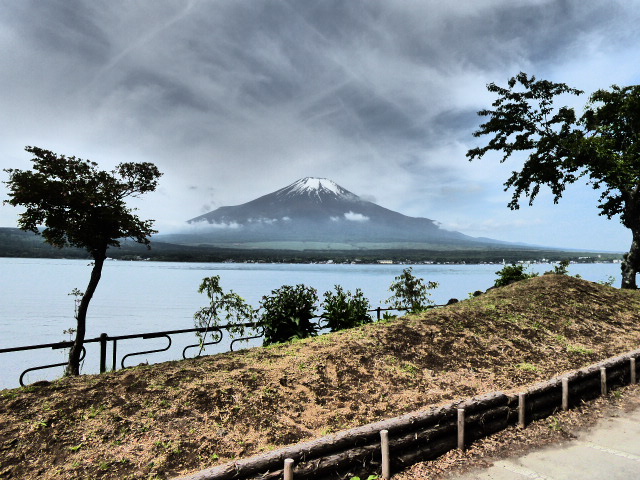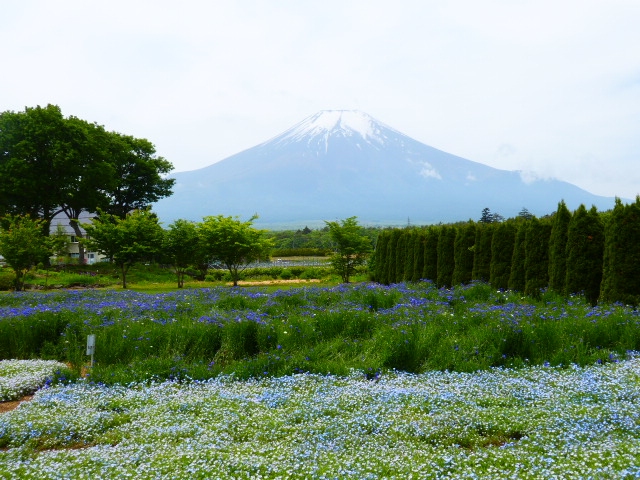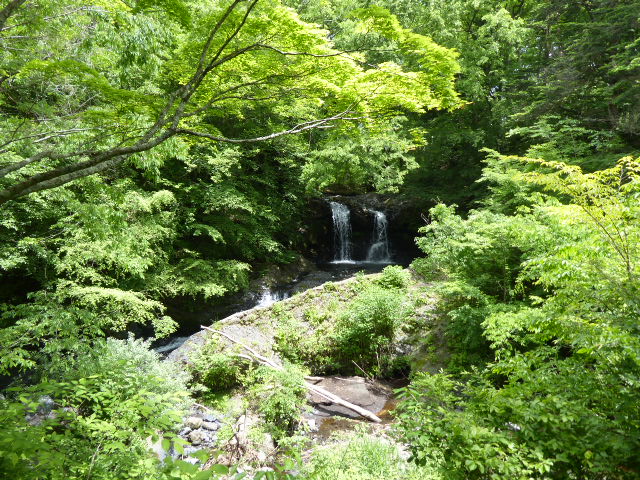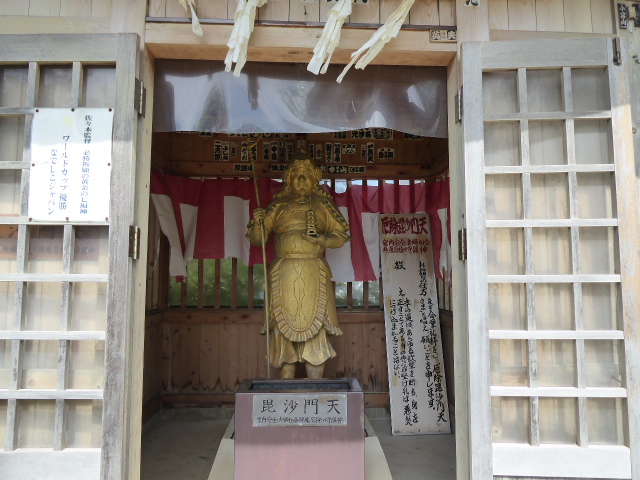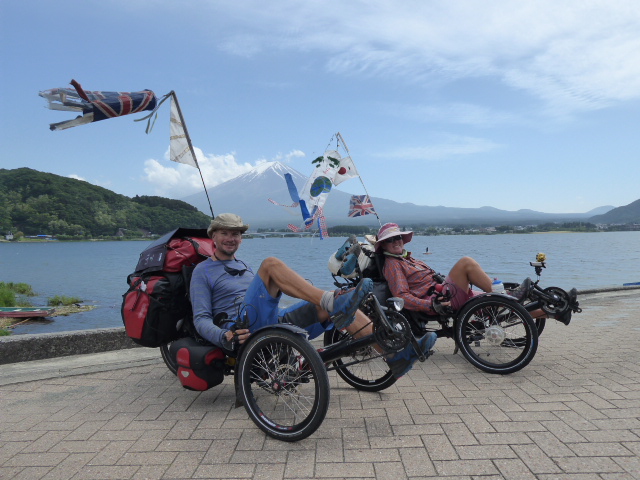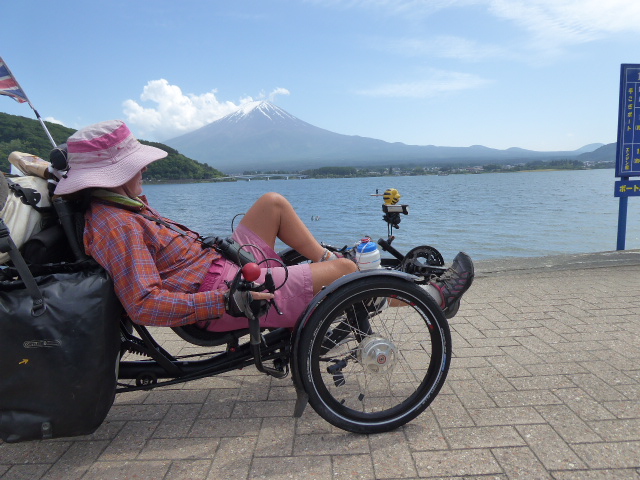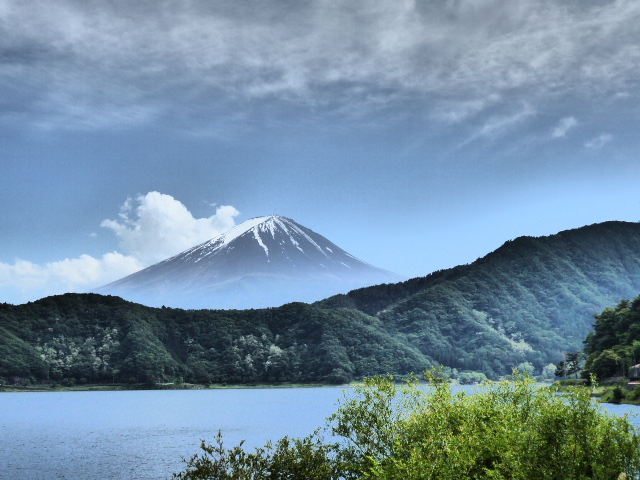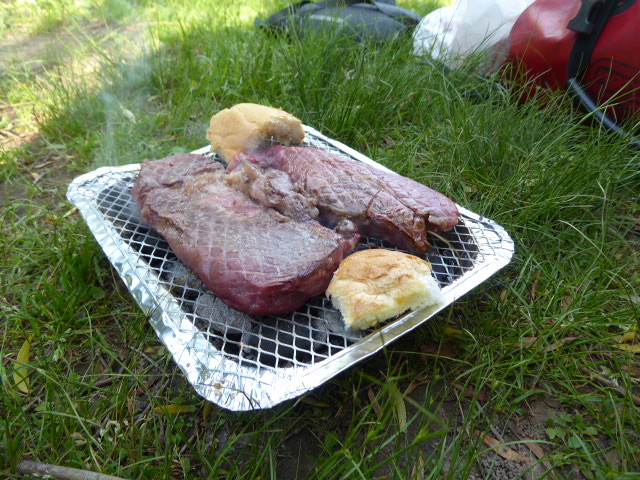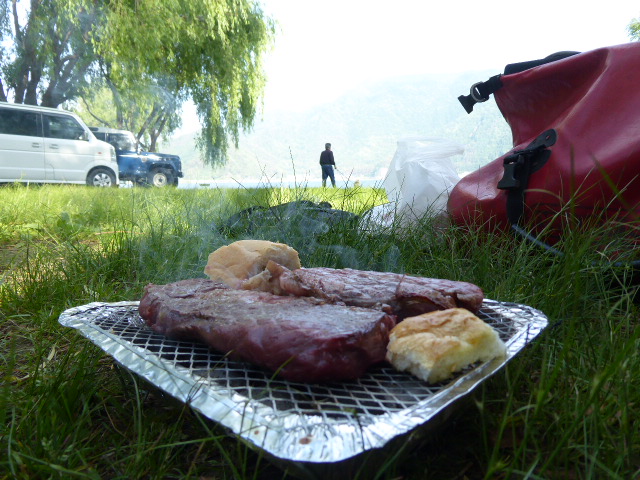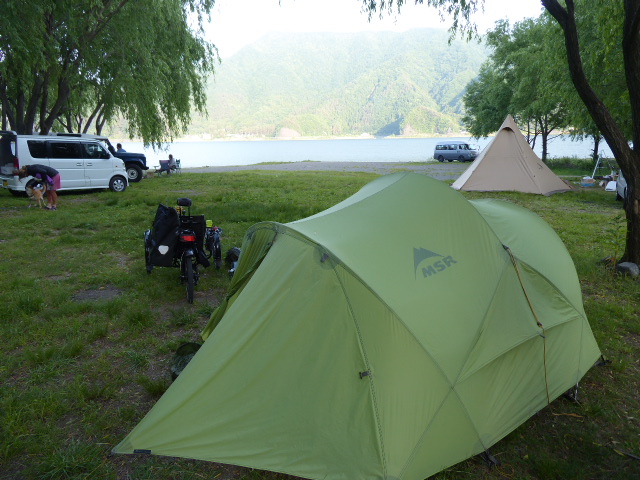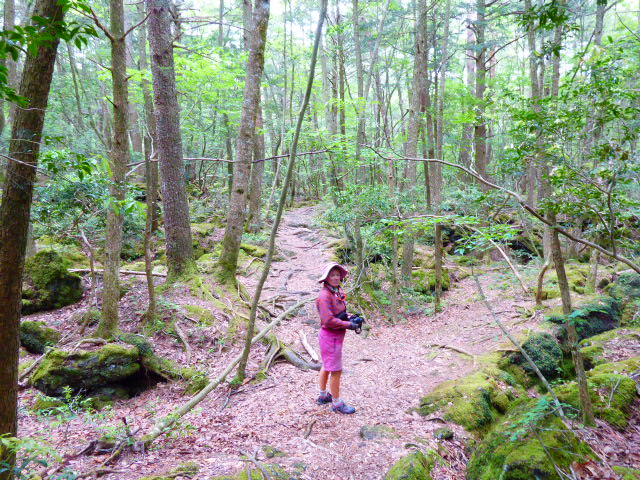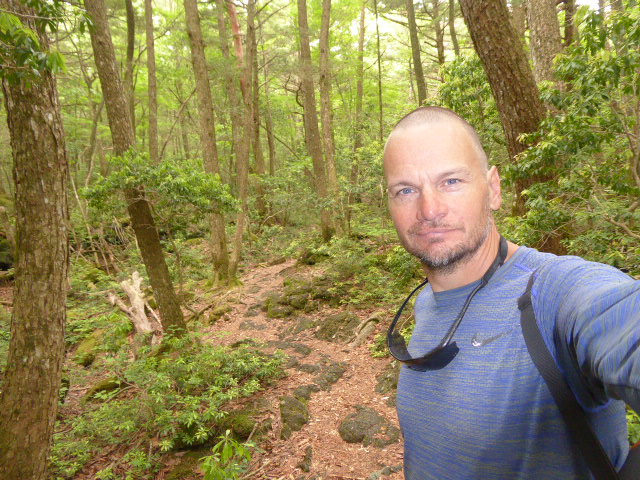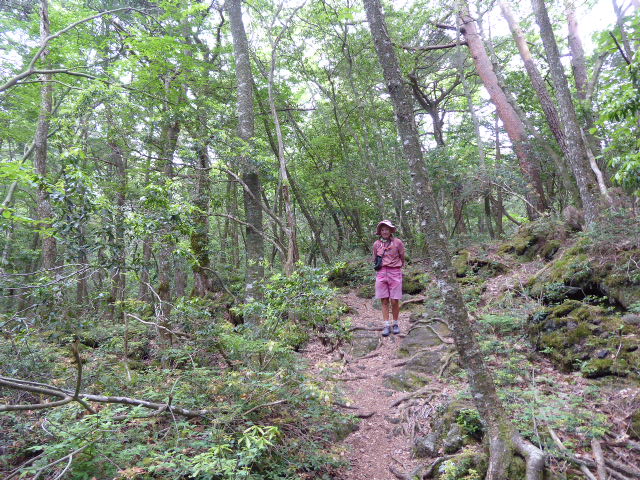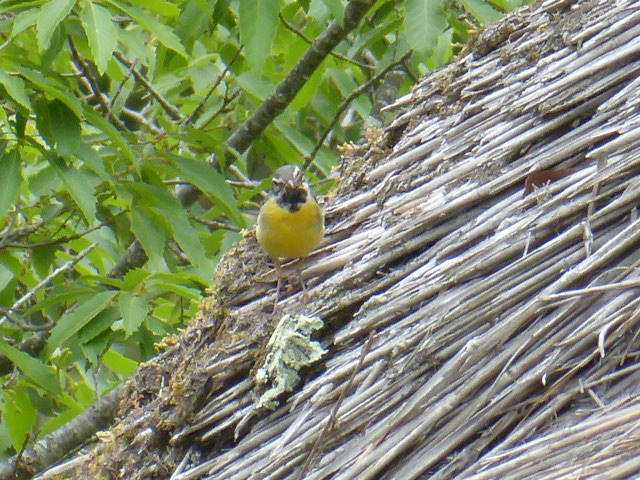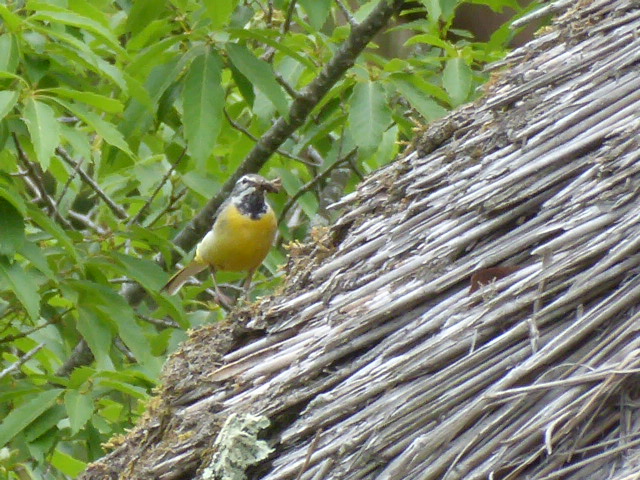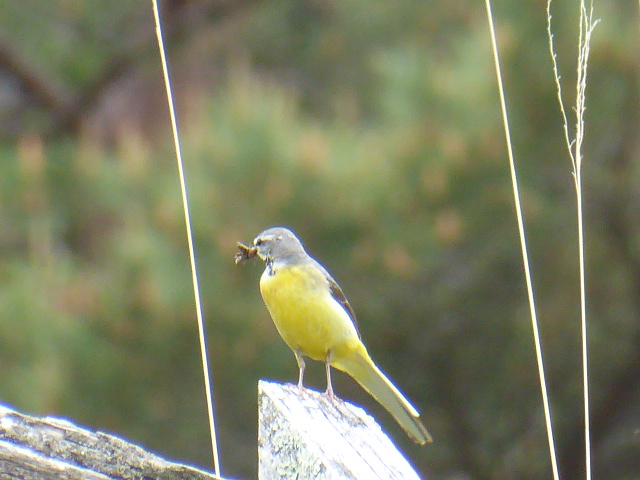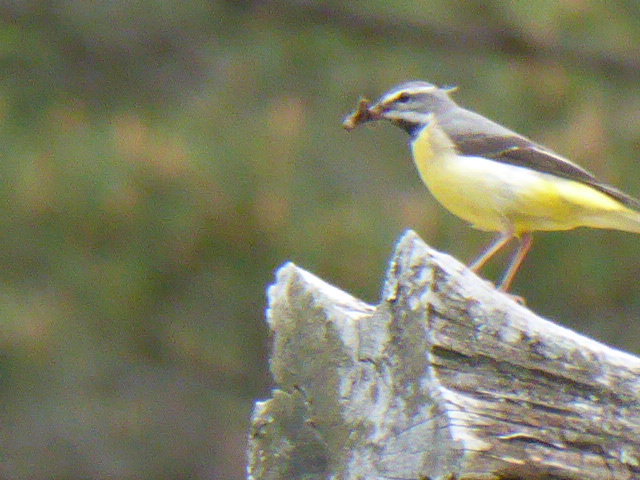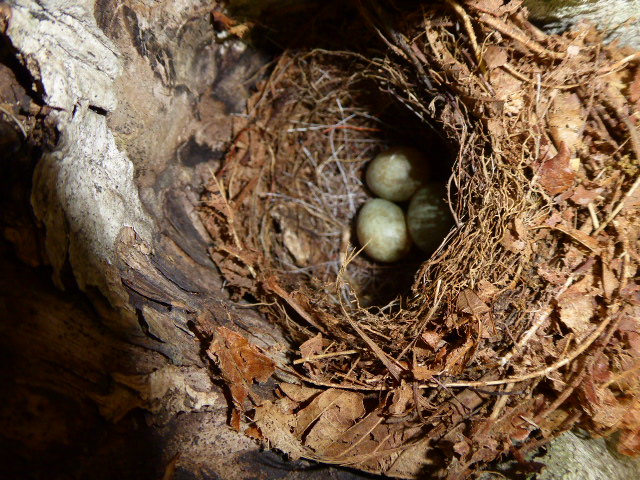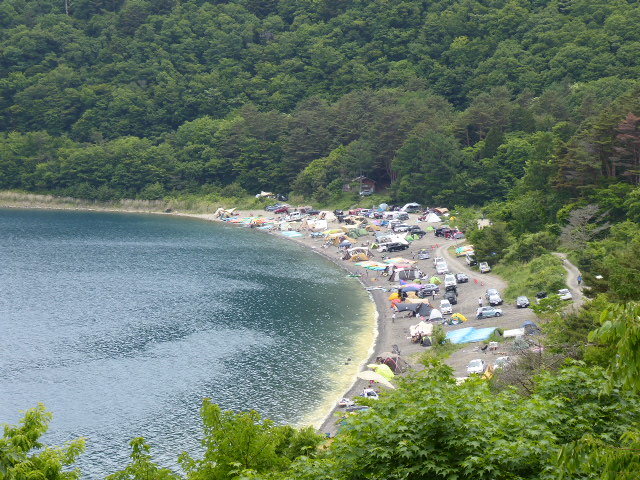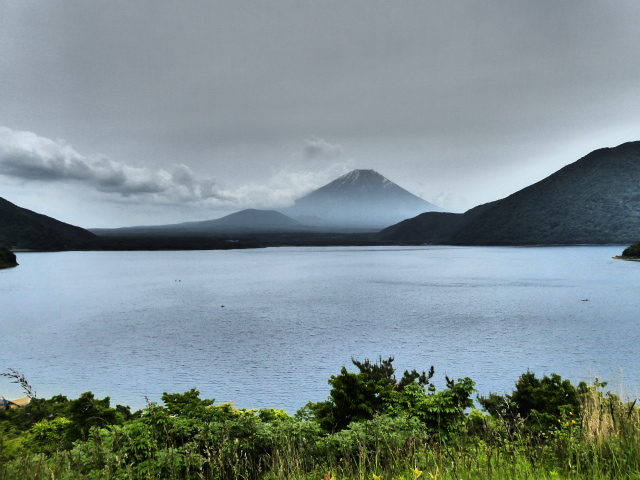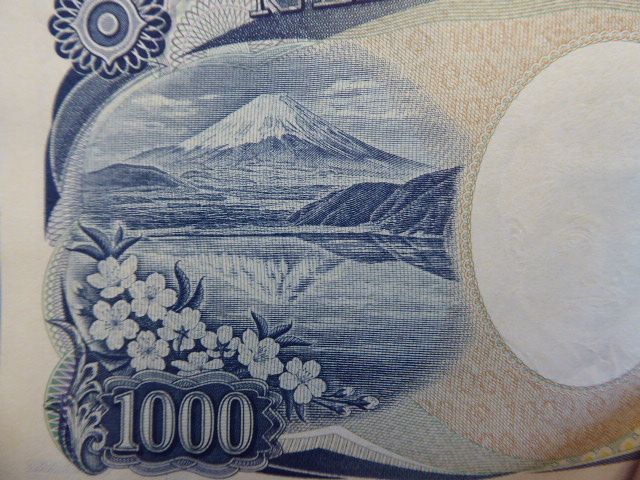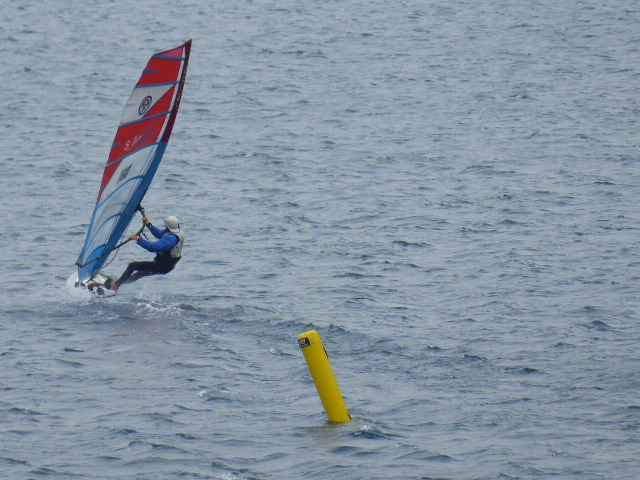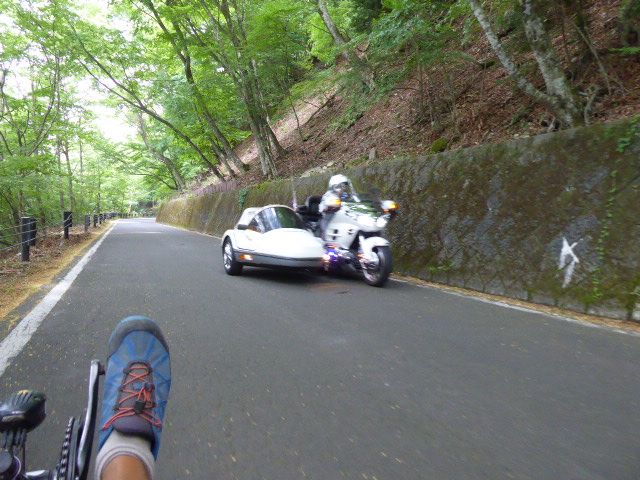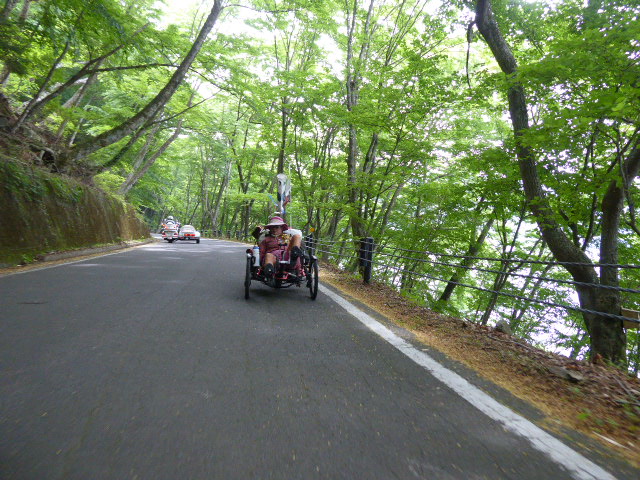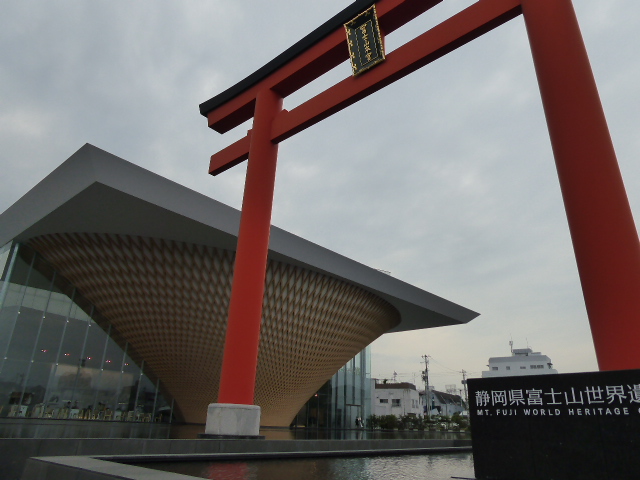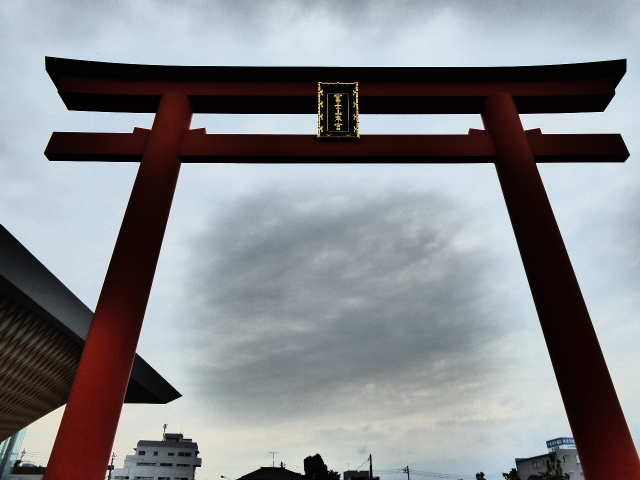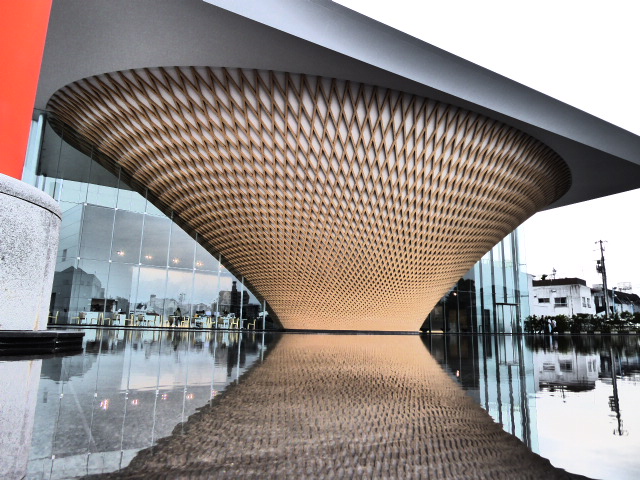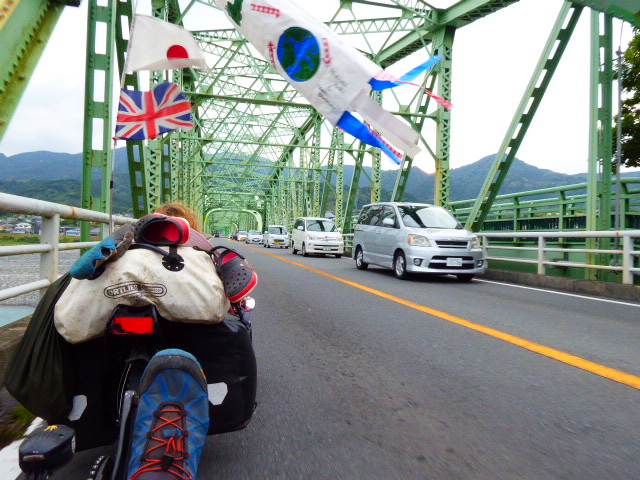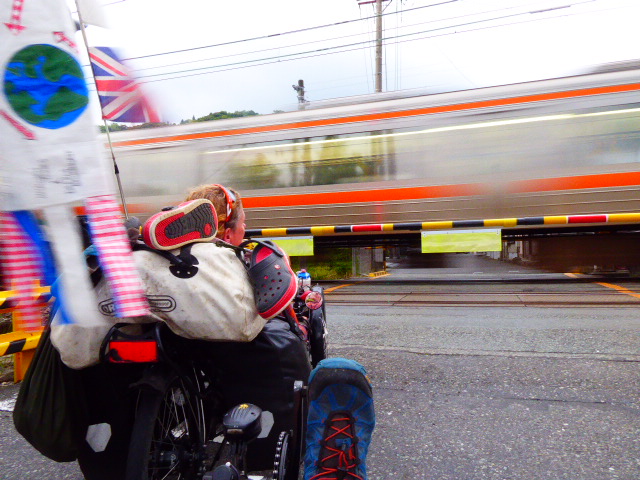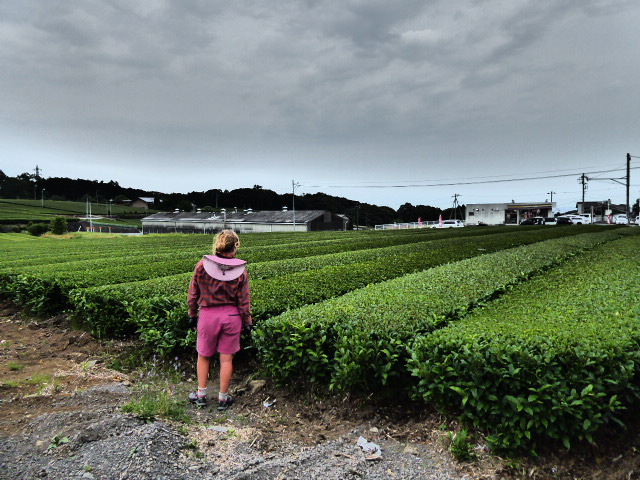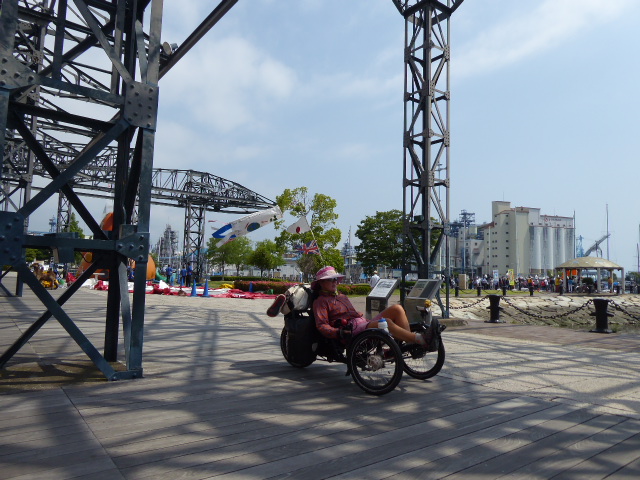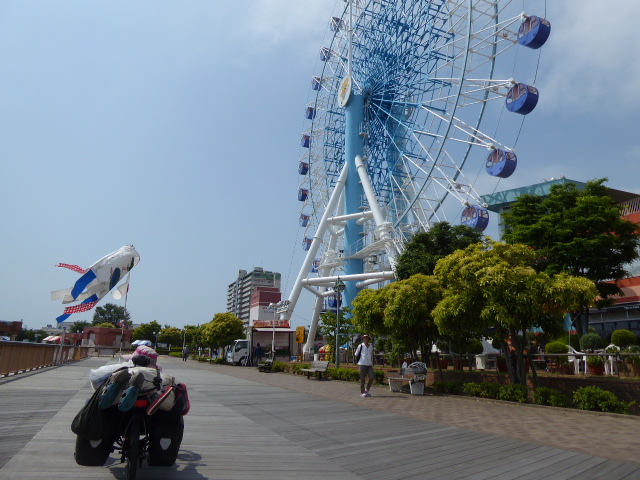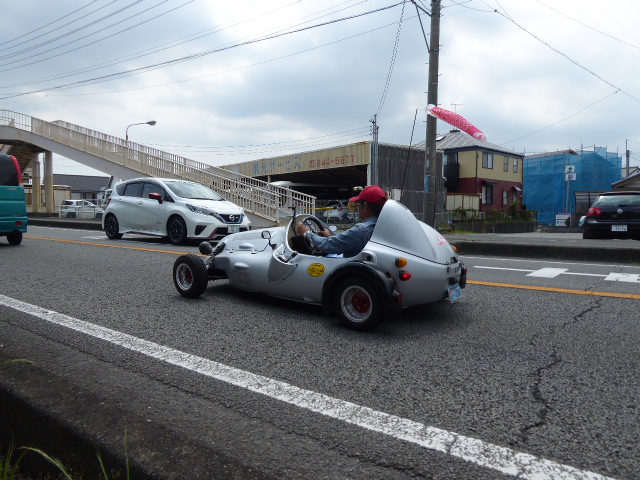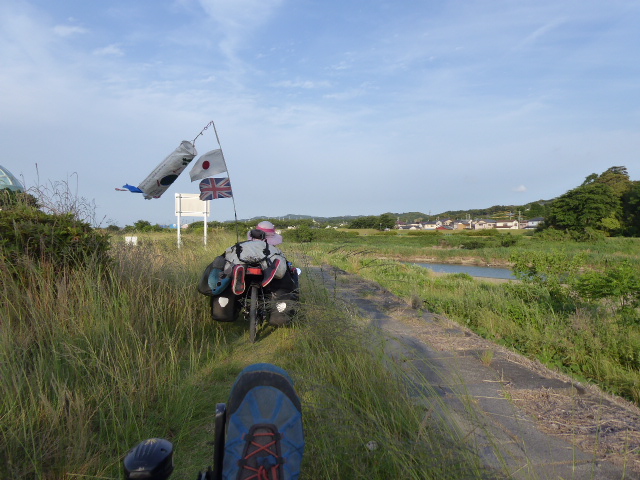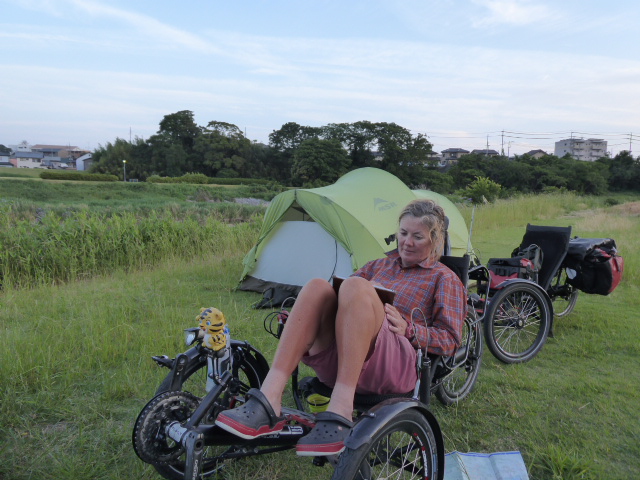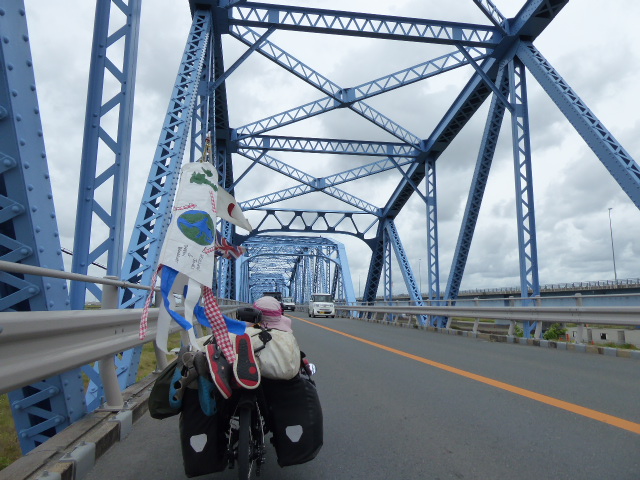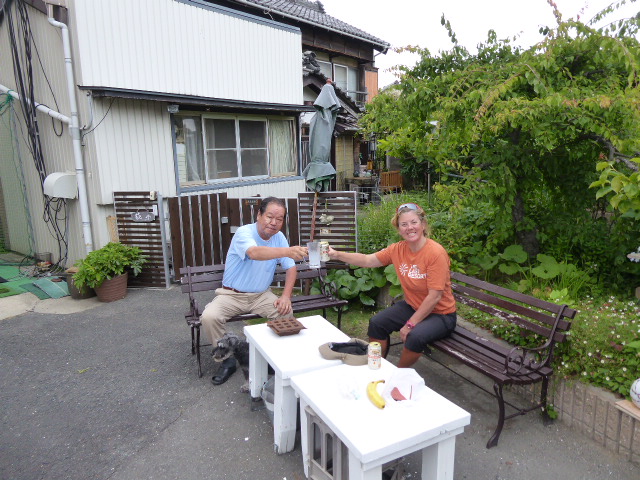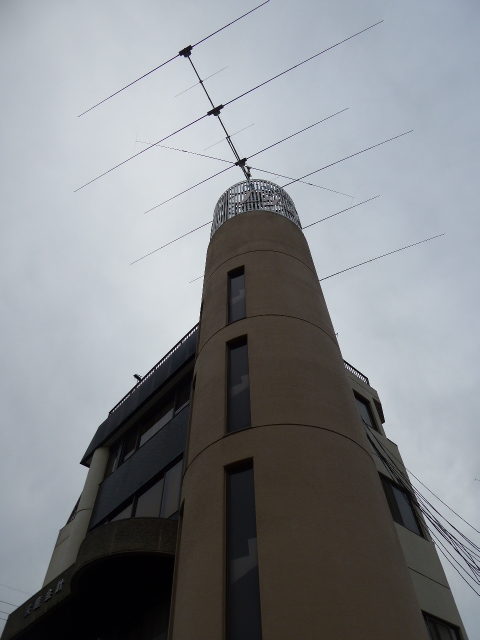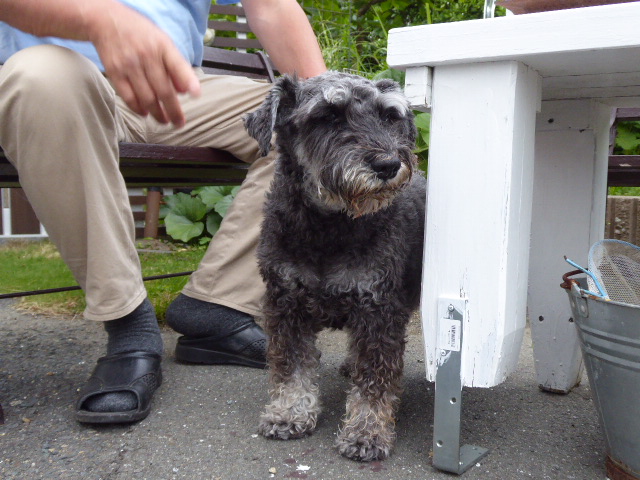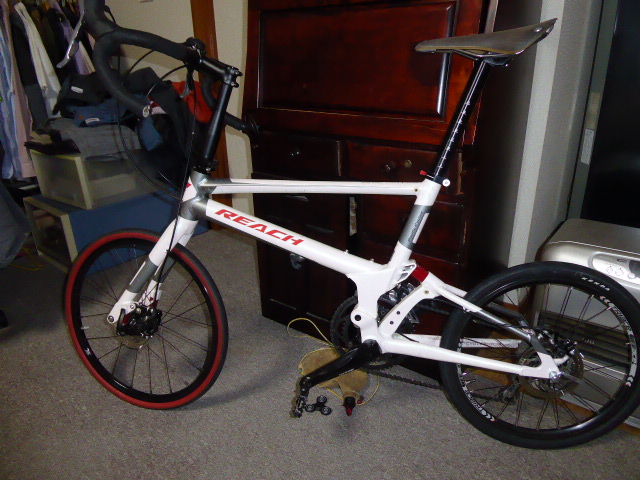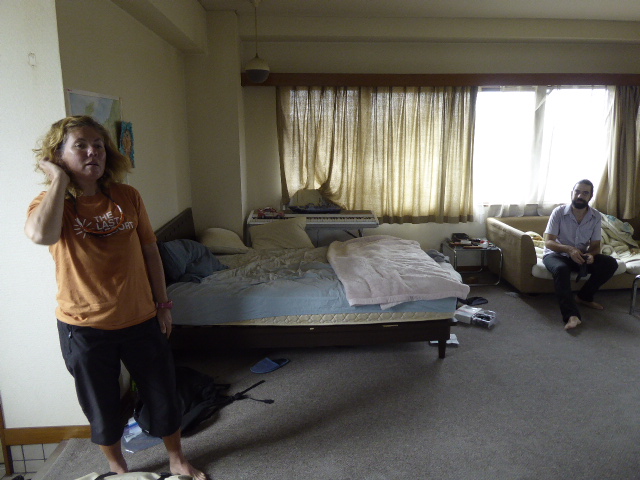Saturday 2nd June
Takamatsu to Hiroshima
After breakfast in Mr Donut by the railway station we board the train for Hiroshima, via Okayama again. Since Sapporo, Daz and I have been hankering for some more cheese pies, which are absolutely delicious. When we come out of Hiroshima station we see a queue around the block… it’s only a cheese pie queue. Daz joins the queue, and we go and get coffees and wait and wait some more. It’s a long queue and service is incredibly slow considering they only sell one product. Finally he reaches the service window. We have 2 each with our coffee – OMG they are so delicious. Then it’s baggage dump time in our respective hotels before more sightseeing!
Obviously the main attraction here is Hiroshima’s Peace Park and the horrendous event of the World’s first atomic bomb used during the 2nd World War. We walk over to Hiroshima’s Peace Memorial Park the most prominent feature of the city. Even visitors not looking for it will likely stumble upon the large park of over 120,000 square meters. Its trees, lawns, and walking paths are in stark contrast to the surrounding downtown area.
Before the bomb, the area of what is now the Peace Park was the political and commercial heart of the city. For this reason, it was chosen as the pilot’s target. Four years to the day after the bomb was dropped, it was decided that the area would not be redeveloped but instead devoted to peace memorial facilities. The park’s main facility is the Peace Memorial Museum. Consisting of two buildings, the museum surveys the history of Hiroshima and the advent of the nuclear bomb. Its main focus though is on the events of August 6: the dropping of the bomb and its outcome in human suffering. The personal details displayed are harrowing and serve to remind all that we should not take peace for granted.
We spend a long time in the museum, the harrowing stories, details and displays vividly depict the build up and aftermath of the event. Later, on the edge of the park we visit the A-Bomb Dome, also known as the Hiroshima Peace Memorial. The Dome is what remains of the former Prefectural Industrial Promotion Hall. The building served as a location to promote Hiroshima’s industries. When the bomb exploded, it was one of the few buildings to remain standing, and remains today. A UNESCO World Heritage Site, the A-Bomb Dome is a tangible link to Hiroshima’s unique past.
As a bright backdrop to our sightseeing today it’s festival time in Hiroshima. Hiroshima really comes alive over the three nights of Tōkasan, one of the three major festivals in Hiroshima. Tokasan is the summer festival for the god of Toka Daimyojin at Enryuji Temple, Mikawa-cho, Hiroshima City. Since the name Tokasan can be a pun on the “10th day” (toka) in Japanese, it is held annually June 8-10. The festival is also known as the Yukata Festival. Yukata is a kimono of lightweight cotton, like a summer robe. People in Hiroshima are supposed to begin wearing their yukata from this day on. Over 300,000 people will be donning their yukata for the first time this year and will take over Chuo-dori and environs to promenade, play festival games like fish scooping, buy strange inflatable novelties and stuff their faces with unidentifiable food on sticks being sold from one of the hundreds of stalls lining the streets.
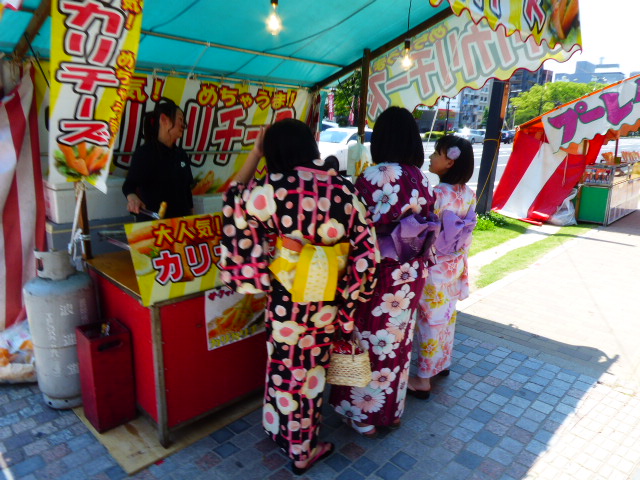
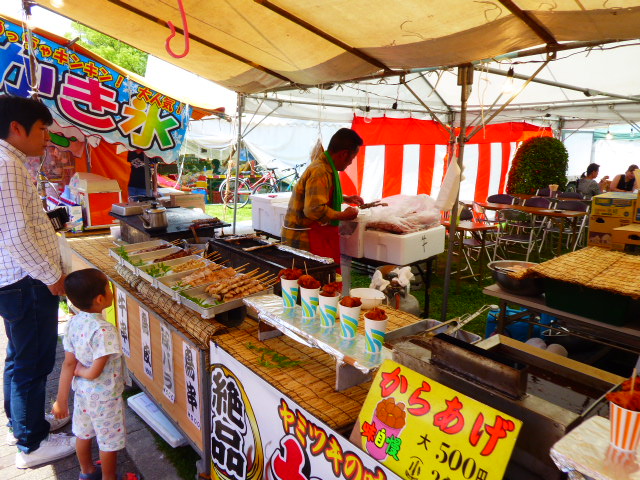
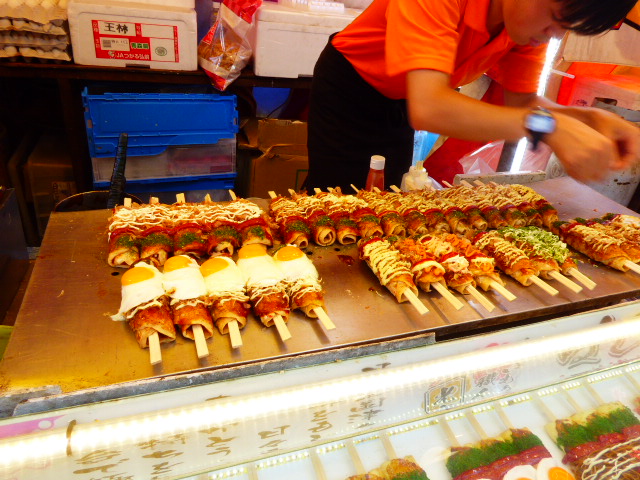
As well as parades and summer bon dancing, there is taiko drumming and other performances on stages dotted around the center of town. Our favorite place is Yukata de Bon Dance in Shintenchi Park where people of all ages dance to classic Japanese songs crackling out of the PA. It’s really an incredible sight so we stand, mouths agape, watching the action. Later we’re even treated to a performance by Japan’s equivalent to Val Doonican.
The streets are packed and it’s a relief to get back to our hotel for the night!
Sunday 3rd June
Hiroshima
We have a relaxing morning before heading back for more Takosan festival and sightseeing.
Our first stop is the Museum of Contemporary Modern art and its park.
Later we return to the Peace Memorial Park again, this time to see the Cenotaph for the A-Bomb Victims. The Cenotaph is an arched tomb for those who died because of the bomb, either because of the initial blast or exposure to radiation. Below the arch is a stone chest holding a register of these names, of which there are over 220,000. We also visit the Hiroshima National Peace Memorial Hall for the Atomic Bomb Victims. An effort by the Japanese government to remember and mourn the atomic bomb victims, to pray for eternal peace, to deepen world public understanding of the horrors of atomic bombs and to convey the A-bomb experience to later generations.
We also take a view of the Peace Park from the Observation Deck of a nearby high rise tower. This beautiful wood decked area gives a commanding view of the A Bomb Dome and surrounding park.
The viewing gallery is absolutely spectacular. And what’s really fab is the spiral walkway that takes you back to ground level, there’s even a slide beside it for the inner child in us. Of course we have a go! 14 floors of helter skelter!
We even manage to fit in a Samurai show. We’re not entirely sure how historically accurate it is or even if it bears any resemblance to the real thing but it’s good fun and best of all BK dress up as Samurai warrior and Princess.
Then it’s time for more food and a gaming bar – there’s all sorts of bar games – our favorite being Pong!
Monday 4th June
Hiroshima to Miyajima Island
Before we head to the train station to go to our next stop, we catch a bus to see Hiroshima’s recycling incinerator. Yes you heard right, we are sightseeing at the Recycling Plant! Admittedly it seems strange to suggest that tourists visit a garbage plant, but this world famous, stunning structure built by a famous Japanese architect is well worth a visit.
This is one of the buildings commissioned by Hiroshima’s government under the 2045: City of Peace & Creativity Project. This project was designed to commission innovative buildings around Hiroshima in an effort to create an “inspirational cityscape”. The project started on the 50th anniversary of the A-bombing of Hiroshima and there are currently 6 projects completed in the city. The incineration plant is certainly the most elaborate and ambitious of the projects thus far.
Completed in March, 2004, this 400 million yen incineration plant project is the creation of Yoshio Taniguchi- a Japanese architect responsible for the redesign of the famous Museum of Modern Art in New York (MOMA).
Taniguchi has called this Hiroshima project the ‘museum of Garbage’. The plant successfully incorporates not only an educational aspect, but also functional beauty. It is a great place to learn about not only how garbage is sorted and incinerated, but also how a practical building normally connected to dirt, grime and things we throw away (and hope to never see again), does not in fact, have to be ugly. The big glass walls inside the building offer not only an interesting perspective on the machines used for waste disposal, but also a connection to the natural environment outside.
The site itself is built on reclaimed landfill and is located at the end of Yoshijima-dori, the street that stretches from the Peace Memorial Museum all the way to the sea, the building rises like a colossal gateway to the blue skies and seas to the South.
Sensitive to the fact that placing such a huge structure at the southernmost point of the island would create a visual barrier between the people and the Seto Inland Sea, museum architect Taniguchi opted to extend the community’s main road as a walkway right through the factory to the waterside. This huge glass atrium effectively slices the plant down the middle, dividing it into two separate halls. This building is like a gateway from the center of Hiroshima to the smaller islands in the Seto-Inland sea.
All in all, this is a very pleasant place to visit.
We head back to the town centre train station, queue for more cheese pies then catch a local train towards Miyajima Island. It drops us at the ferry port and we are soon sailing across the narrow strait to the island. It’s a wonder the ferry isn’t listing to one side as everyone is on the starboard side to catch a view of the Torii Gate that sits in the waters just off the coast of the island. The sight is ranked as one of the top 3 in Japan.
While officially named Itsukushima, the island is more commonly referred to as Miyajima, Japanese for “shrine island”. This is because the island is so closely related to its key shrine, Itsukushima Shrine, in the public’s mind. Like the torii gate, the shrine’s main buildings are built over water.
Miyajima is a romantic place, best enjoyed by staying overnight at one of the island’s ryokan. While there are usually many day tourists, in the evening the area becomes much quieter and more peaceful. There are also wild deer on the island that have become accustomed to people. In the day the deer wander around the same sites as the tourists, and in the evening they sleep along the walking paths. We join the multitudes thronging the small streets, stroking deer and gawking at the Torii Gate. And we’re booked into a Ryokan for two nights, a huge treat so we’re expecting great things!
In the evening we enjoy an amazing 10 course Japanese meal at the Ryokan. This really is the best meal we have had in Japan so far. An aromatic, delicious, traditional, multi course meal washed down with a nice bottle of Saki.
Wonderful. After dinner we take evening walk back to the Torii Gate. The tide is out now and we walk across the floodlit beach and stand before this huge red (well orangey brown), wooden feature.
As the tide slowly creeps towards us this ancient gate and it’s reflection are a stunning juxtaposition to the bright twinkling city lights of the far shore.
Tuesday 5th June
Miyajima
Geocaching day! After a traditional Japanese breakfast, another gourmet treat with numerous tasty dishes, we set off to hunt down some geocaches.
The route takes us up to a pagoda and through parkland as we enjoy sights of the island.
The final geocache is very near the ropeway that goes up Mount Misen. Miyajima Ropeway operates two types of aerial ropeway systems, circulating and funicular in series, which is unique in Japan. These 2 cable car systems take us very close to the summit of Mt Misen where we enjoy spectacular views of the Seto Inland Sea and primeval forest. However Brett has decided to walk up the mountain and finds us drinking coffee and eating snacks in the cafe at the top! No worries about the amount of food we’ve consumed, we’ll soon be back on the bikes!!
Unfortunately the weather is getting worse. The rain and mist obscuring some of the views and we’re all starving so we decide to take the cable car back down and find a late lunch but Brett is heroically determined to make the summit and the temple trail. It’s several hours before we see him again, literally steaming from his endeavours, and not overly impressed with his scenic adventure. Meanwhile we’ve finally grasped the opportunity to taste a local delicacy, baked oysters. And what oysters they are, big and fat and very fresh and locally sourced. They were very meaty, nice, but not really the taste sensation we were expecting. Daz still raves about raw oysters but I’m not convinced that’s a taste sensation that requires repetition!
We spend the rest of the rainy day enjoying a long game of cards and coffee with a view out over the strait from the upper floor of Starbucks! Brett is making an incredible comeback and the pressure is on as we’re running out of card playing opportunities!
Wednesday 6th June
Hiroshima
After another extensive spread of Japanese tasty morsels it’s time to leave our Ryokan. The food has been stunning but the Ryokan wasn’t what I imagined as a traditional Japanese Inn and the bathing area was a bathroom with one wooden tub or the delux 2 wooden tub version filled with boring old tap water. I was expecting a traditional, communal bathing area with a sauna and outside pool. So I may have to research another Ryokan experience – I need to experience a traditional Japanese Inn before I leave Japan.
Today we’re kayaking through the Torii gates. When we booked our guide was a bit dumbfounded by our insistence that we were doing it despite the torrential rain forecast. But actually the weather is fairly kind to us and we paddle down the coast and then return to paddle through the Holy gates. Horuna our brilliant guide pointed out the sights and told us the correct ritual to perform before paddling under the iconic gates.
After kayaking it’s back to Hiroshima and a baseball game, Hiroshima Carps v Nippon Ham Fighters from Hokkaido. An assistant in 7/11 helped us buy the tickets, there’s a ticket machine in every 7/11 – how cool is that!
We could only get tickets for the NHF stand but when they take an early lead we think we’re in the winners arena. Japanese baseball is an amazing experience. There is a special song for each member of the team so when they come into bat their song is sung over and over again whilst they battle against ‘No balls’, strikes and very occasionally actually make contact with the ball.
These are 2 of the top teams in Japan but even so runs are rare and the final score is only 4:3 with the Hiroshima Carps coming in with a last minute big hitter to snatch victory from the jaws of defeat. We had such a great time that I’d seriously consider another game. It was 3.5 hours of great entertainment!
Thursday 7th June
Today is a very sad day. We’re leaving BK today but first a trip to the Mazda Factory.
The Mazda Motor Corporation, founded in Hiroshima in 1920, still retains its corporate headquarters in the city of its origins. In addition to the headquarters, Mazda owns a large plot of coastal land which accommodates research and development laboratories, factories, and shipping facilities. In addition the complex has its own fire stations, hospital, education centre and workers’ accommodation. The company museum and part of a factory are made available for public viewing. Like Toyota to Nagoya, Mazda plays a large role in Hiroshima’s economy. Although Mazda is not as large as Toyota, it still produces over a million cars a year and is an innovative player in the Japanese auto industry. For instance, in 1991 Mazda became the first and only Japanese company to win the Le Mans Grand Prix. Continuing efforts to create more efficient vehicles include improving its version of rotary engines. The tour also passes through an actual vehicle assembly line, where we watched a variety of different car models being produced.
Alas it is time to say ‘Farewell’ to BK. They’ve even bought us a leaving present – Hiroshima needles and a needle threader. You might laugh but neither Daz and I can actually see the eye of our needles let alone get the thread through the damn thing!
It’s been a great visit with many fabulous experiences and seeing Brett and Kate again has been awesome. Thanks for coming to see us!!
BK are heading into town for a final souvenir shopping frenzy whilst Daz and I head to the Hiroshima outskirts and attempt to hitch to Kyoto. This is our first Japanese hitching experience and after 1 hour with not even a sniff of a lift we’re losing the will to live. Finally a guy stops. He totally reorganises his car and the seating of his wife and 2 kids to squeeze us in. He’s a young Army sergeant and he only takes us 25km but he drops us on the Sanyo Expressway (Thank God – we had planned to stay on the Highway 2 but it would’ve taken days to reach Kyoto) and our forward progress is secured.
Each successive lift comes relatively quickly and we’re always dropped at a service station to find our next lift. We started at 1315hrs. Arrived at our Kyoto hostel at 10pm. 350km done!
Friday 8th June
Kyoto
Today our intended itinerary is cancelled, there’s no point visiting the beautiful shrine and temple in this rain so we settle for a wet weather programme. First stop Nishiki Market, a narrow, five block long shopping street lined by more than one hundred shops and restaurants. Known as “Kyoto’s Kitchen”, this lively retail market specializes in all things food related, like fresh seafood, produce, knives and cookware, and is a great place to find seasonal foods and Kyoto specialties, such as Japanese sweets, pickles, dried seafood and sushi.
Nishiki Market has a pleasant but busy atmosphere that is inviting to those who want to explore the variety of culinary delights that Kyoto is famous for. The stores found throughout the market range in size from small narrow stalls to larger two story shops. Most specialize in a particular type of food, and almost everything sold at the market is locally produced and procured. We stop and sample some pickled veg and sake.
After the market we head off to The Philosopher’s Path. It’s a pleasant stone path through the northern part of Kyoto’s Higashiyama district. The path follows a canal which is lined by hundreds of cherry trees. Approximately two kilometers long, the path begins around Ginkakuji (Silver Pavilion) and ends in the neighborhood of Nanzenji. The path gets its name due to Nishida Kitaro, one of Japan’s most famous philosophers, who was said to practice meditation while walking this route on his daily commute to Kyoto University.
After enjoying our walk and seeing some beautiful shrines we decide to sample some of Kyoto’s nightlife.
First the Gion area. It’s not the only geisha district left in Japan, but Gion, a collection of streets defined by its old wooden buildings, teahouses and exclusive Japanese restaurants, is by far the most famous. Spend an hour wandering the area and chances are you’ll glimpse a geisha or two shuffling between teahouses in their cumbersome zori sandals and exquisite kimono.
And then Pontocho Alley. Arguably the single most atmospheric street in all of Kyoto, Pontocho Alley is a great place to do some geisha spotting in the evening. Pontocho Alley, which runs parallel to the west bank of the Kamo-gawa River between Sanjo and Shijo is considered by many Kyoto residents and visitors to be the most beautiful street in the city. It’s lined with traditional shops and restaurants, and no cars, modern buildings or gaudy signs are allowed. By day, it’s not much to look at. But in the evening, Pontocho becomes a magical place – the sort of street you might have imagined before arriving in Asia. Many of the restaurants and clubs here are pretty forbidding for foreigners without the right connections, but there are a number of places that welcome foreigners and have English-language menus and English-speaking staff. If you spend some time waiting at the southern end of the lane around dusk on a Friday or Saturday evening, you’ve got a good chance of spotting a maiko (apprentice geisha) or geiko (fully-fledged geisha) scurrying to an appointment at one of Pontocho’s elite clubs.
Sadly these turn out to be super disappointing. A thunderstorm has rolled in and the torrential rain means the streets are practically empty. We spot one Geisha but we’re so surprised we don’t even get a photo!
Saturday 9th June
Today we’re blessed with beautiful sunshine. Our Japan trip was inspired by Maggie and my kimono experience so today I’ve booked a Yukata experience because I can’t resist sightseeing in summer kimono.
Awesome.
Dressing up in Kimono in Rivel, France Jan 2016 with Maggie and Martin, our workaway hosts.
And here in Kyoto, picking my outfit and seeing the top sights of Kyoto.
With its 10,000 vermilion shrine gates, Fushimi Inari is one of the most popular sites in Kyoto. However, before you make the pilgrimage up Mount Inari’s trail, take a moment to stop by the Omokaru Stones near the entrance. The two stone lanterns are each topped with a heavy ornament called a giboshi. Make a wish and try to lift one of the giboshi. If you find the stone to be lighter than expected, then it’s said that your wish will be granted. However, if you find the stone to be very heavy, you may face hardship and trials in reaching your goal.
Kinkakuj is a Zen temple in northern Kyoto whose top two floors are completely covered in gold leaf. Formally known as Rokuonji, the temple was the retirement villa of the shogun Ashikaga Yoshimitsu, and according to his will it became a Zen temple of the Rinzai sect after his death in 1408. Kinkakuji was the inspiration for the similarly named Ginkakuji (Silver Pavilion), built by Yoshimitsu’s grandson, Ashikaga Yoshimasa, on the other side of the city a few decades later.
Kinkakuji is an impressive structure built overlooking a large pond, and is the only building left of Yoshimitsu’s former retirement complex. It has burned down numerous times throughout its history including twice during the Onin War, a civil war that destroyed much of Kyoto; and once again more recently in 1950 when it was set on fire by a fanatic monk.
What a fab days sightseeing, and I’ve loved being dressed in traditional summer kimono. It’s a shame I couldn’t persuade Daz to dress up too!
Sunday 10th June
It’s time to head back to Toyohashi and our trikes. We decide to hitch but it’s a tough day. Perhaps because Sunday is typically a family day or perhaps our destination isn’t a popular route from Kyoto but it takes all day to cover 200km.
But finally we make it back to Aaron’s place. His landlord is predicting a typhoon today and tomorrow so Aaron thinks it’s best we stay put tomorrow. We chat away about Japan and our respective adventures but bed is soon calling.
